
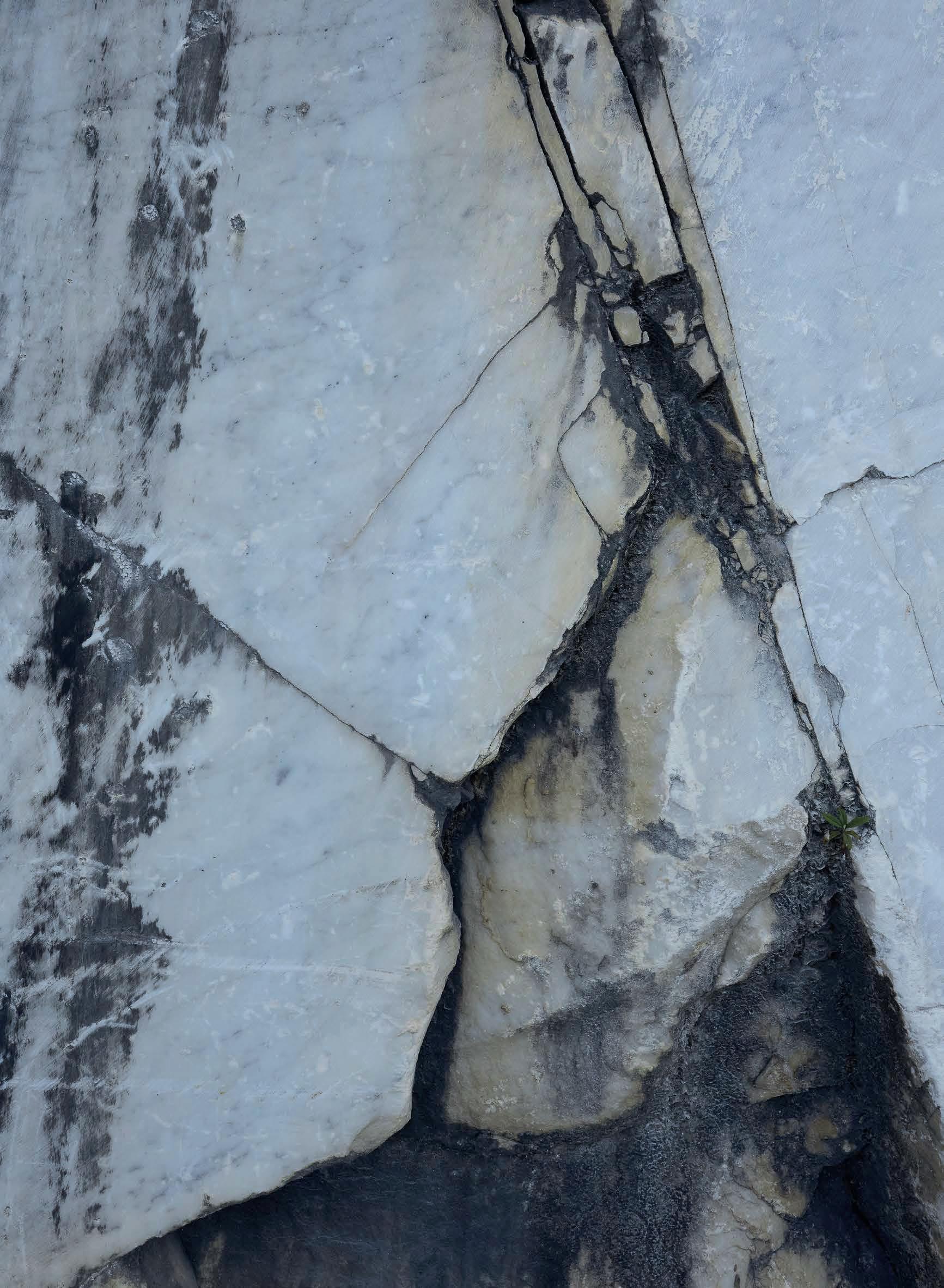

GAGOSIAN & MUSIC
LUCINDA CHUA
LONNIE HOLLEY
JORDI SAVALL
ÉLIANE RADIGUE
TREVOR HORN
WHITE NOISE & GOTHS
BY:
DHRUVA BALRAM
HARRY THORNE
ARIANA REINES
LOUISE GRAY
YOUNG KIM
JACE CLAYTON & DAN FOX
Editor-in-chief
Alison McDonald
Managing Editor
Wyatt Allgeier
Editor, Online and Print
Gillian Jakab
Text Editor
David Frankel
Executive Editor
Derek Blasberg
Guest Editor, Music
Harry Thorne
Digital and Video
Production Assistant
Alanis Santiago-Rodriguez
Design Director
Paul Neale
Design
Alexander Ecob
Graphic Thought Facility
Website
Wolfram Wiedner Studio
Cover
Roy Lichtenstein
Gagosian Quarterly, Summer 2024
Founder Larry Gagosian
Publisher Jorge Garcia
Published by Gagosian Media
Associate Publisher, Lifestyle Priya Nat
For Advertising and Sponsorship Inquiries
Advertising@gagosian.com
Distribution David Renard
Distributed by Magazine Heaven
Distribution Manager
Alexandra Samaras
Prepress
DL Imaging
Printed by Pureprint Group
Contributors
Valerie Balint
Dhruva Balram
Daniel Belasco
Derek Blasberg
Francesco Bonami
Marcantonio Brandolini
Cynthia Carr
Michael Cary
Lucinda Chua
Jace Clayton
Mario Codognato
Harry Cooper
Gemma De Angelis Testa
John Elderfield
Lauren Elkin
Charlie Fox
Dan Fox
Moeko Fujii
Gary Garrels
Alice Godwin
Louise Gray
Luca Guadagnino
Lauren Halsey
Essence Harden
Karla Hiraldo Voleau
Lonnie Holley
Arinze Ifeakandu
Young Kim
Megan Kincaid
Lauren Mahony
Pepi Marchetti Franchi
Alison McDonald
Wayne McGregor
Oscar Murillo
Hans Ulrich Obrist
Michael Ovitz
Alessandro Rabottini
Ariana Reines
Dieter Roelstraete
Frank Stella
Harry Thorne
Nancy J. Troy
Carlos Valladares
Josh Zajdman
Thanks
Richard Alwyn Fisher
Julia Arena
Costanza Ballardini
Chloe Barter
Priya Bhatnagar
Serena Cattaneo Adorno
Maurizio Cattelan
Vittoria Ciaraldi
Heidi Coleman
Jeanne Collins
Maggie Dubinski
Andrew Fabricant
Mark Francis
Hallie Freer
Brett Garde
Eleanor Gibson
Lauren Gioia
Darlina Goldak
Nan Goldin
Leta Grzan
Andrew Heyward
Sarah Jones
Shiori Kawasaki
Léa Khayata
Shelley Lee
Rick Lowe
Rob McKeever
Olivia Mull
Kathy Paciello
Kelly Quinn
Helen Redmond
Antwaun Sargent
Ari Sarkisian
Jim Shaw
Diallo Simon-Ponte
Chandler Sterling
Sydney Stutterheim
Natasha Turk
Louis Vaccara
Timothée Viale
Lindsey Westbrook
Cover: Roy Lichtenstein, Bauhaus Stairway
on canvas, 26 feet 5 ¾ inches × 17 feet 11 ¾ inches (807.1 × 548 cm) © Estate
Mural , 1989 (detail), oil, Magna, acrylic, and graphite pencil
of
Roy
Lichtenstein. Photo: Rob McKeever





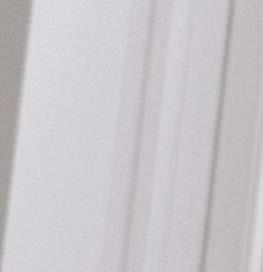





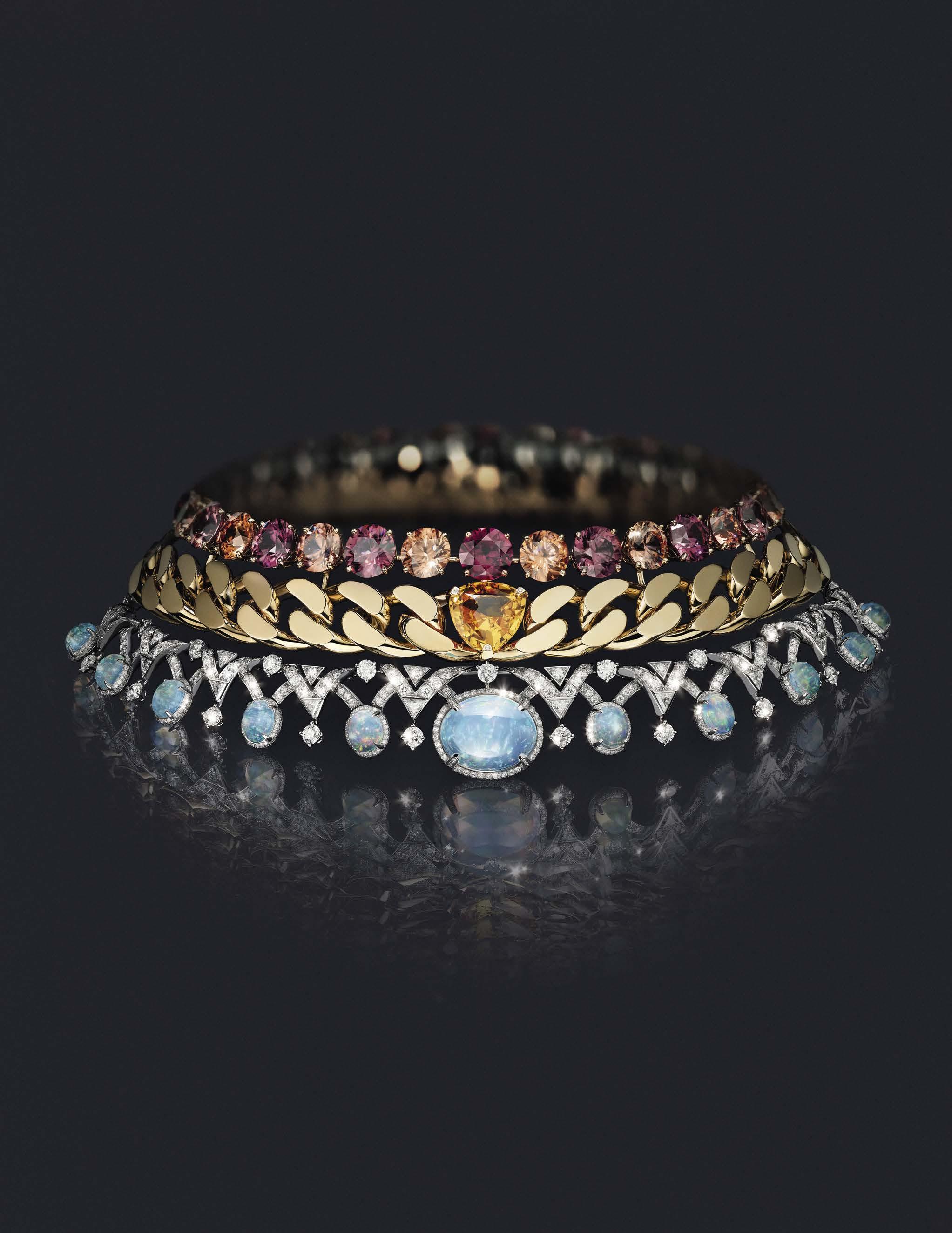
HIGH
JEWELR Y

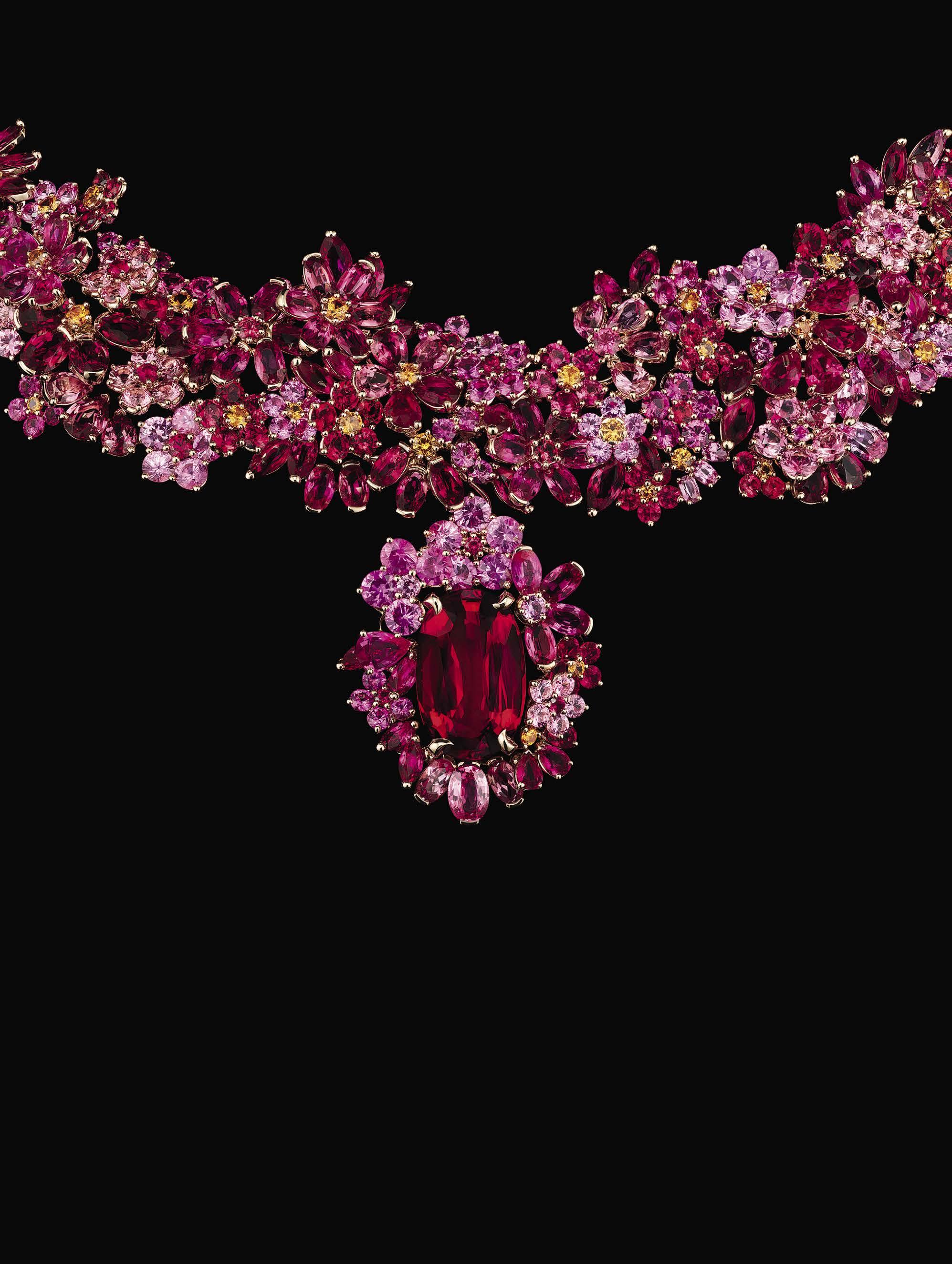

 LES JA RDINS DE LA COUTUR E COL LEC TION
Neck lace in pink gold, diamonds, rubies, pink sapphire s, pink and red spinels, spessa rt ite ga rnet s.
LES JA RDINS DE LA COUTUR E COL LEC TION
Neck lace in pink gold, diamonds, rubies, pink sapphire s, pink and red spinels, spessa rt ite ga rnet s.
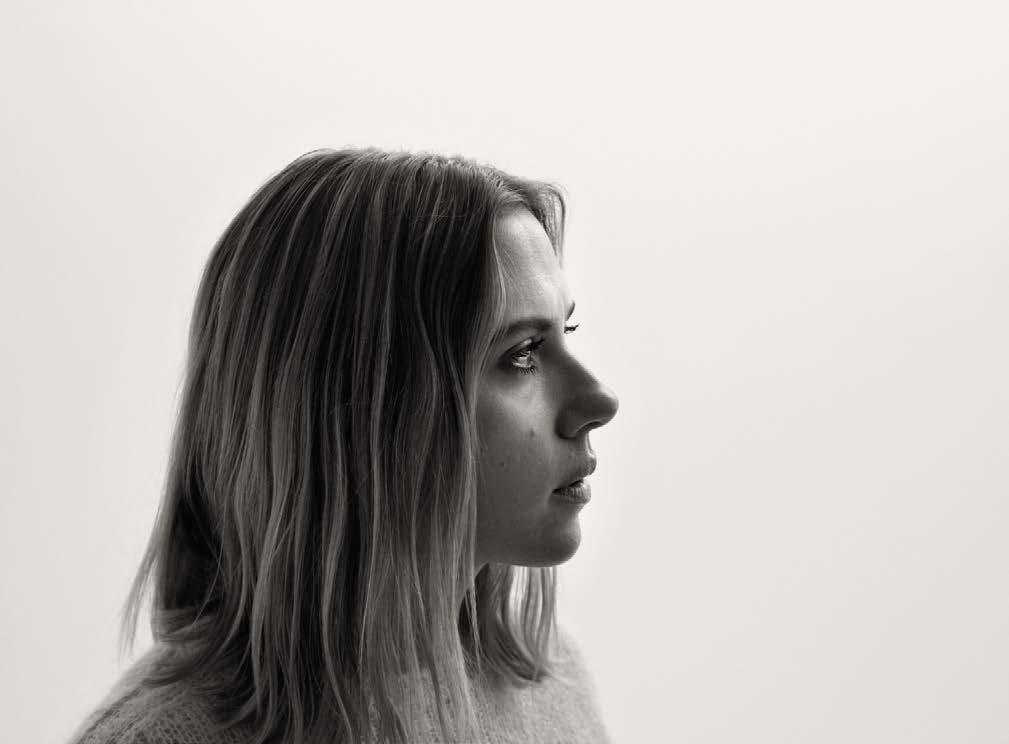
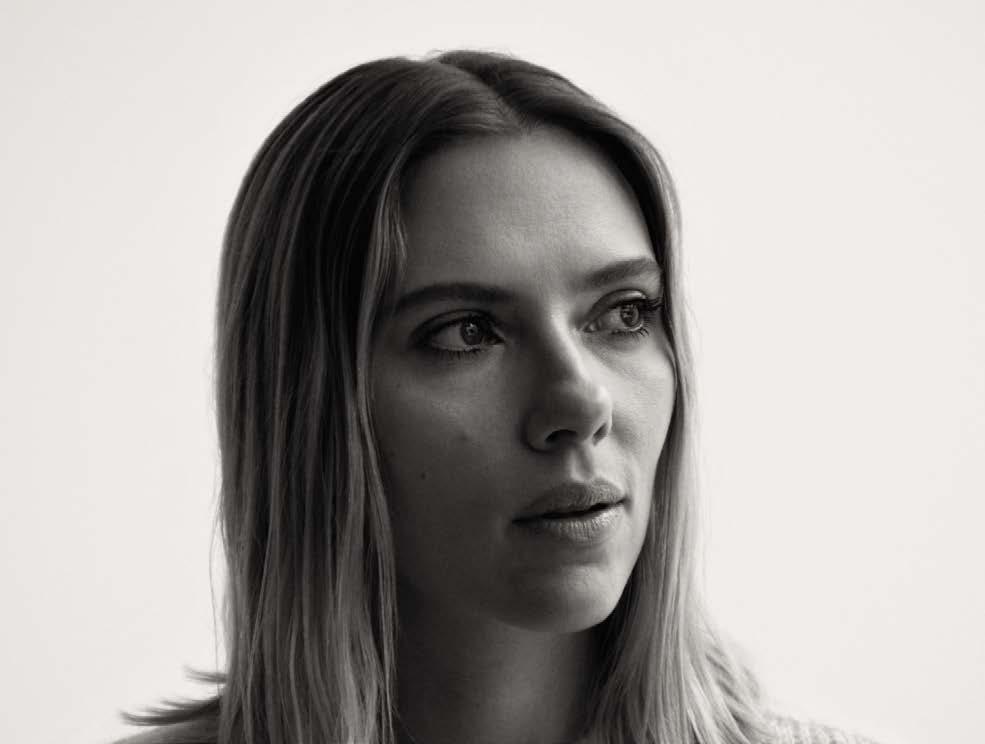

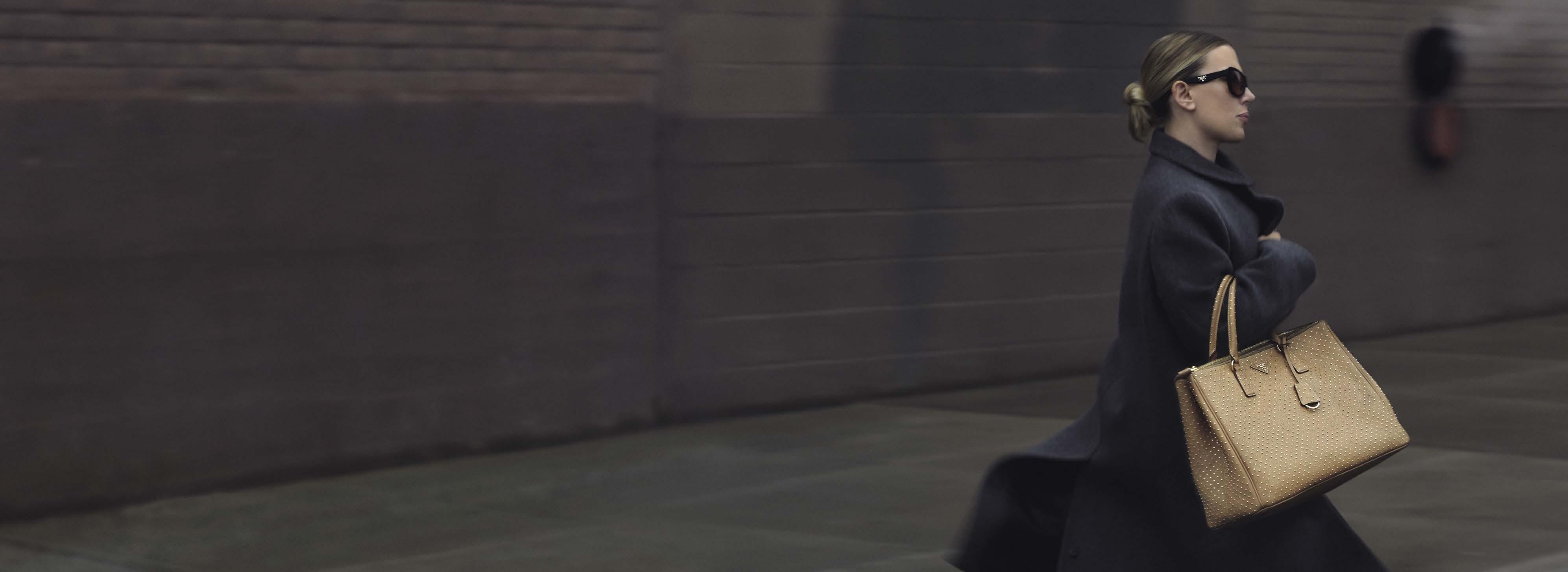









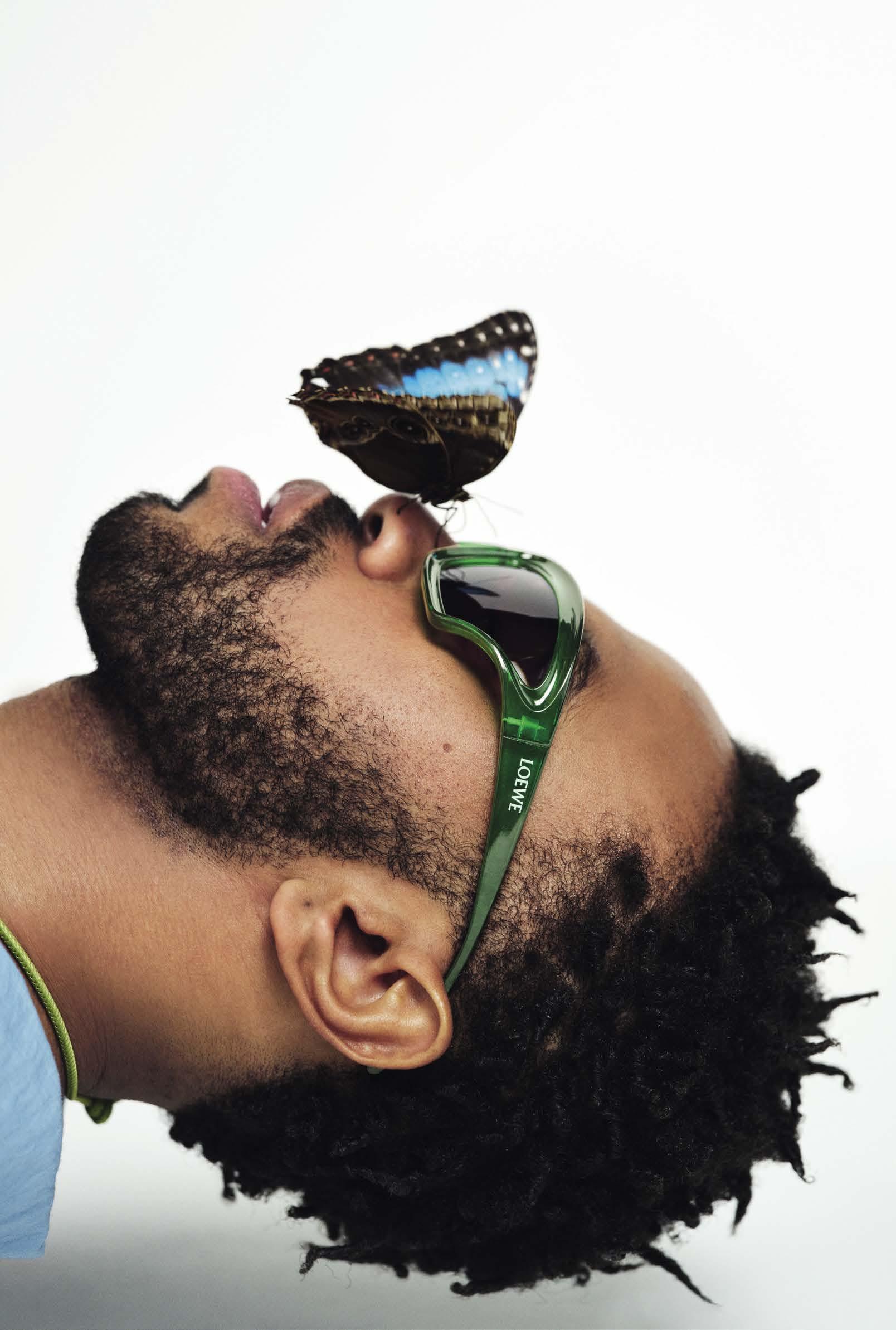
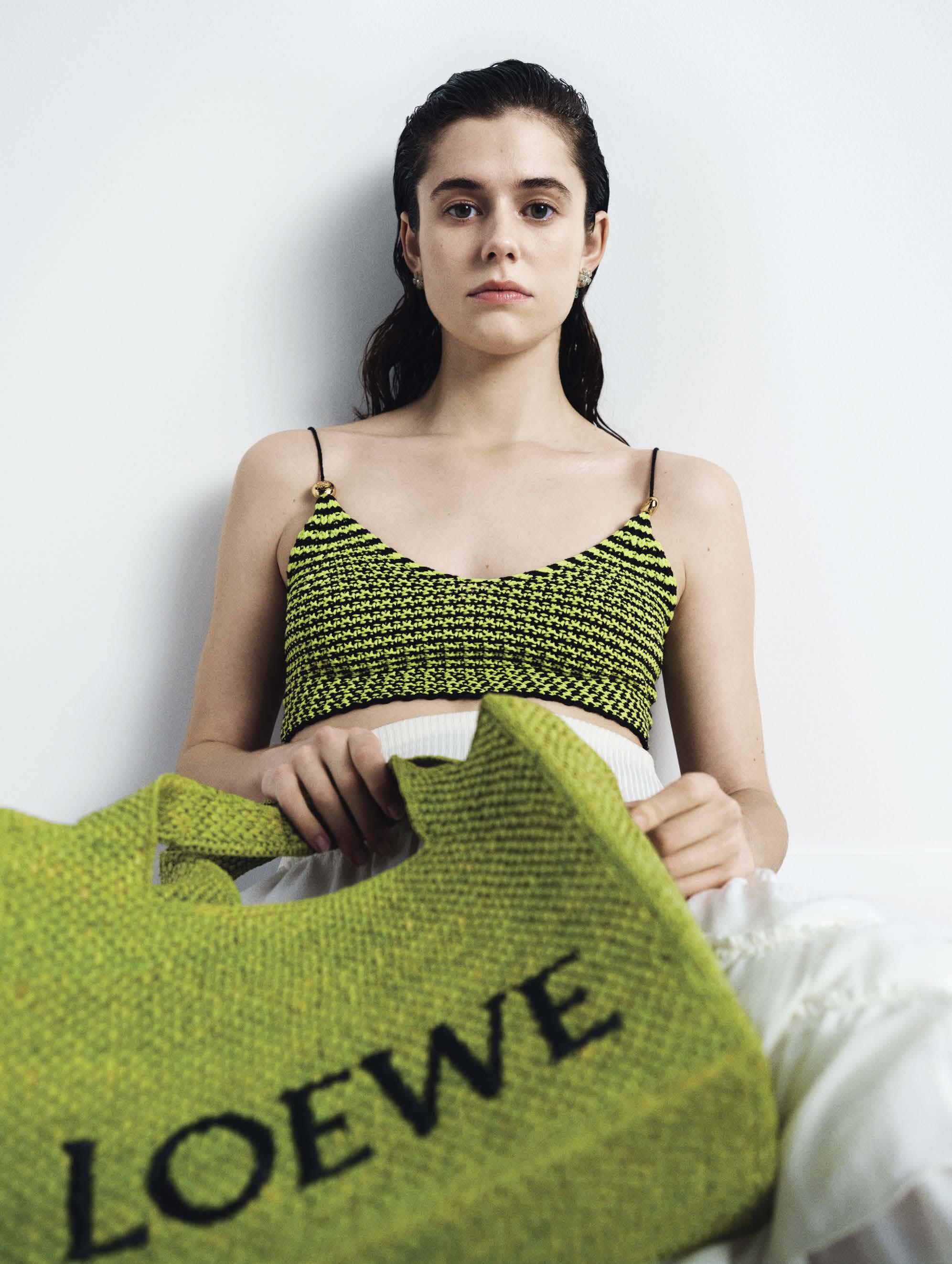




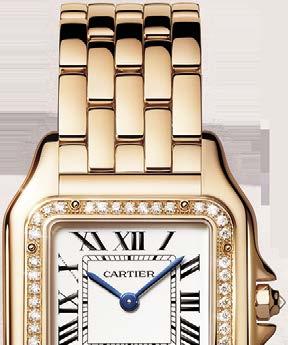
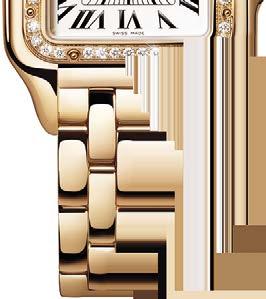


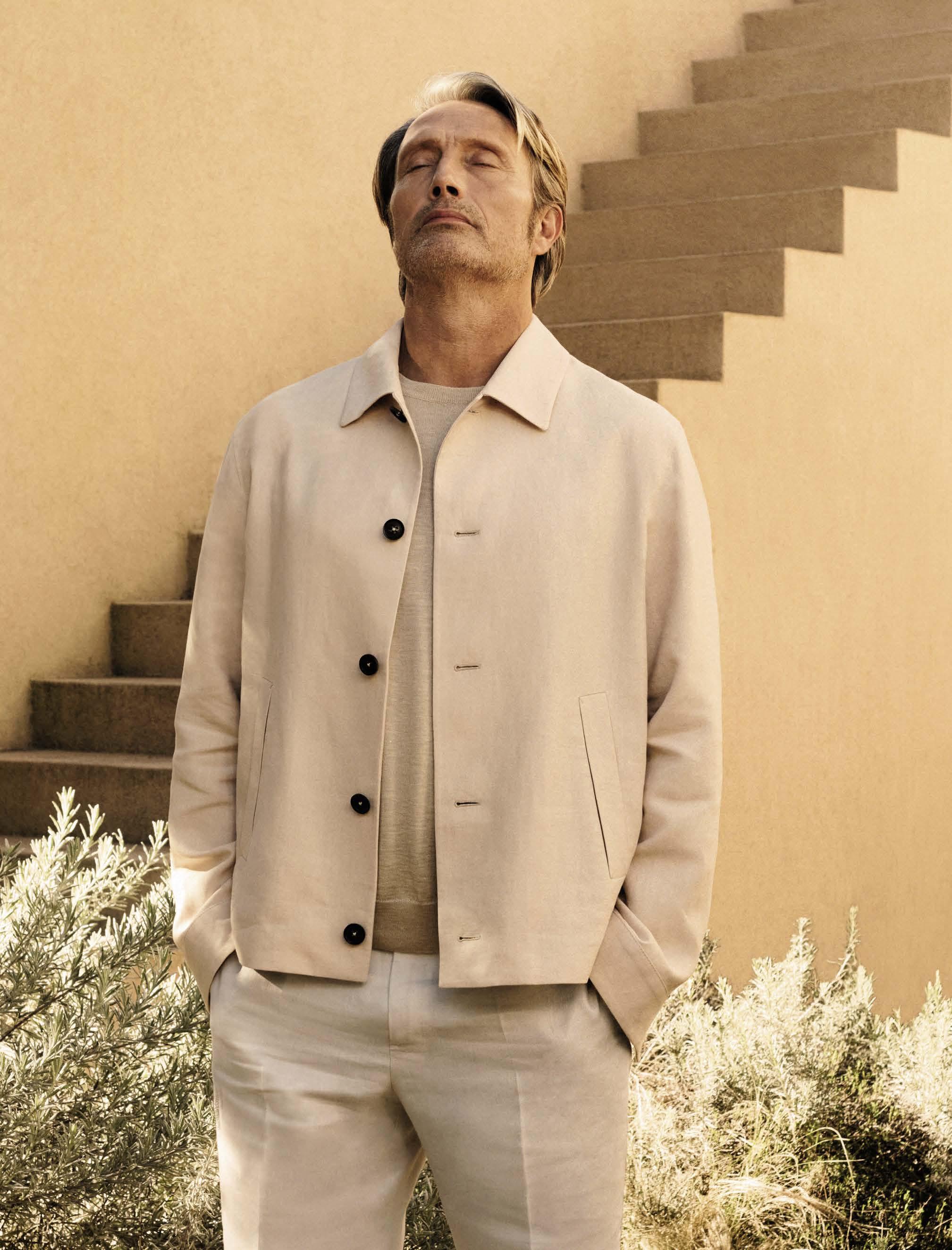
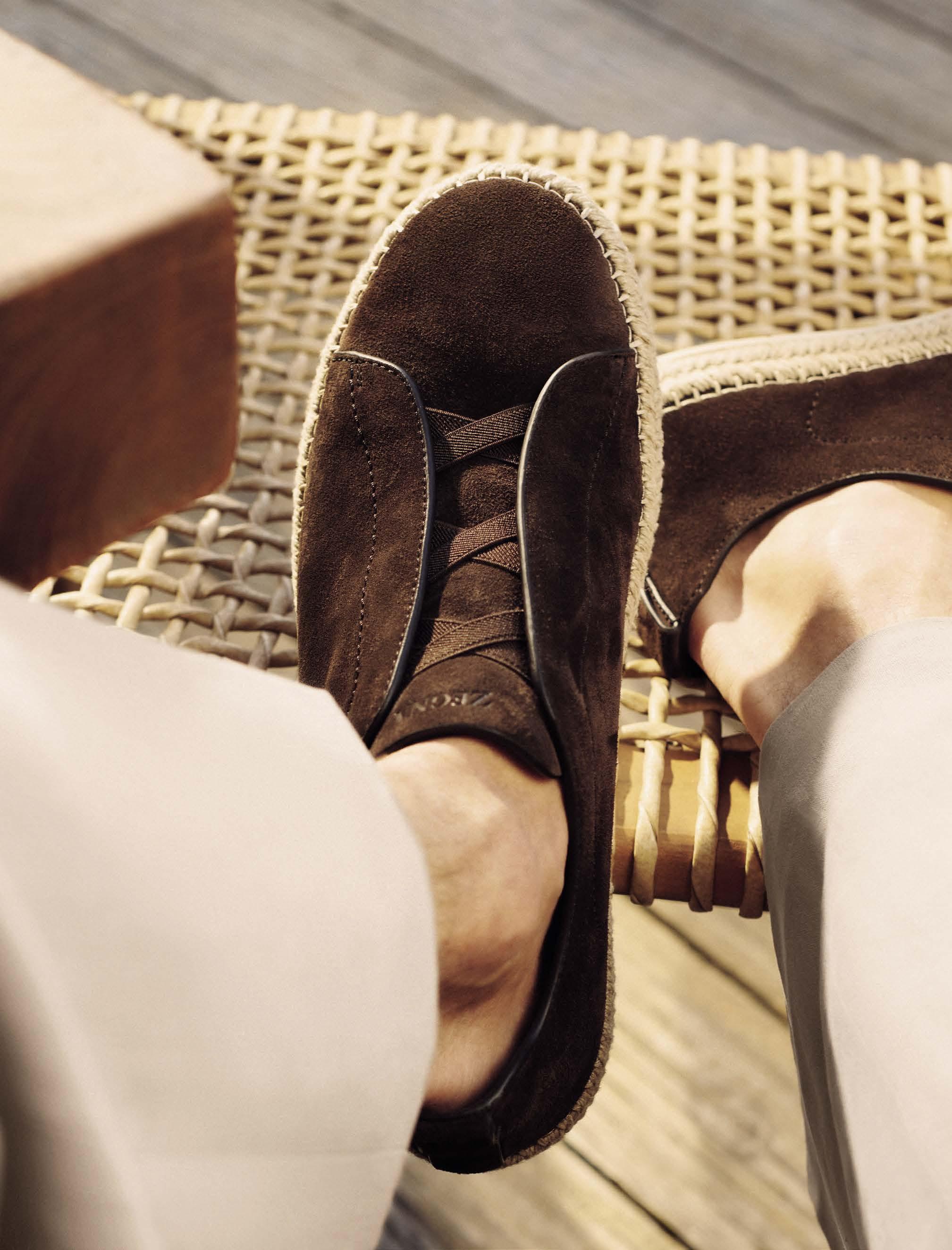
SUMMER 2024 FROM THE EDITOR
Thirty-five years ago, the Hollywood superagent Michael Ovitz invited Roy Lichtenstein to create a mural as the centerpiece for the new headquarters of Creative Artists Agency, to be housed in a building designed for the purpose by I. M. Pei. In this issue of the Quarterly, Ovitz contributes a personal recollection of that invitation to punctuate an article on the result, Lichtenstein’s Bauhaus Stairway Mural , a storied project that cites an equally storied painting by Oskar Schlemmer from 1932.
The second installment of our “Gagosian &” series of themed supplements centers on the world of music, highlighting songwriters, composers, performers, and deejays such as Lucinda Chua, Lonnie Holley, Jordi Savall, Jace Clayton, and Éliane Radigue. Exploring a wide range of musical genres, we include a personal account of the goth scene and a report on producer Trevor Horn’s memoir Adventures in Modern Recording . Projects staged to coincide with this year’s Venice Biennale are the subject of several articles, including an essay on Rick Lowe’s expansive practice on the occasion of his exhibition at the Palazzo Grimani and a conversation with the curators of Willem de Kooning and Italy, on view at the Gallerie dell’Accademia. Lauren Halsey, who will premiere a new installation on the occasion of the Biennale, talks with Essence Harden, and an



artful abecedarium annotates the work of Jim Shaw as he unveils a commission at Venice’s Berggruen Arts & Culture.
Michael Cary takes a poetic look at the power of Nan Goldin’s heartbreaking video triptych Sisters Saints Sibyls . We look at the work of Oscar Murillo ahead of two exhibitions of his, one at Tate Modern, London, and the other at Gagosian, Rome.
An expanded edition of John Elderfield’s celebrated 1989 monograph on Helen Frankenthaler will be published this summer. Here, Elderfield speaks with Harry Cooper and Lauren Mahony about the artist’s legacy, his own career-long engagement with her work, and new discoveries that await readers in the new book.
Francesco Bonami considers the political underlayer of Maurizio Cattelan’s work, looking beyond the humor that is such a potent aspect of his art even while quoting the great comic Charlie Chaplin: “Life is a tragedy when seen in close-up, but a comedy in long shot.”
We close the issue with an homage to the late Richard Marshall, curator at New York’s Whitney Museum of American Art and arts editor of The Paris Review for over twenty years. In early periods when their futures were uncertain, Marshall championed many artists now recognized as leading figures of their time.
Alison McDonald, Editor-in-chief



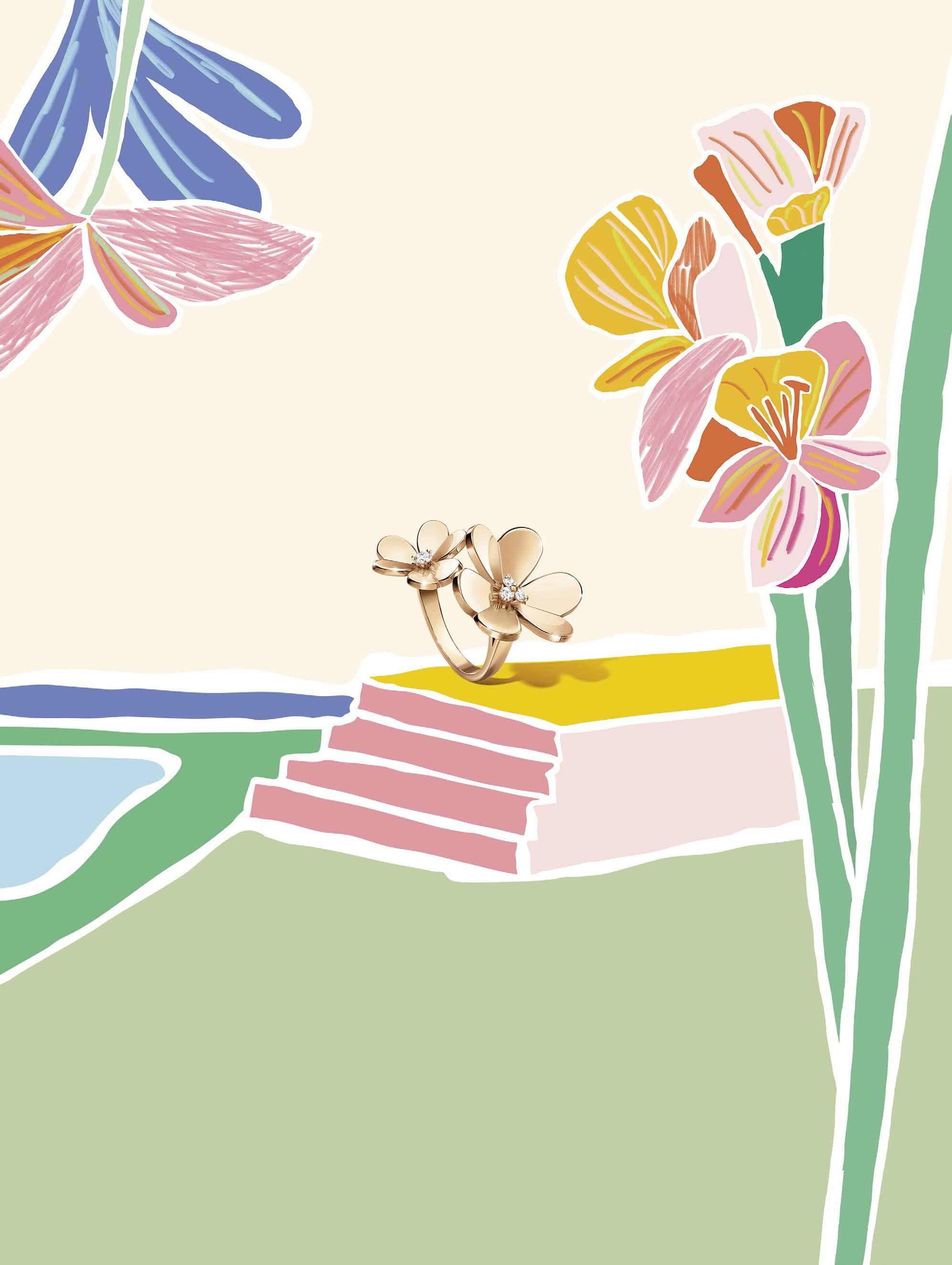
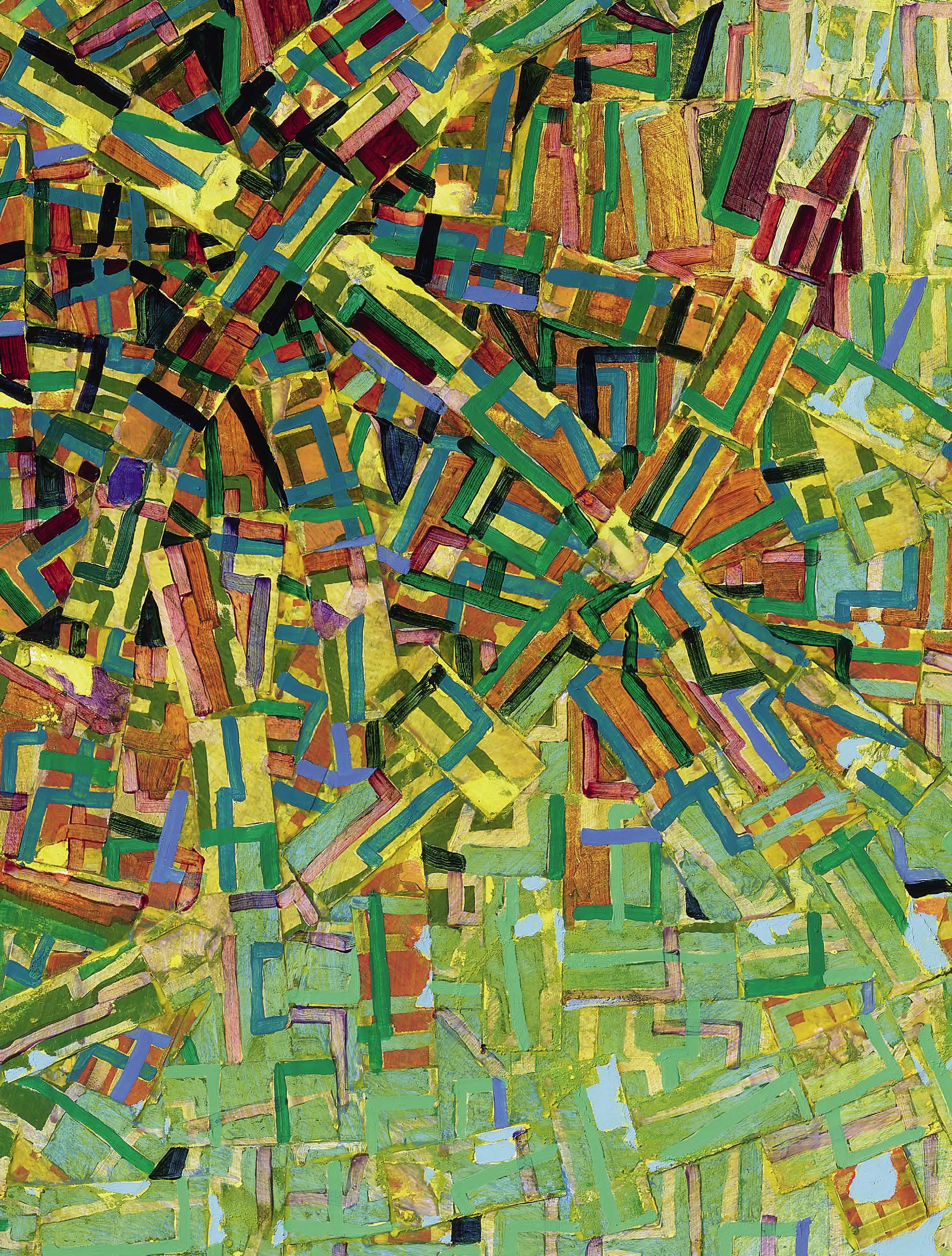
42
Maurizio Cattelan: Sunday Painter
An exhibition of new work by Maurizio Cattelan opened in New York earlier this spring. Curator Francesco Bonami asks us to consider Cattelan as a political artist, detailing the potent and clear observations at the core of these works.
46 Bauhaus Stairway Mural
Alice Godwin and Alison McDonald explore the history of Roy Lichtenstein’s 1989 mural, contextualizing the work among the artist’s other mural projects as well as its inspiration: the German artist Oskar Schlemmer’s Bauhaus Stairway (Bauhaustreppe , 1932). Michael Ovitz, cofounder of Creative Artists Agency (CAA), looks back to 1989, when he commissioned Lichtenstein to create Bauhaus Stairway Mural for the new CAA Building in Beverly Hills, and reflects on the meaningful friendship he formed with the artist through the experience.
52 Hans Ulrich Obrist’s Questionnaire
For the second installment of 2024, we are honored to present the filmmaker Luca Guadagnino.
SUMMER 2024 TABLE OF CONTENTS
54
Nan Goldin: Sisters Saints Sibyls
Michael Cary explores the history behind, and power within, Nan Goldin’s video triptych Sisters Saints Sibyls (2004–22). The work will be on view at Soho Chapel, London, as part of the Gagosian Open exhibition from May 30 to June 16, 2024.
60
Wayne McGregor
Ahead of the US debut of Wayne McGregor’s Woolf Works , an acclaimed ballet inspired by the writings of Virginia Woolf, Alice Godwin talked with the choreographer about the challenge of translating great literary works for the theater.
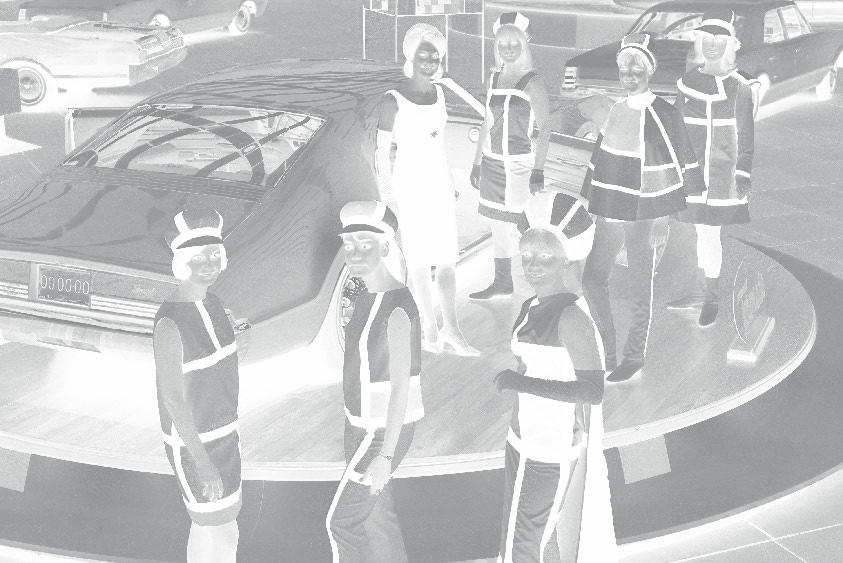
66
Lauren Halsey: Full and Complete Freedom
Essence Harden visited Lauren Halsey in her LA studio as the artist prepared for an exhibition in Paris and the premiere of her installation in the sixtieth Venice Biennale.

72
Fashion and Art, Part 18: Mondrian’s Dress
Nancy J. Troy, Victoria and Roger Sant Professor in Art Emerita, Stanford University, recently published Mondrian’s Dress: Yves Saint Laurent, Piet Mondrian, and Pop Art (MIT Press) with coauthor Ann Marguerite Tartsinis. The Quarterly ’s Derek Blasberg met with Troy to discuss.
78 Willem de Kooning and Italy
In tandem with this year’s Venice Biennale, the city’s Gallerie dell’Accademia is featuring the exhibition Willem de Kooning and Italy, an in-depth examination of the artist’s time in Italy. The curators of the exhibition, Gary Garrels and Mario Codognato, speak about the project.
86
Oscar Murillo:
Marks and Whispers
In advance of two exhibitions—The Flooded Garden at Tate Modern, London, and Marks and Whispers at Gagosian, Rome—curator Alessandro Rabottini visited Murillo’s London studio to discuss the connections between these projects.
21
92
Lacan, the exhibition
On the heels of finishing a new novel, Scaffolding , that revolves around a Lacanian analyst, Lauren Elkin traveled to Metz, France, to take in Lacan, the exhibition. When art meets psychoanalysis at the Centre Pompidou satellite in that city.
98
Revisiting Frankenthaler
John Elderfield and Lauren Mahony speak with Harry Cooper about the new and expanded version of Elderfield’s 1989 monograph on Helen Frankenthaler that Gagosian will publish this summer.
104
Gagosian & Music
The second of the Quarterly ’s new themed supplements takes us into the world of music. We feature musicians Lucinda Chua, Lonnie Holley, Jordi Savall, and Éliane Radigue; share a sonic history of white noise; and learn about the personal history of a gothcurious writer.
106
Jim Shaw A–Z
Charlie Fox takes a whirlwind trip through the Jim Shaw universe, traveling along the letters of the alphabet.
112
The Art of Biography: Candy Darling
Cynthia Carr’s latest biography recounts the life and work of the Warhol superstar and transgender trailblazer Candy Darling. Here, Carr tells Josh Zajdman about the origins of the book, her process, and what she hopes readers glean from the story.
118
Notes to Selves, Trains of Thought
Dieter Roelstraete, curator at the Neubauer Collegium for Culture and Society at the University of Chicago and the coeditor of a recent monograph on Rick Lowe, writes on the artist’s journey from painting to community-based projects and back again in this essay from the publication.
124 Museum of Gestures
Moeko Fujii joins Carlos Valladares to celebrate a new English translation of Shiguéhiko Hasumi’s Directed by Yasujiro Ozu
130
Prosperity’s Long Song Part II: The Ripening
We present the second installment of a four-part short story by Arinze Ifeakandu.
136 Laguna~B
An interview with Marcantonio Brandolini D’Adda, artist, designer, and CEO and art director of the Venice-based glassware company Laguna~B.
142
Building a Legacy: Historic Artists Homes and Studios
Daniel Belasco, executive director of the Al Held Foundation, meets with Valerie Balint, director of Historic Artists Homes and Studios (HAHS), to discuss the importance of preserving and engaging with artists’ personal and creative spaces.
144
Frank Stella
An interview with Megan Kincaid.

150
Gemma De Angelis Testa
Gemma De Angelis Testa, collector and patron of the arts, met with Gagosian director Pepi Marchetti Franchi to discuss the genesis of her collection, the key role of her organization acacia (Friends of Italian contemporary art association) in enriching the world of contemporary Italian art, and what it means to share one’s collection with the public.
166
Game Changer: Richard Marshall
Alison McDonald celebrates the life of the curator Richard Marshall.

Previous spread, left: Rick Lowe, Untitled , 2023 (detail), acrylic and paper collage on canvas, 48 × 48 inches (121.9 × 121.9 cm) © Rick Lowe
Previous spread, center: Company Wayne McGregor and Paris Opera Ballet in Wayne McGregor’s Tree of Codes , 2015. Photo: Joel Chester Fildes
Previous spread, right: The 1966 Oldsmobile Toronado at the Detroit Auto Show, November–December 1965. Photographer unknown
This page, above: Still from Late Spring (1949), directed by Yasujiro Ozu. Photo: courtesy Janus Films/ The Criterion Collection
This page, left: Siouxsie Sioux, London, 1985 © Richard Haughton/ Bridgeman Images
22
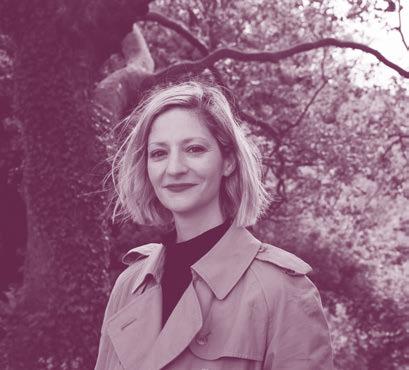
Lauren Elkin
Lauren Elkin’s most recent book is Art Monsters: Unruly Bodies in Feminist Art . Other books of hers include No. 91/92: Notes on a Parisian Commute and Flâneuse: Women Walk the City, which was a New York Times Notable Book of 2017 and a finalist for the PEN/Diamonstein-Spielvogel award for the art of the essay. She lives in London.
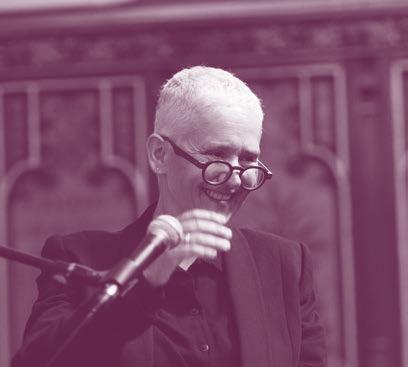
Louise Gray
Louise Gray writes on music and sound art for The Wire and other publications. Her recent writing has focused on ways of listening in the works of Éliane Radigue, Annea Lockwood, and Pauline Oliveros. She teaches the BA and MA Sound Arts courses at LCC, University of the Arts London. Photo: © D. Green
SPRING 2024 CONTRIBUTORS

Nancy J. Troy
Nancy J. Troy is Victoria and Roger Sant Professor in Art Emerita, Department of Art & Art History, Stanford University. She is the author of The De Stijl Environment , Modernism and the Decorative Arts in France: Art Nouveau to Le Corbusier, Couture Culture: A Study in Modern Art and Fashion , and, most recently, The Afterlife of Piet Mondrian

Dan Fox
Dan Fox is a writer, musician, and filmmaker. He is the author of the books Limbo and Pretentiousness: Why It Matters , and co-director of the BBC documentary Other, Like Me: The Oral History of COUM Transmissions and Throbbing Gristle . He is a consulting editor for The Yale Review and lives in New York. Photo: Matthew Porter

Jace Clayton
The artist and writer Jace Clayton is also known for his work as DJ/ rupture. He is the author of Uproot: Travels in 21st-Century Music and Digital Culture and is assistant professor of studio art and director of graduate studies at the Milton Avery Graduate School of the Arts, Bard College, New York. Photo: Max Lakner

Ariana Reines
Ariana Reines is a poet, Obie-winning playwright, and performing artist. Her last book, A Sand Book , won the 2020 Kingsley Tufts Prize. Since 2020 she has run Invisible College, a platform for the study of sacred texts and poetry.
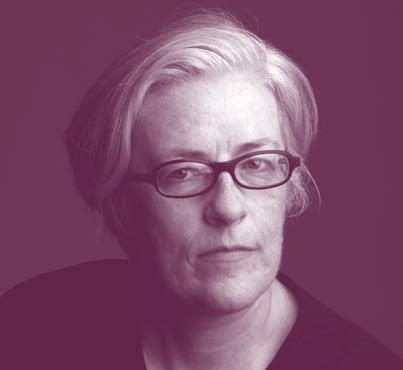
Cynthia Carr
Cynthia Carr is the author of Fire in the Belly: The Life and Times of David Wojnarowicz , winner of a Lambda Literary Award and a fi nalist for the J. Anthony Lukas Book Prize. Her previous books are Our Town: A Heartland Lynching, a Haunted Town, and the Hidden History of White America and On Edge: Performance at the End of the Twentieth Century Photo: Timothy Greenfield-Sanders
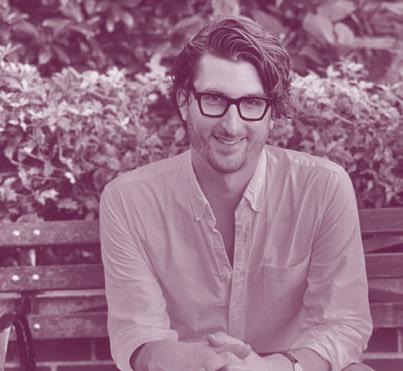
Josh Zajdman
When not writing about books or art, Josh Zajdman is doom-scrolling Instagram or working on his novel.
23



Charlie Fox
Charlie Fox is a writer and artist who lives in London. He wrote the book of essays This Young Monster, directed a music video for Oneohtrix Point Never with Emily Schubert, and curated the twin horror shows My Head Is a Haunted House and Dracula’s Wedding . His fiction and nonfiction have appeared in Dazed , The Paris Review, and the New York Times

Moeko Fujii
Moeko Fujii is an essayist and critic whose work has appeared in The New Yorker, The New York Review of Books , Criterion , Aperture Magazine , and elsewhere. She currently writes a column on film for Orion Magazine
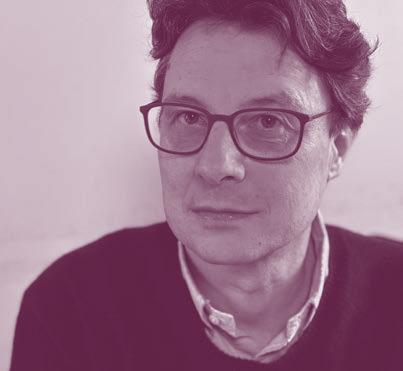
Mario Codognato
Mario Codognato was the first chief curator of madre , Naples, on its founding in 2005, curating retrospectives of the work of Jannis Kounellis, Rachel Whiteread, Thomas Struth, Franz West, and others there. Beginning in 2016, he was the director of the Anish Kapoor Foundation, and since 2022, the director of the Berggruen Arts & Culture Foundation, both in Venice.

Essence Harden
Essence Harden is the cocurator of Made in LA , 2025, curator of Frieze LA, Focus 2024, and a visual arts curator at the California African American Museum. Photo: Julia Johnson
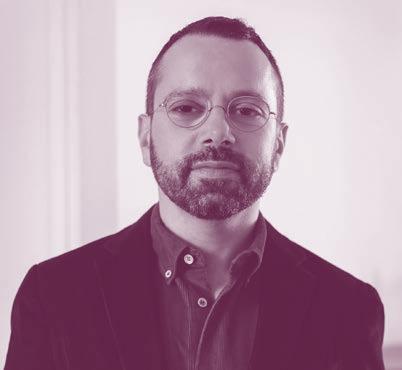
Alessandro Rabottini
Alessandro Rabottini is an art critic and curator who lives and works between London and Milan. He has been the artistic director of MIART—International Modern and Contemporary Art Fair, Milan—since 2017. Rabottini has curated many exhibitions in European museums and institutions.

Gary Garrels
Gary Garrels is an independent curator who lives and works on the North Fork of Long Island. He previously held curatorial positions at the Dia Art Foundation, New York; the Walker Art Center, Minneapolis; the Hammer Museum, Los Angeles; the San Francisco Museum of Modern Art; and the Museum of Modern Art, New York.
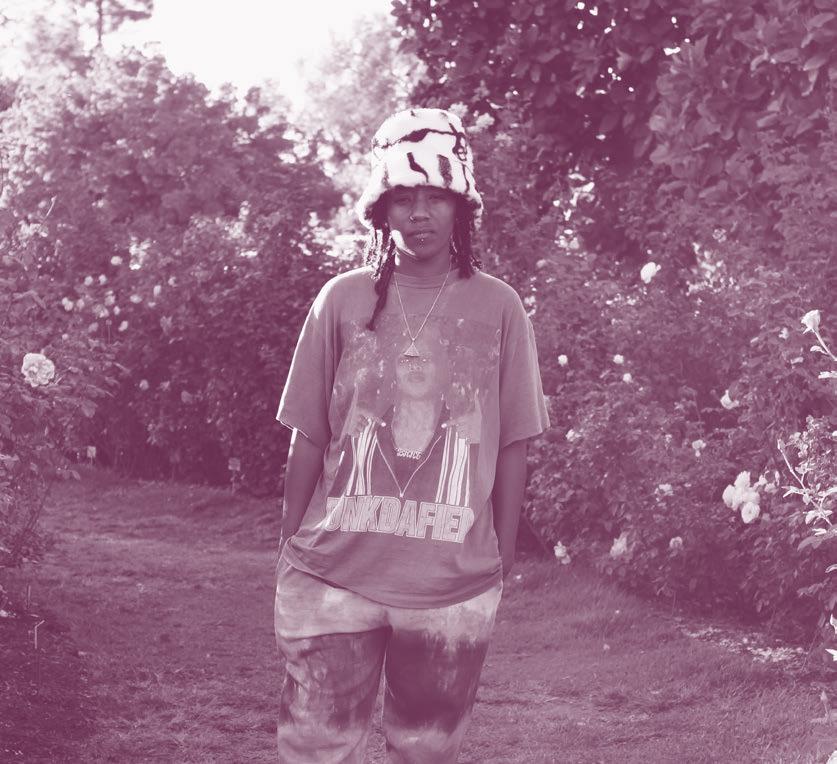
Lauren Halsey
Lauren Halsey is rethinking the possibilities for art, architecture, and community engagement and producing both stand-alone artworks and sitespecific projects. Combining found, fabricated, and handmade objects, her work maintains a sense of civic urgency and free-flowing imagination, reflecting the lives of the people and places around her and addressing the crucial issues confronting people of color, queer populations, and the working class. Photo: Czariah Smith

Oscar Murillo
Born in La Paila, Colombia, Oscar Murillo emigrated to the United Kingdom with his family as a child. He studied at the Royal College of Art in London, working as an office cleaner to support himself. On graduating in 2012, Murillo quickly developed a reputation for his stitched paintings; since then, his work has expanded to include drawings, sculptures, installations, films, and performances, all guided by his fascination with the fluid concepts of identity, community, and the binary. Photo: Tim Bowditch
26

Hans Ulrich Obrist
Hans Ulrich Obrist is artistic director of the Serpentine, London. He was previously the curator of the Musée d’Art Moderne de la Ville de Paris. Since his first show, World Soup (The Kitchen Show), in 1991, he has curated more than 350 exhibitions. Photo: Tyler Mitchell

Gemma De Angelis Testa
Gemma De Angelis Testa is a collector of contemporary art and the widow of the artist and graphic designer Armando Testa. Since his death she has promoted and curated several exhibitions, as well as founding acacia (Associazione Amici Arte Contemporanea) in 2003, establishing a new form of collective patronage.
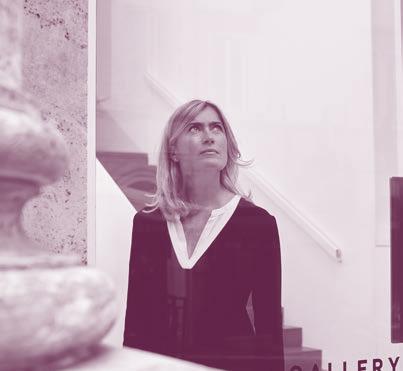
Pepi Marchetti Franchi
Founding director of Gagosian, Rome, Pepi Marchetti Franchi has overseen more than sixty exhibitions at the gallery since 2007. Raised in Rome, she has spent many years in New York, including eight years working at the Solomon R. Guggenheim Museum. She is the vice president and cofounder of ITALICS.art.
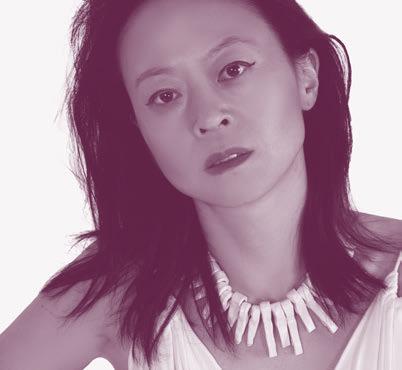
Young Kim
Young Kim is a writer who works in art, fashion, film, music, and literature while managing the estate of Malcolm McLaren, her late boyfriend and creative/business partner. Her first book, A Year on Earth with Mr. Hell (2020), is distributed by Omnibus Press. She is currently finishing a book on her years with McLaren and lives between Paris and New York.
Photo: Penny Slinger/Young Kim

Carlos Valladares
Carlos Valladares is a writer, critic, programmer, journalist, and video essayist from South Central Los Angeles. He studied film at Stanford University and began his PhD in the history of art and film and media studies at Yale University in the fall of 2019. He has written for the San Francisco Chronicle , Film Comment , and the Criterion Collection. Photo: Jerry Schatzberg

John Elderfield
John Elderfield is chief curator emeritus of painting and sculpture at New York’s Museum of Modern Art and was formerly the inaugural Allen R. Adler, Class of 1967, Distinguished Curator and Lecturer at the Princeton University Art Museum. He joined Gagosian in 2012 as a senior curator for special exhibitions.
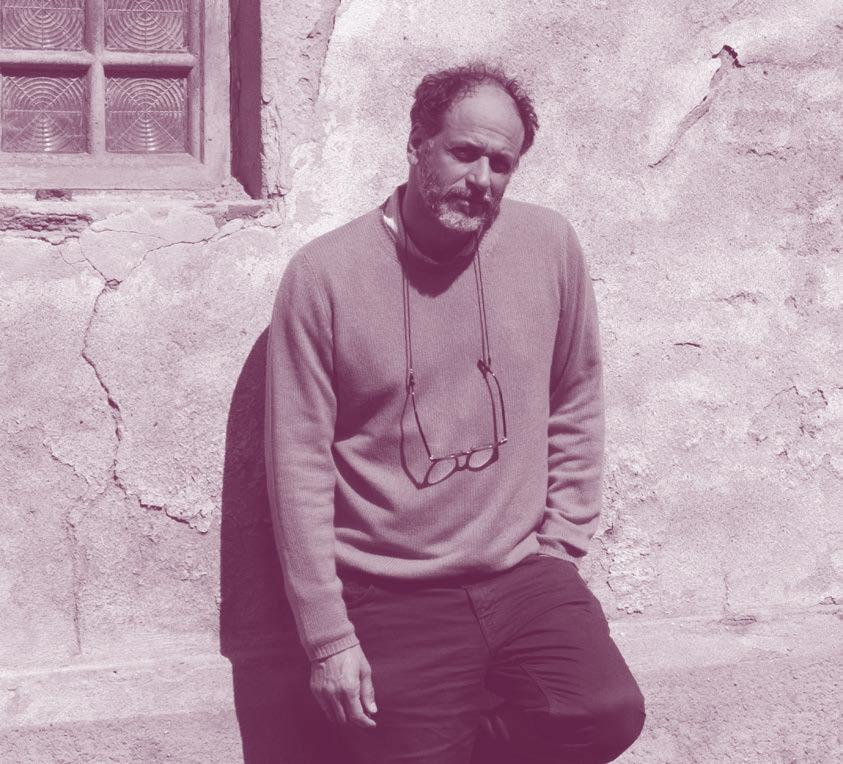
Luca Guadagnino
Luca Guadagnino was born in Palermo on August 10, 1971, to a Sicilian father and an Algerian mother. He is a director, producer, screenwriter, architect, and designer. An Academy Award nominee in 2018 and winner of the Silver Lion for Best Director at Venice Film Festival in 2022, he lives in Milan. Photo: Giulio Ghirardi.

Francesco Bonami
Francesco Bonami has curated more than 100 exhibitions, including the Venice Biennale in 2003 and the Whitney Biennial in 2010. He writes for La Repubblica , Artnews , and Vogue Italia . His most recent books include Post: L’opera d’arte nell’epoca della sua riproducibilità sociale and Mum, I Want to Be an Artist: How to Avoid Delusions (forthcoming).
27

Derek Blasberg
Derek Blasberg is a writer, fashion editor, and New York Times bestselling author. He has been with Gagosian since 2014 and is the executive editor of Gagosian Quarterly
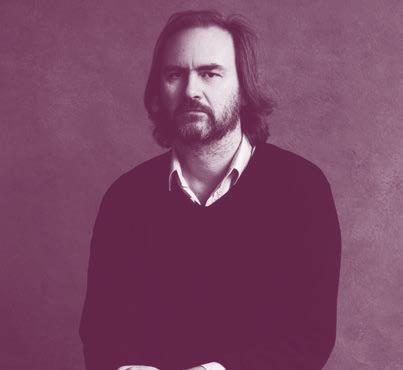
Dieter Roelstraete
Dieter Roelstraete is the curator for the Neubauer Collegium for Culture and Society at the University of Chicago, where he has organized exhibitions on Gelitin, Rick Lowe, Pope.L, Martha Rosler, and, most recently, Christopher Williams. Photo: Richard Pilnik
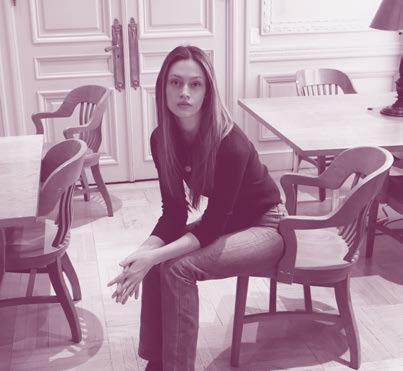
Megan Kincaid
Megan Kincaid is an art historian and curator. Kincaid has taught on modern art and critical theory at New York University and her scholarship has been published by the Museum of Modern Art, Duke University Press, and others. In May 2024 she will receive her PhD in art history from the Institute of Fine Arts, New York University. She holds a BA from Columbia University.
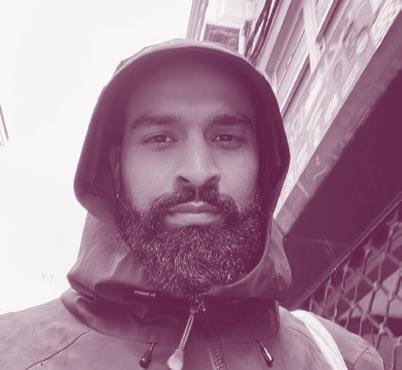
Dhruva Balram
Dhruva Balram is a writer, editor, and creative producer. He is the cofounder of Dialled In, a South Asian–focused arts-and-culture grassroots organization. Balram coedited the book Haramacy and contributes to various online and print outlets.
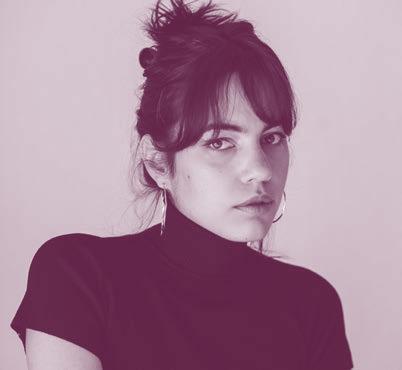
Karla Hiraldo Voleau
Karla Hiraldo Voleau is a FrenchDominican artist and photographer. Through projects combining performance and photography, she often explores contemporary notions of intimacy, love, and the female gaze. Photo: © Jasmine Deporta

Marcantonio Brandolini d’Adda
Marcantonio Brandolini d’Adda is an Italian artist, designer, entrepreneur, and CEO and art director of Laguna~B. Photo: Karla Hiraldo Voleau

Lucinda Chua
Lucinda Chua is a London-based multi-instrumentalist, singer, songwriter, and composer. Her critically acclaimed debut album yian came out in 2023 and she performed songs from it, accompanied by the London Contemporary Orchestra, at the Barbican, London, this May.

Arinze Ifeakandu
Arinze Ifeakandu is the author of God’s Children Are Little Broken Things , which received the 2023 Dylan Thomas Prize, the Story Prize Spotlight Award, and the 2022 Republic of Consciousness Prize, and was a finalist for the 2022 Lambda Literary Award for Gay Fiction, the Kirkus Prize, and the CLMP Firecracker Award for Fiction. Photo: Bec Stupak Diop
28


Valerie Balint
Valerie Balint is the director of Historic Artists Homes and Studios (HAHS), a program of the National Trust for Historic Preservation, and author of Guide to Historic Artists Homes and Studios . Before heading HAHS, she served for seventeen years on the curatorial staff, most recently as interim director of collections and research, at Olana.

Harry Thorne
Harry Thorne is a writer and an editor at Gagosian. He lives in London.

Lauren Mahony
Lauren Mahony is a director in the publications department at Gagosian, where she has worked on exhibitions and publications devoted to Willem de Kooning, Helen Frankenthaler, Brice Marden, and David Reed, among others, since 2012. She previously worked as a curatorial assistant in the department of painting and sculpture at the Museum of Modern Art, New York.

Michael Cary
Michael Cary organizes exhibitions for Gagosian, including eight Picasso exhibitions in collaboration with John Richardson and members of the Picasso family. He joined Gagosian in 2008 after six years working with the late Kynaston McShine, then chief curator at large at the Museum of Modern Art, New York.

Alice Godwin
Alice Godwin is a British writer, researcher, and editor based in Copenhagen. An art-history graduate from the University of Oxford and the Courtauld Institute of Art, she penned an essay for the exhibition catalogue Damien Hirst: Fact Paintings and Fact Sculptures and has contributed to publications including Wallpaper, Artforum , Frieze , and the Brooklyn Rail

Daniel Belasco
Daniel Belasco is an art historian and curator. Executive director of the Al Held Foundation since 2016, he has discussed a variety of issues pertaining to artists’ legacies in conferences, symposia, and industry meetings. He is a trustee of the Association of Art Museum Curators Foundation.
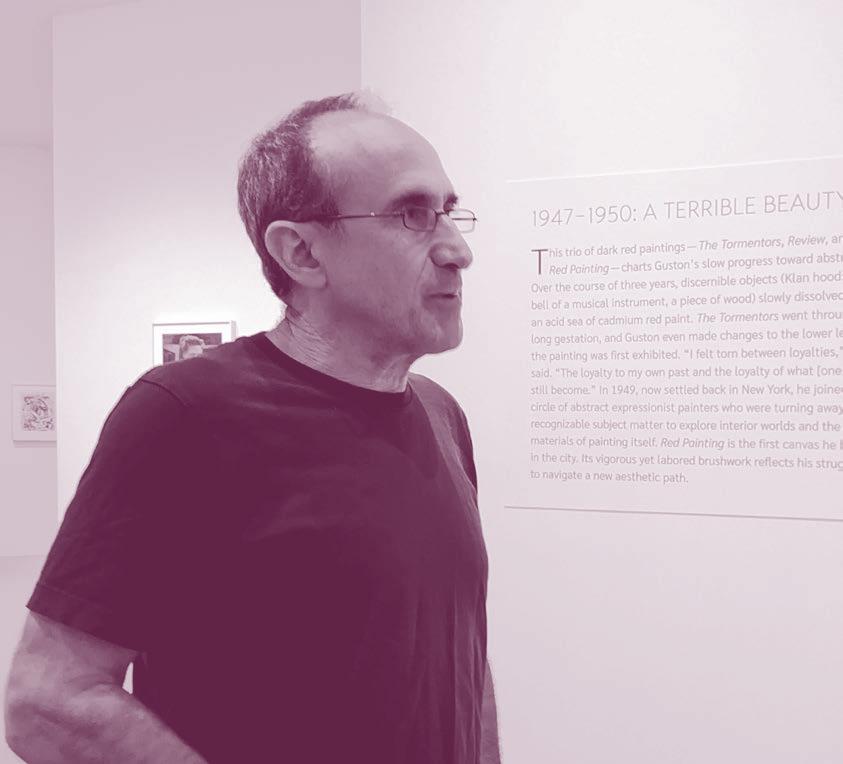
Harry Cooper
Harry Cooper was just appointed Bunny Mellon Curator of Modern Art at the National Gallery of Art, having served as head of modern and contemporary art there for the past sixteen years. His last exhibition, Philip Guston Now, appeared in Boston and Houston as well as Washington before concluding its run earlier this year at Tate Modern. An active writer, he has focused on issues of form and experience as well as word and image in the paintings of Stuart Davis, Juan Gris, Jasper Johns, Ellsworth Kelly, Piet Mondrian, and Ed Ruscha, among others.

Wayne McGregor
Wayne McGregor CBE is a multi-award-winning British choreographer and director renowned for innovations that have redefined dance in the modern era. His touring company, Company Wayne McGregor, celebrated its thirtyyear anniversary in 2023. McGregor is also resident choreographer at the Royal Ballet, London, and director of dance for the Venice Biennale. He is regularly commissioned by dance companies around the world and his works are danced in their repertories. He choreographed ABBA Voyage , a concert that brought the ’70s pop group back onstage in a performance by virtual avatars. Photo: Pål Hansen
30

IN SEASON
Gagosian Quarterly presents a selection of new releases and events coming this summer.

Librairie Saint Laurent Babylone
Located at 9 rue de Grenelle, Paris, Saint Laurent Babylone is the newest project launched by the brand’s creative director, Anthony Vaccarello. Offering a carefully curated collection of books, art, and music, the store pays tribute to the past—with a nod to Yves Saint Laurent and Pierre Bergé’s ties to the SévresBabylone neighborhood, while providing a space for cultural events like author readings, signings, and DJ sessions for visitors today.
Below: Raven Halfmoon, Weeping Willow Women , 2022, ceramic and glaze, 7 ¼ × 4 ½ × 7 ¼ inches (18.3 × 11.7 × 18.3 cm).
Exhibition Loewe Foundation
Craft Prize 2024
From May 19–June 9, 2024, at Palais de Tokyo, Paris, the Loewe Foundation will exhibit work by the thirty finalists for their annual prize. The finalists, representing sixteen countries, work across a range of mediums, including ceramics, woodwork, textiles, furniture, paper, basketry, glass, metal, jewelry, lacquer, and leather.


32
Left: Interior of Saint Laurent Babylone, Paris. Photo: courtesy Saint Laurent
Photo: courtesy Loewe Foundation


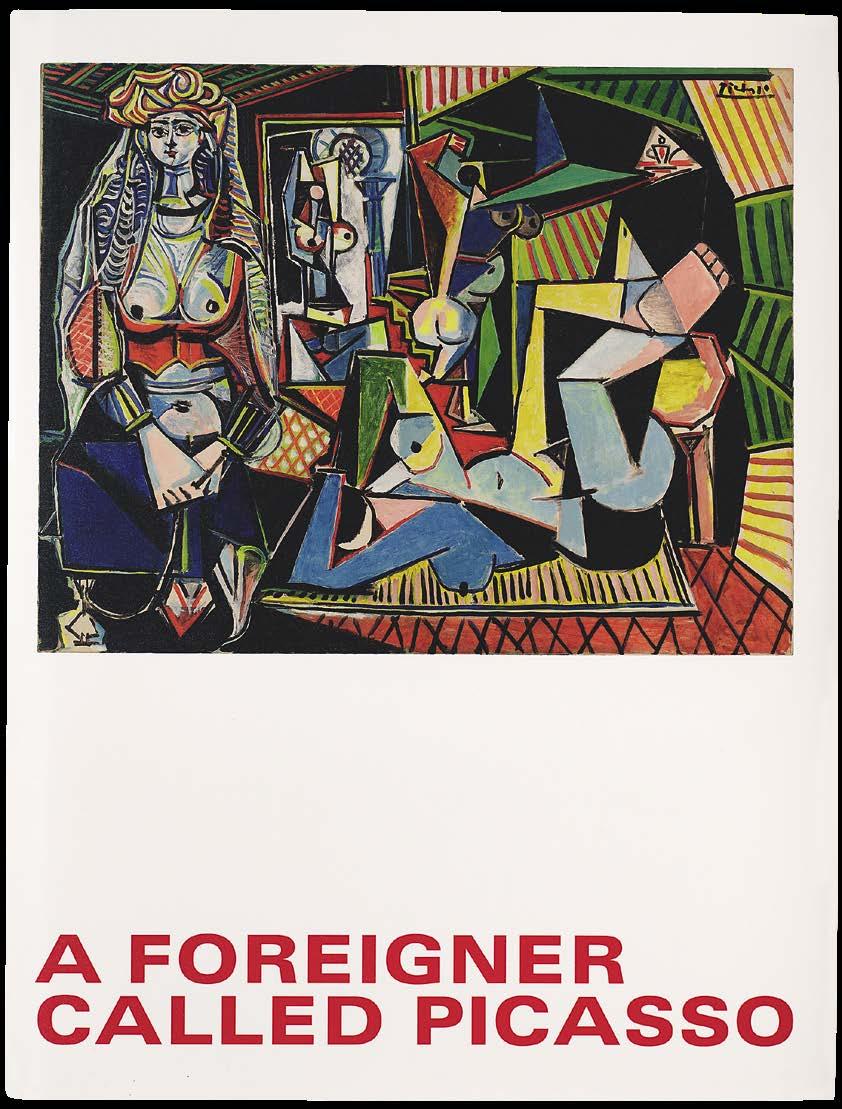
Exhibition Catalogue A Foreigner Called Picasso: Volume 1
This book was published on the occasion of A Foreigner Called Picasso at Gagosian, New York. Curated by Annie Cohen-Solal and Vérane Tasseau, the exhibition was organized in association with the Musée national Picasso–Paris and the Palais de la Porte Dorée–Musée national de l’histoire de l’immigration, Paris. Spanning the entirety of Pablo Picasso’s career in France from 1900 through 1973, A Foreigner Called Picasso reframes our perception of Picasso with a focus on his status as a permanent foreigner in France. This volume includes an introduction by Larry Gagosian; a conversation between Cohen-Solal, Cécile Debray, director of Musée national Picasso–Paris, and Constance Rivière, director of the Palais de la Porte Dorée; and a text by Paloma Picasso. This publication is the first volume of a planned two-volume boxed set, with the second volume to include essays by the curators and contributions from leading international scholars— including Picasso experts, social scientists, and intellectuals at large— to further explore the important new perspectives opened up by this exhibition.
Novel Directions All Fours by Miranda July
The multihyphenate Miranda July returns with a new novel that pulses with intimacy and vulnerability in a manner characteristically her own. With every chapter, the life of the protagonist, a middle-aged artist and mother, veers in unanticipated directions on the wings of desire as she changes plans, holes up in a motel, gets dressed, and grapples with being known.
Left: Cover of A Foreigner Called Picasso: Volume 1 (Gagosian, 2024)
Right:
Cover of Jonathan Lethem’s Cellophane Bricks: A Life in Visual Culture (ZE Books, 2024)
Below:
Cover of Miranda July’s All Fours (Riverhead, 2024)

Essays on Art Cellophane Bricks: A Life in Visual Culture by Jonathan Lethem
Celebrated novelist Jonathan Lethem grew up in a world defined by visual culture—from a childhood in his father’s painting studio to his own education in art school—before finding his vocation in writing. In this collection of personal and critical essays, Lethem experiments with the genre of art-writing.


34

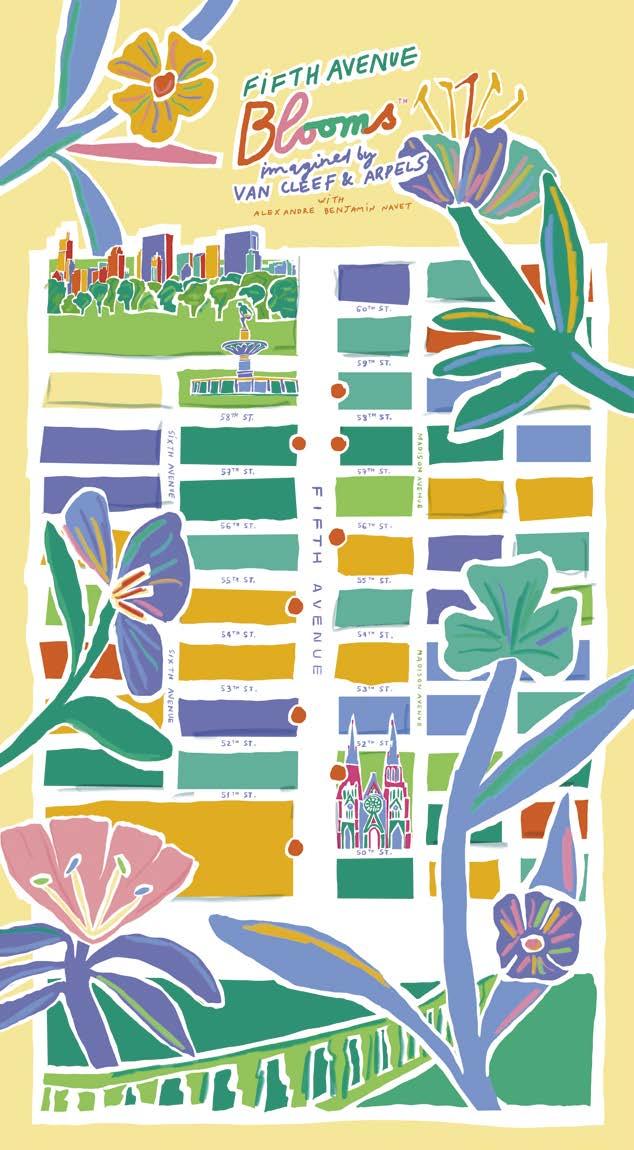
Urban Flowers Fifth Avenue Blooms, imagined by Van Cleef & Arpels
Through May 31, Van Cleef & Arpels has teamed up with French artist Alexandre Benjamin Navet to create colorful, sculptural installations that showcase flowers on the sidewalks of New York. The third consecutive year of this initiative will engage further sensorial elements, creating an unfolding garden with day-to-night visibility.
Tailor Made Born in Oasi Zegna
The result of a collaboration between Italian luxury brand Zegna, Rizzoli, the creative direction of Laura Decaminada, and text by Chidozie Obasi, this elaborate book evokes the richness of sensations that have come to define Zegna. Centering Oasi Zegna, the free-access natural territory established by the brand’s founder and maintained by his descendants in the Italian Alps, the book avoids biography and chronology, instead utilizing vivid imagery and poetic texts to celebrate this unique ecosystem.
Left: Image courtesy Van Cleef & Arpels
Right: Cover of Mary Ann Caws’s Symbolism, Dada, Surrealisms: Selected Writing of Mary Ann Caws (Reaktion Books, 2024)
Below: Cover and slipcase of Born in Oasi Zegna (Rizzoli, 2024)
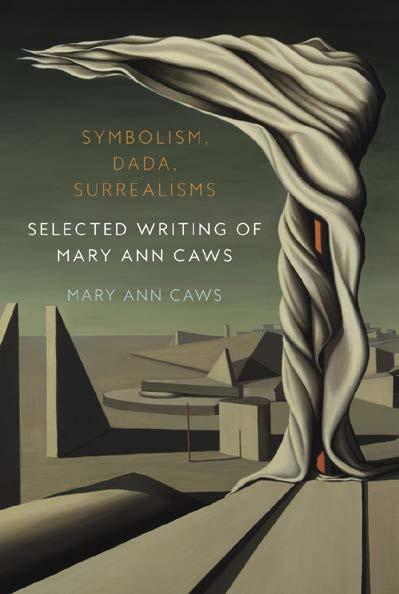
Art History Symbolism, Dada, Surrealisms:
Selected Writing of Mary Ann Caws
For the centennial of the Surrealist movement, professor and author Mary Ann Caws returns with a compendium of essays that portray the key artists, writers, and artworks that came to define the avant-garde. From Antonin Artaud to Unica Zürn, the gathered texts paint a magic-infused portrait of these visionaries.

36


Visual Culture Black Meme: The History of the Images That Make U s by Legacy
Russell
Legacy Russell’s much-anticipated follow up to Glitch Feminism (2020) invites readers to think more critically about the semiotics and histories undergirding contemporary visual culture, from reaction gifs to viral memes. Behind the seemingly playful, Russell uncovers a brutal legacy of racism and exploited Black labor and pain.
Photobook United Kingdom by
Martin Parr
The newest installment of Éditions Louis Vuitton features the work of photographer Martin Parr, who brings his distinctive style to documenting the United Kingdom. From weddings to the Glastonbury Festival to the island’s shores and villages, the portfolio of images, taken between 1998 and today, showcases the faces and places that compose the country.
Left: Cover of Legacy Russell’s Black Meme: The History of the Images That Make Us (Verso, 2024)
Right: “Jean-Michel Basquiat: Venta Plate,” produced by Ligne Blanche, 2012
Below: Martin Parr’s United Kingdom (Éditions Louis Vuitton, 2024)

Jean-Michel Basquiat: Venta Plate
Produced by Ligne Blanche in Paris in collaboration with the Estate of JeanMichel Basquiat, this Limoges porcelain plate reproduces Basquiat’s painting The Mechanics That Always Have a Gear Left Over (1988).

38
Art at Home




























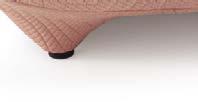







1 Lonnie Holley’s AKA (two words)
6 The Starry Night backdrop
8 Mai
10 Painter of Discovery of the Body of St. Mark 11 Nicholas II, for example
12 Westminster or Fontenay 14 Egyptian cross 16 Summer cooler
18 Fruit captured in a Claude Monet painting, 1883
CROSSWORD
19 Houston’s Project Row Houses creator (two words)
Raise 23 Biographer of 49 across, Cynthia
Characteristic
Pronounced
Oism inventor Jim
Japanese Neo-Pop artist Yoshitomo 33 Out limb (two words)
Was ahead
Marina Rey, Ca.
Beatles label, once
Infrared, abbr.
Warhol superstar Candy

1 Painter of Pesaro Madonna
2 Elevates
3 Earlier
4 Occupation of David Guetta and Calvin Harris
5 “If the is concealed, it succeeds”: Ovid
6 Posed for a painting
7 Trevor Horn won a Grammy as the producer of this Seal song (four words)
9 Artist who used the soak-stain technique,
13 Desert plants with sword-shaped leaves
15 Vienna Secessionist
17 Draw roughly 20 Rhein II photographer
21 Titian’s Bacchus and 24 Managed
26 Contemporary American artist who uses architecture and installation art to demonstrate the realities of urban neighborhoods, Lauren
28 Dr (rapper)
30 You and I
32 Fashion house that created pieces inspired by Pablo Picasso’s original Tanagra ceramics
35 Contemporary artist who painted White Canoe
38 Compass point, abbr.
41 Mineo of Rebel without a Cause
42 Set up
45 Doctor title
40 1 2 3 4 5 6 7 8 9 10 11 12 13 14 15 16 17 18 19 20 21 22 23 24 25 26 27 28 29 30 31 32 33 34 35 36 37 38 39 40 41 42 43 44 45 46 47 48 49
Down
together clues from the worlds of art, dance, music, poetry, film, and beyond.
This customized puzzle, written by Myles Mellor, brings
Across
27
36
37
40
43
44
46
47
48
49
Solution
22
25
29
31
34
For sure 39 Oprah’s network
Spartan
Half
Essential
Leave
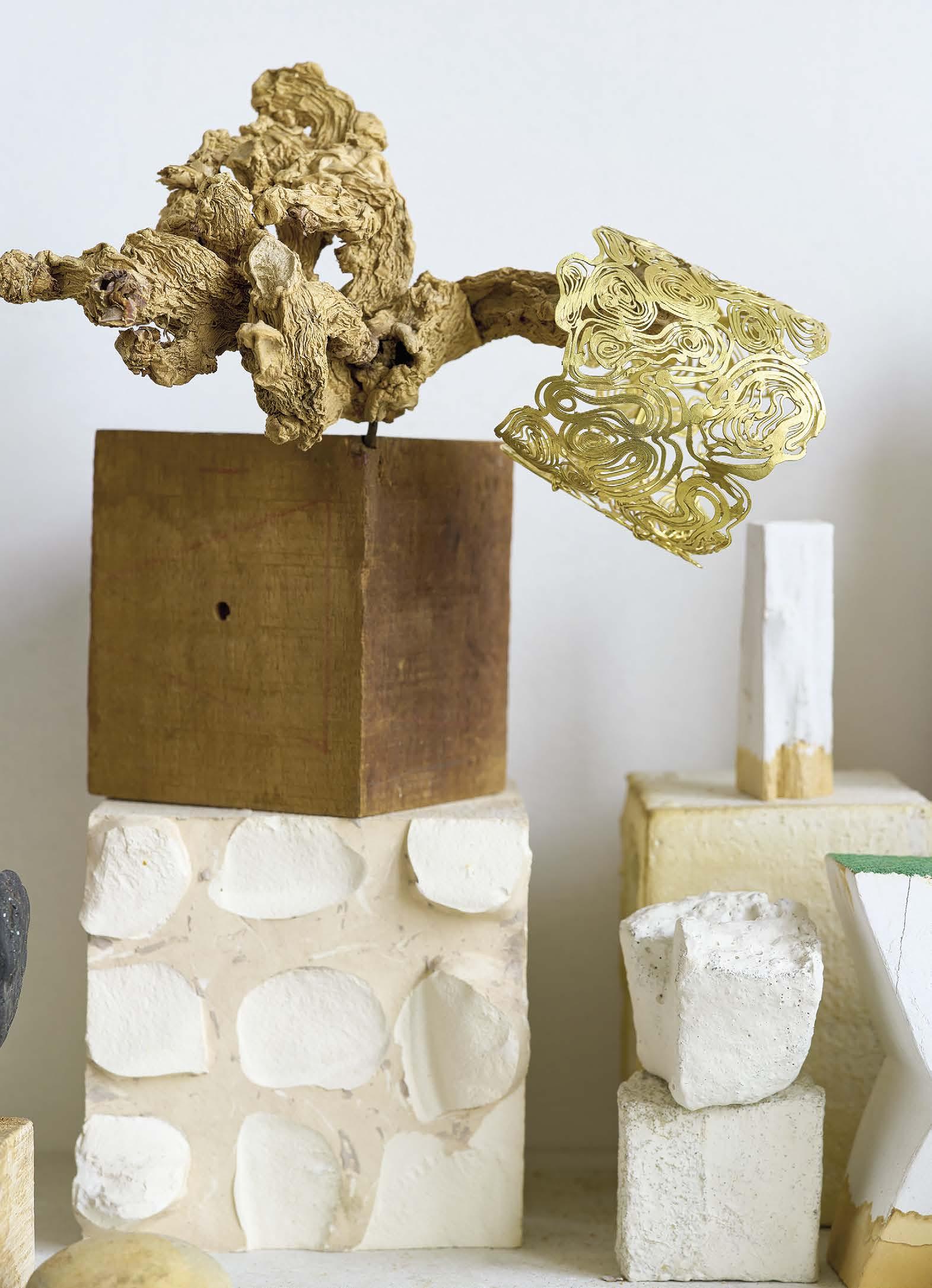
An exhibition of new work by Maurizio Cattelan opened in New York earlier this spring. Curated by Francesco Bonami, this was the first solo presentation of new work by the artist in the city in over twenty years. Here, Bonami asks us to consider Cattelan as a political artist, detailing the potent and clear observations at the core of these works.
Maurizio Cattelan Sunday Painter
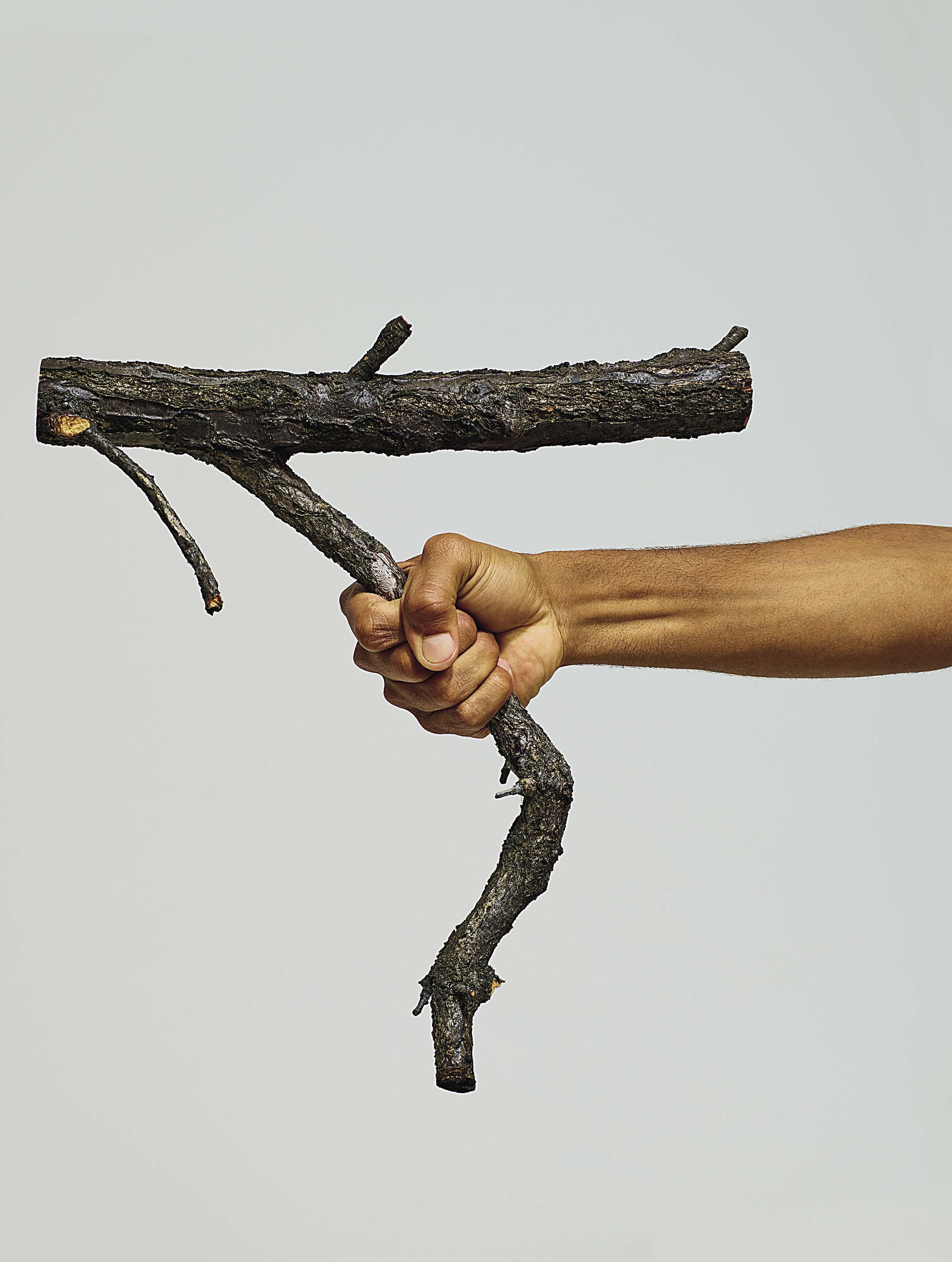
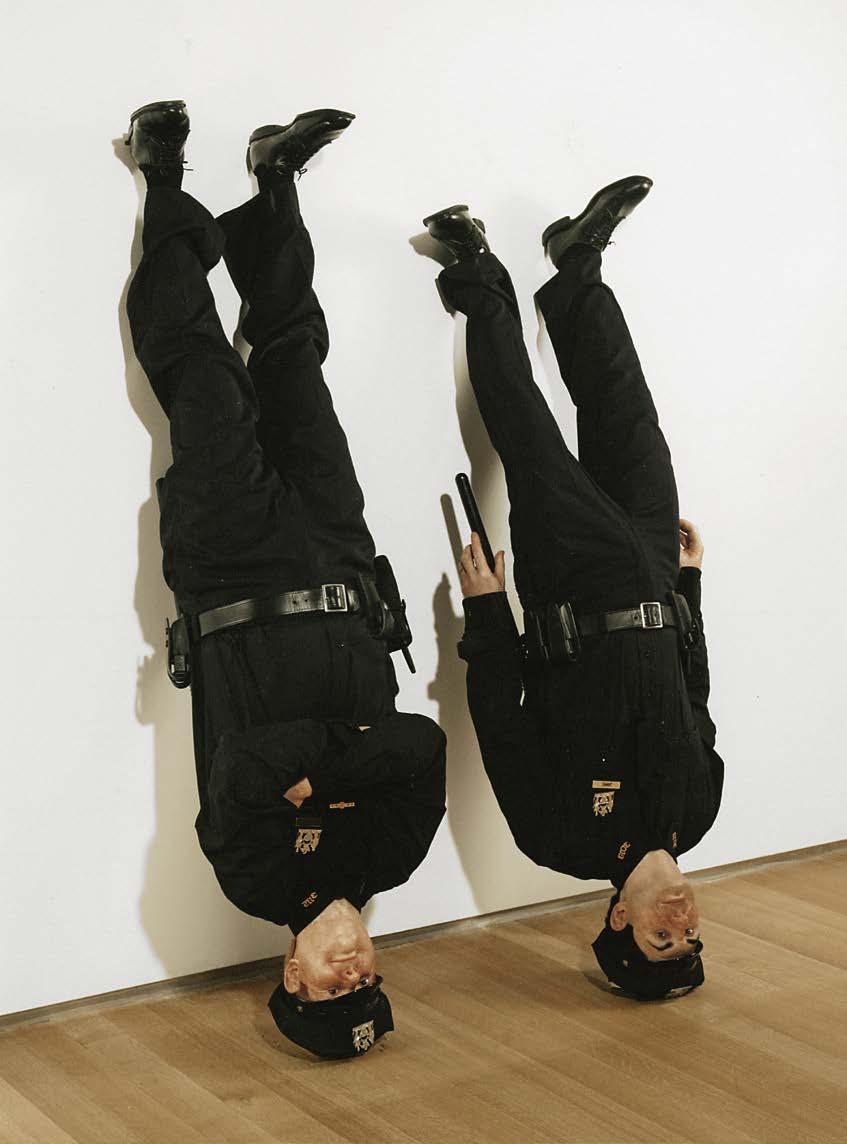
Frank and Jamie (2002): it sounds like Abbott and Costello or Laurel and Hardy. Since it is actually a sculpture by Maurizio Cattelan, the simile isn’t strange, for people often find his work slapstick and funny. In fact nothing could be farther from the truth. Cattelan is a political artist at heart—not in the vein of Hans Haacke or Barbara Kruger but more like Aristotle, a sort of craftsman of social issues and ultimately of social and collective feeling. His political stance is not moralistic, accusatory, or preachy; he presents the issues as they are, or as a general public could perceive them.
Frank and Jamie are two policemen, leaning upside down against a wall. They were the first work Cattelan showed in New York after 9/11 and his last in any private space in the United States, in that case the Marian Goodman Gallery, until this spring. Far from being funny, the two figures are a symbol of power subverted—the Twin Towers in human form. The work shows how contemporary history, or its chronicle, influences our understanding of the world and our daily life; how we deal daily with power without running the risk of having our lives disrupted by it.
Cattelan doesn’t really seek answers. As Marcel Duchamp used to say, “There are no solutions because there are no problems.” There are no answers because there are no real questions—life is what it is, unraveling under our feet. In our delusional state, we might wish we could change it, but we can’t. After Frank and Jamie came the triumph of the retrospective at the Guggenheim, New York, in 2012, to be followed by America (2016), the gold toilet installed in the museum at the mercy of the visitors’ number 1’s and 2’s, according to the need. The natural heir of Duchamp’s 1917 Fountain , America
made the cover of the New York Post , but the subtext was loaded: Donald Trump soon became president of the United States, making America rather more than a childish and expensive commentary on a world of luxury gone adrift.
While Cattelan’s infamous banana taped to the wall is called Comedian (2019), and a recent variation, a taped empty banana skin, is called Clown (2023), Cattelan is neither a comedian nor a clown but a combination of the two that produces a dramatic character, a kind of Robin Williams of art history, trapped in a body and fighting his true inner self. The result of this inner fight is a body of work that defies the conventional understanding of art, since it always refers to something outside the art world, even if art-world professionals can’t help but draw connections to other artists, from arte povera to Lucio Fontana. Such references are certainly possible, but are unintended and often serendipitous.
Besides being a closet political artist, Cattelan is also a bard of what I call “recreational violence,” or “RV.” Violence, like politics, is an intrinsic part of his language and philosophy, if often camouflaged under a veneer of humor. The new body of work is the logical expression of what was hidden in the too-obvious America : luxury and privilege can’t shield you from violence, articulated as some sort of ultimate entertainment, or the revenge of boredom and social resentment. You may be able to afford and enjoy making your daily no. 2 on a solid-gold toilet, but that pleasure can’t save you from someone with an assault rifle coming into your bathroom to interrupt your bowel movement.
Seen from a distance, that could be very funny. Charlie Chaplin used to say, “Life is a tragedy when
Previous spread: Photo: courtesy Maurizio Cattelan
This page, left: Maurizio Cattelan, Frank and Jamie, 2002, wax and clothes, dimensions variable
This page, below: Maurizio Cattelan, America , 2016, bowl: 18k gold; pipes and flushmeter: gold plated, 28 ½ × 14 × 27 inches (72.4 × 35.6 × 68.6 cm), installed at the Solomon R. Guggenheim Museum, New York. Photo: Jacopo Zotti, courtesy Maurizio Cattelan Archive
Opposite: Maurizio Cattelan, You , 2021, platinum silicone, epoxy fiberglass, stainless steel, real hair, clothes, hemp rope, and flowers, 55 × 15 ¾ × 10 inches (140 × 40 × 25 cm).
Installation view, Maurizio Cattelan: Yo u, MASSIMODECARLO, Milan/ Lombardy. Photo: Zeno Zotti, courtesy the artist and MASSIMODECARLO
Artworks © Maurizio Cattelan
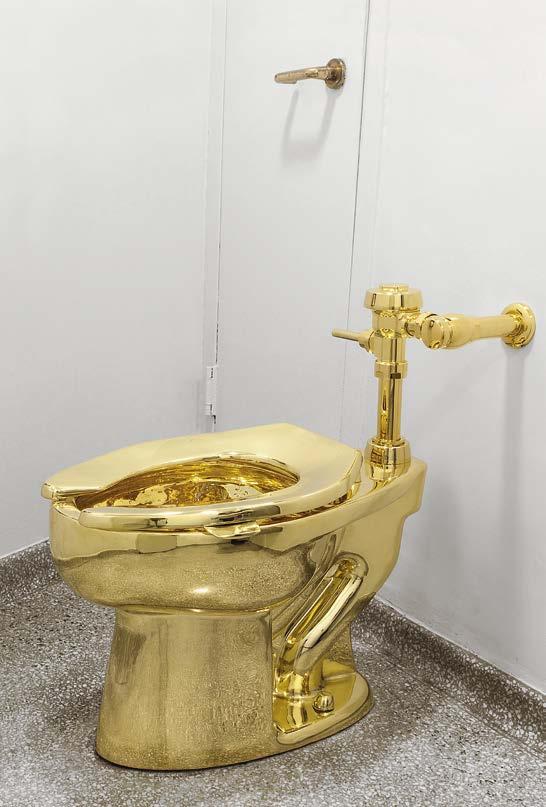
44

seen in close-up, but a comedy in long shot.” Cattelan similarly does a close-up, then a long shot, going in and out on reality. The last scene of Sam Peckinpah’s Wild Bunch (1969) may be enjoyable from a cinema seat, but the difference between the description of an action and the action itself can be dramatic and horrible. That gap between description and action, between entertainment and danger, is where Cattelan puts himself and the viewer. He and the viewer are in what we might call a Sunday state of mind, because Sunday is simultaneously a beautiful day and an ugly one, a holiday edging toward its own demise—edging toward Monday.
A gold panel covered with gunshot marks is like a Sunday: the background to a celebration gone bad, very bad. Shooting is not a novelty in art; we go from Manet’s The Execution of Emperor Maximilian (1867–69) to Goya’s Third of May 1808 (1814), from William Burroughs shooting everything and anybody around him to Chris Burden shooting at an airplane in flight, from Valerie Solanas’s attempt on the life of Andy Warhol in 1968 to Richard Avedon’s iconic photograph (1969) of the scars she left on Warhol’s body. But Cattelan’s Sunday (2024) goes a little farther, removing the presence of the shooter and transforming violence into a sort of pattern, a decoration, a memory of human folly. His wall could be the wall of some Las Vegas casino bullet-riddled by a disgruntled gambler. There is beauty in the aftermath of tragedy. The walls still standing from Beirut’s civil war look more like the ancient ruins of sandstone buildings than the rubble remaining from human insanity. Cattelan opens a way through this possible misunderstanding, speaking of the irresolvable contradictions
between freedom and violence, fun and horror. Like a variation on Colonel Kurtz in the last scenes of Francis Ford Coppola’s Apocalypse Now (1979), Cattelan seems to murmur not “The horror, the horror” but “The fun, the fun.” Not that he dismisses the horror, but he sees the other side of it— the fun. Obviously not the fun of the victims but the unimaginable but definitely present fun in the mind of the mass shooter.
What continues to puzzle Cattelan is the way fun can again and again produce horror, as is shown by the endless series of tragedies perpetrated in the name of the fictional freedom to be able to defend yourself. To the extent that Cattelan’s large shot wall makes vague reference to Duchamp’s Large Glass (1915–23) in the Philadelphia Museum— the victim stripped bare, rather than the bride— it invokes the artist’s submission to fate, chance, and the inscrutability of real meaning. Since there is no real meaning in violence, it is pointless to seek it; yet when recreational violence is part of the daily routine, with disposable victims and disposable murders, another kind of silent violence seeps through the seams of the social pattern and Cattelan unjudgmentally dives into it, creating a parallel world to the spectacle presented by recreational violence.
In that world, Cattelan analyzes how human degradation and humiliation, consistently pursued, can achieve a sort of classical dignity, the dignity of human subjects erased by the social structure yet still breathing, like mummified corpses not yet dead. All of this appears in November (2024), a fountain recalling the Manneken Pis (1619), the street-corner sculpture of a pissing kid that has long been a landmark of Brussels. The
difference is that what we see is not a playful child but a half-dozing male figure slouched on a bench with his penis in his hand, peeing on the ground. While it’s unclear whether the work is a monument to self-destruction or to survival, it certainly monumentalizes defiance of the written and unwritten laws of social and urban life; it is also another hymn to an awkward way of defining freedom. The male figure has no need of a gun to feel free or to avenge social injustice—his weapon is his own dick. He has no need to create horror, he is satisfied with inducing disgust. He dares you to take a selfie if you wish, and many will. In Cattelan’s work, repulsion, disgust, and violence are unavoidable backdrops to our detached and fictional lives. What’s the difference between a small child peeing in a fountain and a grown man peeing on the floor? It’s just a matter of convention. If you’re free to buy an assault rifle in a department store, what’s wrong with pissing in public? Sunday and November show an America gone adrift in the ocean of freedom while some kind of political hurricane is approaching.
Cattelan is shy of addressing these issues explicitly; his work does not directly respond to or comment on what’s happening. He’s like a Sunday painter setting his easel on the sidewalk, unaware that a murder will soon occur there, or maybe that two people will fall in love there, or that something else will happen, including maybe nothing. He is a Sunday painter. His job is to paint, without judging it, whatever will happen that Sunday, on that sidewalk, at that time.
45
BAUHAUS STAIRWAY MURAL
Alice Godwin and Alison McDonald explore the history of Roy Lichtenstein’s mural of 1989, contextualizing the work among the artist’s other mural projects and reaching back to its inspiration: the Bauhaus Stairway painting of 1932 by the German artist Oskar Schlemmer.

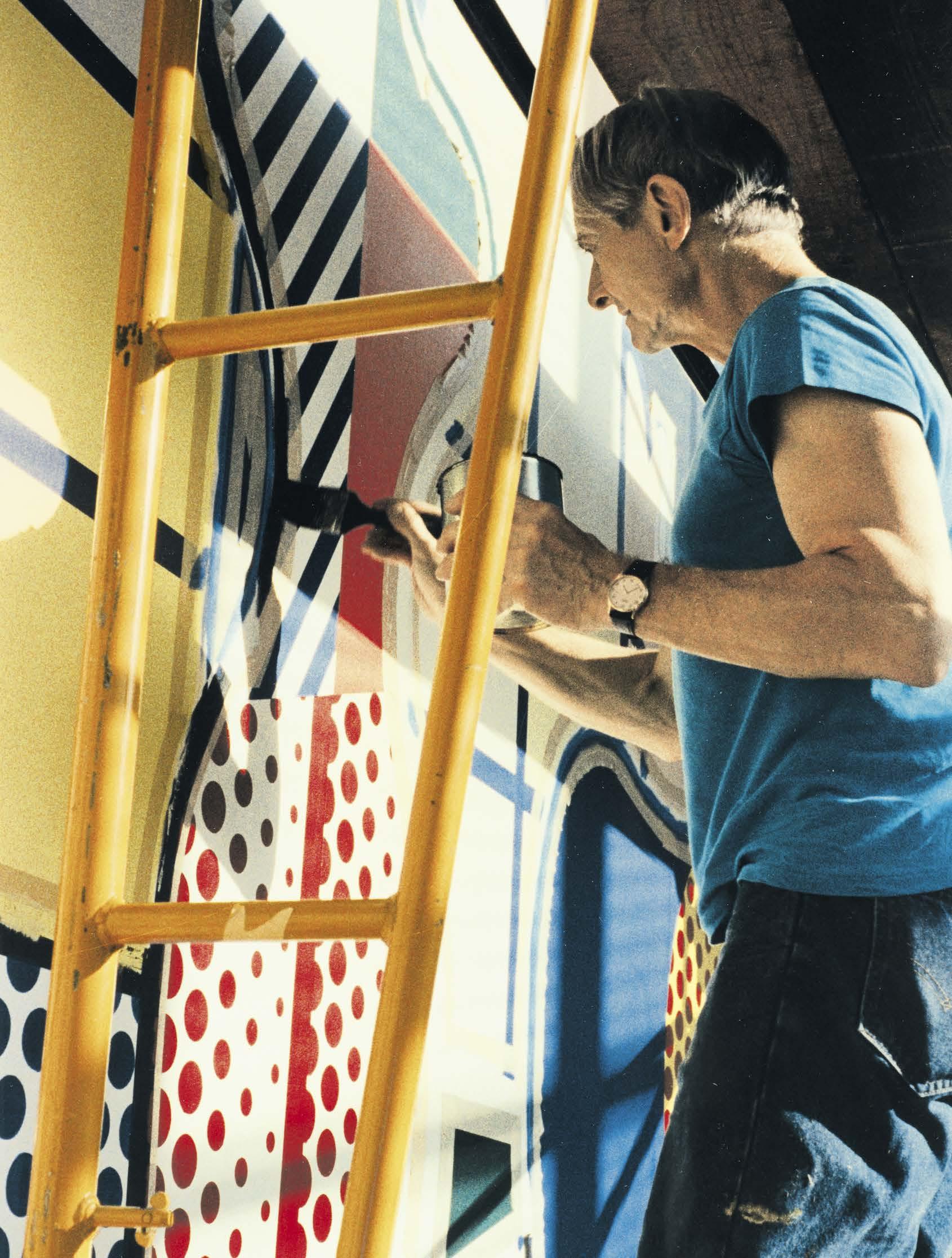

Soaring over twenty-six feet high, Roy Lichtenstein’s magnificent Bauhaus Stairway Mural from 1989 stands as a testament to his signature Pop style of benday dots, bold colors, and simplified forms, devices well suited to making a visual impact at a monumental scale. In contrast to the heroic or public themes of the Mexican muralists of the 1920s and the Works Progress Administration artists of Depression-era America, Lichtenstein’s murals fizz with the imagery of Pop and the pastiches of art history that also define his paintings. Over the years, he completed ten mural-sized installations (eleven if we include Super Sunset Billboard from 1967, which was later destroyed), producing these large-scale artworks from early to late in his career, from New York World’s Fair Mural (Girl in Window) of 1964 to Times Square Mural of 1994 (installed posthumously in 2002). He also made preparatory studies for four unrealized murals, ranging in date from 1968 to 1997. Having conceptualized working at large scale in the mid-1960s, Lichtenstein
approached mural projects in a variety of ways, sometimes enlarging a single image (as in New York World’s Fair Mural (Girl in Window) and University of Düsseldorf Brushstroke Mural [1980]), other times combining an accumulation of images from across his practice (as in Greene Street Mural [1983] and Mural with Blue Brushstroke [1986]). As Camille Morineau writes, he made his murals “a fairly systematic exploration of enlarging his own ‘tropes,’ as well as a tangential investigation of large genre paintings.”1
Bauhaus Stairway Mural , commissioned for the atrium of the I. M. Pei–designed headquarters of the Creative Artists Agency (CAA) in Beverly Hills, pays homage to just such a painting, Bauhaus Stairway ( Bauhaustreppe , 1932), which curator Diane Waldman has described as arguably the best single work by the German artist Oskar Schlemmer. 2 Schlemmer was a teacher at the revolutionary Bauhaus school in Weimar and later in Dessau, Germany, founded by Walter Gropius in 1919. The Bauhaus was devoted to a new type
of artistic education that united the fine and the applied arts—a mission that resonated profoundly with Lichtenstein’s intermingling of “high” and “low” art forms. Alongside other famed staff, including Marcel Breuer, Vasily Kandinsky, Paul Klee, and László Moholy-Nagy, Schlemmer taught stage design, mural painting, and sculpture. A pioneer of abstract art, he was also a choreographer, most famously as the creator of the Triadisches Ballett (Triadic ballet) of 1922; he designed stage sets for Igor Stravinsky and Arnold Schoenberg operas in Berlin; and throughout the 1930s, he was known for his site-specific murals.
Facing mounting political pressure from the Nazi party, the Bauhaus left its purpose-built building in Dessau, designed for the school by Gropius, in 1932. Schlemmer, who had left the school three years earlier, painted Bauhaus Stairway on hearing the news of its closing. According to Christina Eliopoulos, Archives Fellow for Research and Reference at New York’s Museum of Modern Art (MoMA), the painting’s present home, Schlemmer wanted, “to memorialize and pay tribute to the artists, students, and teachers who were part of this movement and who were coming under imminent attack from the Nazis during that time.”3
Showcasing the distinctive glass-fronted staircase of the Bauhaus’s modernist building, and its students moving up the steps, Schlemmer’s painting represents the Bauhaus in its ideal form. It was inspired by a photograph taken by Schlemmer’s fellow Bauhaus teacher T. Lux Feininger, the son of the artist Lyonel Feininger. Here, the staircase banister expresses both stability and progressive movement upward at a time of turmoil, while the stylized figures reflect Schlemmer’s belief in humanity as an organic as well as mechanical creation. Schlemmer made several paintings on this subject, including Treppenszene (Staircase scene, 1932), in the Hamburg Kunsthalle—among his last before the establishment of the Third Reich, in 1933, and his labeling as a degenerate artist by that regime, in 1937.
MoMA acquired Bauhaus Stairway after the founding director of the museum, Alfred H. Barr, saw it in a show at the Württembergischer Kunstverein during a visit to Stuttgart in 1933. Barr admired the painting and was shocked when the show was forced to close a few days later following a harsh review in the Nazi newspaper the

48
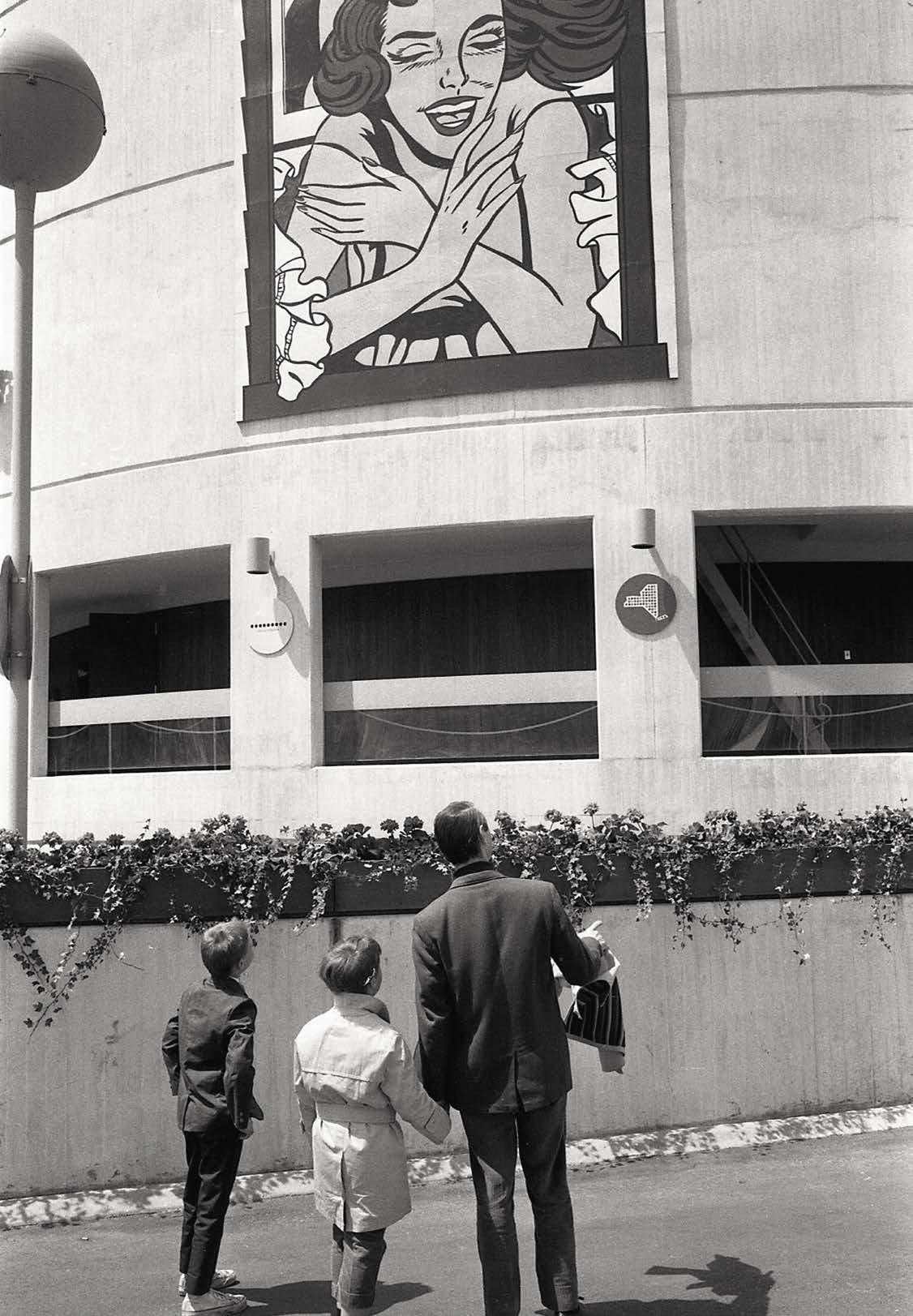
Previous spread, left: Roy Lichtenstein, Bauhaus Stairway Mural , 1989, oil, Magna, acrylic, and graphite pencil on canvas, 26 feet 5 ¾ inches × 17 feet 11 ¾ inches (807.1 × 548 cm) © Estate of Roy Lichtenstein. Photo: Rob McKeever
Previous spread, right: Roy Lichtenstein painting Bauhaus Stairway Mural (1989), Creative Artists Agency, Beverly Hills, California, 1989. Photo: © Sidney B. Felsen
Opposite, above: Oskar Schlemmer, Bauhaustreppe (Bauhaus Stairway ), 1932, oil on canvas, 63 ⅞ × 45 inches (162.3 × 114.3 cm), The Museum of Modern Art, New York; gift of Philip Johnson. Digital image: The Museum of Modern Art/Licensed by SCALA/Art Resource, New York
Opposite, below: Women from the Bauhaus weaving workshop on the staircase of the Bauhaus Building in Dessau, Germany, 1927 © Estate of T. Lux Feininger. Photo: T. Lux Feininger/BauhausArchiv, Berlin
Above: Roy Lichtenstein and his sons in front of New York World’s Fair Mural (Girl in Window), Flushing, New York, c. 1964. Photo: © Ken Heyman
National-Sozialistiches Kurier. The critic wrote menacingly, “This exhibition is doubtless the last chance the public will have to see painted Kunstbolschewismus [Bolshevik art] at large.”4 Within days of coming to power, the Nazi regime had begun to attack modern art and architecture, censor artworks, lock galleries, and eject modernists from the academies. Barr was a great admirer of the Bauhaus—indeed, the interdisciplinary nature of the school had served as a model for MoMA on its founding, in 1929—and he quickly persuaded a wealthy colleague, the architect Philip Johnson, to purchase Bauhaus Stairway for the museum. Since the opening of MoMA’s own purpose-built building in 1939, it has mostly hung in the stairwell there—a stairwell itself inspired by Gropius’s Bauhaus.
Lichtenstein was a native New Yorker who often cited art history, translating, distilling, even poking fun at art movements and individual artworks by filtering them through his distinctive Pop aesthetic. He knew museum collections well,
particularly those in New York, and certainly encountered Schlemmer’s painting at MoMA and understood the complexities of its history. In 1988, a year before creating the CAA mural, he made a smaller version of Bauhaus Stairway as a painting—though it still sits at 94 inches tall. That work and a study for it are part of the MoMA collection, where they speak quite directly to Schlemmer’s original. As Deborah Solomon wrote last fall in the New York Times , “It is not surprising that Lichtenstein was drawn to Schlemmer, who rejected the hot, romantic ethos of twentieth-century German Expressionism in much the same way that Lichtenstein rejected the emotive ethos of Abstract Expressionism a half-century later. . . . One of Lichtenstein’s enduring themes was the absurdity of utopian visions, and so the Schlemmer painting was perfect grist for his dot-pattern mill. Lichtenstein often seemed divided between admiration for his avant-garde predecessors and an opposing desire to parody their work.”5 Reimagining Bauhaus Stairway on a grand scale in Pop terms, and with the context of Hollywood emanating from the mural’s destined home in the CAA building, Lichtenstein drew parallels between the writers, directors, actors, and musicians entering these Los Angeles offices and the artists and students who filled the stairway at the Bauhaus so many generations earlier. He also tinkered playfully with the composition, his dry sense of humor responding to the mural’s destined longterm location. As Solomon notes, “Revealingly, in lieu of the male dancer that Schlemmer has positioned in the upper left of his painting, balancing en pointe , Lichtenstein has substituted an Oscar statuette. He thereby flattened the radical lessons of the Bauhaus into a race for an Academy Award.”6 Perhaps the Oscar is also a punning homage to Oskar Schlemmer—too much of a stretch, maybe, but the artist did have a playful spirit.
The painting of a mural is involved, requiring planning and preparation far more extensive than those for traditionally scaled canvases. This kind of execution suited Lichtenstein’s sensibilities. For Bauhaus Stairway Mural , he brought three assistants from New York to spend five weeks with him at CAA. To ensure the availability of the proper art supplies for the duration of the project, one of these assistants drove from New York to Los Angeles carrying materials that might be challenging to source at short notice. By the time everyone had arrived, the expansive canvas—backed with a layer of material to facilitate separating the work from the wall in the future if need be—was already installed but had not yet been primed. (It is amusing to wonder how many gallons of gesso it took to cover the canvas completely.) A projector was set on scaffolding across from the canvas, so that Lichtenstein could draw the composition from the projected image it cast. (Once the machine was aligned, an assistant needed to steady it for hours while Lichtenstein drew out the planned lines, as any shift or movement would misalign the projection.) Rob McKeever, a member of the Bauhaus Stairway Mural crew, recently recalled:
Once the image was scaled up, Lichtenstein would make a drawing directly on the canvas. Then we would apply tape to delineate the sections, we would paint to fill the colors in after that, then move the tape and apply black to fill the lines in. The dots on the murals would either be silk-screened or we would use a stencil (depending on the size, silk-screens were
49

hard to align, so stencils tended to be easier), which was often the most challenging part. Overall it was a pretty straightforward process and Roy was working alongside us every step of the way.7
was gifted by Philip Johnson in 1942 to MoMA, where it was enthroned at the top of the stairs until 1983. It was Johnson who commissioned Lichtenstein’s first mural in 1962 and who donated his wonderful painting Girl with Ball to MoMA. Each mural thus responded to a context where Lichtenstein tackled issues full throttle, regardless of how contentious they were.8
After seeing Bauhaus Stairway Mural in its most recent display, at Gagosian in Chelsea in 2023, David Whelan described his visual experience for the Brooklyn Rail : “At a distance, the various parts appear locked into place, but as you approach, the composition begins to move. Lichtenstein’s elongated curves took my vision for a ride before plunging into fields of Ben-Day dots, which produce a buzzing after-image that carries across the picture plane. Besides Lichtenstein’s dramatic optical effects, what held my attention most were moments in the composition where the artist went off-script, deviating from Schlemmer’s original painting.”9 The conical forms of the legs and arms in Schlemmer’s painting, for example, recall his designs for the stage—voluminous multicolored costumes that might force performers to modify their movements and test the relationship between body and space. Lichtenstein’s figures in the lower-right-hand and upper-left-hand corners of the mural seem to reference these costumes and Schlemmer’s volumetric rendering of the figure, as well as his interest in mechanical movement. But Lichtenstein injects Schlemmer’s vision of the Bauhaus with his own, electric Pop palette, bold outlines, and the two-dimensional modeling techniques of hatching and benday dots.
The Roy Lichtenstein Foundation Archives
Opposite: Bauhaus Stairway Mural , 1989, in the lobby of the Creative Artists Agency, Beverly Hills, California, 1989. Photo: © Paul Warchol Photography Inc.
Artworks © Estate of Roy Lichtenstein
Lichtenstein made several important murals in the 1980s, including Greene Street Mural , at Leo Castelli’s Greene Street Gallery (1983), and installations at AXA Equitable Center, New York (1984–86), and the Tel Aviv Museum of Art in 1989. It is interesting to note that Tel Aviv Museum of Art Mural was made in the same year Lichtenstein painted the CAA mural: it combines a variety of motifs from across the artist’s career, including a portion of Bauhaus Stairway. Morineau writes,
When Lichtenstein cites himself it is always clear, as seen in the Tel Aviv Museum of Art Mural , where Oskar Schlemmer’s stairway is paired with a sort of abstract double, to good effect: few people know that Tel Aviv is home to the largest collection of Bauhaus and International Style buildings in the world, all located in the city center. Incidentally, Lichtenstein’s citations in the Tel Aviv mural and others focus on political artists and wellknown mural artists—[Pablo] Picasso, [Fernand] Léger, [Marc] Chagall, Schlemmer—as well as on the loss of utopia, be it modern or contemporary. . . . [Schlemmer’s] Bauhaus Stairway
Speaking generally of Lichtenstein’s murals, Morineau writes, “The culture and life of museums and the history and politics of place are, more or less, directly evoked here. But also, more surprisingly, is the recurring religious metaphor of ascension, which may have helped to structure the compositions of Lichtenstein’s three largest murals ( Mural with Blue Brushstroke , Bauhaus Stairway Mural , and Tel Aviv Museum of Art Mural ).” 10 Waldman writes, “The subject of a stairway filled with people seems eminently suitable, and even manages to evoke something of the Bauhaus’s utopian belief in merging art and life. Here, this utopian ideal is joined with Lichtenstein’s democratizing aesthetic of replication, thus making art accessible to all and maintaining the connection between high art and consumer culture that underlies all his work.”11
1. Camille Morineau, “There Will Be Mural Painting,” Roy Lichtenstein: Greene Street Mural (New York: Gagosian, 2015), 79.
2. Diane Waldman, Roy Lichtenstein , exh. cat. (New York: Solomon R. Guggenheim Museum, 1993), 271.
3. Christina Eliopoulos, in “UNIQLO ArtSpeaks: Christina Eliopoulos on Oskar Schlemmer’s Bauhaus Stairway,” MoMA post on Facebook #ArtSpeaks playlist, March 5, 2021. Available online at www.facebook.com/watch/?v=463274168200158 (accessed March 26, 2024).
4. Hugh Eakin, Picasso’s War: How Modern Art Came to America (New York: Crown, 2022), 266.
5. Deborah Solomon, “Heading Upstairs with Roy Lichtenstein,” New York Times , September 20, 2023. Available online at https:// www.nytimes.com/2023/09/20/arts/design/stairway-mural-roylichtenstein-gagosian.html (accessed March 26, 2024).
6. Ibid.
7. Rob McKeever, in conversation with Alison McDonald, March 18, 2024.
8. Morineau, “There Will Be Mural Painting,” 81.
9. David Whelan, “Roy Lichtenstein: Bauhaus Stairway Mural ,” Brooklyn Rail , November 2023. Available online at https:// brooklynrail.org/2023/11/artseen/Roy-Lichtenstein-BauhausStairway-Mural (accessed March 26, 2024).
10. Morineau, “There Will Be Mural Painting,” 81. 11. Waldman, Roy Lichtenstein , 353.
50
Above: Roy Lichtenstein with Bauhaus Stairway Mural (1989), in progress at the Creative Artists Agency, Beverly Hills, California, October 4, 1989. Photo: Betty Freeman, courtesy
ROY
Michael Ovitz, cofounder of Creative Artists Agency (CAA), looks back to 1989, the year he and the architect I. M. Pei commissioned Roy Lichtenstein to create the Bauhaus Stairway Mural for the then new CAA Building in Los Angeles. Through the experience of working with Lichtenstein, Ovitz formed a meaningful friendship with the artist.
I spent one year trying to convince I. M. Pei to design the CAA Building. It was one of the most intense business challenges I ever encountered: I was trying to talk a world-class architect into working on a small building for a little-known entertainment company in Los Angeles, after he had just finished the 1,000,000-square-foot Bank of China Tower in Hong Kong. I was lucky enough to persuade him and in our initial design discussion we agreed that there was only one artist to paint the 30-foot-high entrance wall in the atrium. It needed bold color, relatable imagery, some connection to the theme of communication, and be a second Wow!, with the first one being the building.
A tall order.
Roy was the only choice.
I called Leo Castelli, Roy’s dealer, and asked to see him for ten minutes to discuss something about one of his artists. He kindly and quickly received me and I brought in a small model of the building to educate him on the site.
I told him that Roy was our first, second, and third choice and fortunately he loved the idea. He immediately put me into a meeting with Roy and Dorothy at their studio.

We agreed on the size of the work, but I told Roy to do whatever he felt comfortable with that signaled communication. He had “final cut,” a term directors use to make sure they have the last word on their film. For some reason, Leo put a clause in that if I didn’t like the maquette, I could withdraw. I never really remembered that and it wasn’t an option ever under consideration.
This started a journey for me as one of the best creative experiences and friendships I ever had the honor of having. I spent a lot of social time both with Roy alone and with Roy and Dorothy together, at many lunches and dinners with them and our other artist friends. I remember an epic lunch at Odeon with Roy, Dorothy, Chuck Close, Joel Shapiro, and others. I was in heaven.
Some months later, Roy called and asked me to come by. I showed up and a picture about five feet by four feet was neatly sitting on an easel, covered up. Roy totally ignored it and we talked about the work he was presently painting. After about an hour, I stood up and said I had to leave for another meeting. He casually stopped me and said, “So, do you want to see it?” Of course I couldn’t wait. He walked toward the easel and as I did too, he pulled the cloth cover off in one fell swoop, with intentional drama, like a magician unfolding his trick in an act.
As I was standing there stunned, looking at this image of Oskar Schlemmer’s Bauhaus Stairway (1932), totally modernized and in sixteen colors, Roy said, “Would you like to make any changes?”
I started laughing uncontrollably and then so did he. We both laughed for five minutes nonstop like two little kids. When it came to an end, I said, I’m canceling my meeting, let’s go to lunch. We went to some place in the Meatpacking District that he loved and laughed all through lunch about the fact that he’d asked me, someone without talent, if I wanted to change something in the drawing. I thought it was the ultimate offer—the idea that I might have any criticism of this modern masterpiece was so absurd that it became a common touch point for us in the future.
We flew Roy and Dorothy out to Beverly Hills and put them up at a great hotel and took them out consistently and gave multiple dinner parties for them. The company was their family in LA and the entertainment business embraced and respected them both.
Roy worked in the building for six weeks and we all watched the most unique example of creativity exploding daily in front of our eyes. I remember that Bob Rauschenberg, another friend of both of ours, came to see Roy work and Roy invited him up on the scaffolding and asked him to paint a section. Wow, what a thrill to watch two greats working together in our home, interacting with each other on a piece of art history.
The day Roy was finished, he asked all the staff to gather in the atrium and 400 or more people who were lucky enough to be in their offices gave him an ovation as he signed his name to the bottom.
51
Luca Guadagnino Hans Ulrich Obrist’s Questionnaire
52
Hans Ulrich Obrist
In this ongoing series, curator has devised a set of thirty-seven questions that invite artists, authors, musicians, and other visionaries to address key elements of their lives and creative practices. Respondents select from the larger questionnaire and reply in as many or as few words as they desire. For the second installment of 2024, we are honored to present the filmmaker .
Luca Guadagnino
6. What is your unrealized project?
A: The one that makes me sigh the most, and that I will fight to accomplish, is always the one I’m working on currently: Will it get made? And also a kitchen garden.
15. How would you like to die?
A: In a flash.
13. The future is . . . ?
A: Now. And it’s bleak.
16. What is your favorite color?
Imperial yellow.
18. Are there any quotes you live by?
A: “I am old and I cannot sleep,” by Alice Goodman, for the libretto of John Adams’s Nixon in China (1987).
36. What is your plan for the coming years?
A: Retire and harvest.
41. [Added by the author Joy Williams] In what guise does your worst nightmare appear?
A: Past loved ones.
53
A:
NAN GOLDIN SISTERS SAINTS SIBYLS
54

55



Michael Cary explores the history behind, and power within, Nan Goldin’s video triptych Sisters Saints Sibyls . The work will be on view at Soho Chapel, London, as part of Gagosian Open, from May 30 to June 16, 2024.
When Nan Goldin’s older sister Barbara was a teenager, she would go to the movies to make out with boys. Most teenagers do that at some point, a rite of passage for young Americans, skirting parental surveillance, testing maturity, flirting with dirty, exciting feelings in the dark. In that darkened space beneath projected images, we surrender
something. Cinema is subversive: it can touch us in ways that feel almost indecent. And filmmakers are tricksters, lulling us and seducing us with images, sound, and narrative so we don’t see their sucker punch of subtext approaching.
Goldin begins her film Sisters Saints Sibyls (2004–22) with a religious myth, the story of Saint Barbara. This does two things: it teaches us how to read what we are about to watch and indicates that unbelief may be a part of the equation. The film is presented as a three-channel projection—a triptych, the classical narrative form of religious painting. In this opening gambit, Goldin invites us to interpret and infer narrative from the still images of paintings, like the slides in an art history lecture, time-traveling from the Byzantine through the Renaissance, as the saint’s story is told in voiceover. Saint Barbara was locked away by her father to preserve her virginity, she secretly converted to Christianity in defiance of her pagan parent’s
beliefs and was tortured and executed because of it. The story is meant to serve as a lesson to believers— the lesson of an exemplary life which you should strive to emulate, knowing full well that you will be unable to, ensuring guilt and shame. This is not simply an introductory analogy to the real subject of Goldin’s film, but instruction on how to read the visual narrative Goldin sets forth.
America at mid-century: pious, prosperous, patriotic, proper. It’s a common trope in the United States to hark back to a simpler, better time, a time of conservative moral character and father knows best. Nostalgia is fantasy, of course; the 1950s weren’t a better time for Black folks, or for women. It wasn’t a better time for anyone who stepped out of line, for lefties, free spirits, homosexuals. In fact, looking back from the twenty-first century, it wasn’t the deviants who were the dark side of the ’50s, it was the perception and persecution of deviancy that in hindsight cast a shameful shadow across

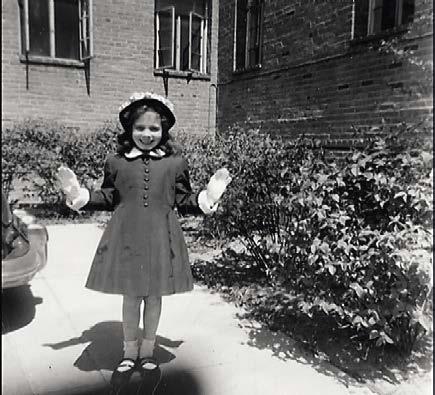

56
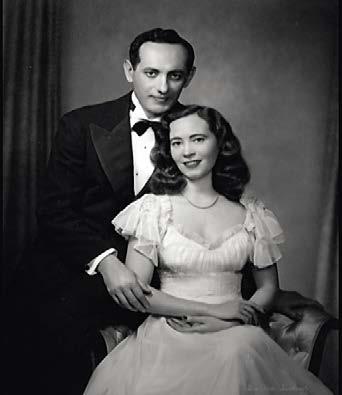


that era. The flip side of all that conformity was a straining at the reins that gave rise to the full flowering of psychoanalysis in America. It became de rigueur and the rage to turn to the headshrinkers to explain society’s ills. We put everyone from veterans to criminals to Marilyn Monroe on the couch, and we were awash in bennies and Valium to get us through.
Barbara Holly Goldin reached the age of twelve in 1958. That was when the “trouble” between mother and daughter really began. Mother sent Barbara to a psychiatric detention center to fix her, to solve her. Barbara was in and out of facilities for the next six years, and Goldin presents us with the receipts: “Acting out, open defiance, sexually provocative behavior, association with undesirable friends, loud and coarse in speech”—all things a good girl shouldn’t be. Barbara went on dates with an older Black man. One psychiatric report states that she appeared to be confused about her sexual
identity and that she described being attracted to other girls. Barbara appeared awkward and ungainly and refused to shave her legs. She stirred up a perfect storm of middle-class, mid-century fears: race, deviant sexuality, failed femininity.
At about the time Barbara ran away and escaped her first confinement, Joseph L. Mankiewicz’s film of Tennessee Williams’s play Suddenly, Last Summer (1959) was released: Kate Hepburn, Monty Clift, and Liz Taylor, with a screenplay by Williams and Gore Vidal—another perfect storm. In the film, a family matriarch (Hepburn) implores a doctor (Clift) to have her niece (Taylor) institutionalized—to have her lobotomized, cutting out of her brain a vicious story that she won’t stop repeating. The offending story tells of an event “last summer” that exposed evidence of the homosexuality of the matriarch’s late son. The film dramatizes the panic surrounding behavior deemed unacceptable, unthinkable, and a mother’s hysterical inability to
live with the ordinary, ungovernable truth.
The truth is important to Goldin and she finds it by riding the waves of subtext, expertly calibrating the tension between what we see and what we hear: happy snapshots from a family album accompanying voice-overs reading the psychologists’ sober reports on Barbara’s condition; girls’ rooms in psychiatric wards, with happy, colorful bedspreads and a scrapbook titled “Joyful Memories,” accompanied by a soundtrack of a patient sobbing and negotiating with a caregiver; exterior shots of a lovely suburban home accompanied by Barbara’s “mother” screaming insults like slut and whore
It was in that home that Barbara and Nan grew up, in “the banality and deadening grip of suburbia.” Barbara was the elder sister by seven years, and Nan idolized her. Nan had a front-row seat to the “trouble” in that home: distant father, hysterical mother, the physical and psychic abuse that Barbara suffered, the effort to keep up appearances,
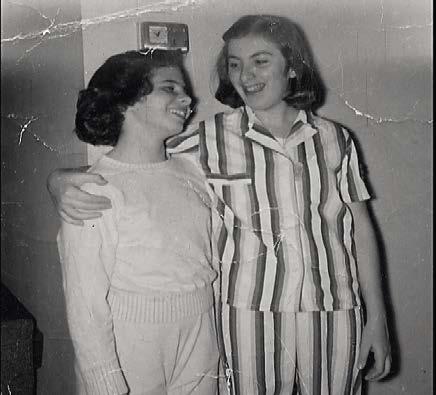


57
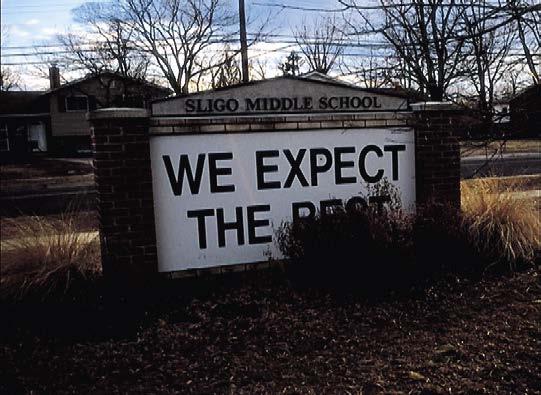


hiding from the neighbors what was really going on. Goldin reads in voice-over from another doctor’s report: “There is much evidence that it is not Miss Goldin who should be in the hospital, it’s Mrs. Goldin.”
The sibyls were prophetesses in ancient Greece, oracles of fate. They were the voices that revealed the subtext of a life. Barbara tells Nan that if Nan stays in that home, the psychiatrists say she will end up like her sister.
Barbara died by suicide in 1965, at the age of eighteen. Goldin revisits the scene of her death, framing the footage from Barbara’s perspective: on train tracks, a speeding Amtrak fast approaching, then roaring by. We hear a contemporaneous report of the suicide read aloud, but the images we see were shot recently. We imagine the historical event with the voice-over as our guide, but we also imagine Goldin’s presence at that site, what it must
feel like for her. We see a shot of a figure walking through trees, presumably near the train tracks. Is that Nan? She is there, but not necessarily behind the camera; she is not there alone. She’s there with us. We witness her witnessing.
Barbara’s suicide was a defining event in Nan’s life and prompted her to escape that home. The remainder of Sisters Saints Sibyls describes her trajectory in the aftermath—how the events in that suburban crucible affected her life. Nan rebelled, ran away, and found her own tribe of fellow rebels; “I wanna be evil, I wanna spit tacks.” We see familiar characters we know from Nan’s life: David, Brian, Cookie. She shows us the banality and deadening grip of addiction and her own journey of confinement in rehab. From the outside, Nan’s hospital looks like privilege, like a stately English manor, a stark contrast to the bleak bureaucratic facilities where Barbara was treated. But on the inside we
see Nan’s self-inflicted wounds and the bars on the windows, an interior reality that the neighbors don’t see.
So much of Goldin’s work is a kind of archaeology, reconstructing a historical milieu for us. We both see and imagine her in those spaces, at that time, not as documentarian but as participant. As a filmmaker, this is doubly so—not only is she a participant in historical events but we see her in the film examining those places in the present, in “reel” time, with us. Seeing Nan change and age through the film emphasizes what Barbara missed out on; she didn’t get the chance to mature, to grow older and wiser, to realize a life for herself. Nan did, and Barbara missed that too. But with living comes not only maturity, joy, ecstasy, and change but loss, pain, addiction. Trouble. It reminds us that living is brave, no matter how it turns out.
For the Gagosian Open presentation of Sisters
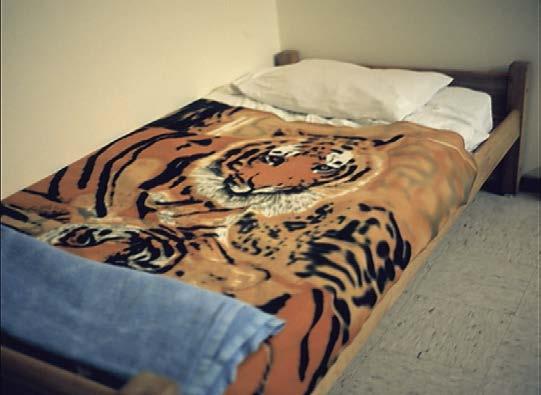


58

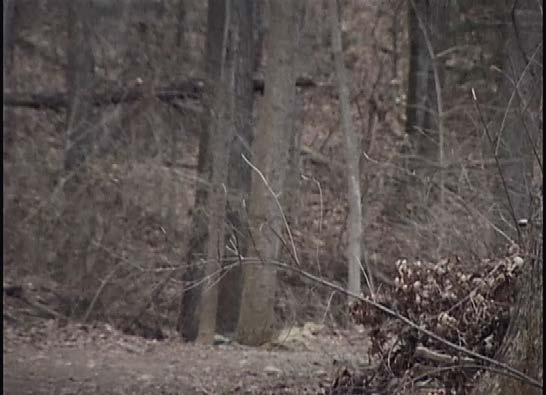

Saints Sibyls , Goldin chose the site of the Welsh Chapel, a deconsecrated church in the center of Soho, London. A triptych in a church: a natural home. Goldin’s first presentation of the film was in 2004, in the chapel of the Hôpital de la Salpêtrière, Paris, during the Festival d’automne. Salpêtrière was founded in 1656 as an asylum for poor women struggling with mental illness. In his book Madness and Civilization Michel Foucault describes the seventeenth-century origins of the “philanthropic” confining of “madness” to hospitals such as this one: “From the very start, one thing is clear: the Hôpital General is not a medical establishment. It is, rather, a sort of semijudicial structure, an administrative entity which, along with the already constituted powers, and outside of the courts, decides, judges, and executes. . . . A quasi-absolute sovereignty, jurisdiction without appeal, a writ of execution against which nothing can prevail.”
The hôpital was an institution designed not to treat and care for women but to confine, discipline, and punish them. Salpêtrière is also, of course, where Foucault himself died young, in 1984, from complications of aids, the disease so intimately entwined with the love that dare not speak its name. A disease surrounded by the silence of shame. Goldin’s life work has always been about addressing shame, diffusing it, renouncing it, refusing it. Attacking the powers that try to shame. Showing that shaming itself is shameful.
Goldin says that as a teen she suffered from crippling shyness: “My sister’s suicide silenced me.” Photography was the outlet that allowed her to “walk through fear—taking a picture was kind-of protective.” It was through photographing her friends that she connected with them, and it’s through her photographs that she connects with us.
Sisters Saints Sibyls reminds us how lucky we
are to be alive in the time of Nan Goldin. She is an archivist, constantly updating and revising her works, adding to them, altering them, and with each new work we feel we’ve been with her for decades. “Nan” is an artist whose work is so raw and honest that we feel we know her like a friend. Goldin is the journeyman, the maker of the experiences that allow us to know Nan. We imagine how Nan feels because we read it on her face, and we can read it on her face because Goldin has so skillfully arranged for us to do so. It’s an oeuvre of extraordinary generosity and empathy, though neither Nan nor Goldin wears her heart on her sleeve.
Sisters Saints Sibyls is a film as intimate as a diary, as deep as an archive, as hopeful as a prayer.
How do you make a life-affirming film about suicide, abuse, addiction, and constraint?
You look at the truth. Life ain’t pretty, but it is beautiful.


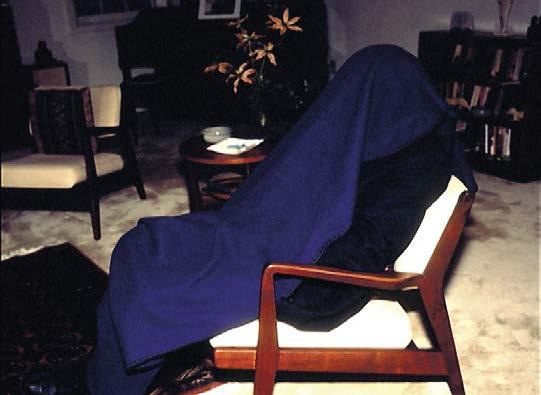
59
Throughout:
2004–22, three-channel video, 35 minutes, 17 seconds ©
Nan Goldin, Sisters Saints Sibyls ,
Nan Goldin

WAYNE MCGREGOR
Alice Godwin speaks with the choreographer about his inspirations from literature, visual art, music, and more.
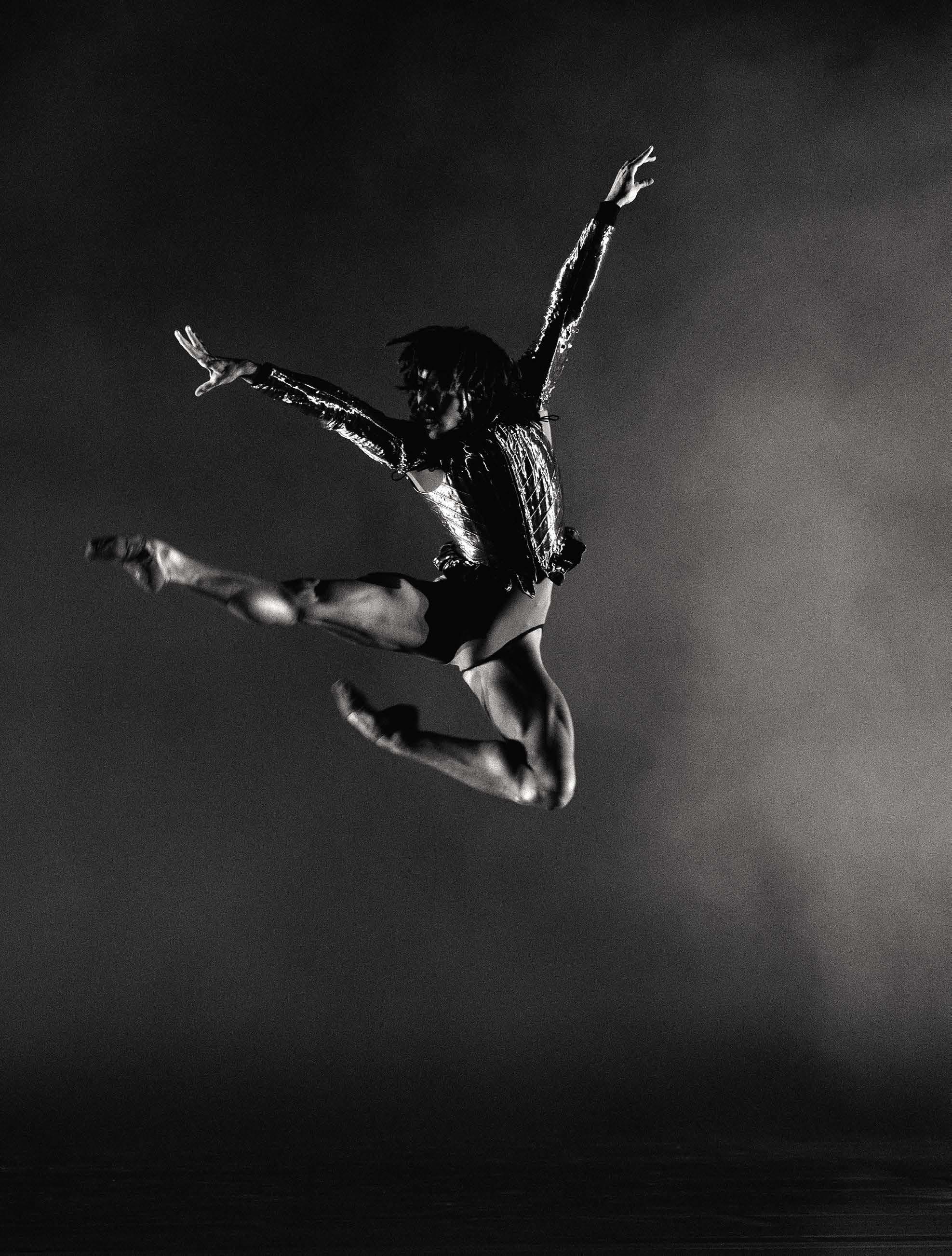
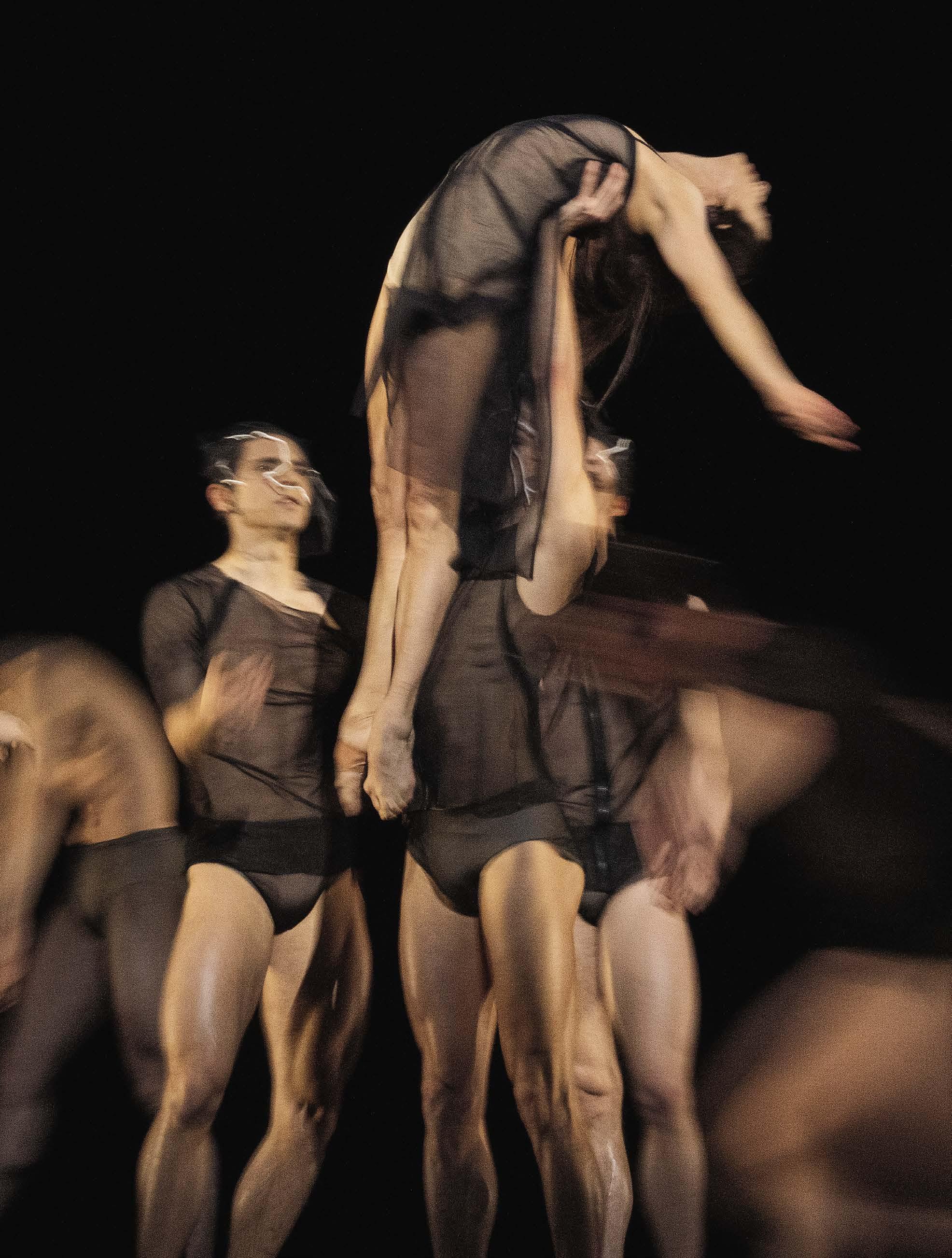
Over the past three decades, the British choreographer Wayne McGregor has dazzled audiences with a restless curiosity about the potential of the moving body. His dances explore the possibilities of human creativity, from Dante’s Divine Comedy to artificial intelligence. This spring, the Royal Ballet choreographer brought his acclaimed performance Woolf Works to the United States. In preparation for the US debut of the production, which is inspired by the writings of Virginia Woolf, Alice Godwin talks with McGregor about the enduring legacy of the British staging, the challenge of translating great literary works for the theater, and his vital collaborations with visual artists, from Carmen Herrera and Edmund de Waal to Tacita Dean.
ALICE GODWIN Woolf Works is making its US debut with the American Ballet Theatre at the Segerstrom Center for the Arts, Costa Mesa, California, in April and will be traveling to New York’s Metropolitan Opera House in June. I saw the production when it premiered at the Royal Opera House in London in 2015 and I was completely blown away.
WAYNE MCGREGOR It’s crazy that it’s almost a decade old.
AG It was such a tremendous event at the time, winning a Laurence Olivier Award and a Critics’ Circle National Dance Award. I’m curious what effect the production had on your career?
WMG I don’t really think about it in relation to myself, but to where I thought audiences could go. I made a piece at Covent Garden called Raven Girl [2013], which was my first “narrative” piece that didn’t follow the conventions of a traditional story ballet, with the brilliant author Audrey Niffenegger. Without Raven Girl , audiences wouldn’t have come on the journey of Woolf Works , which I think gave them confidence to engage with works of great literary significance in an impressionistic, emotional way rather than a direct translation.
More recently we’ve had The Dante Project [2021], inspired by Dante Alighieri’s poem The Divine Comedy [c. 1308–21] and maddaddam [2022], from Margaret Atwood’s trilogy of novels [2003–13].
AG Margaret Atwood and Virginia Woolf are both such incredible female writers who focus on female experience. I wonder if you considered that when devising your choreography?
WMG Of my four “narrative” ballets, two of the authors are alive and two are dead. That has a significance, but it’s not gender based. When I’m in the studio, I coauthor with other artists so it’s not simply the male gaze. There’s often this idea that dancers are just pieces of meat who are told by a choreographer to move and behave in a certain way, but that’s just not my experience, especially when it comes to the extraordinary women I’ve worked with.
In terms of the writing, I always think, What is the writing that speaks to me most? What is the energy or feeling that the writing gives me? The way Woolf writes is so multiple. That kind of refracted writing is rhythmic, it’s like music. I also like that the reader has to do some work and sometimes go back over a sentence or a paragraph to find its true meaning. That kind of approach is really analogous with dance. Dance is ephemeral, and all of the imprint happens in that first moment. When I’m watching dance, I want to go back and dive deeper because you can’t possibly get all of those inputs in one go. I tend to be attracted to writers who offer that as an opportunity, like Margaret Atwood. Apart from the incredible vividness of her speculative fiction, she is essentially an activist. The reason she calls it speculative fiction and not science fiction is because these are things that are actually happening now. She’s presenting them to us, saying, “You need to interact with this material. You need to make some conscious decisions about how you feel about it.” That’s part of the power of her writing, and I find that in Woolf as well.
AG In an interview with yourself and Atwood, she said she wanted to be surprised and not to know too much about the production beforehand. She seemed so wonderfully open and collaborative. I wonder what you think Virginia Woolf would have made of Woolf Works ?
WMG Honestly, when it’s a dead author it’s slightly easier, though of course we had the full support of the Charleston Trust and the Virginia Woolf Society. With Margaret Atwood it was very different. I’m not easily intimidated, but she is fierce. She has an amazing sense of humor, though, and she’s very practical about how her work is translated into other media. I think she’s interested to see what your lens is on her work. She was clearly moved at the premiere and I felt that she saw much more than anybody else because she has such intimate knowledge of those worlds, and that was really moving. I think it’s important with literary works for the stage that there’s a richness you can’t get from reading,
that you have to experience through the body. And that’s why dance can be really powerful because it creates spaces where verbal or textual meaning gives way to the gut sense of something.
AG I’m in awe of all the artists you’ve worked with over the years, like Carmen Herrera, Edmund de Waal, Julian Opie, Olafur Eliasson, and Tacita Dean, to name a few. How do you view the contribution of an artist and what do you admire about the way they work?
WMG For me, the most important thing about working with an artist is having time with them to develop our process. I try to engage with artists I love and whose work I respect, and think, How might we work together? The first time I went to Edmund de Waal’s studio he handed me a piece of porcelain and said, “Just warm that up in your hand.” It was such a physical experience, and a brilliant thing to do, because it allowed us to talk about this thing that we share, which is how we work with our bodies.
With Carmen, I visited her studio a few times and I was just fascinated. For me, her work is about what’s not there, and where the pressure points are on a page or a sculpture. I wondered how that mind would design something for the stage. In a way, when I’m working with artists, I’m curating the experience of the stage, because the environment is one of the biggest imprints when you watch a production. It gives you a visual hit even before the music starts.
I’d always been interested in the idea of how you can recognize a body, and Julian Opie does that really beautifully with his minimalist figures, which are still recognizable. We built this instrument where we could play with his figures in real time for the production Infra [2008].
It’s not always easy working with an artist. Someone like Tacita Dean, who designed the stage and costumes for The Dante Project , is used to working on her own, for example. This is an artist who spends hours and hours and hours in the studio. What a gift is that? Not only the hours that it took to actually make the works, but the time she invested in being at the theater.
AG Each of those artists is so different, it strikes me how exciting that open window of possibility must be.
WMG It’s so true. When I was working with Tauba Auerbach, we started in one direction and then all of a sudden she made these incredible light glyphs. That kind of change keeps you alert and awake and surprised.
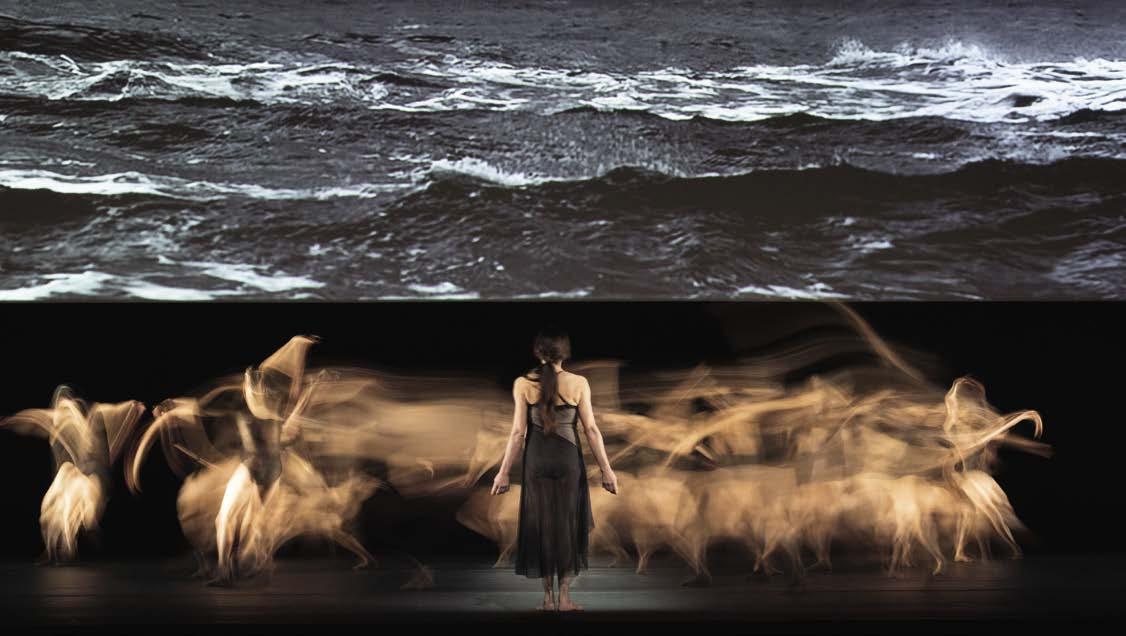
63
Previous spread: Joseph Sissens in Wayne McGregor’s Woolf Works, 2015, The Royal Ballet, London. Photo: © 2023 Asya Verzhbinsky
This spread: Alessandra Ferri and artists of The Royal Ballet in Wayne McGregor’s Woolf Works, 2015, The Royal Ballet, London. Photo: © 2023 Asya Verzhbinsky
AG Collaboration comes so naturally to you. For Woolf Works you worked with the wonderful composer Max Richter, whom you’ve known for years.
WMG The first time I met Max was in the 1990s, when he was part of a group called Piano Circus. I went to a brilliant concert at the Union Chapel in London a few years later to persuade him to write Infra
AG Do you recall what the process was for Woolf Works ?
WMG Well, we had nothing to start with, but we knew we were looking at a triptych structure of Mrs. Dalloway [1925], Orlando [1928], and The Waves [1931]. Typically Max built these little atoms of music, which he sent over and I might then use as I worked in the studio. I would also go to his studio and listen. I remember that I went over to hear some material for Orlando , which we knew would be a very kind of chopped-up, fractured narrative, and musically electronic and orchestral. At the end of it, I asked, as I always do because Max is superquiet and reflective, “What else have you got?” He said, “It’s not really anything.” And it was the whole of The Waves , beautifully rendered. We made some very small changes to it, like I wanted to include Woolf’s suicide note, recorded by Gillian Anderson. For me, what’s really extraordinary about music is the emotional rush. It’s like an immediate line through my body.
AG I still listen to the score, particularly The Waves and Mrs. Dalloway. They’re so heartbreaking, they really speak to the humanity in Woolf’s writing.
WMG This is another thing about Max, he’s a great reader and because he’s so immersed in the novels, the words can’t help but emanate through him. There’s some way in which he channels this crystalclear beauty.
AG I also wanted to ask you about your work with technology and artificial intelligence, which you’ve warmly embraced through your career. Woolf is this achingly human writer and I’m curious how you feel these two elements work together? I know you’re a firm believer in their intertwinedness. For visual artists, I think AI is something whose potential we’re still just beginning to discover.
WMG It’s interesting, my experience has often been with the person who writes the code. So my experience is actually a human experience—it comes from human creativity and is an extension of humanity. I’ve talked a lot about this idea of bodies having a physical signature. For me to build an AI that
recognizes my physical signature, I have to arm it in a way that makes me go back to the central tenets of dance-making itself. So rather than AI taking over your expertise, I think what it does is to make you drill down and learn more, just as technological imaging can help you understand what your body really does. I think there’s an absolute synergy between the two things. Body, time, and space are not separate. They’re totally connected. AG It leads me to think about the work you’re doing in the metaverse with Deepstaria [2024], which will have its world premiere at the Montpellier Danse festival this summer. It really feeds into this idea of exploring the body through the medium of technology.
WMG I’m working with a brilliant conceptual artist called Tobias Gremmler, and he sent me something the other day—a little hand dance that the AI takes and converts into an extraordinary jellyfishlike physicality. It takes motion from one idea and translates it into something else. I’m very interested in this idea of our own motion data being used to compose in different ways. So I guess the central tenet of Deepstaria is, rather than building a work for stage that’s then translated into a digital medium or the metaverse, how can you conceptualize these tentacles across various platforms? One of our questions has been, How might you make something that’s vividly rendered in one domain and not another? So one could see a hyperreal version of the world in the metaverse and imprint that onto the empty stage, or vice versa. And then there’s the space in-between—what happens between shows, or between objects? It’s the spaces in between that we’re trying to weave together.
AG Those spaces are so pertinent to the way Woolf writes, filled with transformation and possibility.
WMG I have a beautiful photograph of Virginia Woolf’s writing desk, which I love because she’s away but her writing is still with her. The creative process isn’t simply about going into the studio and making something and then the next day making something else. It’s as much about the transition between the two things that you’re making.
AG I imagine it’s the same with dance—just because you’re not in the studio doesn’t mean you’re not thinking and moving and playing with ideas.
WMG Exactly.
AG What also strikes me in relation to the US premiere of Woolf Works is that Woolf is a formative English writer, though she speaks to the

fundamental human experience. I’m curious how you feel a US audience will respond?
WMG I think that audiences are able to connect with Woolf Works on a deep emotional level without knowing the stories. You instinctively understand something of the “granite and rainbow” of Virginia Woolf’s world. I think there are enough human anchors to sweep you along. The body really does carry most of the meaning, especially when you have incredible performers like Alessandra Ferri or Natalia Osipova. You can’t help but be awestruck.
AG Alessandra Ferri has been so integral to Woolf Works . There’s a wonderful synergy between Woolf and Ferri, who at the time of the London premiere was the same age that Virginia was when she committed suicide. The two women had this soulful connection somehow. You sought Ferri out on purpose—was this because you wanted an older dancer who could express the complexities of life?
WMG It was, partly. When I saw Alessandra in the early 2000s, I was blown away by her acting. It’s very difficult to dance at such a high level and have those kind of acting chops. She had stopped dancing by the time I asked her, so she was coming out of retirement. She taught me so much about how you can inflect and develop a role that can cross the orchestra pit and touch somebody in the back of the auditorium. One of her great gifts is eloquence in silence and stillness. I also wanted an older dancer because there are hardly any roles for older dancers other than character roles, which seems criminal to me given that these incredible women are still performing at the height of their capabilities. It’s analogous with older actors in Hollywood. We carry our body with us forever, until we don’t. And that body, that palimpsest, is something so beautiful and evocative—I want to see that. I met Carmen Herrera when she was 103 years-old and I’d never seen through skin, I’d never seen the vivacity of the brain, and that was really profound. I want to see that kind of range in dance.
AG In the past we’ve seen this gap of time between the early years of a female artist’s career and later in life, as if the role of wife or mother casts a veil of invisibility. But women don’t stop being artists in those intervening years.
WMG The amazing thing about Carmen for me is that she just kept working. She couldn’t not. And that’s the power of artmaking. We want that in dance.
AG I so agree.
This page:
Artists of The Royal Ballet in Wayne McGregor’s Untitled , 2023, The Royal Ballet, London. Photo: © 2023 Alice Pennefather
Opposite: Marcelino Sambé, Calvin Richardson, and Ryoichi Hirano in Wayne McGregor’s The Dante Project , 2021, The Royal Ballet, London. Photo: Andrej Uspenski © 2021 Royal Opera House, London
Wayne McGregor’s Woolf Works , American Ballet Theatre, The Metropolitan Opera House, New York, June 25–29, 2024
64

Essence Harden, curator at Los Angeles’s California African American Museum and cocurator of next year’s Made in LA exhibition at the Hammer Museum, visited Lauren Halsey in her LA studio as the artist prepared for an exhibition in Paris and the premiere of her installation at the 60th Venice Biennale this summer.


Utopia is not prescriptive; it renders potential blueprints of a world not quite here, a horizon of possibility, not a fixed schema. It is productive to think about utopia as flux, a temporal disorganization, as a moment when the here and the now is transcended by a then and a there that could be and indeed should be.
—José Esteban Muñoz, Cruising Utopia: The Then and There of Queer Futurity, 2009
Lauren Halsey is the funkified architect of South Central. An engineer of space and archivist of labor, Halsey is a conduit of Black geography. She assesses the geographical as both a marker of place and a maker of time, interrupting impositions (singularity, linearity, and the physical) to make way for a confluence of substances. She is a funkstress, after all, a mover and creator of liberated aesthetics, sounds, and hues, forging landscapes that teeter near (or have we already had?) liftoff.
Halsey’s drive to sustain/remember and build/ flourish requires a bending of time, which holds looking back/forward as a singular enterprise. Here, José Esteban Muñoz’s investment in utopia as a type of study—a means to re/create, re/form, re/figure, time and place as a liberatory strategy—finds a home in Halsey’s sculptures and installations. South Central becomes the site of transcendence, neither fantasy nor escape; the utopic here is a memory and promise of what was/is/will be.
On the occasion of her first solo exhibition with Gagosian, in Paris, Halsey and I chatted about materials, the archive, family, and Los Angeles, her generational home.
—Essence Harden
ESSENCE HARDEN What was the impetus for this body of work? You mentioned it being particularly personal, so when presented with the space and the date, what conceptually was on your mind?
LAUREN HALSEY On a sort of spiritual level, I wanted to spend time creating artworks that would fulfill me, especially energetically. As an exercise, building the foil-work compositions brings me joy and a bit of a high, at times, because I’m composing with my favorite ephemera and material culture, sourced hyperlocally as well as from my personal archives. As the work builds, everything gets conflated with Funk aesthetics and there are moments when composing or imagining that I reach my level, a sort of Funk nirvana. Over time, as the foil works started to develop, I realized thematically they would be about eras in the neighborhood that had profound effects on me, ranging from the mundane to celebration to death, on both a community and a familial level. As for the engravings, they’re scenes of quotidian Black and brown life in a nonlinear context. Their chronology ranges from the 1920s to now. Some of it’s political, some of it not . . . just us being.
EH Can you walk us through some of the pieces?
LH There are eight protruded engravings and eight foil works in the show. The foil works are maximal, technicolor assemblages that are imbued with reality but conflated with aspirational fantasies of my neighborhood. Some of the works function as eulogies, others as party, others as documentation of a space and its poetics.
slo but we sho: everybody is going to make it this time depicts a scene in my grandmother’s home with my aunt Fawn, while also referencing the block quite literally: Freddie’s roosters, my inherited play,
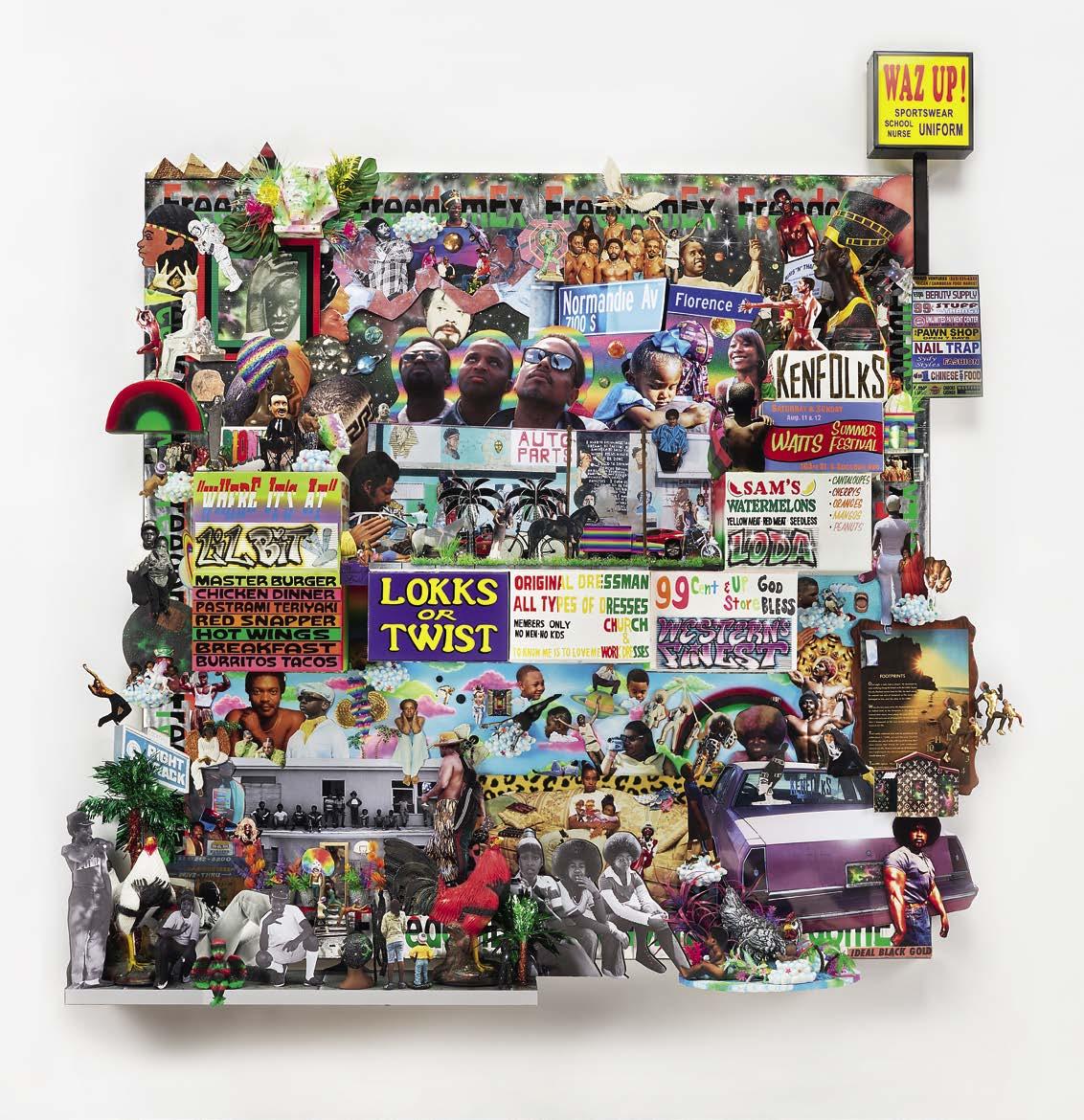
69
Previous spread: Lauren Halsey. Photo: Russell Hamilton
This page and opposite: Lauren Halsey, Untitled , 2024, mixed media on foilinsulated foam and wood, 96 × 96 inches (243.8 × 243.8 cm). Photo: Allen Chen/SLH Studio
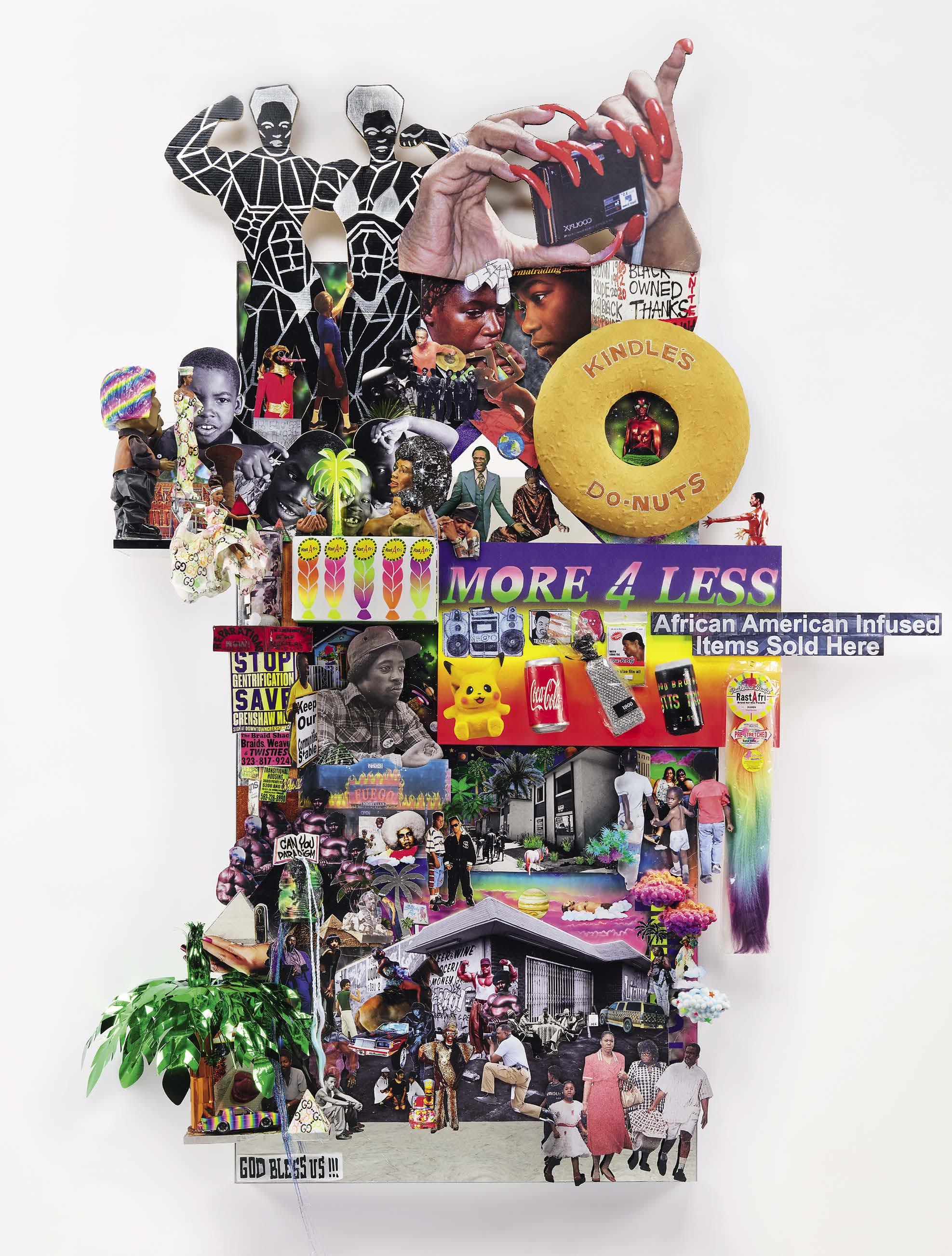
I’M ADDING TO MY ARCHIVE OF MATERIAL EVERY DAY, WHETHER I’M COMPOSING WITH MATERIALS OR NOT. I’M ALWAYS BUYING THINGS THAT I KNOW MUST BE PRESERVED, ESPECIALLY THE HANDMADE.
–Lauren Halsey
grandmother Alberta’s living room, the quintessential footprints poem, vernacular signage: waz up!, where its at?, et cetera.
an ode to margaret prescod and the black coalition fighting back serial murders refers to the “Grim Sleeper,” who hunted and murdered Black women in South Central Los Angeles from the mid-1980s until he was caught, in 2010. I lived on the same street as him and attended middle and high school with one of the victims. This artwork is a nod to not only that era but many, to this very day/moment, wherein Black women are moving through very volatile and evil contexts without support on a systemic level. Somehow we manage to still make it over the hump. an ode to margaret prescod and the black coalition fighting back serial murders includes women who were his victims and also women I view as our pillars, defending and providing for Black women in their work every single day: Margaret Prescod, the Sisters of Watts, et cetera.
we want a full and complete freedom (high voltage Funk) is a nonlinear sort of experimental still life of my walks and bus rides up and down main avenues and boulevards in South Central and on the Eastside of South Central. Because I rode the same buses for over a decade I was able to document elaborately how small businesses transformed themselves over time aesthetically. Some included are Deryl with the Curl Hand Carwash, Gwen’s Ice Cream, Charlie’s Strip Club, MasterBurger, and a host of mini markets. It also includes Okeneus the Love God from Team Knowledge God, a group of South Central LA superheroes, who would wheatpaste these really amazing ’n’ dense staged photos of himself doing things in a postapocalyptic South Central: eating strawberries, flying, dancing, et cetera. I was obsessed with him for a very long time. EH I want to think about this term “assemblage” and the way these works hold memory, sensation, feeling, and eulogy. I’m quite obsessed with assemblage as strategy and think LA’s relationship to the term, post–Watts rebellion, was in extending it toward a socioracial geography in the “cast away” material. And so much of your work carries that legacy—the way you think through these various sites, of the archive and of archiving, use value, and the state of the object. How has the impact and your relationship to assemblage developed? How do you see yourself fitting into that legacy?
LH I’ve always used collage as a medium and knew that eventually I wanted to transcend the image, or the representation of an image, by composing with the actual object, e.g., instead of carving a pack of Coco Egypt incense or digitally collaging a photo of the Coco Egypt pack, the foil works and assemblage process allow for working with ephemera and neighborhood/familial/personal archives in a more dimensional context. I can use the actual Coco Egypt pack itself. I know a lot of folks worked with materials that came out of the uprisings, but my materials aren’t inherited from streetscapes (only the flyers/signs I collect). My gathering process is very different and sort of costly, but I see it as recycling money back to my inspirations and a collective community energy. I buy a lot from small businesses and vendors in the neighborhood until I have enough to build a bit of a vocabulary to begin a particular work. For example, I have an idea for a foil work that can’t start until I buy all sixty stuffed animals from a street vendor up the street.
EH And so assemblage here works as an imbuing and spirit? One that’s sustained not from the physical remnants, necessarily, but in the substance of what remains?
LH You hit the nail on the head! Yes, exactly this. I’m adding to my archive of material every day, whether I’m composing with materials or not. I’m always buying things that I know must be preserved, especially the handmade. I hope to donate my archive to the Southern California Library on Vermont Avenue one day.
EH Can you speak to the function of architecture for you as something that is, on the one hand, the built environment, and on the other, a conceptual space from which to create?
LH I had a quick chat with the artist and architect Amanda Williams yesterday morning. She was a California College of the Arts professor while I was there in 2007–08. Unfortunately she wasn’t my professor, but I worked out of the studio parallel to the one where she taught. I wanted to be her, at the time, this fierce Black woman architect. I didn’t finish, and my Black male professor encouraged me not to; he said architecture wasn’t for me. I’m over it now but at the time it broke me.
Anyway, we were on a really quick Zoom yesterday morning, and she spoke about architecture as being our medium and many other things, and I agree. The discipline couldn’t hold me when I was in school. I don’t even consider the discipline or burden myself with it. I quickly knew that my interest in building tangible and ambitious Black space had to be articulated across sooooo many different modalities if I was going to figure it out without the discipline on my side. In 2014, I knew the gypsum carvings were symbolic of walls and literally would one day become walls to compose space with (once I had the support and money to do it). I see the protrusion engravings in this show the same way. Yes, they’re artworks on a nice wood panel hanging from cleats, but actually the conceit of me doing them is for the exercise of figuring out protrusion engravings on a technical level because they will become the actual cladding for twenty-foot walls in the architecture I’m presenting next year.
EH I’m interested in hearing more about the relationship between the foil and the engraving works. How do you understand them compositionally together?
LH I see the two typologies functioning a bit differently. The foil works are not only tactile but they also describe our palette and, specifically, South Central LA painting sensibilities: our pastel businesses, Day-Glo signage, dreamy gradients. Miniature cardboard businesses also protrude from some of the works; some are personal landmarks and some are ideological community spaces that existed before my time.
As for the engravings, they’re literally wall works whose content describes our records. They’re less fantastical and aspirational at times. They represent symbols, flyers, people, businesses, et cetera, in the archive I intend to build walls with. I thought it would possibly be nice to juxtapose a room of the tangible and technicolor with monochrome representations of these places. But the main thing is, I’m thinking about them as wall works quite literally and wanted to introduce the Western Ave project in this context by exhibiting the cladding (wall works) as artworks.
EH You’ve always known the overall vision for your work, and now you’re in this moment where there’s a different relationship to scale and possibility. Can you talk more specifically about what that vision is?
LH Total freedom to be and design/build/make at a scale without intense institutional compromise, internationally and at home.
71
mixed
insulated foam and wood, 96 × 48 inches (243.8 × 121.9 cm).
Allen Chen/SLH Studio
©
Opposite: Lauren Halsey, Untitled ,
2024,
media on foil-
Photo:
Artwork
Lauren Halsey
FASHION AND ART PART 18: MONDRIAN’S DRESS
Nancy J. Troy, Victoria and Roger Sant Professor in Art Emerita at Stanford University, recently published Mondrian’s Dress: Yves Saint Laurent, Piet Mondrian, and Pop Art (MIT Press) with coauthor Ann Marguerite Tartsinis. The book examines the confluence of modern art and fashion, with a particular interest in consumerism, circulation, and the emergence of Pop art. The Quarterly ’s Derek Blasberg met with Troy to discuss.
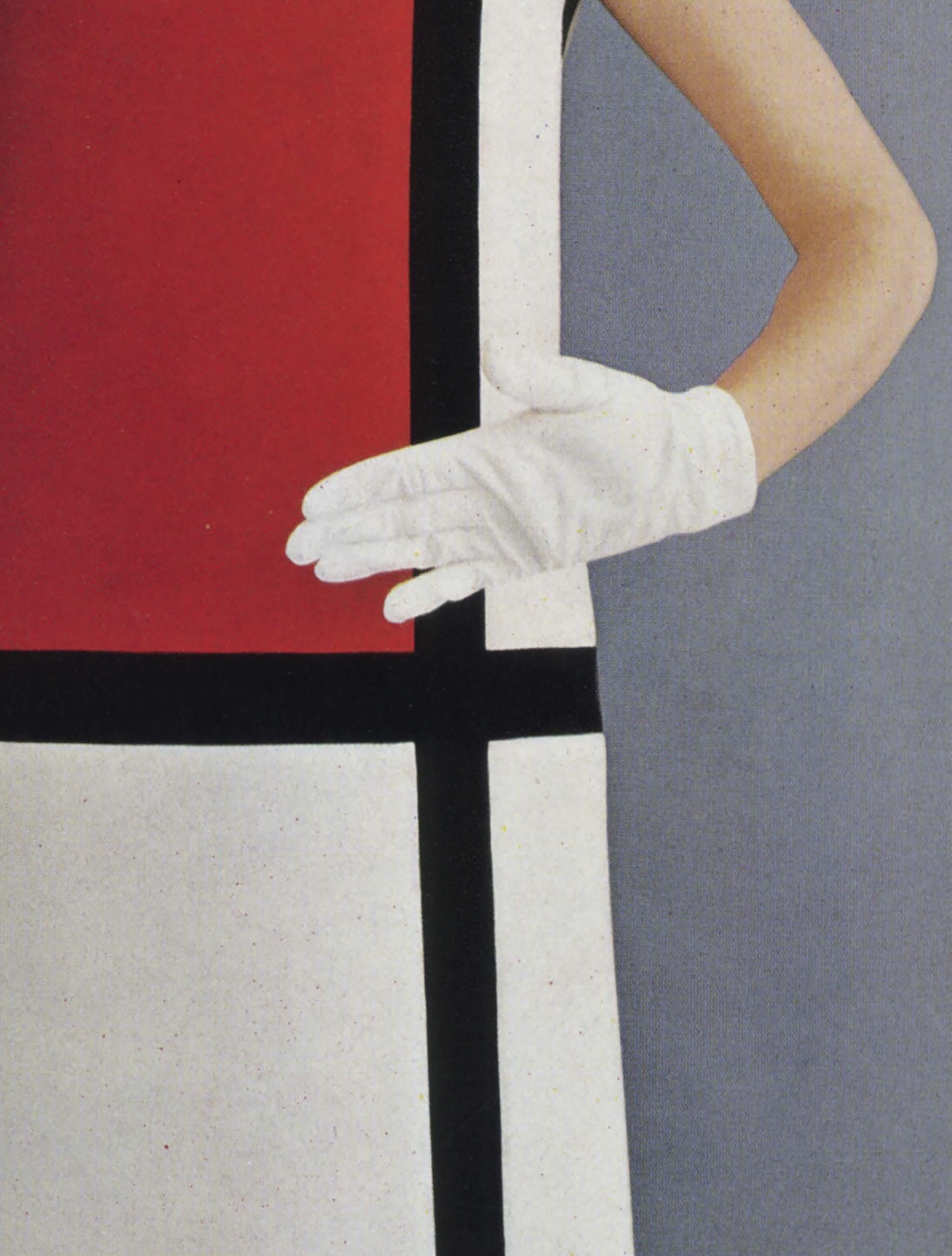

DEREK BLASBERG: When I’ve spoken to others for this series, I slide this question in at the end, after they’ve warmed up a bit. But since you’ve written entire books on the subject, I thought we’d start here: Do you think fashion can ever be art? Or, when can art be fashion?
NANCY J. TROY: Well, one of the things I find interesting is, rather than just assessing fashion and art on their output—an artistic form or a beautiful garment—and asking if they intersect in some way, I’d prefer to look at how those two worlds can revolve around the question of the original and the reproduction, or a series of reproductions. Both artists and designers must deal with that question.
DB: I’ve found fashion people are reluctant to claim art status because it seems like such a lofty aesthetic mountain to climb, while art people sometimes want to claim that only some designers have reached art status, like Alexander McQueen or Yves Saint Laurent. But the idea of reproduction as the medium is a new response to this question.
NJT: It may come from my background in early-twentieth-century art, where the concept of the original and the reproduction, and their relationship to each other, was paramount. Many artists were dealing with the machine as subject matter—people like Marcel Duchamp, who was making convergences between works of art and mass-produced objects. That was similar to what was happening in the world of couture at the time, where there was a kind of convergence of copying in the world of ready-to-wear that really put couturiers on the defensive. The readymade, a mass-produced object that Duchamp signed as an artwork, is very similar, I felt, to a couture dress that was designed to be copied. Many couturiers used titles, names, women’s names, or flowers or whatever associations and they signed their originals
Previous spread: Ena Naunton, “MONDRIAN,” The Miami Herald Part II (detail), October 31, 1965, 19E. © 1965 McClatchy. All rights reserved. Used under license.

and some of their copies too.
DB: The first half of the twentieth century is an interesting part of this conversation because that was a time when it seemed less taboo to mix it all up. You have Coco Chanel’s relationship with Jean Cocteau, for example, and Pablo Picasso at the Ballets Russes.

NJT: Absolutely. We’ve realized that since the early twentieth century, since Cubism, artists were incorporating into their work aspects of pop culture—newspaper clippings or what have you— and then with Dada and Surrealism the boundaries of what in the nineteenth century had been considered a finished work of art, one that could be considered ready to be shown in public, changed dramatically. Instead of a look of finish or unity, difference and fragmentation became not just more acceptable but actually sought after as an expressive mode. This greatly changed how progressive artists thought about what they were creating, and certainly many of them were really interested in fashion. They were getting involved with advertising; Kurt Schwitters, for example, included women in advertisements in his Merz images. Perhaps that’s a really art-historical answer—
DB: That’s what we’re here for! Give us academia.
NJT: In my own work, realizing the degree to which fashion penetrated the museum was massive. If the museum is the bastion of what defines art as fine art, which for me is one way to think about it, fashion designers were posing models in museums. At the same time, artists were making textiles and clothing designs. I think this idea that these worlds are separate is a blindness of modernism.
DB: Nancy, how did you get into this academic field? Where are you from?
NJT: I’m from New York City. I grew up on the East Side in a room I shared with my younger sister. There were two beds in that room. Over her bed, my mother put a reproduction of a [Joan] Miró and over mine was a reproduction of a [Piet] Mondrian.
DB: Is that true?
NJT: That is really true! It’s very crazy, because you once asked me, “What was the first Mondrian you saw?” And that was it.
DB: Did your sister go into the study of Miró?
NJT: Not so much. She became a lawyer and now she’s a therapist.
DB: But from that bed on, you were on the Mondrian track.
NJT: Yes, I was on a very straight and narrow path.
DB: You and I met at the Costume Institute at the Met at a lecture about your book Mondrian’s Dress , which came out this year. When did you start working on the book?
NJT: A long time ago! That book began as part of a chapter in a prior book, The Afterlife of Piet Mondrian , which was about what happened to Mondrian after he died, in 1944. How did his work circulate in the world? I first talked about those dresses then, but I recognized that there was a lot more to be said. That book was published in 2013, so it took me about ten years.
DB: Your new book details Mondrian’s posthumous existence in the fashion world via a series of dresses designed by Yves Saint Laurent in 1965. One thing I found fascinating and surprising was that Saint Laurent didn’t even know who Mondrian was! What did you find most surprising when researching the book?
NJT: I was very surprised by that as well! [Laughter ] When I was in Paris working on the book, I asked Pierre Bergé if Saint Laurent had seen a Mondrian before making the dress. And the answer was no, but he’d seen reproductions in a book. And that, for an art historian, was shocking. Wait, he hadn’t
75
Opposite: View of Yves Saint Laurent and Pierre Bergé’s library, 55 rue de Babylone, Paris, with Piet Mondrian, Composition I , 1920. Photo: Ivan Terestchenko
This page, left: Piet Mondrian, Composition with Blue, Red, Yellow, and Black , 1922. Photo: Fondation Pierre Bergé –Yves Saint Laurent, Paris. © Christie’s France
Above: Rogi André, Piet Mondrian , 1937. Digital Image © CNAC/MNAM, Dist. RMN-Grand Palais/Art Resource, New York
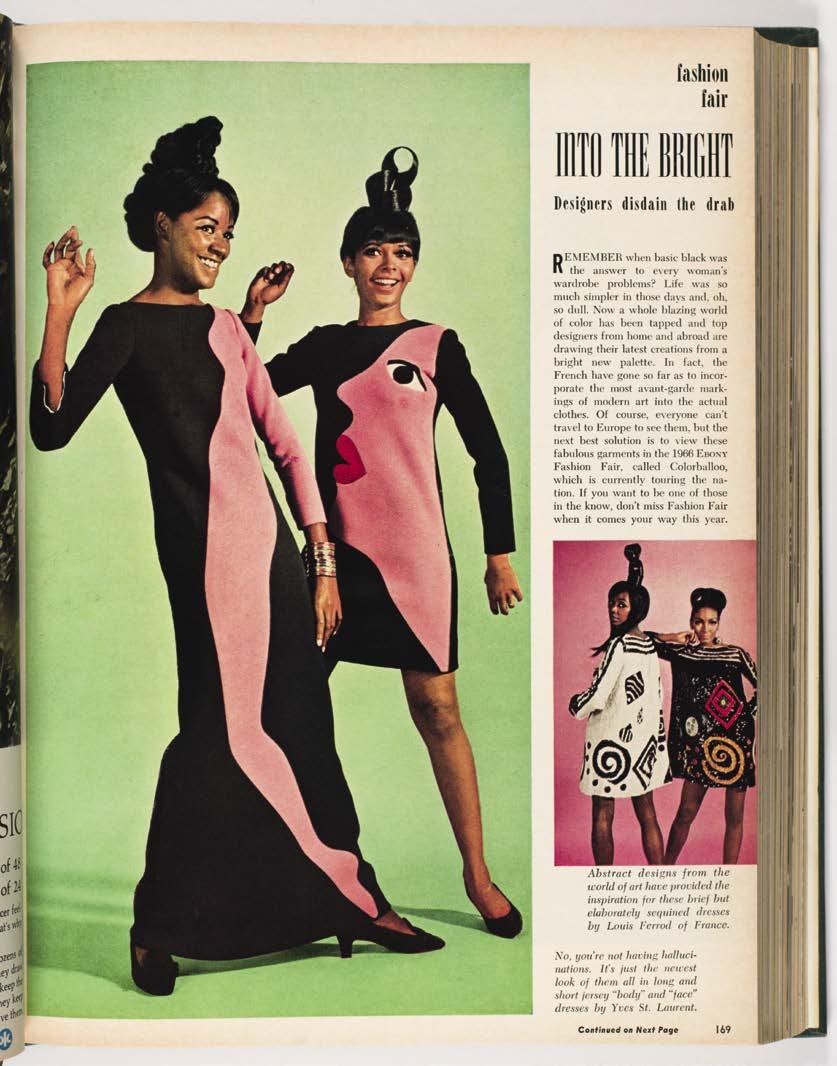
seen an original? He started in the world of the copy?
DB: When did you ask Bergé that?
NJT: Around 2015. He died in 2017. It was very funny; the first time I went to see him, I of course asked myself how I was going to impress him, which was fairly ridiculous since there wasn’t a category in which I could do that. But I brought him a copy of a book that I’d written earlier about fashion, Couture Culture [2003]. It’s primarily about Paul Poiret, an early-twentiethcentury designer who was paralleling the Ballets Russes and was intrigued by the Wiener Werkstätte and things like that. So I gave him this book, which I thought was going to create an entrée for me into the world of fashion, and he invited me into his office. He was extremely nice, and he said to me, “I hated Poiret, his work was atrocious.”
DB: Well, you definitely made an impression! Did he respect your interest in the Mondrian dress and in that fashion moment?
NJT: He approved of the idea that I wanted to research it, or else I wouldn’t have been able to get as far as I did.
DB: Something else that struck me in the book was how much I’d underestimated how far this specific Mondrian dress had filtered into other designs, knockoff designs, copies, and affordable options. As someone who loves existing in this gray area between fashion and art, I thought it was great that there was a Mondrian dress for two and a half bucks at the local mall for the Missouri housewife.
NJT: I do too. This is the complete fascination of Mondrian as a designer. In The Afterlife of Piet Mondrian , I talked about how difficult that transition is, and how when it was happening, shortly after his death, this idea emerged that Mondrian was principally design, not, let’s call it fine art, or works of art, that people looked carefully at, took seriously, and understood that there were beautiful surfaces and incredible brushwork. Not only that, but the composition was arrived at over a long period and in a kind of tension with some of Mondrian’s other work. His painting was very complicated as painting, and there’s a tension in the history between that notion and the idea that what made him so popular was that these things are fabulous works of design. So maybe to reverse the question that you asked, it wasn’t, obviously, that Saint Laurent made a better Mondrian-on-a-dress than anybody else had done. He wasn’t trying to copy a painting; he did not sit down and say, Okay, I’m going to take this Mondrian painting and put it on my dress. But I do think he was extremely good at appropriating the iconic image.
DB: Of course Mondrian was dead when the dress debuted, in 1965. Do you know what his descendants or his circle or anyone who knew him thought about Saint Laurent’s dress?
NJT: Mondrian’s heir, a man named Harry Holtzman, really thought that Saint Laurent should have paid him for the rights to Mondrian’s name and work. But he never got it together to do anything about it through a lawyer. In 1969, though, the Orangerie mounted the first retrospective of Mondrian’s work in France, of course in Paris, where he’d lived for many of the significant years of his career, the 1920s and ’30s. One of Mondrian’s biographers, Michel Seuphor, who’d been a friend of Mondrian’s, was interviewed in the exhibition as three models from the couture house did a little twirl there, and he was asked, “What do you think Mondrian would have thought of this, seeing his paintings on the bodies of these women?” He said Mondrian would have loved it. “Mondrian loved beautiful women! He would have been very pleased to see this happening.” I believe Seuphor was thinking of the Mondrian who’d been interested in jazz, and certainly in modernity and what people have described as the joining of art and life, and he would have liked to see the dissolution of boundaries between art, architecture, design, and fashion. He didn’t write much about it, actually said very little about it, but that’s a kind of eyewitness account.
DB: Have you seen any recent or contemporary versions of a designer like Saint Laurent copying or incorporating an iconic painting into a garment?
NJT: I’m the wrong person to ask. I can’t imagine there aren’t any. And Saint Laurent was very interested in that interplay, and truly inspired by so many different periods and even geographies. So I assume that others have been as well, but I haven’t looked into it. You can fill me in.
DB: There are other examples, like Gianni Versace putting a lot of Andy Warhol’s Marilyns on embellished jumpsuits and silk blouses in the ’90s. Later, Stella McCartney asked Jeff Koons to create prints and cartoons that she put on dresses. But the point I think I would make, and I would imagine you would agree, is that it hasn’t been done as memorably as Mondrian and Saint Laurent here. No one else has written a book explicitly about it!
NJT: One would think that Warhol, who succeeded in more or less breaking every barrier you possibly could break, could have managed that. But maybe he didn’t focus on it for long enough. And, oh, there’s Elsa Schiaparelli, who worked with Salvador Dalí. She would be an example of a different kind of engagement because she was not inspired by particular paintings. Nevertheless, there’s a lot more to be said than only the appearance of the dress design. The pervasiveness of designers modeling their clothes in museums next to and in conversation with works of art is a strong impulse, and I also think that while I can’t sit here and tick off names of designers, there are artists who were interested in the body, and many artists find fashion endlessly interesting and productive as a way to explore their interests.
DB: I have to tell you that it was Larry Gagosian who first told me about your book and was intrigued by the concept of Mondrian and Saint Laurent. It’s interesting to me that over the years he’s never brought Schiaparelli or Versace or Stella to my attention.
NJT: It’s because the Mondrian dress was so enduring.
DB: Nearly six decades later and we’re still talking about it.
NJT: And I’d venture to say that people would still go out and buy these dresses if they could.
This page, left: Ebony 22, no. 1 (November 1966): 169. Photo: Art Kahn. Courtesy Ebony Media Group, LLC. All rights reserved. Photo source: Chicago History Museum, ICHi-182666
Below: Carefree Knits by Lady Galt , knitting pattern book, front and back covers. © Dobbie Industries, Ltd., 1966
Opposite: Vogue Paris , September 1965, cover. Photo: David Bailey. Photo source: Vogue Paris

76

77
WILLEM DE KOONING AND ITALY
In tandem with this year’s Venice Biennale, the city’s Gallerie dell’Accademia is featuring the exhibition Willem de Kooning and Italy, an in-depth examination of the artist’s time in Italy and of the influence of that experience on his work. On September 20 of last year, the curators of the exhibition, the American Gary Garrels and the Italian Mario Codognato, engaged in a lengthy conversation about the exhibition for a press conference at the museum. An edited transcript of that conversation is published below for the first time.
MARIO CODOGNATO I’d like to ask you, Gary, you know de Kooning’s work very well and you curated an extraordinary exhibition on his late paintings in San Francisco some years ago. But I understand that an exhibition about de Kooning and Italy is something you’d been hoping to do for a long time. Why was that? Why do you think it’s important to put together an exhibition focused on the trips to Italy that he took in 1959 and 1969?
GARY GARRELS I was excited when you called me about this chance to work together—we’ve known each other about twenty years and you’re a curator I’ve admired for many years. I knew it would be wonderful to have someone here in Italy who can dig into the archives and understand the context of de Kooning’s time in Italy, which is so deeply enriching to the project. But to answer your question, I’ve thought about de Kooning and his relationship to Italy for many years. Part of that is because my first trip to Europe was to Italy, I fell in love with Rome and Venice, and I’m still in love with both cities. So I can imagine how de Kooning might have felt. I was very interested that he spent four months here in 1959, then came back again in 1969 and worked in Rome. He initiated making sculpture in Rome in 1969, and if he hadn’t been in Rome I doubt he ever would have made sculpture. I’ve always loved his sculpture, which many people don’t consider a primary part of his work—he’s known more as a painter and draftsman and he had only one period of making sculpture, from 1969 to 1974. And even as sculpture these works are outliers because he worked in bronze, which is not a material typical of a time when artists were working with steel, aluminum, and plastics, for example. But sculpture is a profoundly important part of his work.
MC It’s been very interesting to do this research because so little attention has been paid to his travels to Italy. He not only had an affinity with Italy, as he always said in his interviews and letters, but
78
Opposite: Dan Budnik, Willem de Kooning in his East Hampton Studio, New York, 1971 © 2024 The Estate of Dan Budnik. All rights reserved
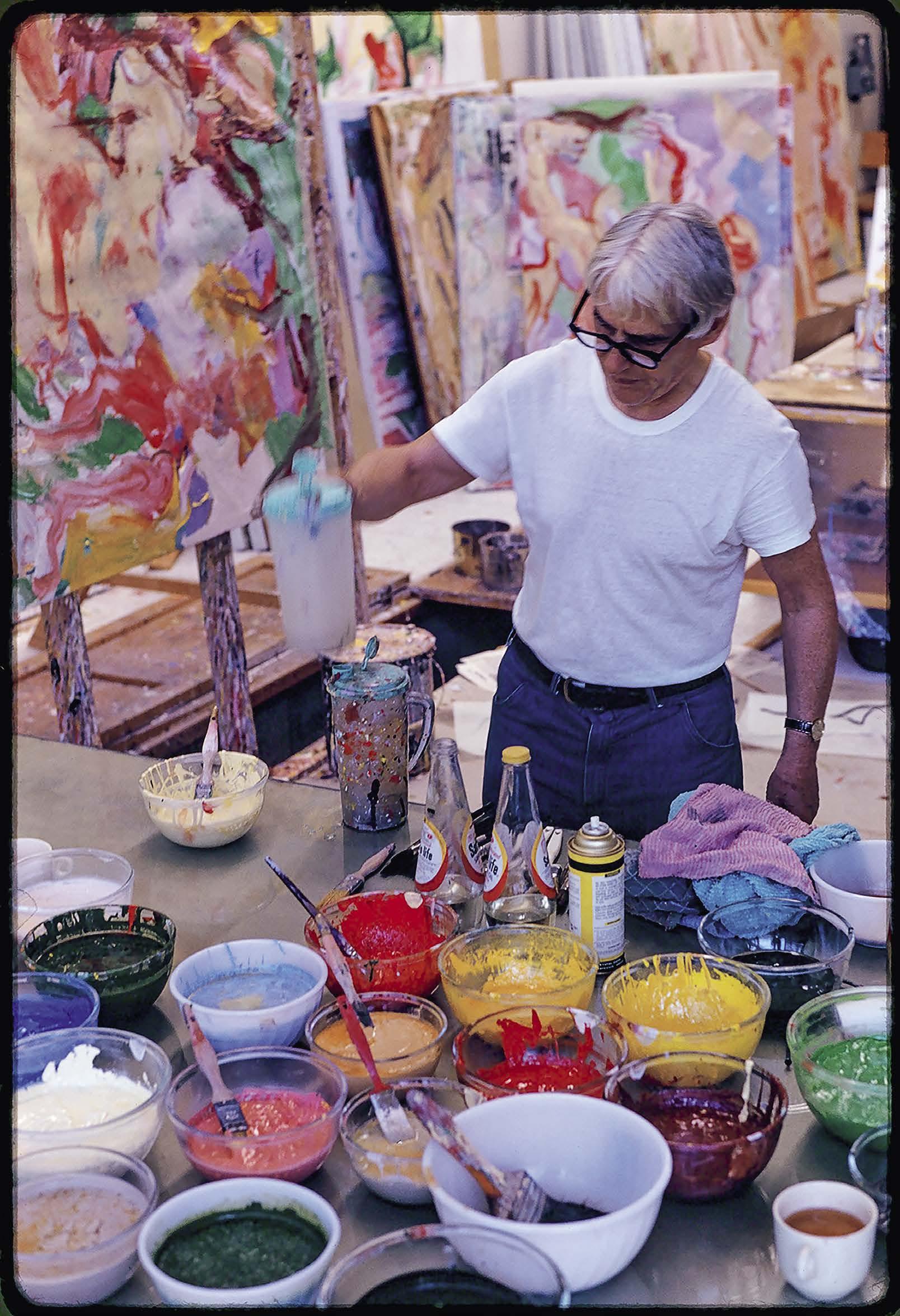
79
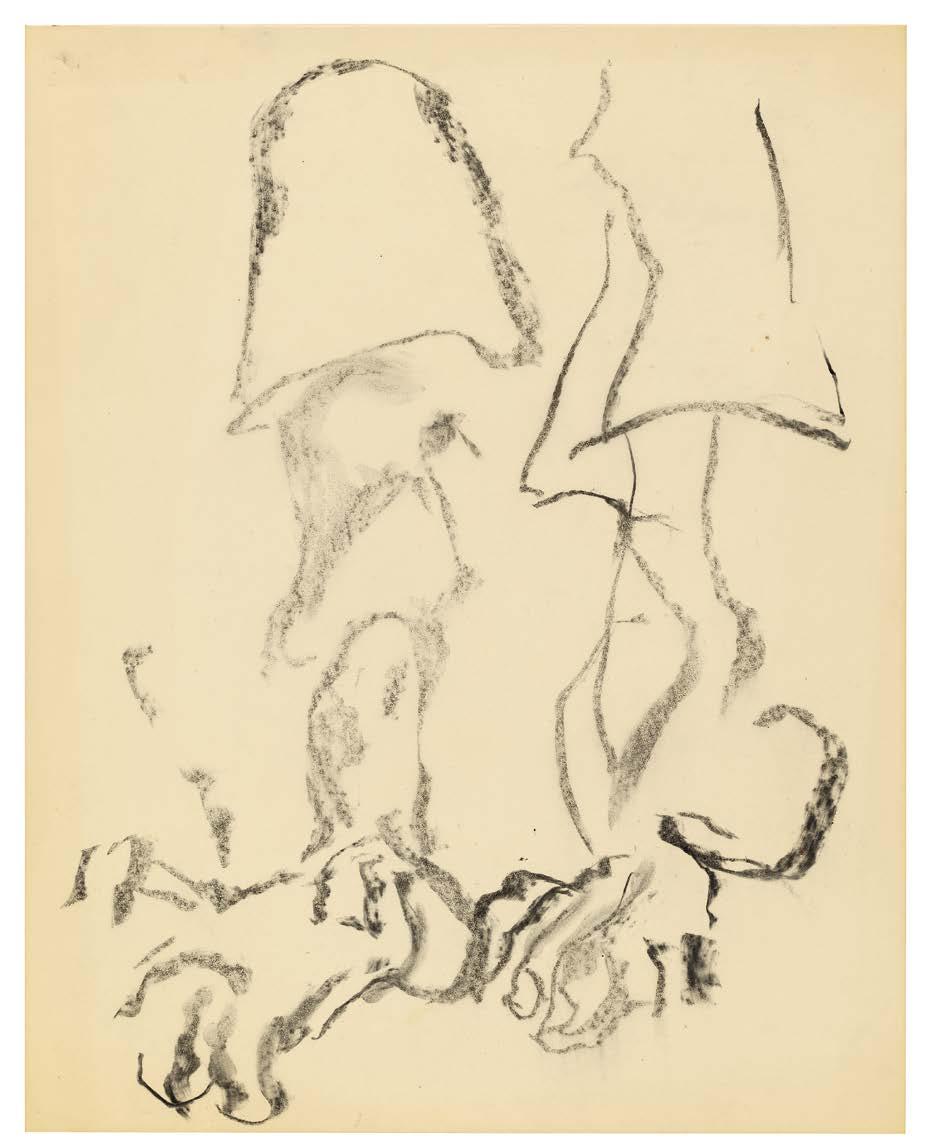
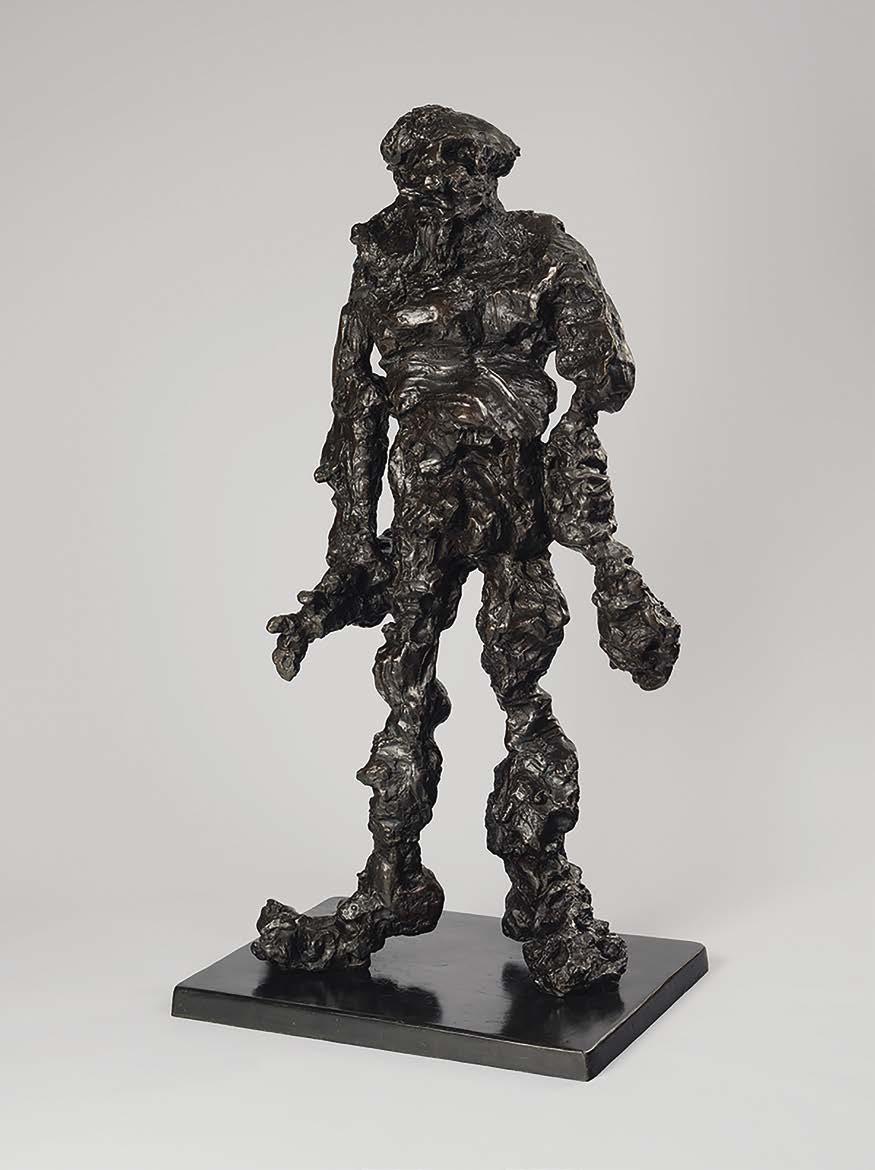
This page, top: Willem de Kooning, <no title>, c. 1975–80, charcoal on vellum, 23 ¾ × 18 ¾ inches (60.3 × 47.6 cm), private collection
This page, bottom: Willem de Kooning, Clamdigger, 1972, bronze, 59 ½ × 25 ⅞ × 21 ¼ inches (151 × 63 × 54 cm), purchase, 1979 Centre Pompidou, Paris Musée national d’art modern/Centre de creation industrielle
he had a lot of Italian friends. He befriended many of the Italian artists of the ’50s who had spent time in New York—like Afro, Toti Scialoja, and Piero Dorazio—and they reciprocated when he came to Rome. So he participated directly in the artists’ life of the Rome of the time, and we have to remember that Rome in the late ’50s was really the place to go, even more than Paris. So many American artists passed through and spent time there. But when de Kooning came to Rome, he didn’t go just as a tourist, even though it was his first travel abroad since he moved to the States as an illegal immigrant in 1926. He really had a relationship with these people in the city and spent most of his time with them—for the few months that he was there, he participated in the artist community. He borrowed Afro’s studio, for example, and made a group of what we think are very important drawings there that we’re going to show in the exhibition. They were made on classic Fabriano paper with black enamels mixed with ground pumice to soften the shine. Some of the sheets are painted on both sides, torn and recomposed in a collage that creates a three-dimensional, perspectival effect. So Gary, I ask you, what importance do these black and white drawings have in terms of the show? What role do they play?
Opposite: Willem de Kooning, Red Man with Moustache, 1971, oil on paper mounted on canvas, 73 × 36 inches (186 × 91.5 cm), Museo Nacional Thyssen-Bornemisza, Madrid
Following spread, left: Willem de Kooning, Untitled (Rome), 1959, enamel with fine particulate filler on paper (with drawing in enamel on verso) 40 × 30 inches (101.6 × 76.2 cm), The Renee & Chaim Gross Foundation, New York
Following spread, top right: Willem de Kooning, Villa Borghese, 1960, oil on canvas, 80 × 70 inches (203.2 × 177.8 cm), Guggenheim Museum Bilbao
Following spread, bottom right: Willem de Kooning, Pirate (Untitled II), 1981, oil on canvas, 88 × 77 inches (223.4 × 194.4 cm), Museum of Modern Art, New York. Sidney and Harriet Janis Collection Fund, 1982
All artwork © 2024 The Willem de Kooning Foundation, SIAE
GG The late ’50s was a period of exceptional change and transformation for de Kooning. In 1959 he had a very successful exhibition, introducing bold abstract paintings completely different from what had preceded them. That show was a great success. He had enough money and decided to come to Italy and spend time there. In Rome he began experiments with the drawings, and those experiments led the way for him to go back to the United States and make new work. They haven’t been widely recognized but I think they’re very important. When he went back to New York, he made just four large-scale paintings in 1960, and we’re bringing together three of those for the first time. I think you’ll see the importance of this transition. I think the opportunity to really look at these drawings made in Rome will show the profound impact they had on the subsequent work.
Then a little later, in the early ’60s, de Kooning started engaging with figurative work again. And we’ll show three of the most significant paintings from that period, which prefigure the sculptures that he would first experiment with in Rome at the end of the decade. We feel the sculpture is essential work for de Kooning—it’s a very important part of this exhibition that has been not so well recognized and has its roots in Rome. Mario, you might talk about the second trip to Rome, and about the importance of those sculptures.
MC Like most things in life, they happened by chance. The second trip came about through an invitation to the Spoleto Festival, which focused primarily on music and the performing arts but included an exhibition program for visual art.
De Kooning was offered a room in the house of Gian Carlo Menotti, the composer who founded the festival, and a backstage area to work in. But de Kooning was a very urban person; he really liked to be in cities. He lived in New York for most of his life, then of course eventually moved to the opposite, the countryside of Long Island, but he always liked big cities. So he escaped from Spoleto to Rome as often as he could, and one day there, literally by chance, he bumped into an old friend, the sculptor Herzl Emanuel, whom he had met many years before when both men were working in the WPA program during the Depression. One thing
80
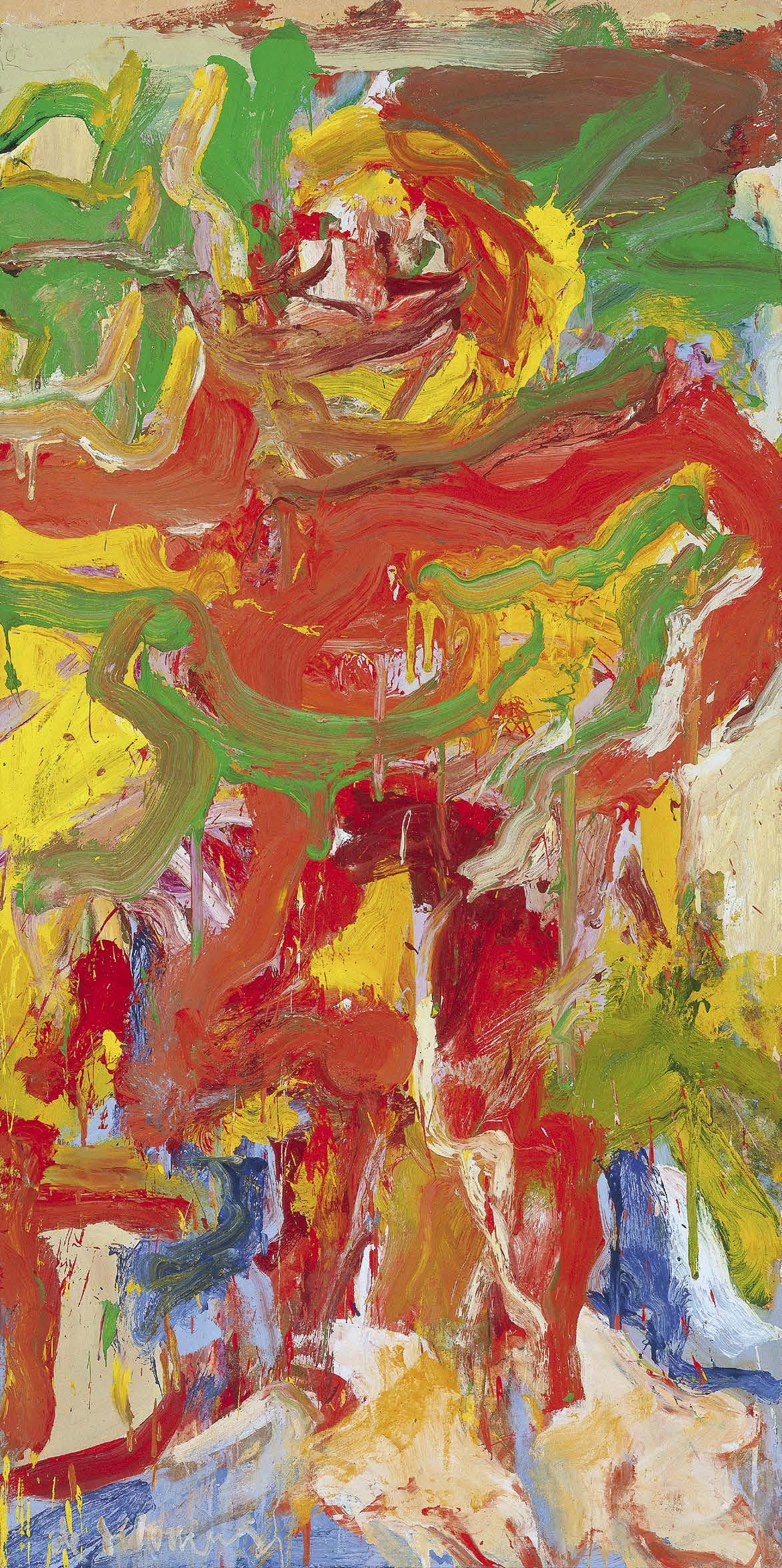
led to another and Emanuel invited de Kooning to a small foundry he ran in Trastevere. De Kooning was obviously very fascinated by the foundry, which was so, in a way, old-fashioned. As Gary said, at that time artists rarely worked in bronze. Emanuel offered him the opportunity to experiment, and de Kooning selected thirteen little sculptures he made in clay to be cast in bronze and sent to the United States. There the sculptor Henry Moore saw them and suggested to de Kooning’s dealer that he might enlarge them to any scale. From 1970 to 1974, sculpture became a central concern for de Kooning, which we are also going to show.
A number of artists who are known principally as painters also made sculptures occasionally, in practices that are visually quite independent. What fascinated me with de Kooning was that in working in sculpture, he really made a transposition of his paintings in a three-dimensional way; he kept the same feeling, the same sense of activity, if you like, that you see in his paintings. There is a direct connection.
Going back to the ’50s, another interesting thing that both of us observed was that at the time, especially in Italy, there was a big debate between figuration and abstraction, and in Italy that debate typically had very political connotations. The Communist Party, which had a big influence on our culture, was really against abstraction. So there was an intense debate about this tension, especially among Italian artists, and de Kooning worked in both categories and helped to define a hybrid. Gary, how would you explain that?
GG De Kooning was one of the essential and most important of the abstract artists in New York in the 1940s and ’50s, the period of what we call the New York School, or Abstract Expressionism. He was one of the leaders, but he was the only one of that group of artists— Jackson Pollock, Mark Rothko, Franz Kline, and others—who had trained academically in Europe, in the Netherlands. And he never lost interest in the history of art. So even as he was among the most inventive and most important of the abstract artists, he also continued to consider the work of the European masters. The Metropolitan Museum in New York of course has a fantastic collection, and he went there a lot and looked at the old master paintings. But coming to Italy was a chance to see the great works by Titian, Tintoretto, and Veronese in their original context. And in Rome, he loved the great Baroque artists—Bernini comes up again and again. De Kooning was one of the only artists we define as Abstract Expressionist who had a more complicated relationship to the history of art. He loved the freedom, the creativity, the exploration and radicality of the New York School, but he also admired and studied and knew the history of European art. And he acknowledged not only the painters of European art history but also the sculptors.
The exhibition includes many figurative drawings, but also paintings from 1975 to 1987, when de Kooning went back to abstraction. That abstraction again shows the influence of the figure and drawing. It’s like a thread that just constantly twists. He was an artist who continually changed, who continually reinvented his work, who would go back to things he had done before and renew them. He was an
81
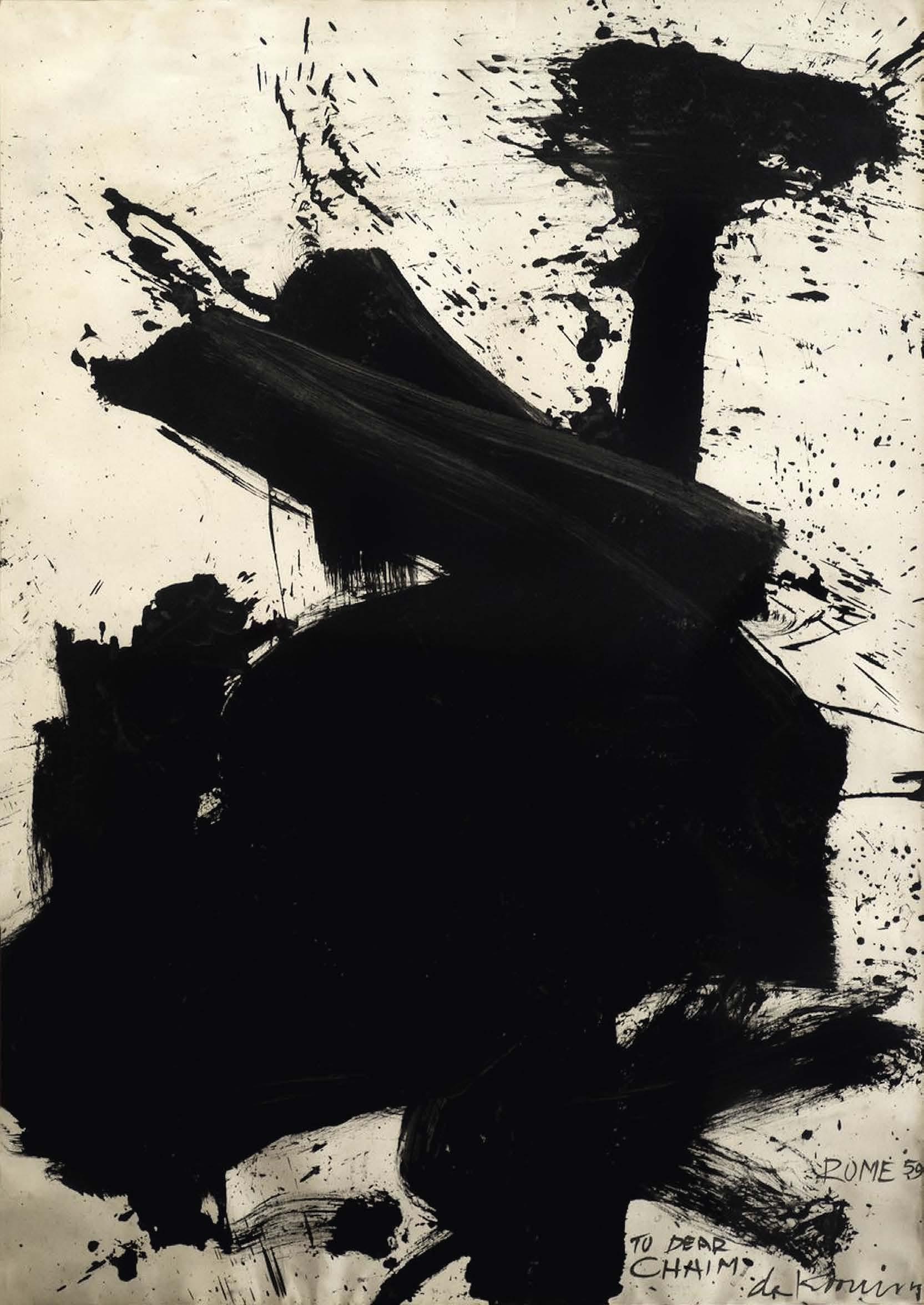
82
artist who worked over sixty years without ever losing the excitement of discovery in new work.
We could talk for a long time about this. We’re so thrilled that this exhibition is being presented here at the Accademia in Venice, because Venice has, of course, the great Peggy Guggenheim Collection, with great Pollocks and other examples of the New York School. And here at the Accademia we have the great Titians and Tintorettos, which are as deeply embedded in the work of de Kooning as the New York painters. In Venice we also have great modern sculpture, and we will include a sculpture by Auguste Rodin, a sculpture by Medardo Rosso, and a sculpture by Alberto Giacometti in the exhibition to provide a deeper, richer context for understanding de Kooning’s sculpture and how much it’s part of the history of the modernist sculpture that he continued and carried forward. So between the Guggenheim Collection and the Accademia and the other great art already here in Venice, it’s a perfect context here. MC De Kooning’s work was highlighted in the Venice Biennales of 1950, 1954, and 1956, but he was not yet a US citizen and couldn’t come to Italy without risking not being allowed back. Also, obviously, travel was a different matter then: it was more common than it would be now not to go to your own show. But from his correspondence with various people, it’s evident that de Kooning was fascinated by Venice. Each time he came to Italy, in 1959, 1969, and a brief visit in 1972, he came to Venice, but he stayed for short periods and didn’t have the same relationship that he had with Rome.
Needless to say, one thing he found fascinating about Venice was that it’s on water, which visually was always extremely important in his work. It makes perfect sense, and in a way is one of the elements that emerged from this exhibition. For example, we noticed that some of the sculptures and paintings of the ’60s seem to have people immersed in liquids. Perhaps this is something he saw through Bernini’s fountains in Rome—of course there isn’t a direct connection, but they both have that space where the body and the water melt into one element.
GG Again, de Kooning never lost his desire to look at things in a new and fresh way. He was always challenging himself, always taking in new ways of thinking. This exhibition looks at the last thirty years of his life, the huge transition from the 1950s to the 1980s. That’s when he decided he would move out of New York. And coming to Italy was pivotal, it renewed him.
I don’t think de Kooning thought of himself as European or even as quintessentially American. He brought together these influences—and that’s part of why he’s so vital, so interesting, because he was so open.
MC Another thing we discussed as we were developing the show was that on both sides of the Atlantic in the 1960s, artists were stopping painting or making traditional sculpture and using their own bodies for artistic expression. I don’t think that’s purely coincidental, even if I can’t prove it. And when de Kooning was in Spoleto in 1969, he saw the Orlando Furioso directed by Luca Ronconi, which was designed so that there was no difference between actors and public, and the performance was very physical. I don’t think that was a direct inspiration but I imagine de Kooning combining it all into his art. All great artists are copycats, but when they take something they make something entirely different. Great artists absorb all they have around them and make something completely original. It’s how to be in the spirit of one’s own time.


83
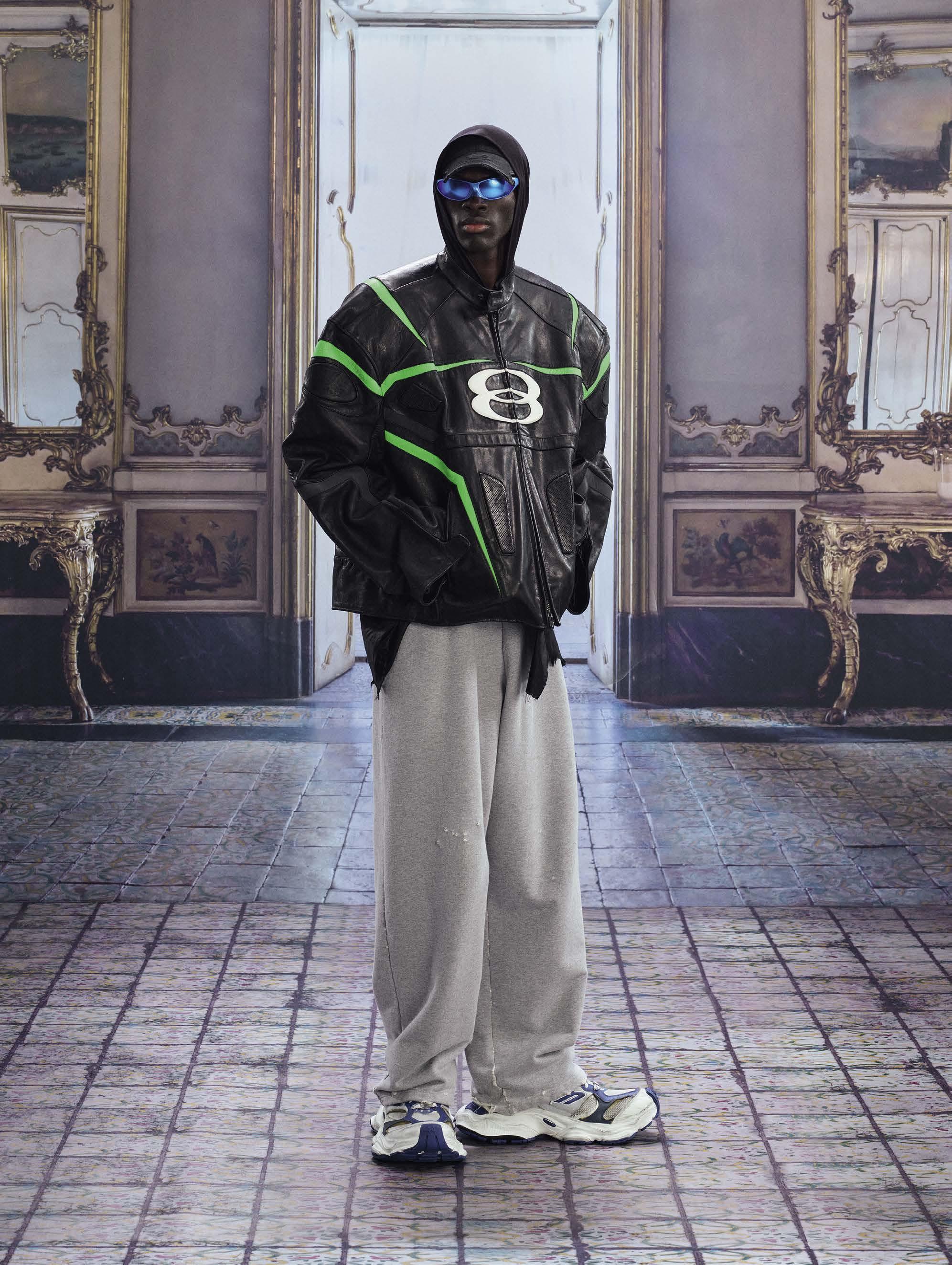

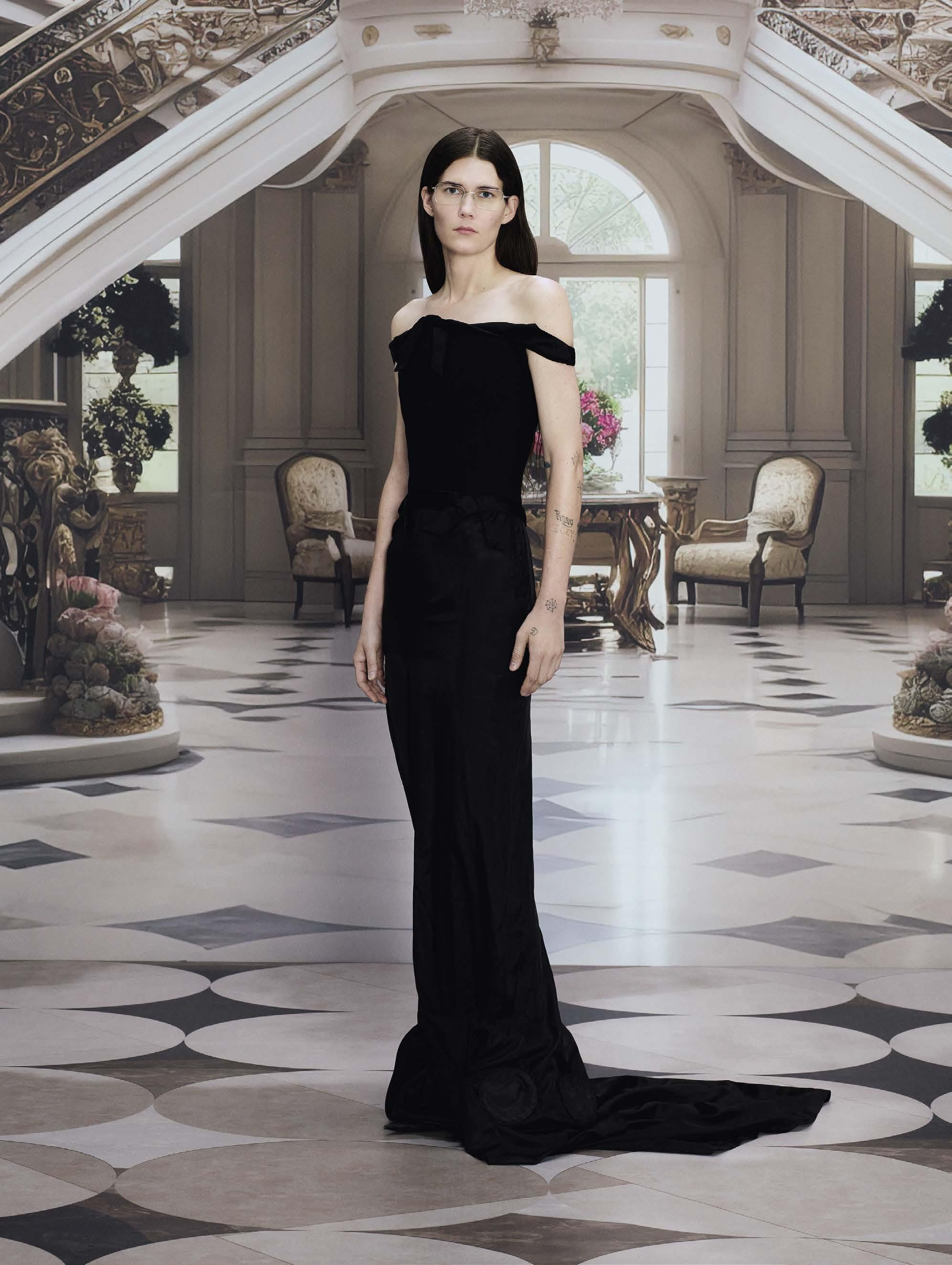
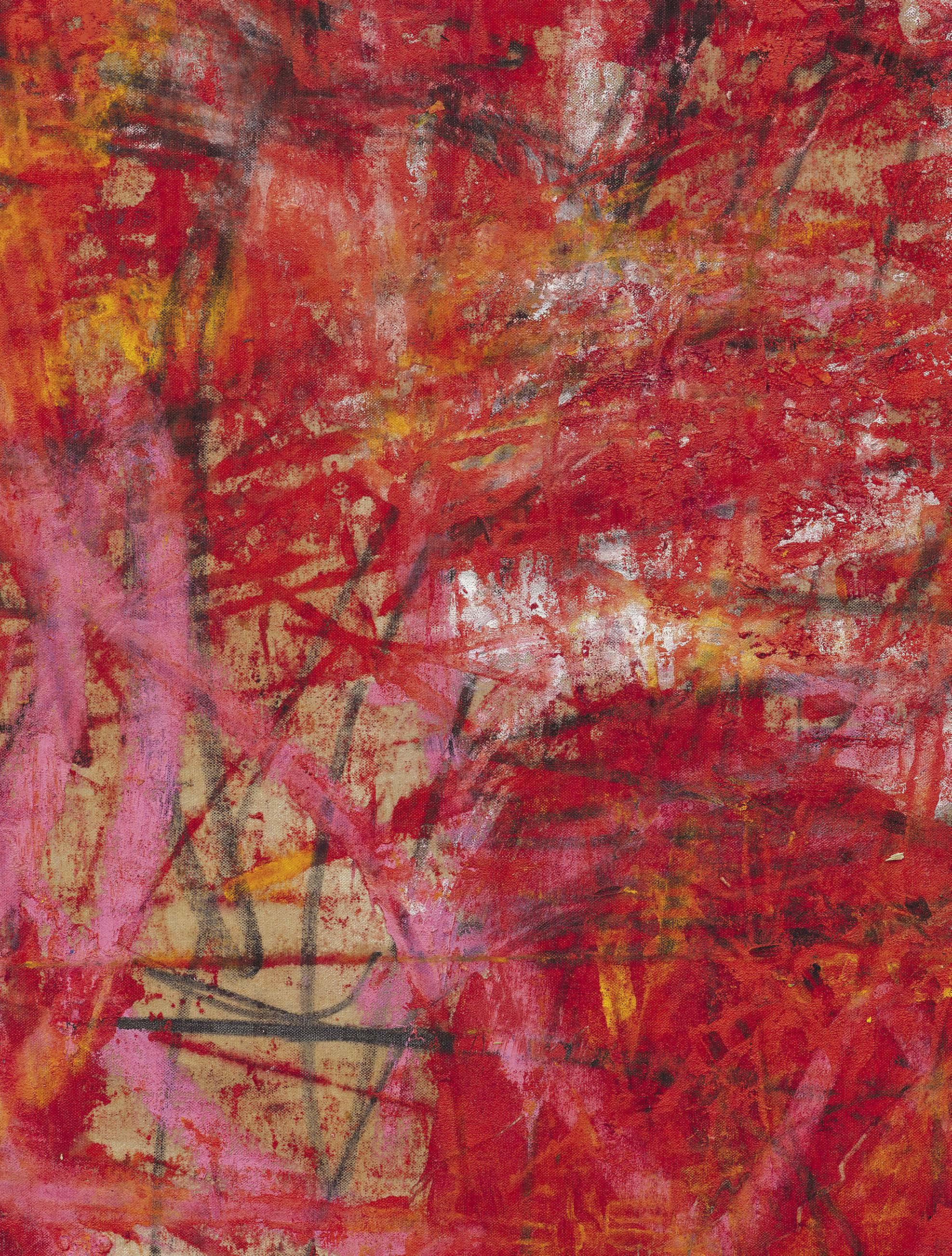
Oscar Murillo

Marks and Whispers

Ahead of two exhibitions— The Flooded Garden at Tate Modern, London, and Marks and Whispers at Gagosian, Rome— curator Alessandro Rabottini visited Oscar Murillo’s London studio to discuss the connections between them.
ALESSANDRO RABOTTINI Oscar, we’re here in your studio in London, and I’d like to thank you for welcoming me in this space. For the past year we’ve been working together on a forthcoming book that focuses on the project Frequencies , so I’m also really grateful for this ongoing dialogue we’re having together.
I wanted to discuss a pair of projects you’re busy with at the moment, one here in London, at Tate Modern, that will open in July, and then your solo exhibition at the Gagosian gallery in Rome, which opens in April. The London project will be a participatory installation in the Turbine Hall from July to August. Visitors of all ages will enter a space you designed in a very specific way, kind of an architecture within the architecture. They’ll be surrounded by what’s probably the most monumental installation to date of your series of paintings titled Surge Then within this space they’ll be invited to participate in the collective production of a painting. More explicitly, they’ll be invited to draw waves or leave marks that resemble a wave. Could you tell me about your title for this show, The Flooded Garden?
OSCAR MURILLO Yes, thank you for being here in the studio, and for bringing your energy and spirit.
The title The Flooded Garden relates to Claude Monet’s water lily paintings, referencing his garden in Giverny, the fact that he had cataracts toward the twilight of his life, and also the idea of cataracts as an antagonistic illness. So there’s an element of beauty, but a beauty with a hidden reality of the artist’s loss of sight, of darkness. I’ve been thinking about the reality and the myth of the water lily series, and for this installation I was thinking
about the collective lack of seeing clearly in a tragic scenario. The idea of being “flooded” alludes to a tragic truth, a misfortune. But it also relates to the public flooding into the museum to participate, and therefore to the context of the Tate as a very, very popular institution. The water lilies, too, are popular historical works. So I’m thinking about the essence of British public policy in relation to museums—the idea that the Tate, like many other museums in the country, is free, that the public can come and participate in this part of culture. That was at the core of this project.
AR Visually the space is dominated by the blues and the blacks of the Surge paintings, and the audience will be invited to contribute to this monumental sea of marks. So there’s an open narrative about water, the image of the ocean, the tonality of the sea, the depth of it, the surface of it. What is it about water, and about marks resembling waves, that interests you in this work?
OM Like Monet’s garden, water is a network of life. The sea can be an arena of despair for people moving across it from one part of the world to another, seeking a better life, escaping a tragic present. But the sea also holds deep beauty.
I ’m also thinking of the water well, the idea that you can draw water, that it doesn’t dry up, that it constantly replenishes the self. I’m inspired by this cyclical situation: for a month in this very public space, let’s do this exercise of constantly drawing water. AR In fact there’s this kind of cumulative economy here, because the work will present itself over five weeks, so the more we visit it, the more the work will grow in front of our eyes. It’s a little
88
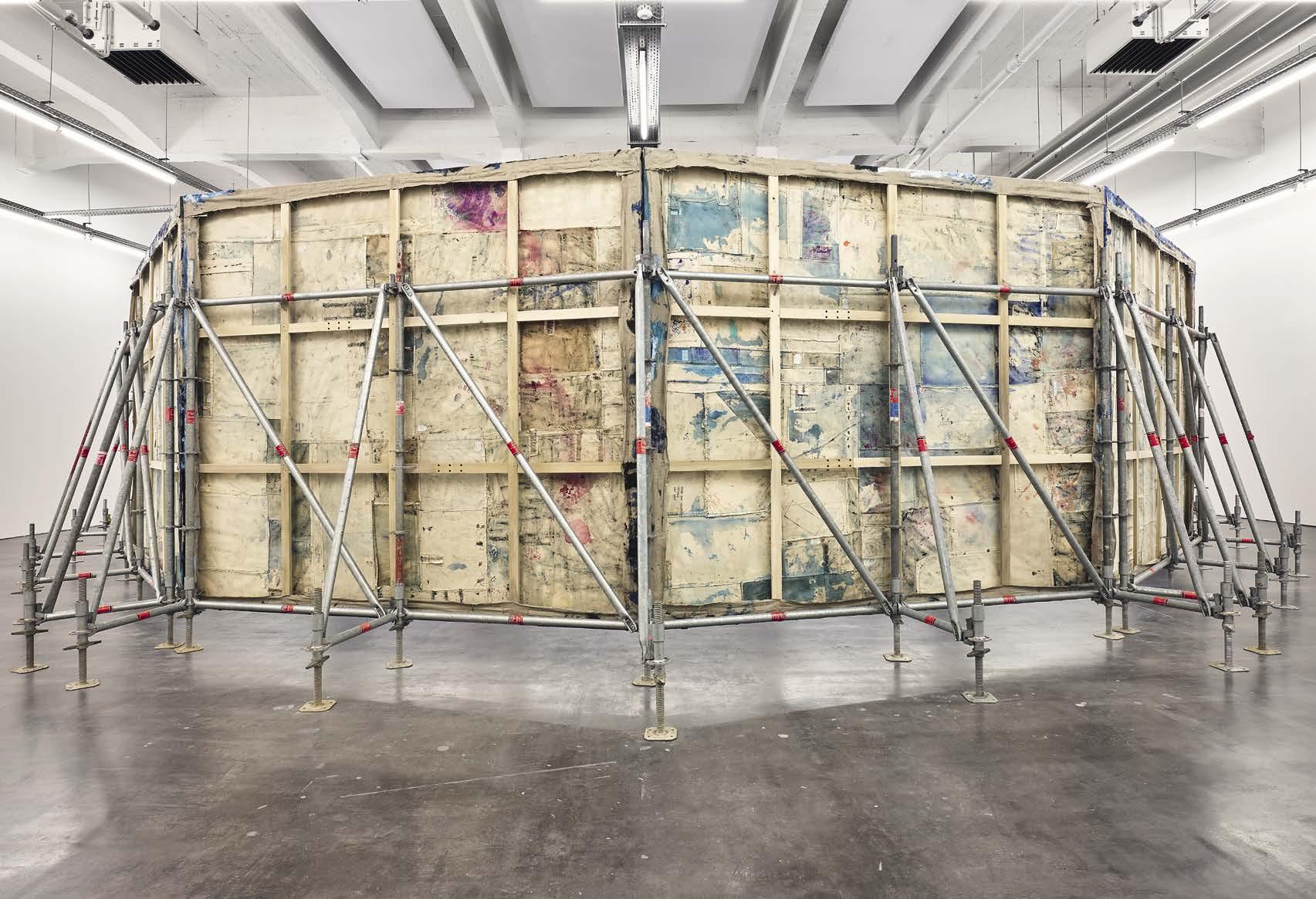
bit like Frequencies , an ongoing project that you started in 2013. The concept is to provide schools all around the world with canvases to cover the pupils’ desks, let the kids spend six months with these covered desks, and then collect whatever doodles, writings, drawings, and marks they’ve left and make them accessible to an audience. So both projects have this accumulation of signs and marks that grow collectively over time. They give you this energetic perception of things happening in front of your eyes. For The Flooded Garden , asking visitors to mark the space with the image of waves is a kind of liberating gesture, because everybody can do that. It doesn’t require any particular skill to draw that shape; it’s an instinctive mark.
It’s fascinating that you keep referring to dualities. Every time we’ve spoken about the Surge paintings, you’ve mentioned the idea that water has an obliterating force in addition to a life-giving one. So what do you mean when you mention water’s obliterating force?
OM The oldest thing in our reality is the sea, and the wisest thing too: it has all this history and holds all this information. Water encompasses both beauty and tragedy—we see it on holiday in a gorgeous place, and in the same gorgeous place we see the death of somebody trying to migrate from one place to another. But it’s there for us all to witness and be part of in our shared experience as human beings. AR Right, we can have endless perceptions according to our own experience of something like the sea. It can be terrifying or it can be an image of leisure. In fact, in your work, both meanings are very open.
In both The Flooded Garden and Frequencies you’re creating a structure, but the structure accepts things you cannot control as an artist. At Tate, you’ll create a conceptual and architectural structure and then you’ll welcome people to inhabit it and interfere with it. I see in your work a constant interplay between rules and spontaneity, structure and freedom. Is that something you feel?
OM Yes, the two feed off each other. Structure can lead to freedom. This takes me back to paintings from 2009 or 2010, 2011, in which I explored the context of migrating from one place to the other. As a migrant, when everything in your previous life has been removed and obliterated, how do you find structure? You anchor yourself within your own cultural context, which is pleasure, which is food, which is music, which is language, and all these different familiar things. Pleasure is very much part of my personal experience. I also think pleasure is a kind of tool of resistance, to refuse to deny oneself and rather to embrace and define pleasure for oneself. This exercise of producing paintings, producing ideas: as much as I want to think historically or philosophically, I also want to leave the work open for someone else’s potential pleasure, without the burden of a singular point of view.
AR I want to stay on this idea you just expressed of something that anchors you, that grounds you.
In the conversation we did for the Frequencies book, at one point I asked you how much of you as a kid is in that work, and you gave me the most straightforward, candid answer: you said, “One hundred percent of him, because when I was a kid, drawing gave me an opportunity to not drift away. It
literally anchored me.” I now wonder how much going to public museums as a kid influenced The Flooded Garden . You mentioned the fact that in the United Kingdom, institutions are free, they play an important role in collective education, there’s an ideal of access. The Flooded Garden will be a participatory installation and we’ve been talking about how open the meanings have to be for everybody to feel that they can project their own experience onto them.
OM I arrived in this country as a kid, almost to the echo of Tony Blair’s speech introducing the mantra of “education, education, education, education” for his party slogan “New Labour.” I think it was late 1996 at Oxford or Cambridge, one of those prestigious universities, and it was a speech in which he expressed the idea of education as a leader of modern Britain. And this policy, to me personally, is the most radical policy. But there’s also a more negative association with it: the instrumentalization of culture. That is, funding was instrumentalized: any project, any collective of artists, any individual artist, any small organization that needed to or wanted to ask for funding from the Arts Council, had to incorporate some kind of social accountability. I think that was one of the biggest problems, because then our culture needed to have a purpose; it couldn’t be free for the sake of art.
But overall, the most radical introduction of the last forty years, I could even say the most important policy since World War II, continues to be the fact that cultural institutions are free, that a child from any walk of life, from any part of the city, can get on the bus for free and
89

spend an entire day in a museum. That museum could be the National Portrait Gallery, it could be the National Gallery, it could be Tate Britain, Tate Modern.
AR What’s interesting about The Flooded Garden is when I’m there, I won’t only leave my own mark but I’ll also witness the choral, monumental version of the painting. I’m bringing this up because I want to go back to your thinking about Monet and his cataracts. Out of Monet’s experience of lack of vision, you developed the idea of the social cataract: the inability to see and understand other people’s pain. I think The Flooded Garden will actually reverse that dynamic, in the same way that when I enter the archive of Frequencies , I can’t escape these voices of kids from all over the world, each with their own individuality. I hope that as a participant in The Flooded Garden , what I will bring back home is not my own mark but the magnificent scale of other people’s marks.
OM I’m interested in the challenge of how you counter, contain, summarize the collective. With Frequencies , over time, you recognize the growing magnitude of what happens when you sew
together fifty canvases from different parts of the world: South Africa, Singapore, Kenya, Japan, Brazil, Chile. There’s a sense of belonging and connection across physical roots. I’m using my own tools of painting to survive and exist in a space of complete freedom. And in that process, I’m able to recognize others, too.
AR So let me jump from London to Rome, from summer to spring. In April you’ll open this solo exhibition at Gagosian in Rome, Marks and Whispers . The viewer will once again be immersed in a monochrome experience: in London the blue of the Surge paintings, in Rome the red of the paintings that we see here in the studio. We will travel between these two primary colors, which have a central function in your work. What can you tell me about this show in Rome, and how you had the idea of bringing these red paintings together for the first time? If I’m not wrong, some of these paintings date to over ten years ago, or even more?
OM Fifteen.
AR Fifteen? Up to now?
OM The present.
AR So it’s a comprehensive span of not just one
Opening spread: Oscar Murillo, (untitled) scarred spirits , 2023 (detail), oil and oil stick on canvas, 98 ½ × 106 ⅜ inches (250 × 270 cm)
Previous spread, left: Oscar Murillo, Telegram , 2013–24, mixed media on canvas, 17 ¾ × 25 ⅝ inches (45 × 65 cm)
Previous spread, right: Installation view, Oscar Murillo: Masses , wiels Contemporary Art Centre, Brussels, February 2–April 28, 2024. Photo: Reinis Lismanis, courtesy the artist
Above: Oscar Murillo, (untitled) scarred spirits , 2023, oil and oil stick on canvas, 98 ½ × 106 ⅜ inches (250 × 270 cm)
Opposite: Oscar Murillo, (untitled) catalyst , 2012, oil stick and spray paint on canvas, 51 ¼ × 55 ⅛ inches (130 × 140 cm)
Artworks © Oscar Murillo
Photos, unless otherwise noted: Tim Bowditch and Reinis Lismanis
90

body of work, but one specific sensibility of the work.
OM Yeah, I think many aspects go into that conclusion and tie the works together. One is the idea of drawing. Very, very early on, when I learned about art as a way of life, a way to subsist—not in terms of economics but as a way to survive from a human point of view—I said, “Well, if there were no means, if there were no physical means, if there were no financial means, I could still go to the lobby of a bank and I’d be able to find a red or a black or a blue pen.” With this very basic survival tool, I’ll be able to live. What connects my works in the present to those I made when I was just beginning to flourish and evolve as an artist, in 2009, let’s say, was this romantic idea of art as communication—leaving a trace, making a mark through drawing or painting. This goes back to modernist and Renaissance ideas in art history. And for the palette of this show, red has a kind of universality. It has so many different societal meanings.
AR Absolutely. You spoke earlier about the many meanings an individual can project on the blue of
the sea, and something very similar can be said about red. It’s a vital, exciting color, but it’s also an alarming color. I project on this dominant red a kind of dramatic value. You earlier used the word “arena,” which can connote something positive, like a place of a performance or a place to debate different viewpoints. But as the exhibition is in Rome, I also think of the arena in ancient Rome: the place where the spectacle of violence, the spectacle of pain, was offered to the people. So again, a simple primary color can evoke a multitude of meanings. “Arena” also came up when you were describing the layout of the exhibition: you conceived the installation in Rome as a sort of sequence of spaces, a crescendo of works that leads us to the central arena. So I’m wondering how you scripted the way the works are installed and how the visitors can move around?
OM Yes, I’m always returning to this idea of the arena. Over the years, I have incorporated seating arenas in my shows. Initially, this was a way to seat the Mateos —these papier-mâché figures that we burn in Colombia every New Year—but beyond this, the arena is a historical structure of discourse.
It is the birth of some kind of democratic system or even a collective consciousness. Having a model of the gallery in my studio led me to the realization that the architecture of the space is an arena. A Telegram painting, that builds on the project of Frequencies , sits in the middle of the show. Looking at this painting from 2012, Mango [(untitled ) catalyst , 2012], for example, I’m thinking about the absurdity of writing “mango” in a painting and both the importance and triviality that comes through in the context of the show. The Fields of Spirits works are like scrolls from a distant history. They were the ones that inspired the title Marks and Whispers . These strands of my practice were in the same space of my studio for so long, but they were never really brought into action together. As we were saying, the arena is where these different works, paintings, characters, ideas, gestures, energies fit in together to make a crisis unfold. There’s a compression of time. That’s how I wanted to give the show life. I’ve been making this show for fifteen years or so. It’s not really a show that can happen anywhere else. It’s not really a show that can happen again.
91

On the heels of finishing a new novel, Scaffolding, that revolves around a Lacanian analyst, Lauren Elkin traveled to Metz, France, to take in Lacan, the exhibition. When art meets psychoanalysis, at the Centre Pompidou satellite in that city. Here she reckons with the scale and intellectual rigor of the exhibition, teasing out the connections between the art on view and the philosophy of Jacques Lacan.

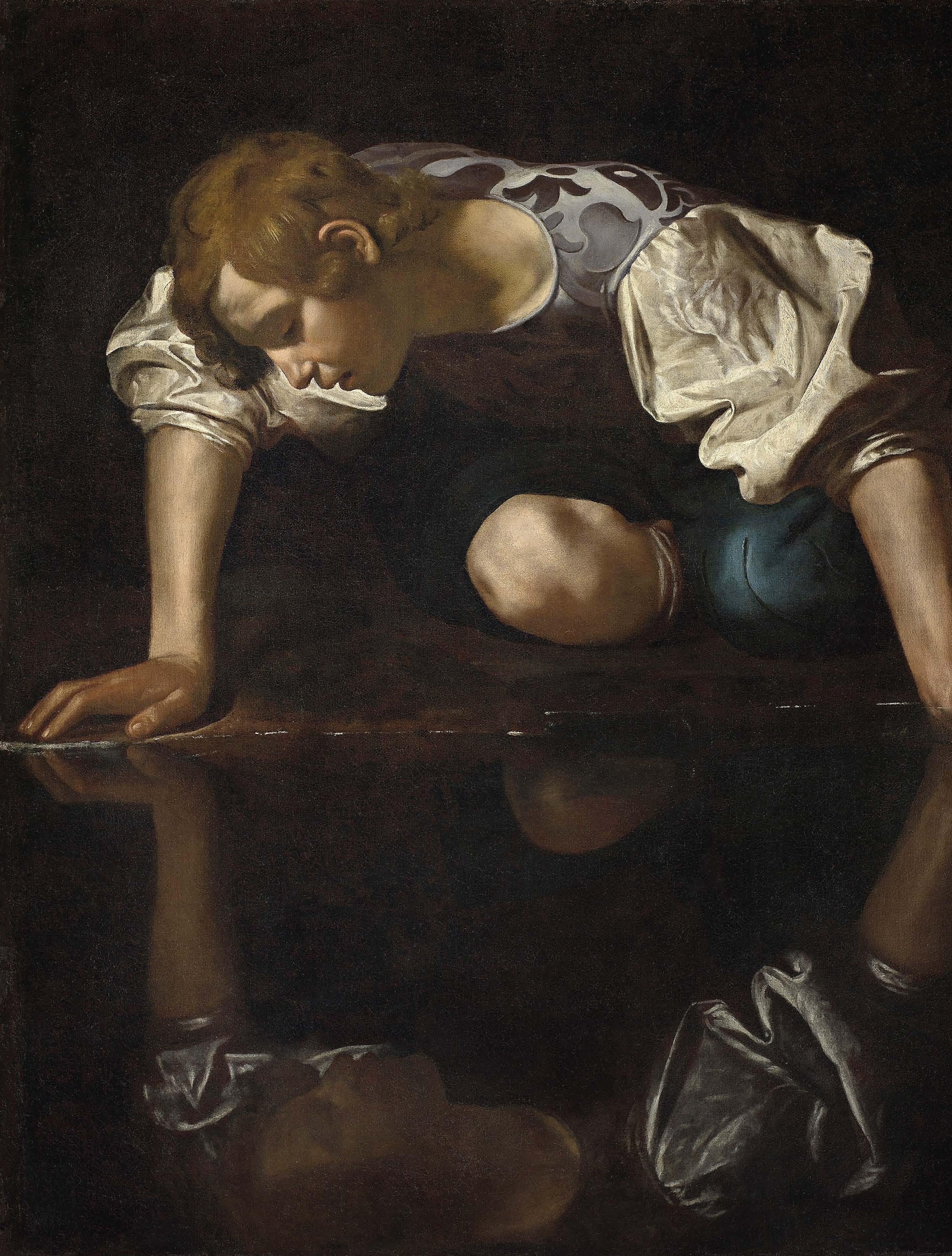
t the entry to the Jacques Lacan exhibition at the Centre Pompidou–Metz is a video of the great psychoanalyst himself, holding forth, cigar in hand. His noncigar hand gesticulates like he’s conducting an orchestra; sweat beads on his upper lip. I catch bits of what he is saying but he swallows his words and the volume is low. Catching every other phrase, or every other other phrase—it’s like a metaphor for my encounters with Lacan’s own work.
Nearly twenty years ago, I was assigned Lacan’s Four Fundamental Concepts of Psychoanalysis (1973) in a postgraduate seminar. We read about the developmental stage when a baby can recognize itself in a mirror and understand itself as a human being separate from its mother. Lacan called this the mirror stage, the moment when we enter into subjectivity and autonomy, but in that fundamental moment of separation there is also loss—the loss of the mother, and therefore of something previously taken to be a part of the self. And at the same time, through this visualization of itself in the mirror, the infant has to accept the limitations of its own body—which it had previously considered multiple, oceanic, a pleasurable assortment of discrete body-parts. To see ourselves as whole is paradoxically to accept ourselves as incomplete. We enter what Lacan called the Symbolic order (the world of language and culture) through this experience of loss, which will always stay with us: we will always feel we are lacking something without ever knowing what it is.
I found this notion incredibly powerful, and immediately set about exploring it my own academic and creative writing. This finally culminated in a novel called Scaffolding, to be published this June in the United Kingdom (Chatto & Windus) and in the United States in September (Farrar, Straus and Giroux). When the novel begins, the main character, a Lacanian psychoanalyst, has lost a pregnancy in her second trimester, and shortly thereafter has reencountered an old boyfriend. Lacan’s ideas provided a way to write about trauma, loss, love, desire, and the way memory works, allowing the past to live in the present. Lacan is, I believe, a great philosopher of love and longing.
But the problem with writing a Lacanian novel is that Lacan is so hard to understand. Everything is loaded up with wordplay, self-referentiality, chains of association. He did not publish often, preferring to give yearly themed seminars in which he orally worked out his thoughts. The students, psychoanalysts, writers, even actors who attended them in Paris from 1952 to 1980 often brought Dictaphones with them so they could relisten at their own pace at home. Several decades later, with the lectures published and in my lap, I nevertheless made very little headway with them.
In the end it took me sixteen years to feel I’d gleaned enough to write Scaffolding . At a certain point during that process I realized that even if I trained as a psychotherapist, I’d still have an imperfect mastery of his work. I spoke to a friend, an actual Lacanian analyst, about this and asked him what he thought. I may be misremembering, but I believe he was the one who gave me permission to just work with whatever version of Lacan I could grasp from my reading. It’s like jazz improvisation, I seem to recall him saying: you take some of it, riff on it, and it becomes its own thing.
The same principle animates the Lacan show in Metz. Cocurated by the art historians Bernard
Marcadé and Marie-Laure Bernadac with the psychoanalysts Gérard Wajcman and Paz Corona, the show does not attempt to illustrate Lacan’s theories with corresponding works of art, or to psychoanalyze the artists or the works, but rather to use art along with Lacan’s ideas as an invitation to visitors to do their own intellectual freestyling.
The curators argue that a Lacanian approach to art is not simply an interpretive tool, or a means of speculating about the psychology of the artist; rather, it invites the viewer into the relationship— as Marcel Duchamp said, the work of art is completed by the viewer.1 What does a painting do to the viewer, how do we look at it, how does it allow us to think about subjectivity, representation, the gaze, desire, lack, identity, sexuality—that is to say, life itself?
The curators, two art historians and two psychoanalysts, have divided the show into two parts. The first is an archival presentation of Lacan’s life, with placards guiding us through the main developments and vitrines presenting letters, photographs, notes, books, magazines, and other paraphernalia. These are a treasure trove, from Roland Barthes’s notes from his sessions with Lacan during the writing of A Lover’s Discourse (1977) to the copy of Histoire de l’oeil (Story of the Eye, 1928) that Georges Bataille signed to Lacan and his second wife, Sylvia, to whom Bataille had previously been married.
The second, dominant part of the show is the art. Some of the works here, by Salvador Dalí, Hans Bellmer, and André Masson (Sylvia Lacan’s brotherin-law) were actually made in direct conversation with Lacan. Others have been selected by the curators for their resonance with Lacan’s ideas. You might even say that art was a cornerstone of Lacan’s thought. In The Four Fundamental Concepts of Psychoanalysis , several sessions are devoted to questions of vision and the gaze. And he habitually
Previous spread, left: René Magritte, La condition humaine, 1933, oil on canvas, 39 3⁄8 × 31 7⁄8 inches (100 × 81 cm), National Gallery of Art, Washington, DC, gift of the Collectors Committee © ADAGP, Paris, 2023
Previous spread, right: Gisèle Freund, Jacques Lacan, Paris © RMN gestion droit d’auteur/Fonds MMC/IMEC/Dist. RMNGrand Palais/Gisèle Freund
Opposite: Caravaggio, Narcissus, 1597–99, oil on canvas, 44 ½ × 37 inches (113 × 94 cm), Palazzo Barberini, Galleria Nazionale d’Arte Antica, Rome. Photo: © SCALA, Florence, Dist. RMN-Grand Palais/image Scala
This page: Constantin Brancusi, Princesse X, 1915–16, plaster, 24 ¼ × 11 × 13 ¾ inches (61.5 × 28 × 35 cm), Centre Pompidou, Musée national d’art moderne, Paris © Succession Brancusi – All rights reserved (ADAGP) 2024. Photo: © Centre Pompidou, MNAM–CCI/ Georges Meguerditchian/ Dist. RMN-GP
referred to art and cinema during his lectures.
When Lacan looked at a work of art, he was not interested in its mimetic properties, writes Marcadé in his catalogue essay, but rather in the way it allows the viewer to be “led astray.”2 “Of course works of art imitate the objects they represent, but this is not exactly their aim. In giving an imitation of an object, they make that object into something else. And so they only pretend to imitate. . . . The more the object is presented as an imitation, the more it opens up a dimension where illusion breaks down and turns into something else.”3
In the case of figurative work, Lacan argued that the object portrayed is both present and absent. It’s clear from these lines why René Magritte, for instance, held such fascination for Lacan. In his thirteenth seminar Lacan refers to Magritte’s painting La Condition humaine (The Human Condition , 1933), which depicts an easel with a canvas on it, placed in front of a window; the painting on the canvas precisely replicates the landscape outside the window, obscuring and replacing it.
This painting, though not in the show (instead they have Le Faux Miroir [The False Mirror, 1929]), brilliantly illustrates the point the curators are trying to make about the relationship between Lacan and art. It’s not that Magritte’s piece “proves” Lacan’s theory, it’s that the work of art and the work of theory together help us to think about the very act of looking at art. Apparently Magritte was often asked what was behind the painting in La Condition humaine, to which he would reply: nothing. “Visible things always hide other visible things. But a visible image isn’t hiding anything.”4 This reminds me of Susan Sontag’s 1964 essay “Against Interpretation,” in which she expresses her impatience with critics who persist in “interpreting” works of art, as if art had to be decoded, its “hidden” meaning finally revealed by the detective critic. Instead of a hermeneutics, she calls for an “erotics” of art.
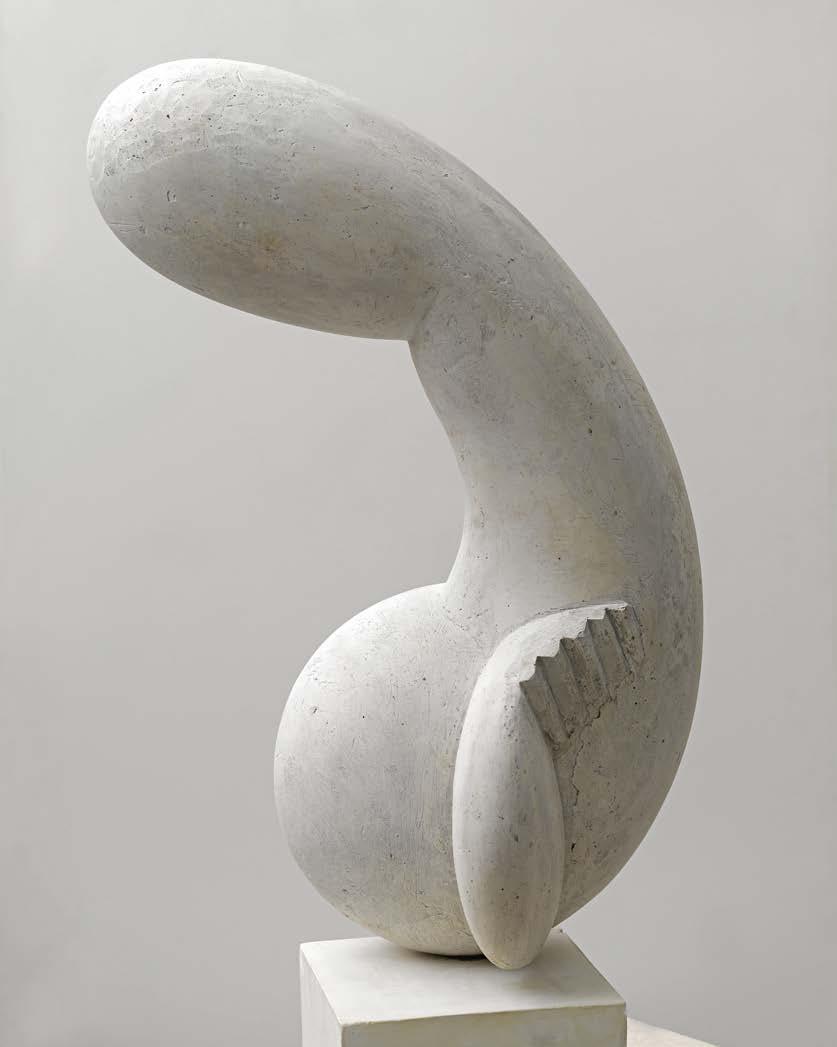
95
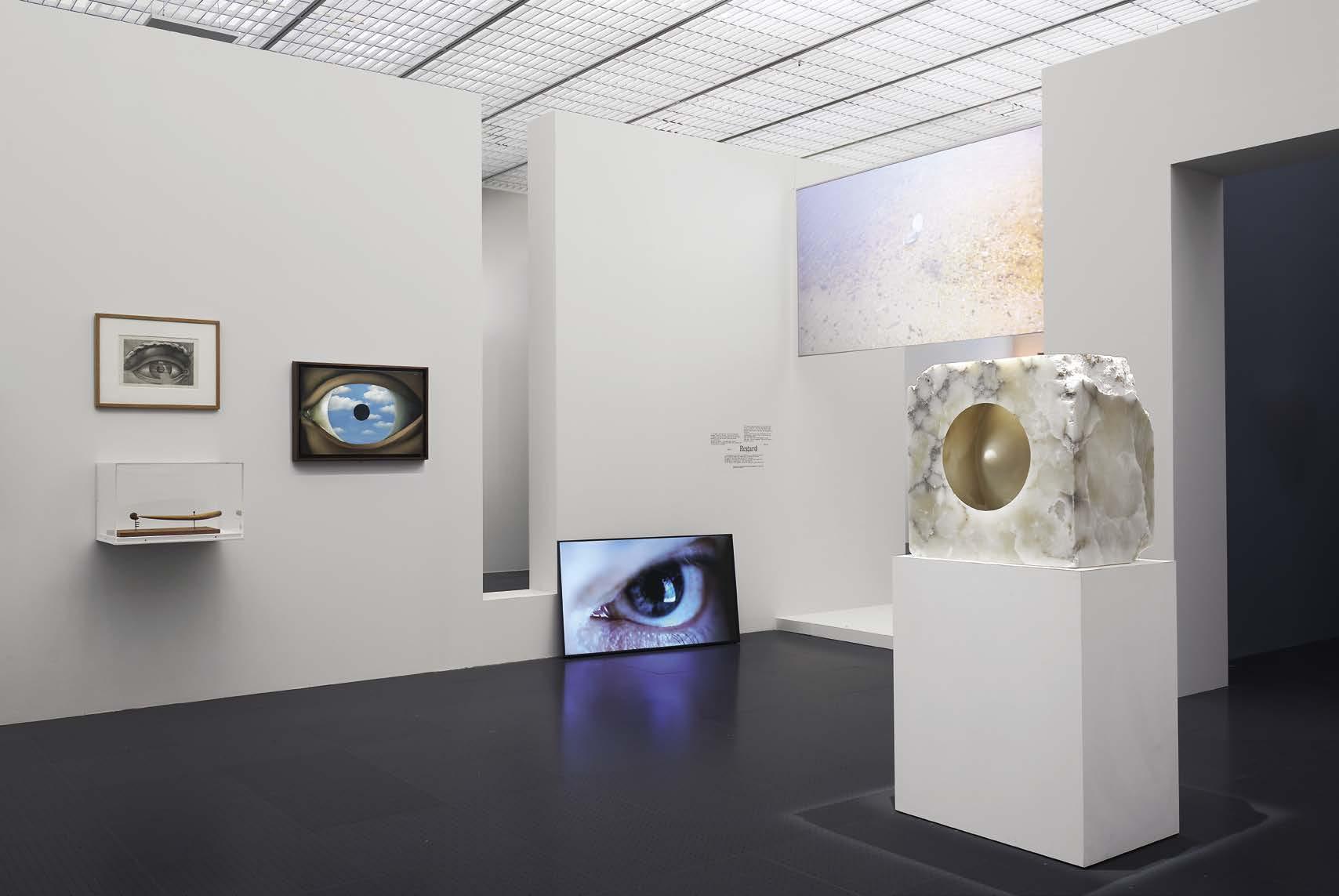
Above and opposite, bottom: Installation views, Lacan, the exhibition.When art meets psychoanalysis, Centre Pompidou–Metz, December 31, 2023–May 27, 2024. Artworks: Alberto Giacometti © Succession Alberto Giacometti/ ADAGP, Paris, 2024; René Magritte © ADAGP, Paris, 2024; Douglas Gordon © Douglas Gordon/Studio lost but found/ADAGP, Paris, 2024; Anish Kapoor © Anish Kapoor–All rights reserved,
DACS/ADAGP, Paris, 2024; Lucio Fontana © Fondation Lucio Fontana, Milano/by SIAE/ADAGP, Paris, 2024.
Photo: © Centre PompidouMetz/Marc Domage/2023
Below: Cindy Sherman, Untitled #501, 1977–2011, gelatin silver print, 8 ¾ × 6 7⁄8 inches (22.2 × 17.5 cm), edition 4/20, Fondation Louis Vuitton, Paris © Cindy Sherman, courtesy the artist and Hauser & Wirth

I don’t know if Sontag was thinking of Duchamp (perhaps unconsciously?), but he’s here, of course, as his alter ego Rrose Sélavy—famously a pun for the slogan “Éros, c’est la vie.” The two men were friendly; Duchamp attended Lacan’s seminar, and on at least one occasion had lunch at his home, where he saw Gustave Courbet’s infamous portrait of a lady’s bits, The Origin of the World (1866), which Lacan owned for a time. Masson painted a sliding door to be used to hide it (one imagines it was not the sort of thing you could casually have hanging on your wall in 1950s France—or today, for that matter). This staging of the painting would have a major impact on Duchamp, leading him to create his own version of Courbet’s painting, Étant donnés (1966).
The Origin of the World is present in the show, though unobscured by Masson’s painted panel, which appears beside it. It is accompanied by a variety of works by feminist artists: Mira Schor’s gorgeous, six-foot-tall painting Sexuality Surfboard II (or Sexuality Stele), of 1994, pale pink, slit in the very middle to reveal a semicolon; a photograph from Deborah De Robertis’s 2014 performance Miroir de l’Origine (Mirror of the origin), in which she posed in front of Courbet’s painting at the Musée d’Orsay with legs splayed to reveal her own vagina; Betty Tompkins’s Fuck Painting #59 (2017); and Agnès Thurnauer’s Origine World #3 (2014), which presents a copy of Courbet’s painting overlaid with the names of famous male artists whose names Thurnauer conjugates in the feminine: Jacqueline Pollock, Jeanne Dubuffet, Katia Malevich, Marcelle Duchamp. There is also Lucio Fontana’s Concetto spaziale (Spatial concept, 1958), with its double pink vinyl laceration, and Velázquez’s portrait of the Infanta Margarita Theresa from 1654.
Wajcman, the psychoanalyst who is one of the cocurators, has called Lacan a “split collector”—a collector of what Freud called Spaltung, the splitting of the subject. 5 Lacan’s son-in-law Jacques-Alain Miller, a psychoanalyst in his own right who has overseen the publication of most of Lacan’s seminars, writes that in Lacan’s work “the hole, as opposed to the lack, implies the disappearance of the order of space. . . . it is not a lack in the Other, but rather, in the place of the Other there is a hole. It is in relationship to the hole that there is ex-sistence.”6 Lacan, reading into what he called in French the fente (which to me echoes the English word fount, or source), or looking at images of slits or splits, found a way to rebut Freud’s idea of a woman as a castrated man, for a split is not nothing, a hole is not no-thing. The surface of a painting can be slit and split, whether literally or figuratively, but it does not reveal anything beneath, only the circumstances of its materiality.
In his thirteenth seminar (published as The Object of Psychoanalysis 1965–66 ), Lacan refers multiple times to Las Meninas (1656), Velázquez’s canonical portrait of the Infanta and her entourage. If you look closely, Lacan says, you can see that Velázquez has painted a vulva into the folds of the Infanta’s skirt. (It takes some effort on my part to follow Lacan down this path of thought, given that when the image was painted, the Infanta was a fiveyear-old girl.) As a “representation of representation,” much like Magritte’s La Condition humaine, Lacan argues that the painting is not inviting us to figure out what it is depicting but rather inviting us into the space of the picture—through its “open window”—to consider the real object of the painting as the Infanta herself, the “central object, the split, the little girl, the girl = phallus, which is what, moreover, I earlier identified for you as the slit.”7
96
The show, which is immense, calls for a great deal of mental agility; I am grappling with Lacan’s complicated ideas while also trying to remain open to the many pieces included, meeting them on their own terms. But from the Infanta onward, I am tangling with one of Lacan’s central concepts, the objet a , which despite my past struggles has always eluded me.
As it turns out, that’s exactly what the objet a does.
The objet petit a is lack: what we are forever chasing and can never find. Lacan says that the Infanta, with her invisible/visible slit, is the objet a par excellence A variety of gazes converge on her: her own parents’, reflected in the mirror in the background; Velázquez’s, who is both the author of the painting and a figure within it, supposedly painting the Infanta and the others as reflected in a mirror situated where we are standing; and, of course, our own gaze, the viewer’s gaze. Lacan uses these multiple gazes to dramatize the split in subjectivity that the painting enacts, “distinguish[ing],” writes Marcadé, “between what can be seen and perceived in terms of the way the visible escapes from visibility.” It is precisely this “escape” (écart ) from visibility that characterizes the objet a , a “cause of desire,” that which escapes, which flees, which falls. 8 In Lacan’s iconography these include breasts, shit, the voice, the gaze, the phallus. And art is, obviously, chock full of objets a. The curators have included familiar pieces by Carol Rama, Louise Bourgeois, and Constantin Brancusi, as well as a giant theater curtain painted to resemble a sky and broken on one side: La Dépossession (The dispossession), by Latifa Echakhch (2014).
By the time I’ve seen the last room, my phone has run out of battery from being called on to take
so many pictures and notes, and I am starving; the show is too big for the three hours I’d planned for it. Too immense, even, to write about in one essay— I’m leaving out Sarah Lucas, Claude Cahun, Tracey Emin, Cindy Sherman, Annette Messager, the docent who was so tired by the end of his tour that he said he needed a lie-down, the toddler who watched the Lacan footage beside me, the people I overheard imitating Lacan’s declarative inflections (Comment! c’était! que! ), a scene from JeanLuc Godard’s Masculin féminin (1966), Ghada Amer’s Disney/Cocteau remake And the Beast (2004), Andy Warhol’s Blow Job (1964), the mirror scene from Martin Scorsese’s Taxi Driver (1976— Are you talkin’ to me? ), Pierre Huyghe’s neon sculpture of the Real, the Symbolic, and the Imaginary glowing at us from the ceiling. They are the objets petit a of this essay.
For Lacan, the pleasure principle “lead[s] the subject from signifier to signifier, by generating as many signifiers as are required to maintain at as low a level as possible the tension that regulates the whole functioning of the psychic apparatus.”9 This is as good a description as any of what it’s like to move through an art exhibition—and very much like the work of the writer. After the show I sat in the café, stringing idea after idea onto the strand of thought that is this essay. Like a spider (a Bourgeois work not in the show), I secrete it from the series of impressions I had at the show, from my reading before and afterward, from my history of thinking about and with and through Lacan. The free play of ideas, laying hold of some while accepting that others will slip away, understanding and accepting that those may well be the most powerful: What else is the therapeutic encounter, or our creative practice?

1. “The artist produces nothing until the onlooker has said, ‘You have produced something marvelous.’ The onlooker has the last word on it.” Marcel Duchamp, quoted in Calvin Tomkins, Duchamp: A Biography (New York: Owl Books, 1996), 396.
2. Marie-Laure Bernadac, Bernard Marcadé, et al., Lacan: l’exposition , exh. cat. (Paris: Gallimard, 2024, for Centre Pompidou-Metz), 10. All translations mine.
3. Jacques Lacan, L’Éthique de la psychanalyse (Paris: Éditions du Seuil, 1986), 169–70.
4. René Magritte, quoted in Marcadé, Lacan: l’exposition, 160.
5. Gérard Wacjman, “The Split Collector.” La Cause Freudienne, no. 79 (2011/3): 79.
6. Jacques-Alain Miller, “Lacan’s Later Teaching: Cut and Continuity,” trans. Barbara P. Fulks, Lacanian Ink 21 (October 2003): n.p.
7. Jacques Lacan, The Seminar of Jacques Lacan XIII: The Object of Psychoanalysis , trans. Cormac Gallagher, 239. Available online at www.lacaninireland.com/web/ wp-content/uploads/2010/06/13The-Object-of-Psychoanalysis1. pdf (accessed March 2024).
8. Marcadé, Lacan: l’exposition , 14. 9. Lacan, L’Éthique de la psychanalyse, 119.
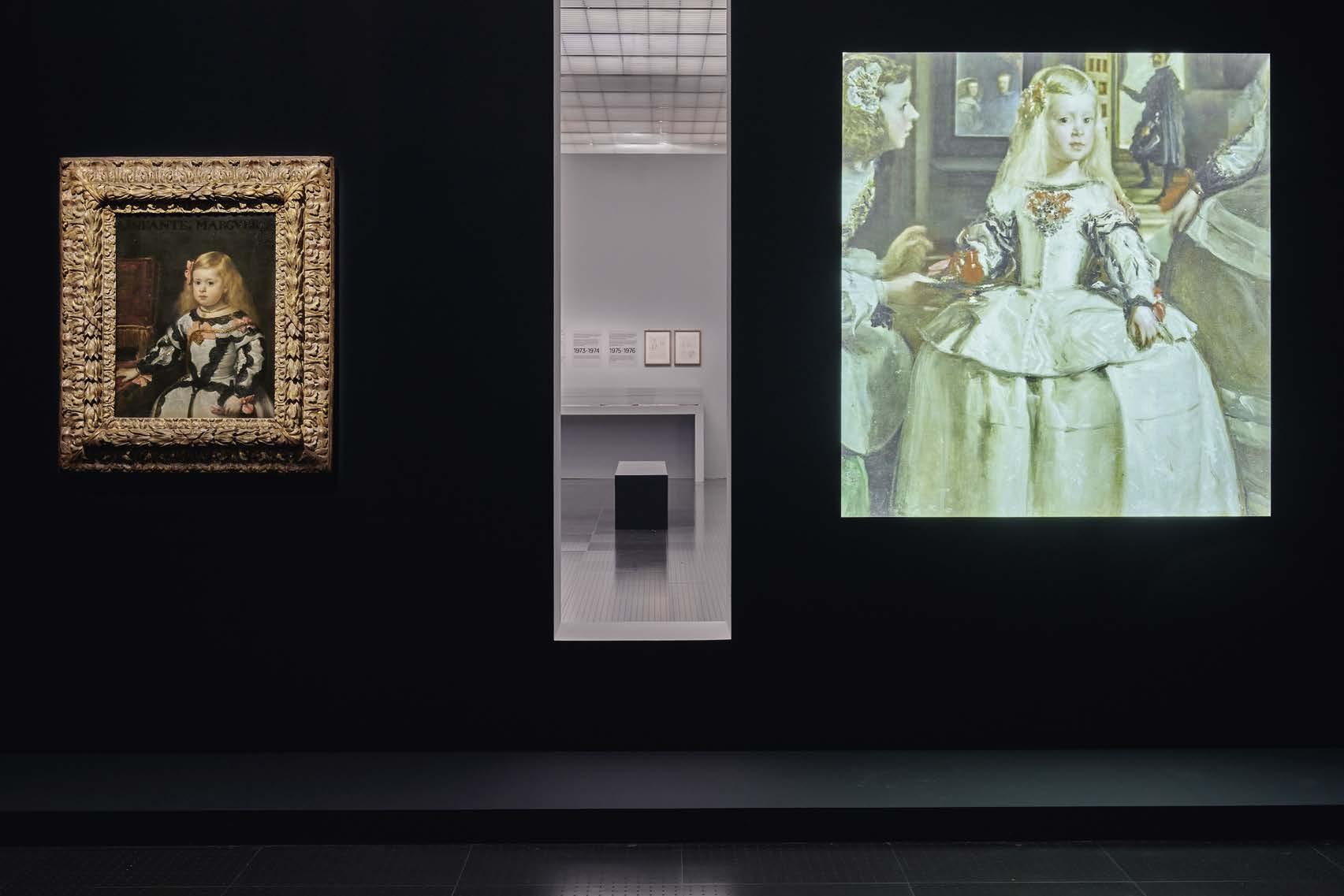
97
PICTURE BY PICTURE
John Elderfield and Lauren Mahony of Gagosian speak with the National Gallery of Art’s Harry Cooper about the new and expanded version of Elderfield’s 1989 monograph on Helen Frankenthaler that Gagosian, in collaboration with the Helen Frankenthaler Foundation, will publish this summer. The conversation traces Elderfield’s long interest in Frankenthaler’s work—from his time as a young curator at the Museum of Modern Art, New York, to the present—and reveals some of the new perspectives and discoveries awaiting readers.
REVISITING FRANKENTHALER

HARRY COOPER This is a new book, but it’s also an expansion of an old book, so I thought it would be interesting for you to remind us of how the old book came about.
JOHN ELDERFIELD Well, I met Helen in 1976, when, as a newly appointed curator at the Museum of Modern Art [MoMA], I’d done my first exhibition, which was on Fauvism. Helen saw the show and left a note saying she’d thought it was wonderful. That was it. I got a call a few days later saying “Did you get my note?” And I said “Yes, I got your note.” And she said, “Well, I put my phone number on it.” I replied, “Well, you know, maybe it’s just a cultural difference. In Britain, if somebody says something nice about you, you don’t call back, because it’s like you’re asking them to do it again.” And she said, “Well, you obviously haven’t been in New York for very long” [laughter ].
HC And she asked you to write about her?
JE Yes, eventually, after she’d read the Fauve catalogue. But Barbara Rose’s book [Frankenthaler, 1972] had been published not so long before, by Abrams, and the idea of doing another book so soon just seemed crazy to me. By the end of the ’70s, though, I’d gotten to know her more and had seen more of her work, and she brought it up again. I was going through a period at MoMA when I was doing a lot at the museum but I did have time for an outside project, and I thought there was definitely more to say about Frankenthaler. So I said yes. She and I started to look methodically at the work that was in her possession. She’d kept a lot of paintings, going back to her early exhibitions, since she hadn’t sold much then. We began unrolling canvases, which made me realize that I should actually write an art-historical book rather than a critical book, or at least one that contained both approaches.
HC Because the work impressed you as needing that?
JE Yes. I’d known about Mountains and Sea [1952], but hardly anything preceding it. Going through and seeing how enormously productive she’d been, I found myself writing more than I’d thought I would, going almost picture by picture. But I think I’d just gotten through the ’50s when— because I’d become so tied up with MoMA projects again, and of course had to put them first—I had to set it aside. I did quite a number of MoMA shows in the 1980s, one on top of another, and it became impossible for me to restart the Frankenthaler project.
HC They do that to young curators, right?
JE Yes, I know it. And it got to a point where Paul Gottlieb, who was running Abrams then, took me to lunch and said, “Well, John, you’re never going to get this done, so why don’t we get somebody else to do the other half of it.” Very clever. I therefore started up again.
To begin with, I realized that what interested me in Helen’s work before Mountains and Sea was seeing the many different artists she was working through in such a short amount of time. Amazingly so. In 1951 she’s looking at [Arshile] Gorky, looking at [Vasily] Kandinsky—
HC —[Joan] Miró—
JE Amassing these influences. I think some of this certainly had to do with her romantic relationship with [the critic] Clement Greenberg, their going to exhibitions together and talking about work together. And through Greenberg she was introduced to Jackson Pollock and David Smith and other artists of that generation.
I also realized that her path in the ’50s after Mountains and Sea wasn’t as smooth as it had appeared in Barbara’s book. For example, there was this strange period in the mid-’50s when she went back to a heavily painterly, more conventional AbEx kind of work, which she came out of in the later part of the decade. The original book told the story in that way. One big change between
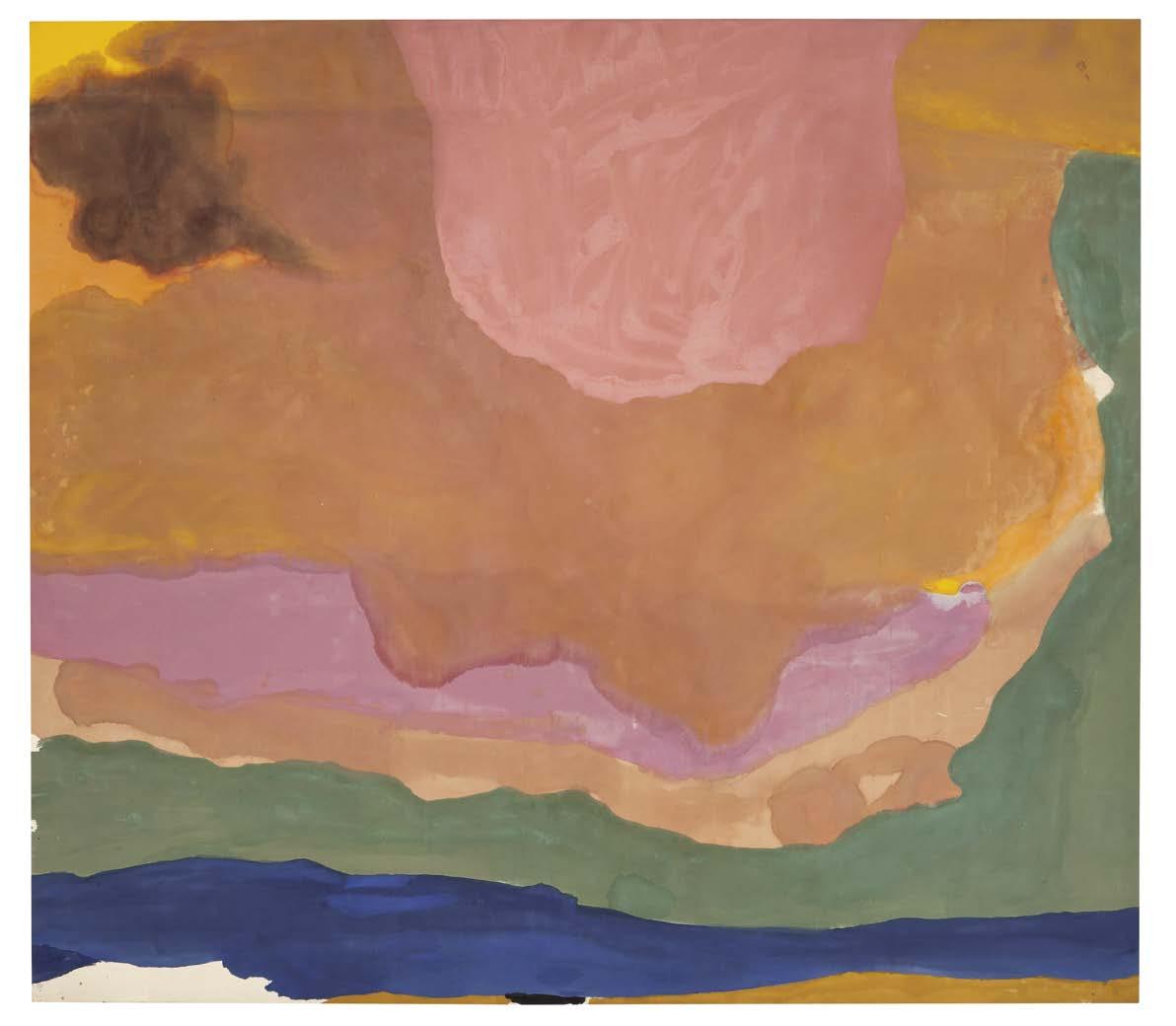
what was in that earlier book and what’s in the new one was that by the time I’d started on the new volume, Lauren and I had worked together on how many exhibitions together at Gagosian, Lauren, along with the Helen Frankenthaler Foundation?
LAUREN MAHONY About seven or eight.
JE And the first one we did, on the ’50s, was done in—
LM —2013, about a year after Helen died, and before the Foundation became active.
JE Those exhibitions provided a way of looking again at a great deal of her work. One exhibition that was transformative, for me at least, was the one we did in Paris [in 2017], which dealt with works from the end of the ’50s and early ’60s. For reasons I don’t quite understand, Helen and I hadn’t really looked at these when we were working on the first book. She went through this rougher, more painterly period from ’59 to ’61, which was entirely absent from the first version of the book. That had to go in.
HC There’s one thing you treat in the new book that you deliberately did not treat much in the old book, which is the reception of her gender and issues of feminism, whether negative or positive, as they changed over the years.
JE For the 1989 book, right when I started, Helen and I talked about what it should include and what it shouldn’t. She said, “Well, I really want it to be about the art,” which was what I wanted too. And I said, “So we’re not going to write about your life except for certain key things that people have to know, such as you were with Clem for five years, and then you married Bob Motherwell. But I’m not going to talk about your lovers.” And she said, “I also don’t want to be treated as a woman painter.” I said, “Well, I have no interest in doing that.” However, when I began on the new book some three years ago, I certainly became aware that the situation was now different, and it was necessary to
Previous spread: A crew installing Frankenthaler’s Guiding Red (1967) at 2 World Trade Center, New York, 1977. Photo: André Emmerich, André Emmerich Gallery Records and André Emmerich Papers, circa 1929–2009. Archives of American Art, Smithsonian Institution
This page: Helen Frankenthaler, Flood , 1967, acrylic on canvas, 124 ¼ × 140 ½ inches (315.6 × 355.6 cm), Whitney Museum of American Art, New York. Purchase with funds from the Friends of the Whitney Museum of American Art, 1968. Photo: Sheldan Collins
Opposite: Helen Frankenthaler, Mountains and Sea , 1952, oil and charcoal on canvas, 86 ⅝ × 117 ⅝ inches (220 × 298.8 cm), Helen Frankenthaler Foundation, New York, on extended loan to the National Gallery of Art, Washington, DC
Following spread, left: Helen Frankenthaler, Painted on 21st Street , 1950, oil, sand, plaster of Paris, and coffee grounds on sized, primed canvas, 69 ⅛ × 97 inches (175.6 × 246.4 cm), Hirshhorn Museum and Sculpture Garden, Smithsonian Institution, Washington, DC. Museum purchase, 1980. Photo: Lee Stalsworth
Following spread, right: Helen Frankenthaler, Untitled , 1996, acrylic and charcoal on paper, 40 ¼ × 60 ⅛ inches (102.2 × 152.7 cm), Helen Frankenthaler Foundation, New York. Photo: Rob McKeever
Artwork © 2024 Helen Frankenthaler Foundation, Inc./Artists Rights Society (ARS), New York
100
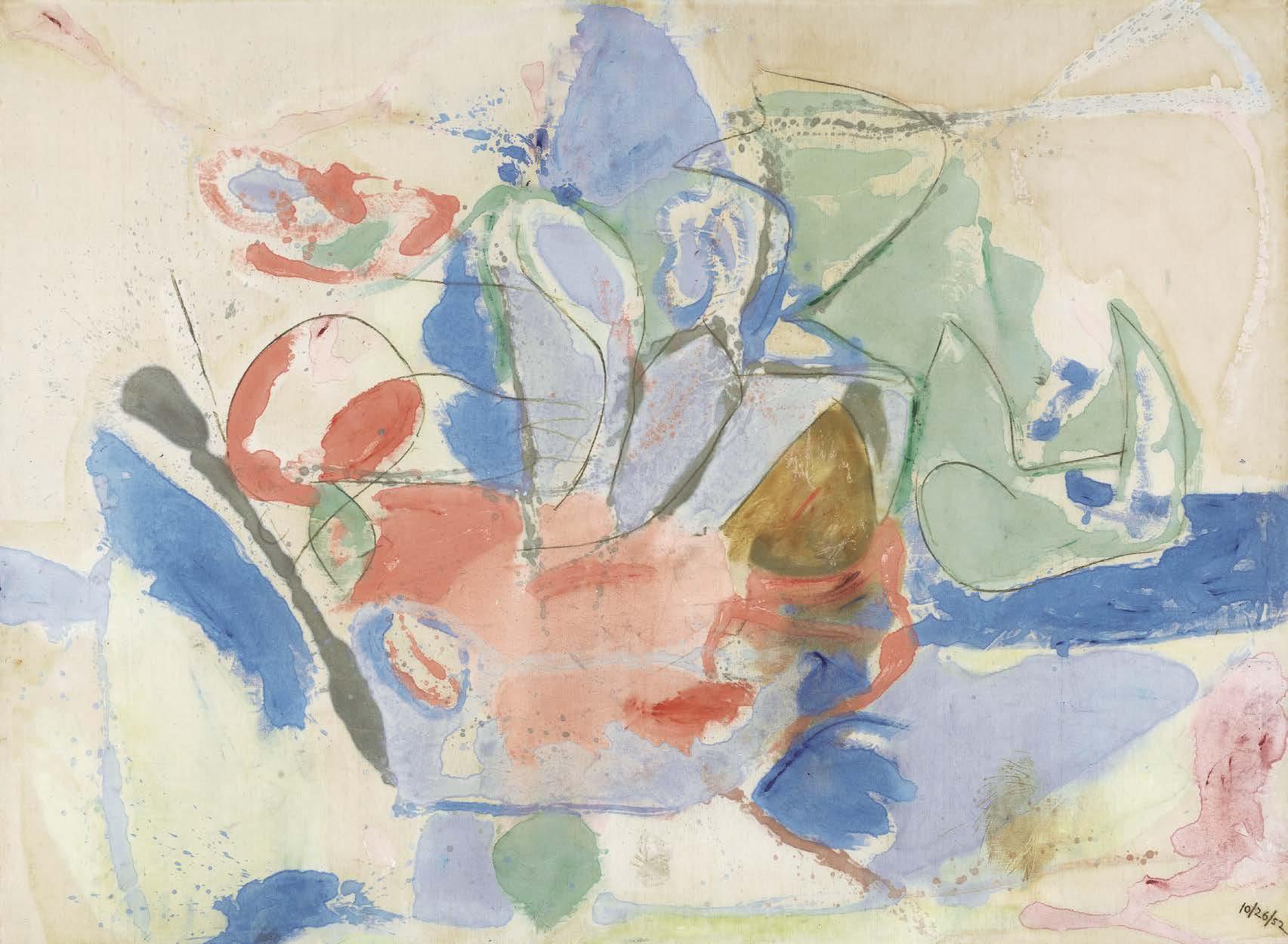
deal with her reception as a woman painter, negative and then positive. I felt it just had to be there, in part because of how younger artists of the ’70s had responded to her work. The anthology that Katy Siegel published with Gagosian [“The heroine Paint”: After Frankenthaler, 2015] was wonderful in that respect, really showing how people were embracing the idea of being a woman artist. Helen, in contrast, didn’t want to be thought of in any sort of feminist terms.
HC So she wasn’t aware of the reception of her pouring and staining in terms of an essentializing of feminism?
JE I think she had to know some of it. I’ll quote the wonderful thing [Henri] Matisse once said: “I am only interested in myself.” And I think Helen was a bit like that.
HC I have a question about scale, and this must be a challenge for any curator of Frankenthaler: you can’t fit that many works in a show. And I really can’t think of another painter, except maybe Frank Stella, who needed to work at that scale that consistently. You don’t really discuss that directly; it’s just part of the atmosphere of the book. But why do you think she needed to work on that scale, the tento-twelve-foot expanses?
JE Well, there was a moment when I frankly do think the size got to be too big. Some works were enormous, like the huge picture she did for a world’s fair [Expo 67] in [Montreal,] Canada.
LM The painting later installed at the World Trade Center in Manhattan, Guiding Red
HC What do you think she needed the scale for?
JE I think maybe some of it was, “I can paint as big as the boys.”
HC Yep [laughter ]. Bigger, bigger.
JE Bigger, yes. And I think also to see what the result would be like if color occupied such a large area.
HC She seems to have adjusted the scale of a painting’s internal elements along with the size of the canvas in an interesting way.
JE Of the larger ones, I think Hint from Bassano [1973], where there’s a lot of activity, was more successful than ones with areas of uninflected color.
HC She certainly needed a degree of scale to enter the painting and stand on the canvas as part of her working method. She said of Mountains and Sea , which was inspired by a trip to Nova Scotia, “The landscapes were in my arm as I did it.” So it’s the whole motion of the body for her, which gets into one theme that you bring out: of Frankenthaler as a landscape painter in some essential way, a painter of not particular landscapes but of the feeling of landscape.
JE I think she is. It’s in the whole tradition of Western art: standing in front of and looking at something, looking at the space. I think that she was continuous with that idea.
There was an interesting exhibition of Helen’s work in relationship to landscape and the work of J. M. W. Turner in Margate, England, in 2014. Lauren, you and I were there together?
LM Yes, ten years ago, at the Turner Contemporary.
JE It’s a wonderful gallery and it’s more and more active. And I remember there was a panel
there on this topic, and Clifford Ross [a nephew of Frankenthaler’s and a board member for the Frankenthaler Foundation] was saying she’s in the tradition of the sublime, and I said, “I absolutely disagree with that.” And the moderator, Tim Marlow, said, “John apparently doesn’t agree with that” [laughs ].
LM You made a joke that you’d never heard Helen refer to anything as sublime except dessert [laughter ].
HC So would you say she was more immediately in the present tense of sensory experience, then?
JE I think she was suspicious of art that was designed for effect.
HC And what do you make of this artist painting these huge swaths of sublimated landscape in New York City? I mean, she didn’t move out to Connecticut for quite a while. Some trips. But it’s almost a refusal of the immediate environment, is that right?
JE Yes. Although for some while she was going to Provincetown for, I don’t know, a couple of months every year. But I don’t think the Provincetown pictures are any bigger than the ones done in New York.
LM There’s a great photo of her with Flood [1967], the Whitney’s painting, which was made in Provincetown; it’s huge in scale but not as panoramic as some of the ’70s ones you’re talking about. I think she made that epic World Trade Center painting, Guiding Red , in New York: she had the space here to do it.
HC And you do point out that it’s never pure nature: there are these bursts of artificial color in
101

her paintings, synthetic intrusions that you connect to the pastoral, to an idea of seeing nature through culture.
JE Also, you’re constantly made aware that these are “made” things. In reproduction, of course, that’s less evident, but certainly standing in front of the works, they aren’t all disappearing soakstain works; there are marks on the surface, which constantly remind you that she’s there doing the mark-making.
HC Throughout your career, you’ve spent a lot of time on Willem de Kooning and you’ve spent a lot of time on Frankenthaler. They figure in the book as opposite poles, in a way.
JE Well, I think they do, but they’re also linked by both being people believing in continuity through change. They both had to keep changing all the time to avoid having a signature style. I think at times that pushed them to move past stages of their work you’d wish they’d done more of, but I think they both thought the worst thing would be to copy yourself.
HC They’re both so visually literate and aware of history, probably more than most of their colleagues, so they carried with them the burden of the past, and of pushing against that.
I want to ask you about process, too, because I found myself wanting to know how she’s working, how she’s creating these paintings. You’re sparing, but you let us know key points: when she primes or doesn’t prime, when she moves to acrylic, when she’s working on the floor, when on the table. And yet it seems like the heart of the book is more formal, not really an investigation of materials and methods. How did you
strike that balance? Some people would have just gone nuts with her process and the sponges and whatever she’s using, and you leave that somewhat mysterious.
JE Well, I didn’t intend to be mysterious, but very factual. Obviously process is an important topic to address, but I think you can too easily become more preoccupied with the process of how a painting is made than with how it’s delivered to the viewer. I felt that I should only address her process when it changed.
LM She regarded drawing or color drawing, not color itself, as the basis of her work. We’ve talked about her risk-taking, her relation to landscape, her use of art history—maybe we could talk about her drawing?
HC Mountains and Sea has been at the National Gallery for many years on long-term loan from the Helen Frankenthaler Foundation, and I’ve been fortunate to be living with it and taking care of it. And Mountains and Sea has this charcoal drawing in it, which I think you suggest came early in the process? And she then doesn’t really do a painting like Mountains and Sea again, it seems to me. Yet it’s so important. Help me out with that.
JE Well, I do talk periodically of how she has certain composition types that in a way look back to Mountains and Sea , where she has drawing along the bottom and things resting on it. That’s something that keeps coming back time and again. Also the pluming elements—
HC Flowering, sort of. You point out that even though she quickly realized that she didn’t need the actual drawing in Mountains and Sea , the drawing comes back, drawing with paint.
JE Yes, I think the graphic impulse is there. At times it’s less prominent, but during periods like the early ’70s, it comes back onto the surface with the paintings influenced by Morocco. Then it disappears, then comes back again.
HC The drawing elements are more suggestive than declarative.
JE There’s ambiguity, but she didn’t engage with double imagery, the way Jasper Johns used to create something that looked like one thing and then turned into something else. With Helen it’s not like that, it’s very much, This is what it is. And then you look at it and you think, Well, yes.
HC Right, it’s not entirely clear to the viewer from the outset but there are no doubles or switches involved.
JE When we were looking at her painting Nude [1958], Helen pointed to the rectangle at the bottom with something in it and said, “Well, that’s an animal.” And I couldn’t, and still can’t, figure it out.
HC It does have some squiggly lines coming out of it.
JE Yes. And I figured I wasn’t going to go through the menagerie and say, “You mean a crab?” [laughter ]
In addition to drawing, another type of work on paper she got involved in was printmaking. She sometimes painted quickly and I think printmaking was the counterpoint to that. Some of these prints had up to twenty different proofs. The woodcuts in particular had many, many layers, some with more than eighteen separate woodblocks. They took a long time to make. But I think she liked printmaking because of that, because it was
102
an absolutely different activity from what she was normally doing.
HC I haven’t seen a lot of the work on paper, but what you reproduce in the book is gorgeous. Those works are so different. I mean, the color isn’t as bodied, there’s a lot of transparency and atomization, and just a totally different register to the work.
JE I think the print Madame Butterfly [2000] is extraordinary, as well as the amazing Tales of Genji woodcuts [1998], which have up to fifty-three colors. Examples of both are reproduced in the last chapter of the book.
LM We talked about the genesis of the first book. I’d love to hear you talk about the making of this new book, and why now, and what you wanted to be different about it. In particular, could you speak a little about the last chapter, on works from the ’90s and beyond? How did you select those works?
JE Well, this book started with Elizabeth Smith, the executive director of the Helen Frankenthaler Foundation, asking if I would be interested in writing a final chapter dealing with the work done after the first book was published. And my immediate response was, “I’ll look at the book again and see what I think, but basically it’s like trying to put a young arm on an old body.” Would it really work out? So then she came back and said, “Well, what if you made some small adjustments to the 1989 book, then maybe we could do it on that basis?”
At that point I read it through from the beginning to the end, and some parts of it I really enjoyed. At others, I cringed, and I felt that if this were going to be done, it would have to be done in a more substantial way. But this was right at the beginning of covid, and I thought, “Well, I’m here at home, so why not?” So I started going through the existing 1989 text, marking things to be retained, things
to be revised, and things to be gotten rid of. I just went through slowly, chapter by chapter. And when I was in the middle of it, I realized what I’d allowed myself to be talked into.
HC Revising the whole thing.
JE Exactly, and it has occupied me for the past two or three years. At least, it was the largest of my many projects over this period—I advanced it periodically while also working on a fairly wide range of other artists, from Chardin and Cézanne to de Kooning and Jenny Saville. But we kept moving the process along to the end. It was a complicated, time-consuming process in different ways—more so than for any book I’ve written—involving a group of people at the Helen Frankenthaler Foundation as well as at Gagosian, the publisher.
The selection of illustrations for the 1989 book I’d done by working with Helen and Maureen St. Onge, then her assistant and now the director of collections at the Foundation. Helen really pressed to have certain works included, not all of which I was really keen on. (I think it’s often the case with artists that they want to give priority to recent work.) In the new book we had to rebalance the selection of illustrations to make space for those in the final chapter. Maureen and Cecelia Barnett, collections manager at the Foundation, facilitated my seeing many paintings to aid the selection. And obviously, none of the image files used for the 1989 book were of any use anymore, so all had to be rephotographed or sourced, and Grady O’Connor at the Foundation took on the daunting task of assembling the around 400 needed.
At the same time, my first reader, Jeanne Collins, and then the editor David Frankel, pondered every sentence I wrote, while Maureen and the Foundation’s archivist Sarah Haug fact-checked
everything and the book’s designer Katy Homans followed our progress. Eugenia Bell coordinated the Foundation’s communications with Gagosian, where Lauren, who is talking with us today, managed with great diplomacy and insight the long editorial creation of the volume and supervised its production.
HC The book is very visual.
JE I was given final say on layouts, but it turned out so well because a wonderful group of people were involved in the project who cared about it and talked to each other, including a great designer.
HC I can’t wait to see it as a physical object. Lauren, how is it different from the original?
LM One of John’s goals for this edition was to make it a smaller trim size, more handleable. That was a big task because Helen’s works fluctuate in format: there are a lot of verticals and a lot of very panoramic horizontals, so we had to play with formatting to keep them as grand as they are in real life.
JE We decided early on that we weren’t going to have any foldouts. The designer, Katy Homans, did a great job.
HC And it’s all in color this time.
LM Yes, a lot of the early works in the original book are reproduced there in black and white. Luckily, we were able to find and shoot them and reproduce them in color for the first time.
HC Congrats to both of you. I can’t remember reading a long monograph in recent years with this kind of devoted detail, a classic monograph with plenty of analysis and appraisal and description and just all of the things that people don’t do that much anymore.
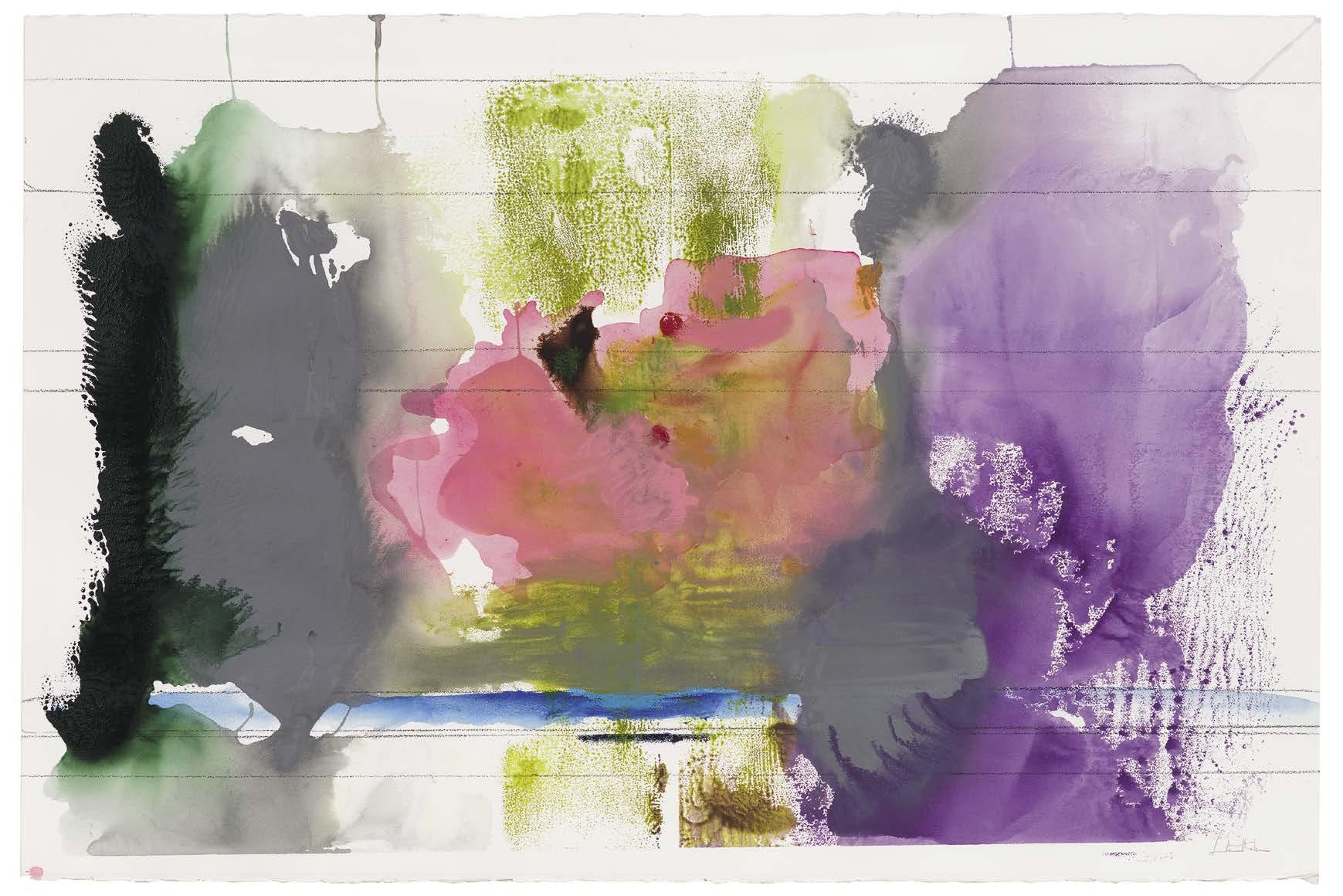
103




ÉLIANE RADIGUE
TREVOR HORN
Gagosian
Music (2) (8) (24) (28) (32)
&

MY HOT GOTH SUMMERS
Dan Fox travels into the crypts of his mind, tracking his experiences with goth music
in an attempt to understand the genre’s enduring cultural influence and resonance.
Music Gagosian& DANFOX
1. Summer 2023
A friend had a spare ticket to see the Sisters of Mercy at the Kings Theatre in Brooklyn. His date had flaked. Did I want to go? I was never a goth—the Sisters are core-curriculum goth—but many of the subculture’s touchstones were meaningful to me. Weimar cabaret and ’60s psychedelia. Scott Walker, David Bowie, and Roxy Music. J. G. Ballard, Expressionist cinema, Surrealist literature. Goth picked from a buffet of past styles, plating Pre-Raphaelite with punk, the art deco with the art brut. Like goths, I enjoyed the romance of medieval architecture and dusty museums, owned a few books about the supernatural. I thought black suede boots with a leather jacket looked good. Though I never wore makeup or crimped my hair, I remember teenage friends discussing which mixtures of egg white and mousse worked best for spiking their hair like Robert Smith of the Cure. I was a lifelong fan of that band. The Sisters left me indifferent.
Their songs sounded the same to me. Parade-ground drum machine, mid-tempo chugchug guitars, stentorian baritone vocals. It reminded me of the music that Hollywood filmmakers used to put in cop movies when the hero goes to an “underground” nightclub in search of clues and finds behind an unmarked door a silly confusion of mohawked punks and mustachioed leather men watching women dancing in cages. But this was a sticky August and the Kings Theatre—built in 1929, originally a movie palace, with over-the-top interiors inspired by the palace of Versailles—was only a short walk from my apartment. The gig promised air-conditioned spectacle. Sure, I said, why not, it’d be a laugh.
At every cinema in New York that summer, audiences for Barbie were turning up in pink. Outside the Kings, the sidewalks filled with black. Unbelievably—comically—a sudden, violent thunderstorm hit, and in the strobe of lightning I saw delegations arriving from every goth tribe. Die-hard Sisters fans in mirrored aviator shades and leather gloves imitating the band’s front man, Andrew Eldritch. Vampire goths wearing stilettos and floor-duster trench coats, hair teased high, chalky makeup. Cowboy goths in black Stetsons and Cuban heels. Dreamy, consumptive-Victorian-poet goths wrapped in crimson tulle and purple paisley, jangling silver talismans and bracelets. Steampunk goths in flying goggles and top hats. Sex-positive fetish goths in not-very-much. Industrial goths with shaved heads and black camo pants cut from high-tech fabrics. Biker goths grimy with engine grease. Anarcho goths in combat boots taking a night off from the class war. Creepy lone male goths in neat black shirts who possibly moderated incel Reddits. Most of the crowd were decades into maintaining their corner of the subculture. Younger ones were mixing the signals, establishing new branches of the family. In the 1980s you would see the phrase “Punk’s Not Dead” stenciled on the back of studded leather jackets. “Goth’s Undead” would have been a good rejoinder because it never went away, it kept on mutating. This parade reminded me how much commitment goth demanded.
The Sisters delivered. Mid-tempo chug-chug. Bossy baritone. Parade-ground drum machine. (They named it Doktor Avalanche and aside from Eldritch, it was the only original member of the band remaining.) Two young gym-bunny guitarists pouted and posed, one foot on the stage monitor, reveling in rock priapism. Eldritch prowled the stage in his aviators, Instagram-aware of how he was silhouetted by towering columns of spotlights. He marched around like a small-town demagogue, pointing at the sky, pointing at the crowd, puffing his chest, an ambitious scoutmaster trying to muster his Cubs for a military coup.
Eldritch’s basso had been quietened by age and it sank low in the muddy sound-mix. The occasional word pushed forward: “prayer,” “flood,” “blood,” “night.” A lot of “night.” I looked at the crowd singing along, swept up by the show’s theatrical seriousness. How many wanted to believe in the Sisters’ lyrical universe? To imagine themselves as agents of darkness—leather raincoats billowing in the wind like characters in a Neil Gaiman comic—inhabiting a world of fallen empires, heat and shadows, women named Lucretia and Marian, biblical destruction imminent. Behind the parody strongman act, Eldritch had been a vocal anticonservative; in interviews he used to talk about anarcho-syndicalism. But Goth always had a problem with fringe fascists and literalists who couldn’t separate fact from satire. I wondered about the politics of a few in the audience. Wondered if some took the panto machismo at face value, if some even connected this to politics.
Then I clocked those standing nearby who had gotten the giggles. They knew that one definition of goth was comedy.
2. Summer 1986
I was ten. My brother had a cassette tape by the Cramps called OfftheBone(1983). The first track on the album was “Human Fly” and it was the funniest song I’d ever heard.
Goth was glamour and grime. It was enamored of the past. It was futuristic and primed for the collapse of society.
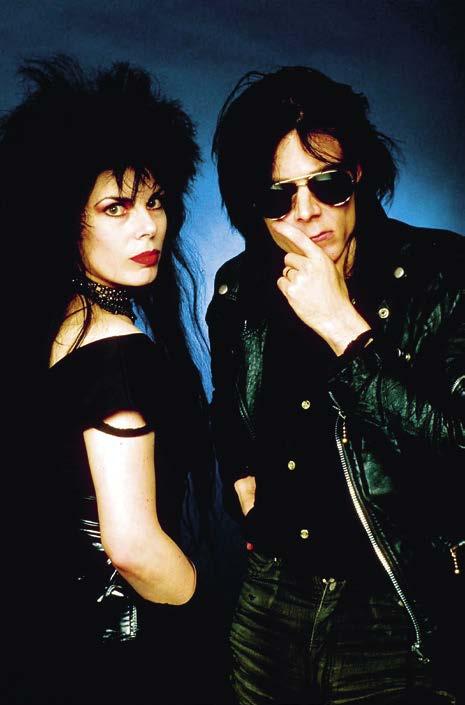
3 Music
Opposite: Siouxsie Sioux of Siouxsie and the Banshees performing at the Hammersmith Odeon, London, 1978. Photo: Gus Stewart/ Redferns Above: Sisters of Mercy, 1988. Photo: Brian Rasic/Getty Images
“Human Fly” began with a descending chromatic guitar note sauced in reverb and tremolo, which then crashed into a loud, mean, primitive strut, a fuzzed-up stomp round-andround the basic blues. The singer, Lux Interior, sounded like a hyperventilating Elvis. He moaned in agony about being a mutant insect, with “96 tears and 96 eyes” and “a garbage brain that’s driving me insane.” “Bzzzzzzz—rock tonight!” went the chorus, “and I say bzzzzzzz—rocket ride!” The song had me in stitches. Further into the tape was “Surfin’ Bird,” a psycho fit of surf-themed onomatopoeia, and the ballad “Lonesome Town,” in which Lux pretended to break down in tears in the studio.
When I later turned into a music-nerd pumpkin, I learned that half the tracks on Off theBonewere covers of lost rockabilly numbers from the 1950s. “Surfin’ Bird” was the Trashmen, “Lonesome Town” was Ricky Nelson. The “96 tears” were an allusion to an old 1960s garage song by ? & The Mysterians. (They’d beaten Prince to having a symbol for a name by thirty years.) Founding Cramps members Lux and Poison Ivy Rorschach— inspired noms de punk—had met in early-’70s California. They fell in love through a shared interest in early rock ’n’ roll, monster-movie kitsch, horror comics such as Tales fromtheCryptand TheVaultofHorror . They loved groaning puns: GravestHits(1979) was the title of one of their EPs. Notoriously, in 1978 they played a gig for patients at the Napa State mental hospital. “Somebody told me you people are crazy, but I’m not so sure about that. You seem to be all right to me,” Lux told their audience. According to Cathi Unsworth’s goth history SeasonoftheWitch(2023), the band developed a rabid following soon after their first UK shows, in 1979. Among their fans was Siouxsie Sioux. “The Cramps should be bigger than Blondie,” she declared.
Their emergence roughly tracked that of the Gun Club, from Los Angeles, and the Birthday Party, from Melbourne. The image constructed by these bands suggested that they had risen from an Australian-American Styx, channeling Manichean roots music about murder, religion, and sex. It was Grand Guignol, confrontational, often dumbly macho. (The Cramps were inoculated to some degree by camp.) The sound was dissonant scrapyard blues, with heavy tom-toms, twangy guitars in shrouds of reverb, vocals styled after Elvis and Johnny Cash. (A similar sound would be echoed a few short years later in the films of David Lynch. Another film director, Wim Wenders, would become a big fan of the Birthday Party and their spin-offs, the Bad Seeds and Crime & the City Solution, including both in his 1987 movie WingsofDesire.) These groups were hypnotized by ’50s America, transfigured and abraded by the Stooges and the violent experimentalism of post-punk, possessed by a dark humor worthy of the Surrealists.
Those bands—and my early childhood—came on the tailwinds of a ’70s revival of the ’50s. AmericanGraffiti (1973), HappyDays (1974), TheRockyHorrorShow (1975), Grease(1978). A retro taste for science-fiction B movies, roadside diner design, chrome tail fins on cars, vintage American clothes. In the UK this provided escapism from the grim mood of the country at the time, sunk low by industrial action, a tanking economy, and the shadow of geopolitical Armageddon. The look was partly disseminated through glam rock and partly fed by the influence of London clothes shops such as Flip, Johnson’s, and Too Fast To Live Too Young To Die. American television shows from the early ’60s were imported cheaply by British networks that broadcast TheTwilightZone, TheInvaders, TheAddamsFamily , and TheMunsters. Critic Peter York called this “slime time” TV, “untouched by higher values.” “It is the sheer confident tackiness of a time of chrome brightwork and bolt-on accessories,” he wrote. “The best of it is full of clues to a Mythic Age, pre-1963 America.” My brother helped tune me in to the tongue-in-cheek pleasures of American trash but I was still too young to have anything but the most inchoate pop-culture literacy.
My response to the Cramps was visceral. I loved their mischief—the comedy voices and noises, the caveman stomp-stomp. I took a boyish delight in the macabre, in the way the band’s logo dripped with slime and blood. The heavy-line comic-book artwork: ghoulish Lux clutching a femur-handled knife, a skull with its cranium turned into a candle tended by rats. It was sheer fun. I also sensed it was about sex and death, whatever I conceived those to be at age ten. Was that a working definition of goth? A comedy that prefigured your own fate?
3. Summer 1989
You heard the band names on John Peel’s BBC radio show: Southern Death Cult, Sex Gang Children, Fields of the Nephilim, Gene Loves Jezebel, Alien Sex Fiend, the Mission, UK Decay, Miranda Sex Garden. (“Sex” cropped up often in goth band names.) Sometimes the name overpromised occult/erotic revelations but the music would sound


laughably cock-rock or vaporous and anemic. Sometimes name and noise would collide and explode in heaven-sent indie sublimity. (Cocteau Twins spring to mind.)
On a Saturday afternoon on Cornmarket Street, the main shopping drag of my hometown, Oxford, England, you’d spot the names again on band T-shirts and observe the clothes they paired with, what effects were being generated. The basic palette was black, purple, and silver. There was usually leather in the mix, often something frayed or wafty too. Patchouli scent, men in makeup—at least on those willing to brazen the lagered Saturday football crowds. Category distinction lay in the details. Cowboy boots or army boots. Leather biker jacket or trench coat. Buzz cut or bird’s nest.
It’s unclear where the subcultural application of the word “goth” originated. One early sighting is in a write-up of the Doors in the 1960s. A decade later, producer Martin Hannett used it to describe
4 Gagosian&
Lux Interior of the Cramps, performing at Pukkelpop Festival, Sanicole Airport, Hechtel, Belgium, 1990. Photo: Gie Knaeps/Getty Images
Alien Sex Fiend, 1983. Photo: Steve Pyke/Getty Images
Joy Division. “Goth” had circulated as a put-down for post-punk bands such as Bauhaus and Siouxsie and the Banshees, who hated the label. Insult turned to celebration, and club nights such as the Batcave in London’s Soho leaned into the references. Horror movies, Cabaret (1972), RockyHorror , Aleister Crowley, Romantic poetry, psych rock. The game was doomed-youth dress-up, theatricalized refinement. (The Batcave was run from a townhouse that had originally housed the Gargoyle, during the interwar years the most fashionable nightspot for the Bright Young Things generation. The original interior was designed by Edwin Lutyens and Henri Matisse.)
Goth became lazy shorthand for wearing the color black and being interested in vampires. From a certain perspective it looked profoundly silly, and was easily dismissed as undergraduate romanticism. Yet this was also what made it fascinating. Goth was indeed romantic. Unusually for a pop subculture, it responded to the world with historically minded references. In practice the term was capacious. Oxford had long attracted people interested in alternative lifestyles, given its medieval beauty and transient international population, a place where progressive and conservative attitudes met. By the 1980s it had plentiful book and record stores, two small art house cinemas, and clubs that were established stops on the band gig circuit. Oxford had its share of small-city violence but there were also enough places where a goth could go and not feel out of place. In the city center throughout that decade, you could observe how goth and post-punk connected a range of attitudes. You’d see left-wing political pamphlets handed out by someone in a New Model Army T-shirt and army fatigues, a thrift-store and lived-in look aligning with music for the free-festival circuit. (New Model Army took their name from Oliver Cromwell’s military organization during the English Civil War—another instance of history inflecting goth.) You could spot fans of Adam Ant, interested in dress-up and escapism, rummaging for old-fashioned evening wear in secondhand-clothing stores. Coil were goth. Echo and the Bunnymen were goth. Marc Almond was goth. Hell, if George Michael could say he liked Joy Division on BBC TV, then Wham! were probably goth too. Goth was glamour and grime. It was enamored of the past. It was futuristic and primed for the collapse of society. Behind all these fantasies were ordinary people named Mike or Susan who were studying French at the polytechnic and serving behind the bar at the local pub.
Acid house was the sound of the summer of 1989. The look was baggy jeans and bright yellow smiley tees. I was thirteen and acid house scared and fascinated me. History now suggests it was the music I should tell people I was into at the time, but the record that blew my mind in 1989 was Disintegrationby the Cure. It was stately, melancholy, cathedral, cut to the proportions of big emotions. With schoolfriends that year I played in a band called the Jennifers and the first song we learned was a cover of “Catch,” a gentle three-chord cupcake from the Cure’s KissMe,KissMe,KissMealbum (1987). I found the Cure companionable, a band whose integrity seemed to derive from the permission they afforded themselves to play across styles. They wrote sad yearners about unrequited love—every teenager needs a stockpile of these—and playful pop. They had swaggering rock-outs, clubby tracks to dance to, and funereal compositions for brooding about sex and death—whatever those things I’d heard in the Cramps now meant to me as I entered adolescence.
The Cure formed in 1976, the year I was born. Led by singer Robert Smith, they initially wrote in bleak, wintry tones, catchy music but styled by the austere astringency of new wave. By the early 1980s, the Cure’s punk sound had grown sepulchral and sparse. Albums SeventeenSeconds(1980) and Faith(1981) contemplated belief, mental illness, and death. They soundtracked a 1981 short film called CarnageVisors, made by the brother of the band’s bass player; whatever that title meant I don’t know but it suggested things literary and modernist. Their look was Oxfam utilitarian, with short hair, black jeans, scruffy leathers. You didn’t need a degree to appreciate their lyrics. They seemed relatable to the average kid and to Albert Camus–carrying autodidacts. The Cure’s music largely ignored American rock ’n’ roll originalism. It inherited the mood of Bowie’s Berlin trilogy: Low, Heroes (both 1977), Lodger(1979). They embodied a thinking person’s despair, the kind of thing that any serious, intellectual person living in Thatcher’s Britain and tormented by the fear of nuclear conflict should be listening to. Their gloom provided an attachment object for the all-or-nothing drama that every adolescent and twentysomething feels they are at the center of.
This markedly bleak phase of the Cure’s music ended in 1982 with their album Pornography . That record distilled the goth sound. Galloping Burundi-style drums, guitars chromed with chorus effects and melodic bass lines. Anything within earshot of the studio was slathered in reverb. Smith had wanted to make an album so desperate the band would self-destruct. Pornography’s nihilism was exemplified by the track “One
In the 1980s you would see “Punk’s Not Dead” on the back of studded leather jackets. “Goth’s Undead” would have been a good rejoinder because it never went away, it kept on mutating.
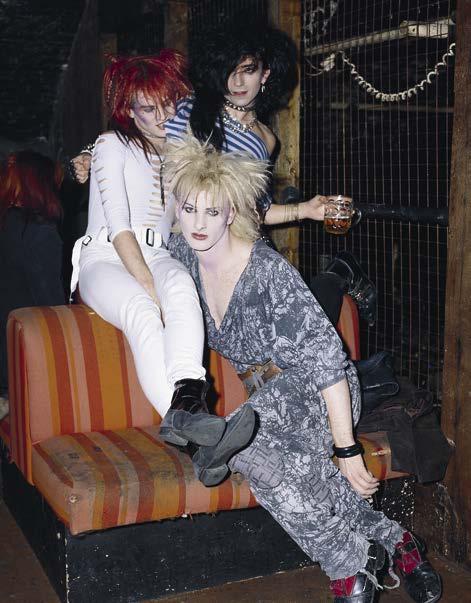
5 Music
Goths at the Batcave, London, c. 1985. Photo: David Montgomery/Getty Images
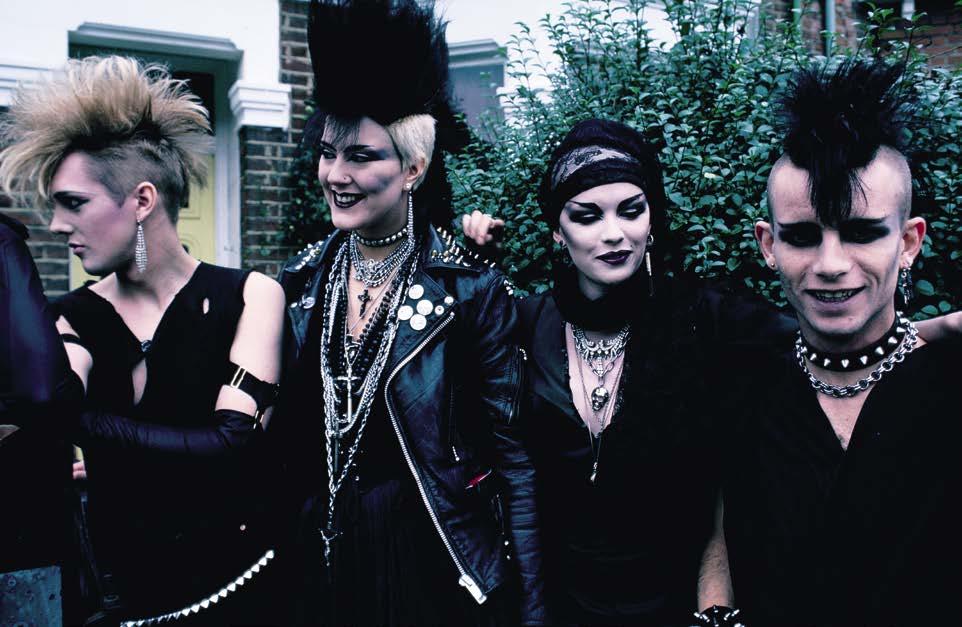

Hundred Years,” which opened with a line so melodramatic it was borderline comical: “It doesn’t matter if we all die.”
But the Cure possessed an appealingly perverse streak. Pornographyled to a brief hiatus during which Smith joined Siouxsie and the Banshees on guitar and, with the Banshees’ Steven Severin, released an album of fizzy psychedelia as the Glove. Winter turned into summer. The Cure put out JapaneseWhispers (1983), a compilation of synth pop songs, and TheTop (1984), comprising ambitious, strident rock tracks. The Cure began to have hits, playing to their talent for hooky melodies. They proved able to pivot from charming whimsy to anthems of stadium-size heartbreak. Smith developed a mannered singing style, using wordless vocalizations and yelps. Their delightfully madcap pop videos, directed by Tim Pope, caught the public’s imagination. With his badly applied makeup, baggy sweaters, oversize trainers, and a huge tangle of unkempt hair, Smith became an unlikely cult figure. By the time of their late-1980s albums The HeadontheDoor, KissMe,KissMe,Kiss Me, and Disintegration, the Cure had become a globally successful touring band. They had grown bigger than goth and become a subculture in their own right. “It doesn’t matter if we all die” was now part of the concert sing-along.
That summer I saw TheCureinOrange, a concert film shot at the beautifully preserved Roman amphitheater in Orange, France, in the August of 1986. The band appears confident. Their look is part goth, part Armani, with Smith wearing a crisp white button-down under an oversize blazer. Partway into the show there is a shot across the audience, taken from a camera positioned at the top of the packed amphitheater. There must be thousands watching the concert. The ancient stone glows. In the distance you can see the French countryside as it begins to blue in the August dusk. The heat of the day is almost palpable.
I’d never been to France, I’d never been to a rock concert. But that single shot intimated what was possible if you decided to make your own scene: that there was a culture of people who were arty, intellectual, and broad-minded, who took the best ideals from hippies and punks and built their lives around alternative values and principles in opposition to those of Tory England. A world in which a concert picnic on a warm summer night in the countryside didn’t mean opera at Glyndebourne, it meant post-punk in Orange.
6 Gagosian&
Above: Punks in London, 1983. Photo: Peter Jordan/Popperfoto via Getty Images
Below: Robert Smith of the Cure performing on the French television show Champs-Elysées , 1986. Photo: Alain DENIZE/Gamma-Rapho via Getty Images
4. Summer 2004
I hadn’t listened to the Cure in years. My interests had drifted. But now an old friend, a musician, was rekindling my love for them. “Bela Lugosi’s Dead” (1979) by Bauhaus would get spun at his parties. I got back into the Banshees. He was listening to Sisters of Mercy, Fields of the Nephilim, the Birthday Party. My friend enjoyed the collision of camp and absurd seriousness that goth offered. His interest was self-aware, using it as a conceptual frame for writing music. We joked that he had invented a new genre called meta-goth.
He started attending Slimelight, a monthly goth club at the Electrowerkz in Islington, North London. One night my friend rounded up a group of us to go. It was approaching midnight when we arrived. The crowd leaned toward fans of cold dark techno. There was a lot of fetish wear, rubber, the look more Matrix than Bela Lugosi goth. Representatives of the old guard were catered for during the first hour of the night, when the DJ played old bangers from the Batcave years: Joy Division, Siouxsie, Soft Cell.
I remember ordering a pint at the crowded bar. Shortly after, I noticed that my perception of time was becoming erratic. It seemed to be getting sliced and randomized by an invisible strobe. I remember the dance floor telescoping into a cylinder of fog, trying not to panic, instinctively knowing that I needed to get home. I made it to my bus on nearby Upper Street but quickly became anxious that I had been on the bus too long and that I had overshot the stop near my flat. I got off and saw that the bus had traveled only a few hundred yards down the road. Did I walk the rest of the way back? Find a cab? My memory is blank. The next thing I can picture is my street expanding to the width of a Paris boulevard. My roommate said he woke up to me standing over his bed, tugging his T-shirt sleeve, whispering “I’ve been spiked,” over and over. The effects dragged long into the next morning.
Goth aesthetics—pallid skin, sunken cheeks, sunglasses at night—suggested that heroin was the subculture’s drug of choice. But most goths I knew had interests in selfobliteration as mundane as anyone else’s. Dope, pints of snakebite (part cider, part Guinness) with added blackcurrant to make it look like blood. Mushrooms occasionally. These goths were kids looking for a decent job, hoping to save up a bit of money, go on a nice holiday, get pissed at the weekend. I never found bats-and-witchcraft goth sinister. True malevolence rarely dresses for the job. (“He always kept himself to himself,” as the shocked next-door neighbor would tell the media after the serial killer’s victims were found in the garden.) But creeps are everywhere. What happened to me at Slimelight was like a scene from a kitsch exploitation movie, perhaps something from the studio of Roger Corman involving a young runaway who loses their sanity at the hands of a psychedelic Svengali. “Slime time” TV. Years later, the fact that something so psychologically distressing should have happened at a goth night seems almost funny. Almost.
5. Summer 2017
Life felt miserable and stuck. I felt stuck writing the book I was supposed to be writing about feeling stuck. On a whim I bought a pair of tickets to see Nick Cave and the Bad Seeds play at the Beacon Theater in Manhattan. Songs of murder and retribution might cheer me up.
The Beacon opened in 1929, the same year as the Kings Theatre in Brooklyn. Like the Kings, it was originally designed as a palatial cinema, and its interior was a wild confection of classical and rococo opulence. It seemed like the right place to see the Bad Seeds. They had risen from the ashes of the Birthday Party in the 1980s. Years on they had aged into post-punk/post-goth icons in tailored suits recounting battle stories of rock ’n’ roll excess for the Sunday papers. The old confrontational attitudes had been softened by personal loss and the old surreal humor of the Birthday Party had given way to big ballads of grief. The band still drew on mythic Americana, on the junkyard blues and the Manichean themes, but their sound was now more orchestral in texture, cinematic, as if custom-made for an old American movie house like the Beacon. Cave’s lyrics occasionally leaned macho for my taste, but that summer I wasn’t in much mood for critical sanctimony. I liked the Bad Seeds well-enough for a humid night out.
The audience didn’t resemble the gathered goth tribes I’d later see at the Sisters show. The Bad Seeds’ appeal was broader. I took a friend who pushed us to the front where we could lean on the stage apron, squished between old Birthday Party diehards and people who looked as if they’d come straight from the office or were rounding off a day of sightseeing. For two hours straight the band played, fan favorites, new songs. Cave crooned at the piano, he menaced the stage, he came to the front, looked us in the eye,
and sang inches from our faces. He swam out into the audience, drawing energy from their adulation, then whipping that electricity back around the room. His righthand man, Warren Ellis, tore at his fiddle with furious intent, while the rest of the Bad Seeds maintained a steady watch at the perimeter of the drama.
I’d been ready to be sniffy about the Bad Seeds and now I was transfixed, overwhelmed by the power, volume, and virtuosity. It winked with that Cramps bzzz-bzzzbzzz energy. It had the capacious generosity of the old Cornmarket Street–style parade. Cave played the roles demanded by his old songs: outlaw, hellfire preacher, penitent lover. But he also sang somber new tracks colored by the recent tragic death of his teenage son. And then it struck me: I knew why I was enjoying this. This was great showbiz. All-or-nothing, show-must-go-on stagecraft. And that commitment to performance—the let’s-pretend of goth—was a way for the band to express something from the heart. For days after the show I couldn’t stop grinning, dragged from the crypt into another hot goth summer.


7 Music
Nick Cave performing at The O2 Arena, London, 2017. Photo: Bridgeman Images
Nick Cave of the Birthday Party performing at The Venue, London, 1981. Photo: David Corio/ Redferns
Lonnie Holley’s self-taught musical and artistic practice utilizes a strategy of salvage to recontextualize his past lives.

His new album, Oh Me Oh My , is the latest rearticulation of this biography.
Music
Gagosian&
Lonnie Holley was born in Birmingham, Alabama, in 1950, as the seventh of twenty-seven children, but was raised on the state fairground by a burlesque dancer. At four years old, he was traded to the proprietors of a whiskey house for a bottle of liquor, and at seven, having fled his adoptive home, he was struck by a car and spent months in a coma. At eleven he was incarcerated at the notorious Alabama Industrial School for Negro Children, now known as Mount Meigs, where he endured years of physical and psychological torture. Holley has spent the ensuing decades pushing this story through a self-taught musical and artistic practice, utilizing a strategy of salvage to recontextualize his past lives. His new album, OhMeOhMy , is the latest rearticulation of this biography. As with his sculptures and paintings, which will be presented at Camden Art Centre, London, in July, it is neither denunciation nor denial. It is a unique and defiant demonstration of the way in which trauma is not grown away from, but grown through.
HARRY THORNE Before I was familiar with your visual art, Lonnie, I heard your music. KeepingaRecordofIt[2013] was the first album I came across; JustBeforeMusic [2012] followed, then mith[2018]. I’ve since come to consider all aspects of your practice—music, performance, sculpture, painting—as the same expression in different forms, but I’m curious whether you see a distinction?
LONNIE HOLLEY I am an African-American artist and an American artist but I also see myself as a universal artist. The art that I and some other African Americans have done in the South was about our living conditions—not only how we was living but whywe was living. We were first looked at as property ourself: we never had that feel of freedom to say that we could do the things or say the things or sing the things we wanted to sing. Our lives were hidden behind the lyrics, hidden within the instruments that was being played. Because we had no other place to hide it. It was our sanctuary. It were where we went to be saved.
With all of that understood, I see myself as a collector of information. I was raised like that. I was raised at state fairgrounds, being moved from woman to woman as they cared for me, because they was burlesque dancers and they had their times to come on stage. I was being passed from mother to mother—or should I say, lover to lover: those that lovededme. You could see me as a little boy learning all the bits and pieces, how fiction was put in place for all the movies, how fiction was put in place for every tent that was on the fairground.
I’m the seventh of my mother’s twenty-seven children out of thirty-two pregnancies. I’m considered to be her wild seed, the one that went wildly . Somebody took me away from her and they spread me to the world, wide. Worldwide. Not so much physically, but the intelligence. I was carried from state fairground to state fairground, from carnival to carnival. I was introduced to all of those things. I was learning. We were refused the right to learn, to read and write, but we was learning all the time. They could call us negroes with no sense or negroes with no emotions, no feelings. They could call us animals or creatures, whatever they wanted to call us. But we was humans with brains.
My grandmama explained it better. She said, “When you go into this church, you got to be still and listen in order to learn. You got to be still and listen.” The music allows us to listen. We don’t always need a monitor or a TV screen for music. We just need somewhere comfortable to relax and take in this information. I had that comfortability. I had the time to take in the information that I was receiving. And then it kind of, like, fermented. Fermented like a great wine.
HT You were taking it in, consciously or otherwise. Sounds, settings, those who loved you. When did you start recording these experiences—preserving them? I read that you bought a Casio keyboard and a karaoke machine from a flea market in the 1980s.
LH I knew nothing about preserving. I had no money to buy no recorder, but for some reason I knew that I needed a recorder. I was doing so much, I was singing all day long while I was working. I was moaning and groaning like my grandmother and my grandpa and my mama. I was doing all this stuff—our peoples was always doing all of this stuff. Can you imagine if our peoples had a bodycam on from the time that they got off the slave ships until now? Can you imagine how much information that would have been?
Everything Midas touched, he turned it into gold. I turn it into information. That’s all I be trying to do is make peoples aware that you have on this planet everything that you need. But you have to break it down. You have to remake it. I call it relearning, reestablishing, redoing. Some people call it recycling. My mother recycled every bit of the food:

9 Music
Above: Lonnie Holley in his yard environment in Birmingham, Alabama, a two-acre site that was destroyed by the Birmingham Airport Authority in 1997 to make way for an airport expansion that never occurred. Photo: unknown, 1990s, courtesy the artist
Opposite: Photo: David Raccuglia, courtesy the artist

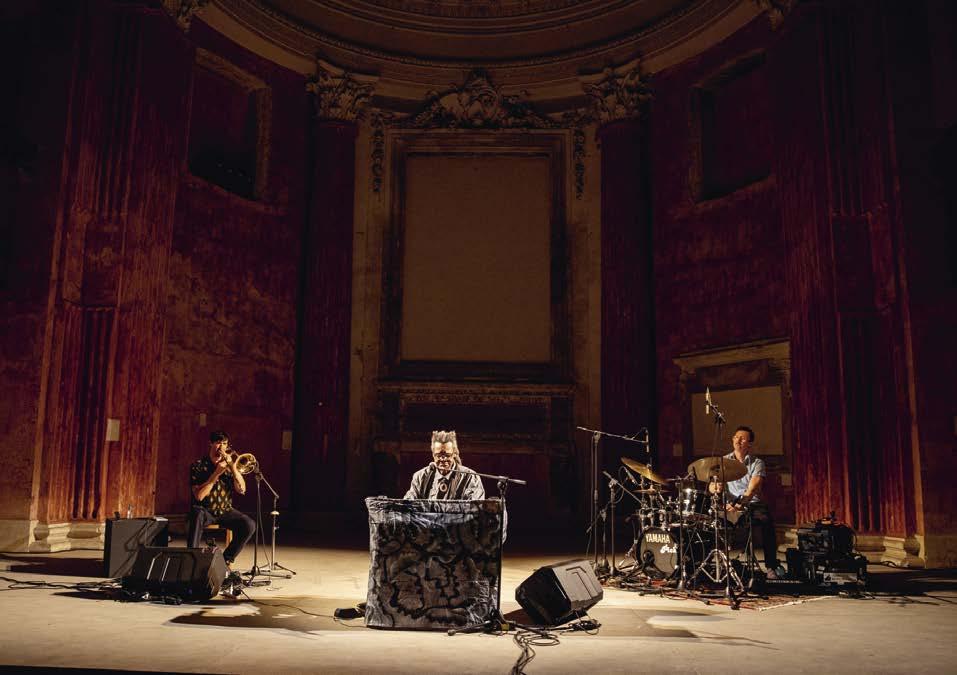
she never threw anything away. She had too many children to throw something away. From a solid meal, she made it into a hash. And we still ate and slopped it and it was good.
HT That idea of recycling, Lonnie, of demonstrating value in that which others discard, it’s so visible in your sculptures. It’s wire, a hose, furniture, charred wood. How does that apply to your music?
LH In ’97 the Birmingham Airport Authority destroyed thousands and thousands of works of mine. They just buried it. The bulldozer with them big old claws went in and tore it all to pieces, like a big monster, it just went in and wrecked it all. It was almost like making it into a gumbo. And I had to realize that from trash it came, to trash it returned. From trash he picked it, and to trash it were torn down, torn to pieces because the City of Birmingham condemning the property.
Even on the plantation we was using our creativity. Every time that black pot was greased and it cooked up everything that we had to cook up in it, all the way down to making the cracklins or boiling down the tatter from the beef, the tatter sunk into the crevices of that castiron pot. It keep it greased. The grease was still there in the crevices, keeping it from rusting and rottening away. So the crevices was very important to our way of life. As a child I snuck into the sewer pipes, counting the little bitty tiny seeds that is being flushed down the drains also. That can what? Get caught up in the waste and grow, grow massive and burst out the sewer pipe.
HT So it’s the same for your music and your art: it’s the discarded seed? The seed that grows from the sewer?
LH Very much. Because it’s coming from the same brain. It’s coming from the same production of thought.
HT Can I ask one more question about the past, Lonnie? There’s a story about the moment you realized that you were an artist: in 1979, you carved two gravestones for your niece and nephew, who had died in a housefire. Was there a similar moment of epiphany with your music?
LH It was a little bit harder to conceive. When my niece and nephew had got burned up in that house fire, everybody was crying,
10 Gagosian&
Above: Lonnie Holley performing at Max Watt’s, Melbourne, 2023. Photo: Jeremy King Below: Lonnie Holley performing with Nelson Patton at the Festival dei Due Mondi, Spoleto, Italy, 2023. Photo: Festival dei Due Mondi, Spoleto
even my mother was crying. Everybody that was living was crying. That was a very, very moody time to come into creativity, to discover that your creativity has been your growth. It was not until the 1980s that I got a true understanding of what music could do. I had already been experiencing music, how it soothes you, how it rocks you to sleep, how it alerts you and make you get up and make you want to move, make you want to groove. After my nephew and my niece got burned up, another niece got burned up in a house fire. I made a song called “Fifth Child Burning,” and that’s where I got that material from. So it looked like each time that I did something or I sacrificed materials to do art for the sake of us living better as humanity, that’s where my blessings came from. They just kept pouring in. Not only did I get blessed to understand, “Okay, now you got to understand how to be appreciative for the wisdom that you have growing. How long are you going to be stupid, Lonnie Bradley Holley Sr.? How long will you need pity in this quicksand field of stupidity?” I also had to realize: no, I don’t need pity. I need work space. I need objects. I need material. I need places for identification. I was all over the place. I was doing nothing else, and then came my music. I found an old karaoke machine and an old keyboard and boxes of cassettes. I tore ’em apart and put them back together and I made them work.
HT When you held that karaoke machine, when you filled those tapes, what was it that you were recording? Can you recall the sounds of those years?
LH I think that’s what’s happening with me now. I think that’s what I’m retrieving. It was in me all the time. All I have to do is sit and retrieve it and utter it out, utter it out. And in the process of uttering it out, I am on that carousel of thought. I’m in that ocean of thought and I’m doing the very best that I can to put it in my net [laughs]. So I dive into that ocean of thought with my net and I retrieve as much as I can—not Internet, manternet. Manto-net. That’s a whole new term. Nobody but you and I know about it. Man-to-net. I will bring it, that man-to-net. That’s powerful, isn’t it?
HT That idea of retrieval is certainly powerful. It speaks to one’s ability to hold the past, to store it and protect it for a time when it’s needed again, when it can be learned from or exorcised. We all collect and contain, but the ability to extract, that must be the skill.
LH I want to go back to a pinpoint of what you just said: to exorcise. To exorcise, to exercise. Exorcise mean to work out something, to allow yourself to work out. Exorcism mean to get something out of you that somebody else doesn’t even know is in you. They call for the high priest to come and do the exorcism on you. But do the high priest always bring a tape recorder to record what they have gotten out of you? My, my, my. . . . That’s where the title OhMeOhMycome from. “What did just happen to me? Oh me, oh my, did that happen to me? Did that come out of me?”
We have to be realerted of what is possible if the spirit choose to use you. Have I not been as deep as I can go in the grave? Did I not put the tombstone in the grave with my niece and my nephew? Was that not an offering? Was I not making offerings to the spirit of death? “Death, you took ’em. Now, Death, I’m gonna tell on you. I’m going to tell every bit of how they was treated.”
HT That declaration—“Death, I’m gonna tell on you”—it feels essential to this new record. More so than on previous albums, OhMeOhMyhas a narrative arc, but the beating heart of the record is “Mount Meigs.” Even though your experience at Mount Meigs juvenile corrections facility has been present in so much of your past work, this track feels like the most explicit recollection of that story to date. You reference abusive figures like Mr. Glover. You describe cruelty in excruciating detail. I wouldn’t ask you to again reflect on your time at the Alabama Industrial School if you weren’t comfortable doing so, but I’m interested in why you felt it was important to tell that story now in such a direct way.
LH I’m not ever going to be ashamed to tell the truth about Death. Did I not whoop Death? I didn’t. Death whooped me. Did I almost get beat to death after being hit by a car and dragged up underneath that car for two and a half blocks and considered to be braindead? You laying up there at seven and a half years, seven and a half. Now you laying up there in Alabama Industrial School for Negro Children at eleven after being beat, hit for 150 licks, knocked in the back of the head with an oily, greasy stick by a grown man. I had got knocked on this side of my head and knocked out. Knocked out by a white man that owned a tractor company. And on this other side of my head I had got knocked out by E. B. Holloway, the superintendent of Alabama Industrial School for Negro Children. And on the morning bench, legs tied to the morning bench, Mr. Glover, an older man sitting

Am I not my father’s father, my mother’s father, my grandmother, my greatgrandparents? Am I not a spokesperson? So why would I mislead them, just to find out I have misled myself?
11 Music
Lonnie Holley performing at Art Gallery of New South Wales, Sydney, 2023. Photo: Jeremy King
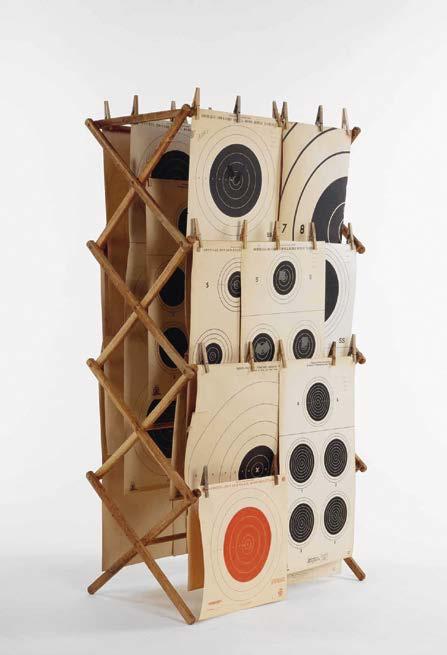
Lonnie Holley, Hung Out III , 2020, wooden clothes rack, wooden pegs, and paper rifle targets, 56 ⅞ × 29 ¾ × 16 ½ inches (144.5 × 75.5 × 42 cm). Photo: courtesy Edel Assanti and BLUM © Lonnie Holley
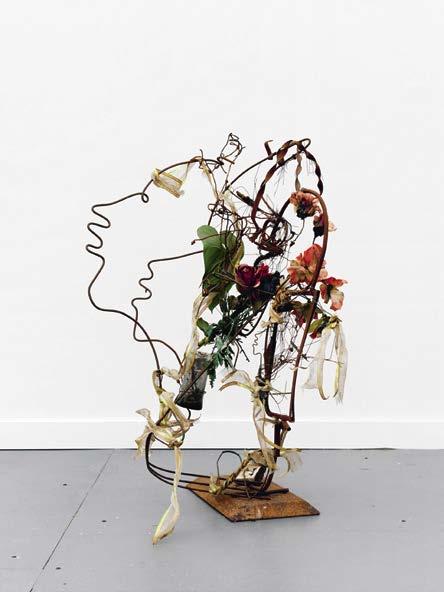
Lonnie Holley, Memorial at Friendship Church , 2006, metal, found debris, plastic flowers, and ribbon, 38 × 31 × 27 inches (96.5 × 78.7 × 68.6 cm). Photo: John Bentham, courtesy Halsey Institute of Contemporary Art, Charleston © Lonnie Holley
HT
on an oilcan with an oil-drenched white oak stick, beating me. My thighs and the back of my legs start swelling up and then after the first twenty-five licks, Mr. Glover took the stick and hit me in the back of the head and knocked me out again, busted my head open. How much do it take for a skull to crack and parts of the brain to come out of those little cracks? Remember we was talking about the sewer pipe and the roots busting the sewer pipe until they began to crack?
I still have bad dreams about it now. I have to rush out of my sleep every day. By the time I go deep into dreamland, I’m rushed right out of it. And then I get up and I start doing my art. I got thousands of pieces nobody would never see again. This is what a human can produce in care—in the care of more than just myself. I learnt to care about humans. I learnt to care about every one of those children that was there with me at Mount Meigs getting a whooping for not picking 50 pounds, 100 pounds, 200 pounds of cotton a day.
What is most astounding about what you just said, Lonnie, is that in spite of everything you’ve just recounted, you end your thought with care. And so often in your music, when there is pain, there is optimism. The track with Rokia Koné on OhMeOhMy, it is so very tender. In the song with Jeff Parker, you sing of placing your hands on those of your ancestors. Is it difficult to maintain that balance? You live with so much. It must take a strong will to retain faith in hope.
No matter where I go, I am a part of the wonder. To the depths of it or to the height of it.
LH I do all this because of being so thankful and grateful to my grandparents and my mother and my auntie begging me to save my life. “Stop doing this. Stop drinking. Stop running wild. Stop running crazy.” Because I couldn’t handle it. I didn’t know how to process it. And I still don’t know how to process it because it’s so hurtful. I don’t know how to process. My grandmama helped dug the grave for three of those little kids; later I went to the cemetery to help her dig graves. I had been down so deep into the holes of wonder, the pit itself. The pit of death. The pit of death. I’m sorry about all the moodiness and getting all cried up. I can’t help that.
HT
But that’s precisely why your music is so powerful. Because even back in 2012, on JustBeforeMusic, when your music was improvised, it all felt so raw. There was an honesty, an immediacy, as if the words were falling from your tongue. And even though this new record is more crafted, that honesty remains. So it is no surprise to me that this emotion is still present—it is the present-ness that makes your music so powerful. When you sing about pain, we know the pain is real. When you sing about your ancestors, we know that you feel them.
LH Am I not now my father’s father, my mother’s father, my grandmother, my great-grandparents? Am I not a spokesperson for them now? So why would I mislead them, just to find out I have misled myself? I do count my blessings. I count them one by one. And the main blessing that I have is life itself. Life is truly a privilege. And we all should be thankful for the period that we have to use it. Generations from now I hope that people read our conversation, and I think peoples that cannot read need to hear. I think that’s what has been allowed in my life. For those that cannot see but can hear, for those that cannot hear but can see. So many translations, so many ways of translating it. It’s like the spirit said: “Speak it. Speak it.” And then you come along and say, “Speak it, Mr. Holley, speak it.” Isn’t that like me utilizing my minister’s license to the point of preaching and you being the person in the back saying, “Amen, hallelujah, speak it, son, speak it”? You still hearing the same thing that you heard on OhMeOhMyor on all of the records. Are they not chapter after chapter, if you look at it? All the records are chapter after chapter.
What’s the opening line on the track with Moor Mother? “I am a part of the wonder.” And doesn’t that speak through every one of your records? Part of the wonder, the wisdom.
12 Gagosian&
HT
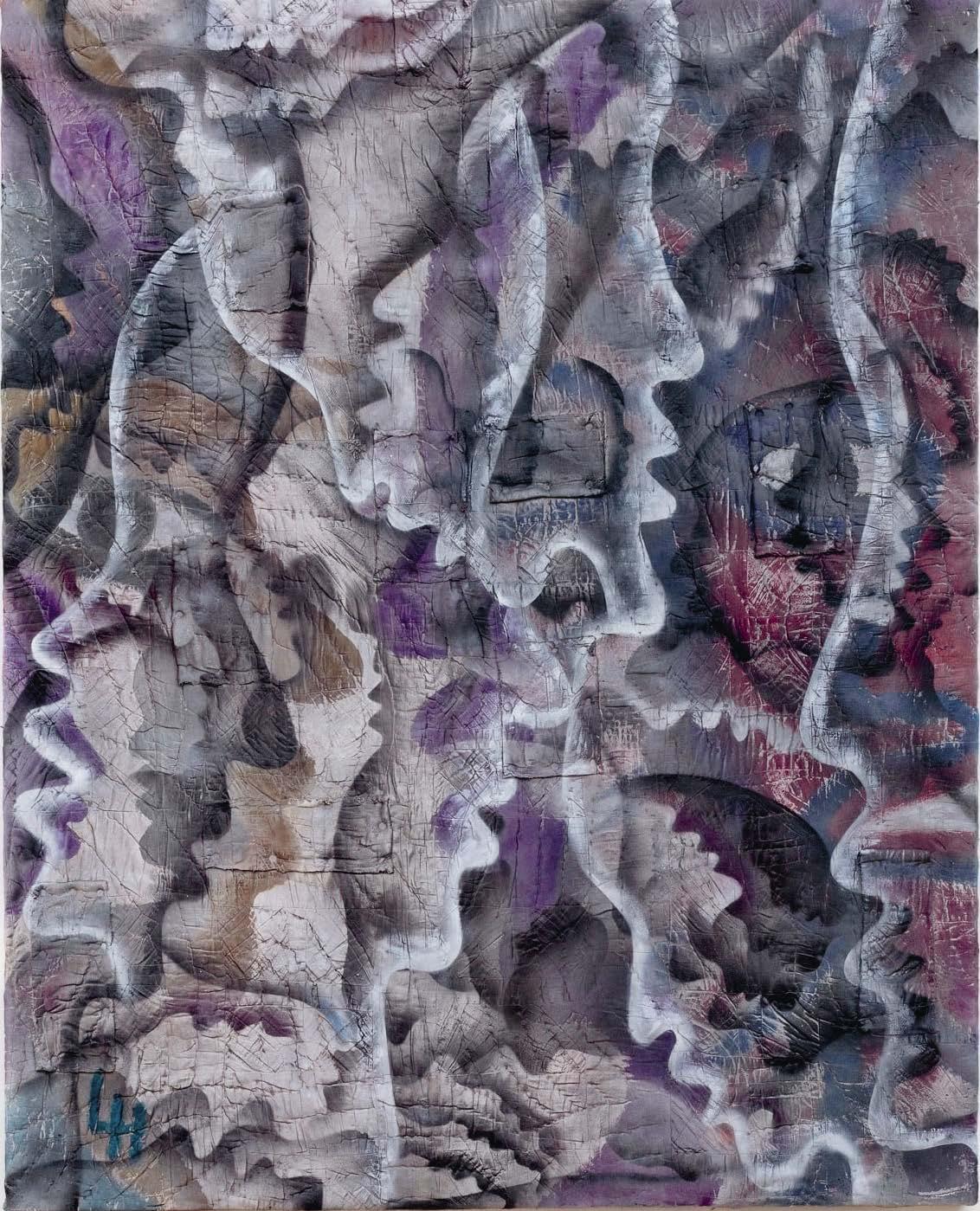
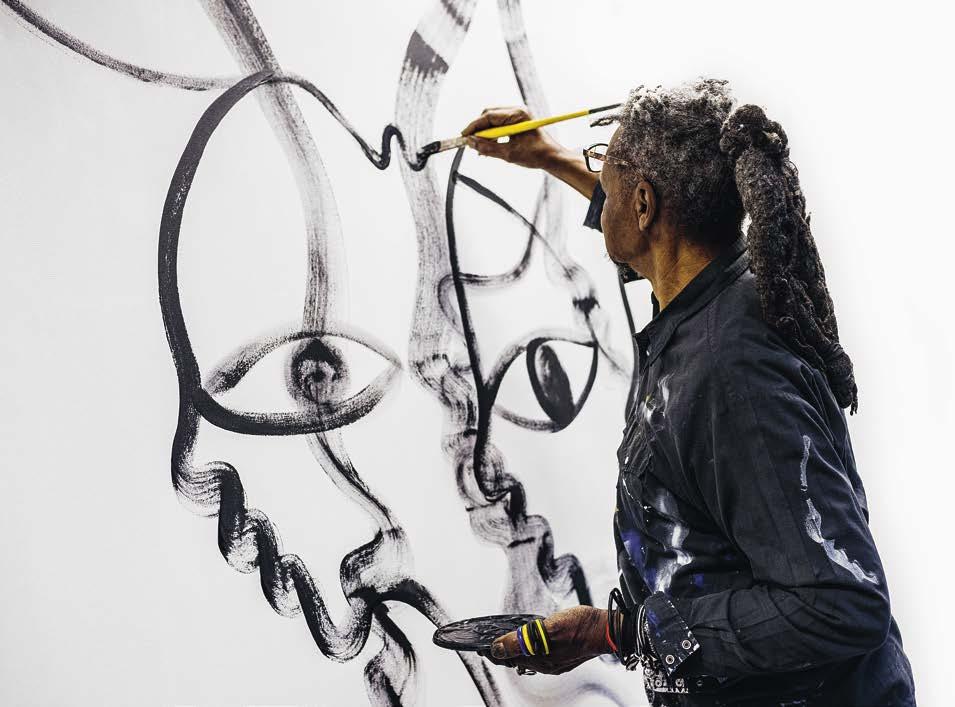
LH No matter where I go, I am a part of that wonder. To the depths of it or to the height of it. Divine wisdom—that’s another tearsnatcher. Divine wisdom was giving itself unto you free of charge. And you never noticed it? You ever cared to care? Here you is living on one of the greatest planets out in the universe and you never appreciated it? You never found yourself growing grateful enough to utter it out? Thank you greatness, thank you greatness. You see that’s why me and my collaborators get together, no matter who they are. And they end up calling me something like Moses that is leading a people to freedom [laughs]. Or somebody like John the Baptist, coming out of the wilderness, out of the ditches and the creeks of the wilderness. Out of the most messed-up part of the wilderness, you’re coming out of it and telling nothing but the truth. So now do they want my head like John the Baptist on a silver platter? No. My head is worthy of a goldplatter. It’s beautiful, isn’t it? [laughs]
HT What’s more beautiful than gold? And what you just said links to something that you mentioned earlier: all you do, all you can do, is utter into the world. That’s what art does, music does, literature does, no? It utters into the world. And it’s about whether or not you can bring yourself to do that.
LH No, it’s whether you ever realize it. You have to move away from stupidity. You have to open up the gates of righteousness, of self-righteousness. You have to ignore the foolishness that keeps you distracted. Because the clown is not going to let anyone take his or her suit off when they’re having fun in it [laughs]. When they’re having so much damn fun in that suit, they ain’t gonna let you take that suit off. Have you ever saw that about the clown? He or she is having so much fun in their suit. But once they take their suit off, it seem like they get bewildered, because they are unhappy with their true personality, because they never wore it out in public. They had always had a suit over it.
All these things that I’m talking about, it’s part of the art that I’ve created. It’s wire. Just a little piece of aluminum wire that holds the power to keep all the blocks connected. It all becomes wonder. No, it all becomes a wonder. No, it all becomes again like the song Moor Mother and I was singing, “a part of the wonder.” Everything becomes a part of the wonder.
13 Music
Lonnie Holley, The Protector, 2022, acrylic, spray paint, oil stick, nails on quilt and quilt parts mounted on wood, 60 × 48 × 1 ½ inches (152.5 × 122 × 3.8 cm). Photo: courtesy Edel Assanti and BLUM © Lonnie Holley
Below: Lonnie Holley at work in his Atlanta studio. Photo: David Raccuglia, courtesy the artist
Music Gagosian&

JORDI SAVALL
Ariana Reines caught a plane to Barcelona earlier this year to see A Sea of Music 1492–1880, a concert conducted by the Spanish viola da gambist Jordi Savall. Here, she meditates on the power of this musical pilgrimage and the humanity of Savall’s work in the dissemination of early music.
Because we have not spoken in years, other sounds have come to replace my father’s voice. I once dated a man whose surrogate fathers—I learned this making a systematic study of his many tattoos—were Charles Manson, David Lynch, and Leonard Cohen. In that order.
Early in our relationship he received a phone call from his actual dad and this unusual event caused him a panic attack. My lover shook, clutching his vape pen, holding the phone away from his ear like it was the severed leg of an animal.
He had described his estranged father to me as a “Harley-riding plumber” and, well, the man had ridden that Harley away from his son. It was, I could plainly see, even more painful to hear the father’s voice than it had been not to have heard it all those years. Which was something I could relate to.
Not that my father ever called.
If you listen to Jordi Savall playing the viola da gamba you will hear the simple sound of a man talking. Which, it turns out, is not a simple thing at all.
Something I have learned about myself is that I will go to great lengths to cry. I flew to Barcelona last January on less than a day’s notice for this express purpose.
It wasn’t that I couldn’t cry at home, or that I had not been crying. It was only that there was something robotic my anguish was somehow a reaction against, or so I remember feeling as October turned into November and blood filled my phone. I felt my soul was in danger. I’d been listening day and night to an album called LesVoixHumaines (1998): human voices. One of the first recordings Jordi Savall released on his own label, Alia Vox, it consists of a perfectly calibrated solo viola da gamba concert, and I had come to depend on its melancholy eloquence for my sanity.
It was the sound of a man. Explaining himself, lamenting his fate, reaching heights of exaltation and despair. There was a humility and a dignity in it that did not seem alien to the destitutions of my world—but somehow capable of answering them in a way nothing else could.
It was almost a year since my mother’s suicide. As the wars—real and cultural—dragged on, I felt in a very serious way, impossible to overstate, that I would die if I could not find a frequency to which I could confide my grief in dignity. And somehow, also, privacy.
Jordi Savall i Bernadet was born on August 1, 1941, in Igualada, a town to the west of Barcelona. A Leo, he came into this world in the second year of the Franco dictatorship, near the wild heart of antifascist Catalonia.
Savall’s family was not musical. His father worked in a mattress factory. Savall himself would work eight hours a day in that same factory from ages fourteen to nineteen, singing in the local choir and taking counterpoint lessons after work, until an accidental encounter with Mozart’s Requiemsealed his destiny. Wandering into a small ensemble rehearsal in which the Requiem’s orchestra parts were played by string quartet, Savall found himself completely overwhelmed. Like an inflamed youth in a Federico García Lorca poem, he left the rehearsal with his soul in uproar. He walked all over Igualada, pondering his future path. Music was the most powerful thing in the world, he now knew for certain, and there was no longer any doubt he would devote his life to it. But he was in puberty now—his voice was changing. So he decided to study the cello.
He saved up money for a locally made instrument and began to teach himself to play. On a trip to Barcelona he bought a small stack of scores, including viola da gamba music by Marin Marais arranged for cello, which got him curious about the instrument. When a hand injury kept him out of a series of youth-orchestra performances in Paris, Savall passed an ecstatic week in the Bibliothèque nationale, discovering books of forgotten viola da gamba repertoire by Marais, Couperin, Sainte-Colombe, and others. He began lessons with a viola da gamba teacher who took a relatively hands-off approach. Savall was developing a relationship with the instrument from books and from what the viol somehow showed him it needed.
With a slightly higher note range than the cello and six strings instead of four, a fretted fingerboard, sloping shoulders, and a bow that is held from underneath, with the hand turned outward, the viola da gamba’s sound is much more intimate and conversational than the cello, making the latter sound lacquered and even melodramatic in comparison. One could almost compare what the viol is capable of expressing to what a lyric poem can do that the epic mode cannot: it expresses extraordinary nuance and personality. It does not need to shout. It invites you to come closer; it sounds like intimacy. You almost feel you are in the presence of a whole person, in all their glory and frailty. And the music composed in this mode and for this instrument therefore emanates a different

15 Music
Above and opposite: Jordi Savall performing at the Church of St. Paul the Apostle, New York, 2006. Photo: Hiroyuki Ito/Getty Images
kind of ethics, too: you feelfrom the sound that there is a world of being, and of creation, in which the individual heart actually matters. That the many things a soul can feel are worth expressing.
Like the Catalan/Puerto Rican cellist Pau Casals, made famous in the United States when he played at the White House for John F. and Jacqueline Kennedy, Savall would gain renown not only through the vindication of an instrument theretofore considered minor but through a chance encounter with forgotten repertory. (You would never know it now, because the Bach cello suites have become totally canonical, but when a teenage Casals bought a secondhand copy of the score and played it religiously, its musical value wasn’t generally held to go beyond a nifty way to tune the instrument.)
A palpable strain of flamboyant, fun-loving anticlassicism and antifascism runs through late-twentieth-century approaches to the Baroque. When I was depressed and low on confidence I used to watch a YouTube video of Monteverdi’s L’Orfeoin which Savall strides onstage in a billowing cape, storming the podium like a king, but also like a Monty Python parody of a king. I remember finding it virile and cheerful in a way that I needed when I was first investigating Savall’s artistry for a sculpture project in 2015.
It has turned out—you can’t plan these things—that it has always been the most extreme anguish that drives me to his music. Partly, I suppose, it’s that it reminds me I’m not the first human being to struggle for clarity of expression in times of inner—and cultural— chaos. But it’s also that Savall’s ethos as a historian and philosopher has proven again and again that music transcends every boundary and has the power to repair the wounds of history. This is his theorem, for which he has provided thousands upon thousands of proofs.
When you see Savall onstage with Le Concert des Nations, his Baroque and worldmusic ensemble—and the same goes for his British counterpart, William Christie’s Les Arts Florissants, founded in 1979—the first thing you’ll notice is that all the performers,
All music is alive if it is being played, as Savall often says, and by its grace, I thought, I can face my own demons. —Ariana Reines
not only the soloists, seem to be wearing whatever they want. They look relaxed, laughing and radiating pleasure. The emphasis is on people, not empires or gods, as the makers of music. You feel that a dramaturgical decision has been made to have a good time onstage and show it. I haven’t read this in any book but it occurs to me that the Baroque revivalists of the late ’70s were, perhaps, among the more scholarly and even mystical branches of punk.
I got to Barcelona just in time for a sold-out performance of Unmardemúsicas1492–1880 ( ASeaofMusic1492-1880) at L’Auditori, a simple wooden hall packed with regular people in puffer coats and blue jeans. I was overdressed, jetlagged, and slightly embarrassed by my own impetuosity—but as soon as the music started I knew I’d done right. I burst into tears.
Unmardemúsicasdraws on the same repertoire—and on many of the same dazzling performers, singing in at least ten languages and playing an assortment of Baroque and traditional instruments—as Savall’s double album TheRoutesofSlavery1444–1888(2017), which I’d listened to daily during the pandemic, several tracks especially, for their curative power. That record, a four-century-spanning exploration of the sounds and cultural dynamics of enslaved people and their oppressors—like Savall’s musical chronicles of the travels of Ibn Battuta from 2019, of Erasmus’s notions of madness and folly from 2013, or his reconciliation of Islamic and Sephardic musics, both expelled from Spain in successive Inquisitions, from 2007—was immensely, even insanely ambitious. Just the idea of it was healing.
All music is alive, Savall has said in interviews, by which I think he means: he is not a historian or an antiquarian. All music is alive if it is being played, as Savall often says, and by its grace, I thought, I can face my own demons.
Among the performers in the Unmardemúsicasconcert, I was particularly struck

16 Gagosian&
Jordi Savall performing at Bab Al Makina as part of the Fez Festival of World Music, Fez, Morocco, 2010. Photo: Jordi Vidal/Redferns/ Getty Images
by Lixsania Fernández, who not only played the viola da gamba but sang and also danced in at least half a dozen languages and styles. Beaming at Savall under her shock of purple-black curls, in a puffed-sleeve bare-midriff and maxi-skirt ensemble, she looked like the love of life incarnate, and it made me feel better just looking at her.
Savall was seated to the far left of the stage, conducting with his bow and playing what looked like a Celtic viol, which resembles a modern viola but is balanced on the knees. There were at least thirty performers onstage, all dressed differently, and everyone not only played their instruments in totally divergent styles but sang in multiple languages— Catalan and Castilian, Portuguese and Haitian Kreyòl, Nahuatl and Mande, English and French—and some also danced.
The concert told the story of a human horror actually coming to an end. Yet my curdled American heart went somewhat cynical when “Amazing Grace” was sung, in English— maybe this was a ’90s multicultural fantasy, I thought. But Barcelona faces the Mediterranean, and the deep time of Savall’s exploration of how music itself moves across time and space adds credence to the currents of liberty.
It is impossible to distill for you the ambition and sweep of Savall’s accomplishment, the spiritual ambition of his project, except to say that when his large ensemble concertizing pushes against the limits of my own idealism, I find him totally sober and unpretentious at his core. It is not fatuous to say that music heals. Or that it transcends boundaries. These are mere words—but all you have to do is feel it, and you know. If this weren’t the case, one of the most dazzling and popular careers in twentieth- and twenty-firstcentury classical music, the near single-handed resurrection not only of the Baroque but of a host of other sounds and tones I’ve built my life around, which I’d never have heard if not for him—well, it wouldn’t be real. But it is.
All music is alive if it is beautiful (reprise). The sounds Savall makes have always been on the Earth. Some of them made by the wretched, some of them made by the cruel.
I walked around the Basilica of the Sagrada Família for the next two days, with TheRoutes ofSlaveryin my ears. On one facade of Antoni Gaudí’s masterpiece I saw the raised fists of Jesus Christ, with a book for a face. I watched a stricken French woman call a friend from a tea shop near the cathedral, repeating over and over that what she had seen inside “was overwhelming. It was completely overwhelming.” I worried for her, remembering the violence of the sublime. I ate Pata Negra ham and read Lorca and flew to Granada in the rain. The air smelled of oranges. At night at the Alhambra I wondered over the violent imagery of poets—the poets of inner torment—when measured against the carnage of this world. Would we ever be worthy of metaphor again?
I didn’t know. Years ago, in a little town in Picardy, France, I had met a Spanish woman who told me that my family name came from Granada. Absolutely. Granada and no other place. It occurred to me as I moved through the gardens of the Alhambra that Barcelona was a place about people. And that the many dimensions of people, playing music in perfect harmony and perfect time, but presenting themselves as individuals, was something Savall meant to emphasize, just as Gaudí’s Jesus looks like not only a laborer in protest but the living embodiment of a prophetic tradition. This was why I hadto see Savall onstage in his home city—even though he’d be at Carnegie Hall in a few months. I needed to see the lion in winter, I thought, and at home.
I remembered how miserable Lorca had been in New York, and how right he was about us, and I remembered his murder. His poems were great, but they made me sick. I will die without beauty, I thought. I remembered Mahmoud Darwish’s “Eleven Stars over Andalusia” (1992) and Savall’s effort to repair not only the horrors of the Spanish Inquisition and the expulsion of Jews and Muslims from Spain but the Albigensian Crusade (TheForgotten Kingdom, 2010), the Armenian genocide (ArmenianSpirit, 2012), even the voice of Joan of Arc (JoanofArc:BattlesandPrisons, 2012), who is still in flames somehow and still always leading her army to victory, beyond the limits of the human imagination—and yet real.
It’s consoling to know a man can do all this. Your heart floods. It all starts with a mellow, eloquent, and solitary sound. An almost forgotten sound. A counterexample to the totalitarian harangue. The sound of an honest man.
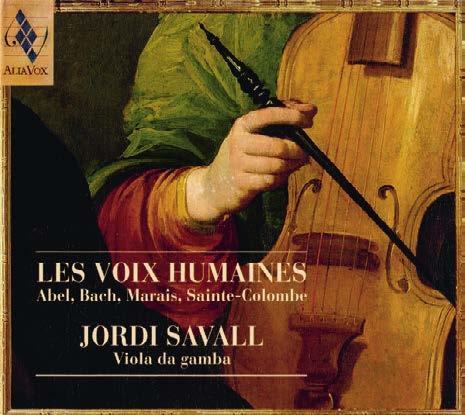
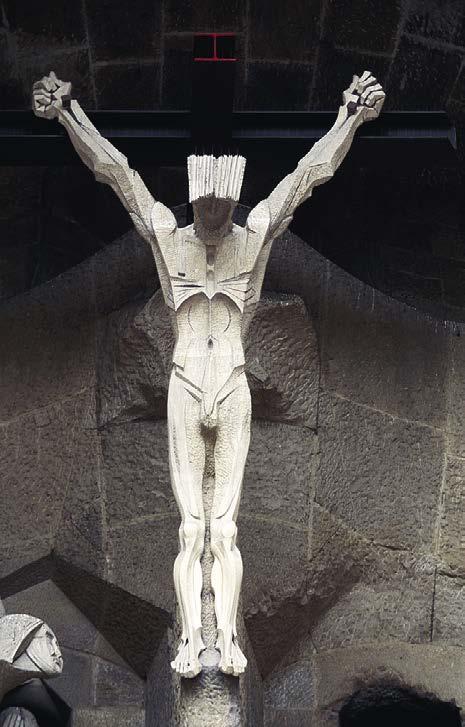
17 Music
Detail from the facade of Antoni Gaudí’s Basilica of the Sagrada Família. Photo: Patrick Landmann/Getty Images Album cover for Les Voix Humaines by Jordi Savall (Alia Vox, 1998)

GAGOSIAN& MUSIC
DHRUVA BALRAM I remember in the weeks leading up to the release of YIAN last year there was a nervousness you possessed.
LUCINDA CHUA I was petrified.
DB You mentioned you weren’t sure how the album would be received, or what live audiences would think of it.
LC It’s the fear of when you do something that you believe to be authentic. I don’t think that’s a fear of being critiqued or rejected; it’s more a fear of being seen, because it’s very vulnerable. I always think of it like a little plant, you know, when a tiny seedling puts out its first leaf. It’s so tender. You have to be careful.
DB That’s a beautiful way to frame it. The album itself is rooted in a collage of emotions and feelings. To me, it sounds like you were trying to make sense of a whirlwind of chaos, asking yourself questions rather than having the answers for them, leaving them to just kind of sit in the air around you. There’s the wistfulness of someone yearning for an answer but content if they never receive it. And as a listener, I felt that. I’m curious how the album’s been received by audiences in the year since it was released.
LC The response has been mad. I don’t think I anticipated it would be like that. But it’s just mad how the music has taken me to different parts of the world. I got to play my music in China, Japan, America, all over Europe. What baffles me most is seeing that intense connection with people in the audience, where something in the music allows them to feel seen.
DB I’m curious how the reception was in China.
LC It was pretty special. I’m understanding a part of myself that I wouldn’t have been able to understand without the music. It’s changed my perception of myself. My Chinese fans are a lot younger, some of them are still in school, they even call me “sister Yian” ( 燕姐), and they made a WeChat group they call “The Nest.” I’ve never been called by my Chinese name before, but my music has built this bridge between me and my ancestral homeland. I used to worry that when my father passed away I’d lose not only a parent but also the connection to my culture, to my roots, but this bond transcends my family. It’s a reminder that it will always be there for me, so long as I keep nurturing it.
DB You once said to me that music is a language to you, a form of self-expression that transcends what can be classified as good and bad. Can you elaborate on that?
LC It’s about authorship. For me, being an artist is being able to author work. Authoring music is different from playing music, and that’s what I’m interested in. I’ve been making music my whole life, but releasing an album is hard because you’re saying “This is me, this is my heart, my soul.” You’re handing it over to people and it’s scary to do that. But the thing that makes it worth it is connecting with other people and seeing their emotions; music gives us the permission to feel whatever it is we’re going through.
There are things I can say through music that I’m unable to say in words. I’m just trying to express it in the music, rather than thinking critically ahead of time, “Is this good? Or is this bad?” Because I feel like from an emotional perspective, everything is valuable and everything is valid. Music helps me accept those parts of myself.
DB It sits outside the binary. Is that what it felt like as well to create YIAN? Was it a way for you to express what’s been inside of you for so long, but you never had the right words to convey that hybridity of identity?
LC Yeah—getting to invent and manifest, but then almost tangibly hold a world that for me makes so much sense, because it’s how I see myself and how I see life. The world I feel at home in exists outside of categorization, it’s an intersectional overlap of so many disparate things that don’t always fit. To me it feels specific, because it feels like me, but within myself there are so many different thoughts and ideas and cultures, and sometimes those narratives are at odds with each other, it’s not always harmonious. There can be internal dissonance, but rather
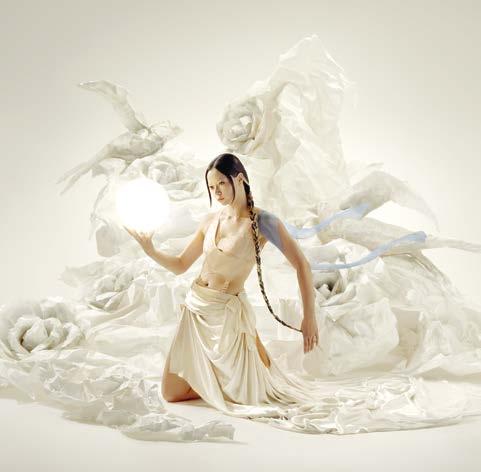
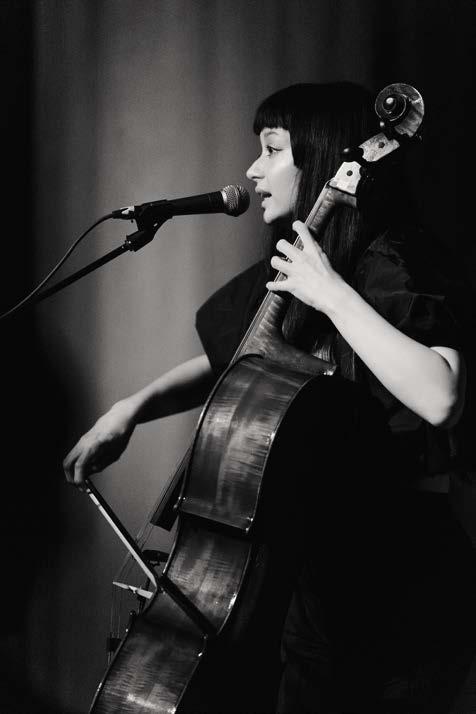
19 Music
Lucinda Chua performing at Zebulon, Los Angeles, 2024. Photo: Evan Nischan
Lucinda Chua, Golden, 2022. Photo: Nhu Xuan Hua
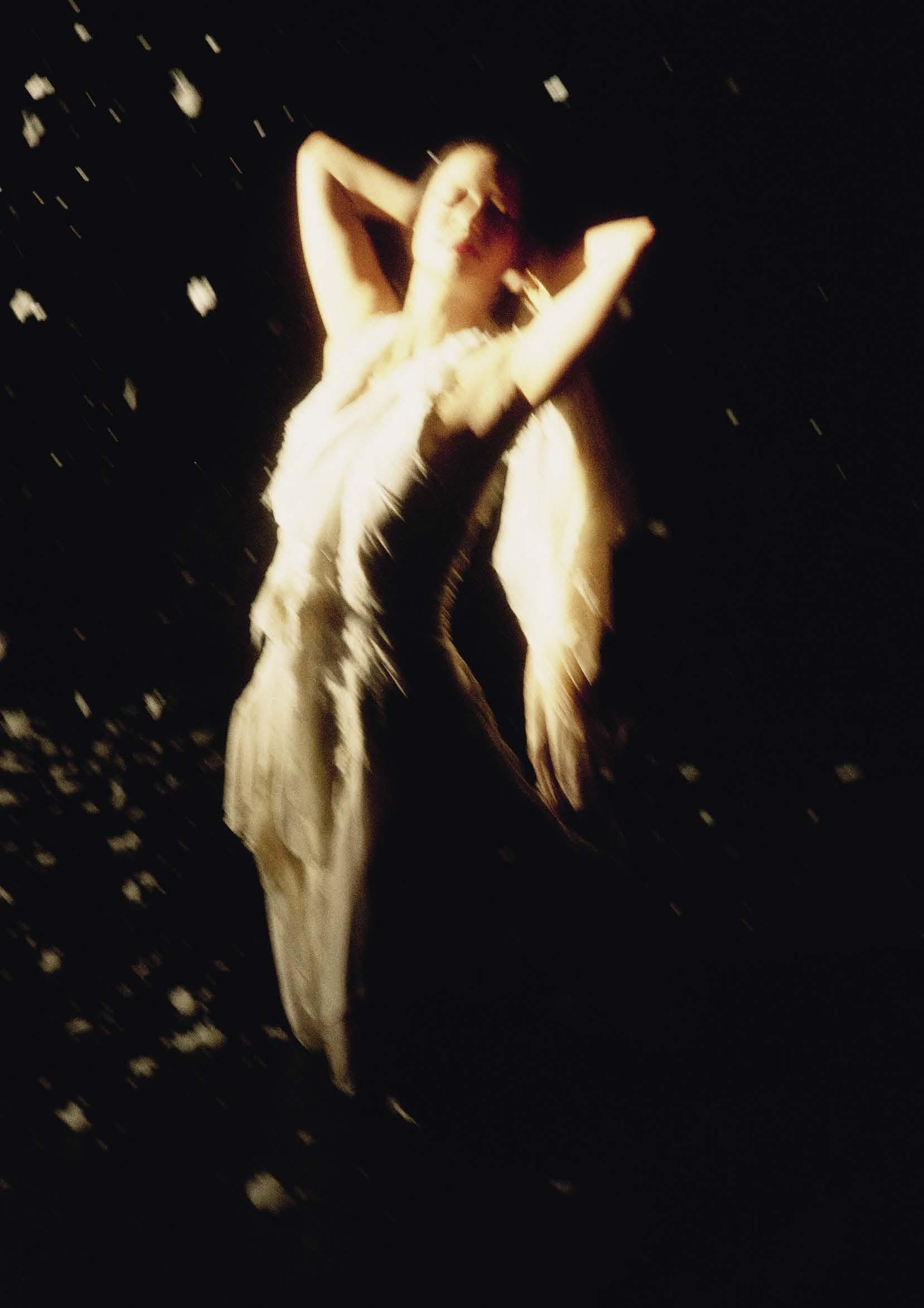
than trying to whittle it down to a singular truth, I’m holding space for all of these realities to exist and merge and bleed together.
DB It’s almost like creating your language within your own identity and then putting it out into the world to see how it resonates.
LC Is that how you feel about your work? Not just as a writer, but as someone who works within communities, curating events and bringing people together?
DB The running joke I have is that I’m not from England. I only moved here six years ago after spending nearly thirty years living across five countries and four continents. I’ve never sat within the binary or the nationalist identity of saying “I am from this country,” or “I am a marker of these identities.” With my nonwriting work, I’ve been given an incredible opportunity to give something to a community my ancestors are from, but I’m a hybrid of many of the cultures I grew up in. My writing work is very much rooted in an understanding of what that means.
LC I feel the same, but I’ve only lived here [laughs].
DB A lot of the conversation we’ve had today and in the past has centered around identity and what it means to be a person of color today. Lately we’ve been exploring the tension that exists within the identity markers of classical music and contemporary musicians. Can you elaborate on that?
LC I don’t even know if I call myself a classical musician, to be honest.
DB Why not?
LC I started piano when I was three and cello when I was ten. I learned via the Suzuki method, a Japanese philosophy about learning by ear. It’s a very different approach, I guess, from traditional Western classical training: I didn’t learn to read sheet music as a kid, and I didn’t do any exams or grades. Later, when my family moved out of London, I struggled in secondary school, adjusting from being a multiracial inner-city kid to growing up in a small village in a very rural neighborhood, where for the first time in my life I was confronted with racism and hostility just for existing. I got a scholarship at my local music center, I’d go there evenings and weekends, and it felt like an escape, somewhere I could be my own person.
The thing that makes it worth it is connecting with other people and seeing their emotions; music gives us the permission to feel whatever it is we’re going through.
My cello teacher, Jenny Brown, was so kind to me. For the one hour I spent with her a week playing the cello, I got to express my emotions through my instrument. Rather than hardcore drilling me on techniques and scales and sight-reading, she was gentle and let me play the bits that I was good at, she gave me space so I could be the melody. It probably made me a less adept cellist but it meant that I built a positive relationship with my instrument, and maybe that’s why I still play now. All of this is to say that I played a lot of classical music, but I didn’t necessarily have all of the techniques that someone else who’d play that classical music would have.
DB So how does it feel, then, when you’re called a neoclassical musician, or boxed into the overarching term of “classical musician”?
LC It’s a period of history that we’re looking back on and I do think there’s something special about reenacting music from that period. It’s interesting to go back in time, to listen to the sounds from that era. Classical music was the pop music of its day; it’s interesting to think about it in relation to the times we’re in now. But I think in terms of “neoclassical,” it’s like, why would we want to go back and reenact those values from that time? Because I don’t think those values would have been particularly kind to people like us.


21 Music
Lucinda Chua performing at La Bâtie-Festival de Genève, 2023. Photo: Tash Tung Opposite: Photo: Milo Van Giap
Lucinda Chua performing at Lost Music Festival, Fontanellato, Italy, 2023. Photo: courtesy the artist
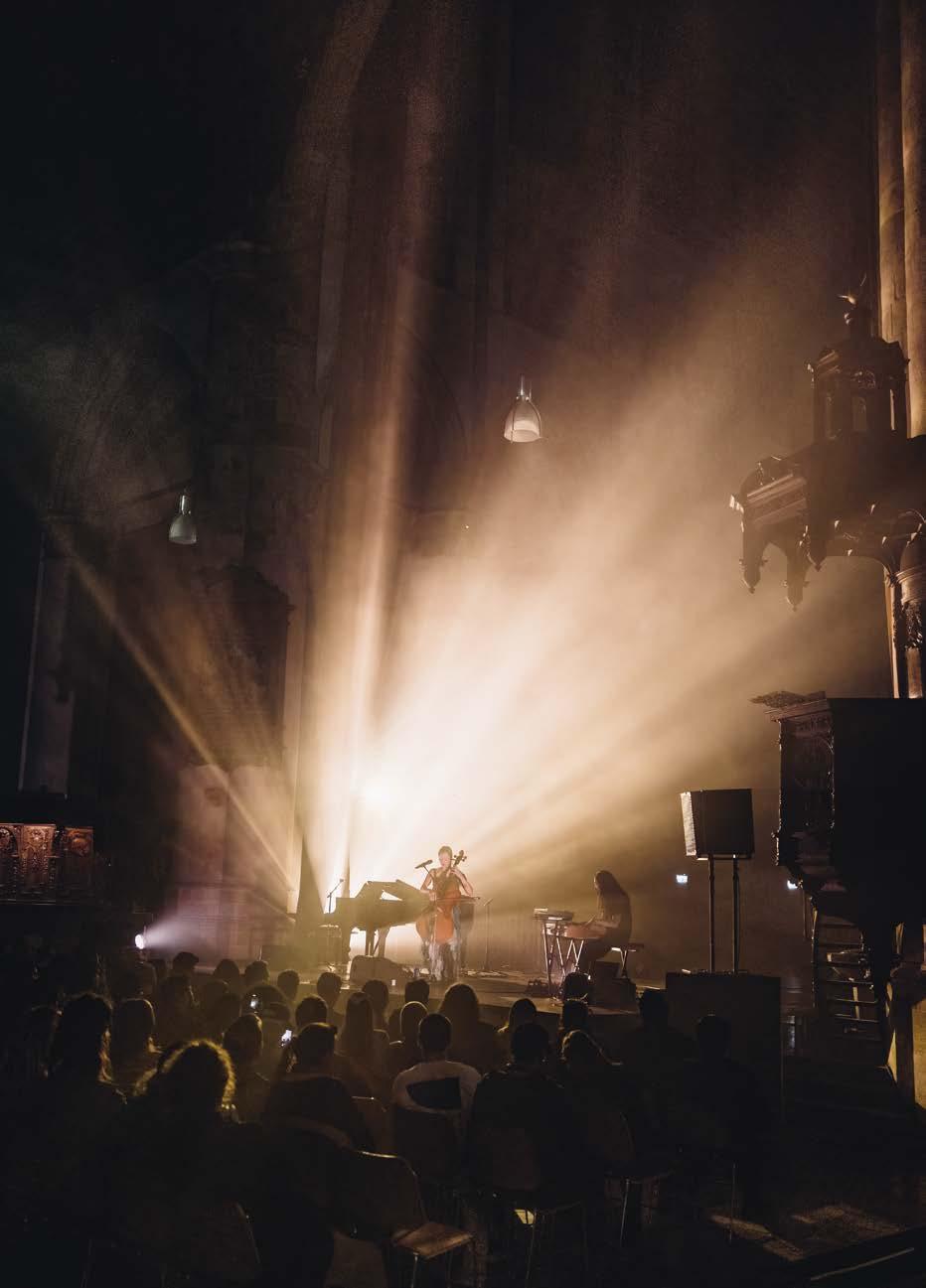

DB You and I wouldn’t be allowed to play the instruments.
LC They wouldn’t have let us into their concert hall, that’s for sure, let alone touch the instrument. So it’s as if I have an autobiographical nostalgia for classical music because I loved playing it as a teenager, some of that music is so beautiful. But I don’t have any nostalgia for the era. I don’t have nostalgia for the values.
DB How would you decolonize classical music, then?
LC Where I am at the moment in my practice is that I think of the cello as an interface in the same way a midi controller is an interface. The best feedback I get from people when I play a show is people coming up to me and saying, “I’ve never heard a cello before, and this totally changed my perception of music.” It’s an honor to be that person for someone. I think of these instruments [like a cello or a midi controller] as tools that people should have access to, to be able to express and innovate. Technique is a major part of that, but at the end of the day, these are tools to express yourself with. And I think it’s what you say with them that I’m interested in.
DB You have a new confidence and self-assurance now, compared to a year ago. Do you know what you’re trying to say with your music now?
LC The truth is, I’m always going to be learning, I don’t think I’m ever going to be done. I feel grateful I get to do this, like I feel so grateful I get to perform my music on stage with an orchestra—especially because I didn’t go to a music college or a conservatory, I didn’t grow up around professional musicians or people in the industry. I’m grateful to be the first artist with Chinese heritage to release music on 4AD, the first artist on that label to perform music in China, the first Asian solo artist in its forty-four-year history. I wake up and I’m grateful. But you know what—I long for the day when we don’t have to be grateful anymore, we can just be
22 Gagosian&
Above: Lucinda Chua performing at Rewire Festival, the Netherlands, 2023. Photo: Joost Van Hoey
Below: Lucinda Chua performing at Mucho Flow, Portugal, 2023. Photo: Tash Tung
Opposite: Photo: Sandra Freij, commissioned for Violet Book, #20, 2024
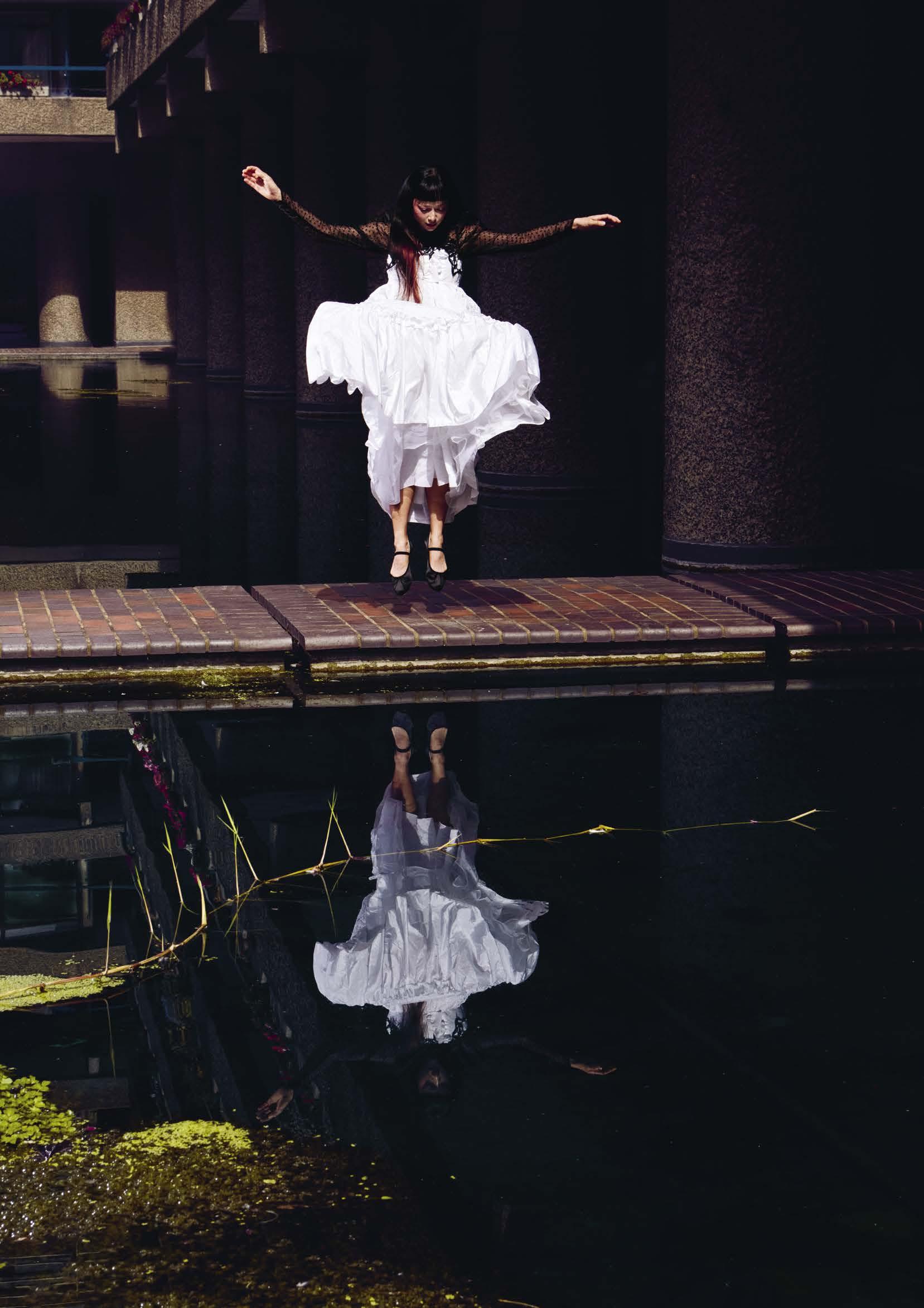

BY JACE CLAYTON

Tracing the history of white noise, from the 1970s to the present day, from the synthesized origins of Chicago house to the AIpowered software of the future.
Computers can’t guess. They can’t generate random numbers or output anything that doesn’t come from following a rule or fulfilling a pattern. They can only calculate. This inability to create the unexpected matters because digital information is only as secure as the encryption used to protect it from spreading, and encryption requires random numbers, similar to the way a random password is much harder to crack than a password based on someone’s birthday or a sequence like 1-2-3-4. Computers fake the funk by running complex programs that generate pseudo-random numbers whose patterns are very difficult to discern, and that pseudo-random is random enough for, say, safe online shopping.
To come up with a truly random number you need to sample the world outside the computer, which is an actual and mathematically unpredictable mess. White noise is pure randomness, every moment patternless and unforeseeable. It’s what happens when equally intense information exists across all measurable frequencies. Randomness admits unruly information into old systems. This allows for change. It is also fun.
In 1980, Ikutaro Kakehashi went looking for superlative white noise. He found it in a box of reject electronics. Economic pressure had forced Kakehashi to abandon sonic realism: the memory chips required to make a drum machine that used actual recordings (as his competitor LinnDrum did) were prohibitively expensive, so he decided to synthesize the audio instead, using tiny analog transistors as noise sources to be shaped into high hat, snare, and other percussion hits. Scientific equipment couldn’t differentiate between different transistors’ amplified static, but Kakehashi’s ears could. He listened to dozens before he found a batch of 12,000 transistors whose white noise made for the best drum sounds.
Every unit got one. The transistors’ manufacturing errors were impossible to recreate, so when the supply ran out, in 1983, Kakehashi discontinued the Roland TR-808 Rhythm Composer. Forty years later the name “808” remains synonymous with powerful low-end bass and whipcrack snares, used everywhere from Marvin Gaye’s 1982 hit “Sexual Healing” to Kanye West’s album 808s&Heartbreak(2008; the oldKanye, mind you). Kakehashi’s choice of transistor—and by extension the legendary 808—is responsible for some of the world’s most popular drum sounds.
In a typical 808 beat, people use bits of white noise, the snare and the high hat, to mark the moments of swing, to underscore the offbeat, to fine-tune the tensions that encourage dancers to negotiate with the grid by bending themselves in and out of relation to it.
In 1985, Earl “Spanky” Smith paid $40 for a silver box from Japan. This secondhand “computerized bass machine,” manufactured by Kakehashi’s company Roland, lacked a manual, but no matter: in Chicago, Smith met up with his partners in the group Phuture to record a half-hour live exploration of the squelchy, chewy alien tones they were able to twist out of the TB-303, set against a spare kick/high hat/cowbell beat (digital drums from two other Roland boxes). The Windy City was still figuring out the parameters of its new invention, house music, and the scene was capacious enough to accommodate disco, gospel, and, hopefully, this avant-garde anti-anthem. Phuture played their tape to Ron Hardy, the most adventurous DJ in Chicago. He didn’t say a word until the song ended, thirty minutes later, then asked, “When can I get a copy?”
Phuture’s concoction cleared the dance floor when Hardy debuted it in a club, the Music Box. But he knew how shocking the sound was, and he knew how much his audience trusted his forward-thinking mixes too, so Hardy waited awhile, then played it again. And again. And again. By the fourth time it came out of the speakers, people were primed and the dance was on.

Within a few years the sound would spread across to the UK, sparking the genre quasieponymously called acid house. The 303’s quicksilver alien voice became synonymous with smiley-face iconography and cheap pills, the halcyon days of rave. Phuture’s “Acid Tracks,” which was released on vinyl in 1987 following its debut in 1985, was a revolutionary event: the song established and epitomized a genre at the same time as it exhausted its aesthetic possibilities, leaving everyone else to do endless iterations.
The 303 (as freaked by Phuture) frustrates comparison: it doesn’t sound like anything else. A chaotic ensemble of factors contributes to the bass synthesizer’s infamous sound, starting off with interactivity itself. The machine was intended to be painstakingly programmed, not played live. Yet the knobs and internal circuitry are highly interactive and respond dynamically to subtle changes. Phuture took immediate advantage of this.
The “Resonance” knob is particularly important. A regular low-pass filter works similarly to the Low-Mid-High EQs on home stereos. As you “sweep” the filter, the sound gradually loses high frequencies to become more muffled, until only the bass frequencies remain. The 303’s resonant low-pass filter employs a technical quirk: the Resonance knob boosts
25 Music
Phuture, left to right: Spanky, Rio “the Musician” Lee, and DJ Pierre
the sound at the frequency where it gets filtered into silence. The exact place of disappearance calls attention to itself. It does this by injecting the 303’s output signal back into its own input. This makes an unpredictable feedback circuit where minute variations can have a huge sonic impact. The description is technical but the effects are immediately audible: acid house is dedicated to exploring the slithery harmonics of an unstable system.
The moment of feedback is the moment when control threatens to become its opposite. It’s when relatively small aesthetic and technical decisions can snowball into enormous repercussions. None of this would have mattered if the 303’s engineer, Tadao Kikumoto, hadn’t cut corners to avoid getting sued by Bob Moog. Moog synths were (and remain) renowned for the “creamy” and “deep” sound of their patented filter design. Kikumoto stole Moog’s schematic layout but, to prevent lawsuits, swapped transistors for cheaper, less precise diodes. The diodes in such close proximity influence each other electrically, in nonlinear, complex ways. Hardwired instability makes the machine sound alive. These imperfections gel especially well with subsequent processing, like the overdriven 303 that enters at 2:30 in Daft Punk’s “Da Funk” (1995).
Acid offers entanglement at every scale: the weird signal fluctuations resulting from the knockoff design, the squelchy knob-twiddling liveliness, the way the squiggly new sound encouraged bodies to move in equally sinuous ways.
How does anything emerge out of life’s chaos to form a lasting pattern? Here, you needed Phuture’s Spanky and DJ Pierre and their manualless TB-303. But in order for it all to come together, you needed Tadao Kikumoto and of course Ron Hardy, who had changed the course of house music by the time he died of aids , only a few years later. You also needed the community of Black and queer Midwestern club kids who, after some coaxing, didn’t reject that alien sound but instead kept dancing to it. You even needed all the lounge acts who didn’t buy what was marketed to them as a “replace your bassist” box. The Roland TB-303 was a flop, discontinued in 1984 after a three-year run. Lack of commercial success kept it cheap enough for the experimentalists to afford.
Phuture’s 303 and Kakehashi’s 808 are prime examples of the thrilling things that can happen when musicians bend their (analog) tools into shapes the designers could never have imagined. John Cage upended the grand piano’s classical legacy simply by placing random objects on its
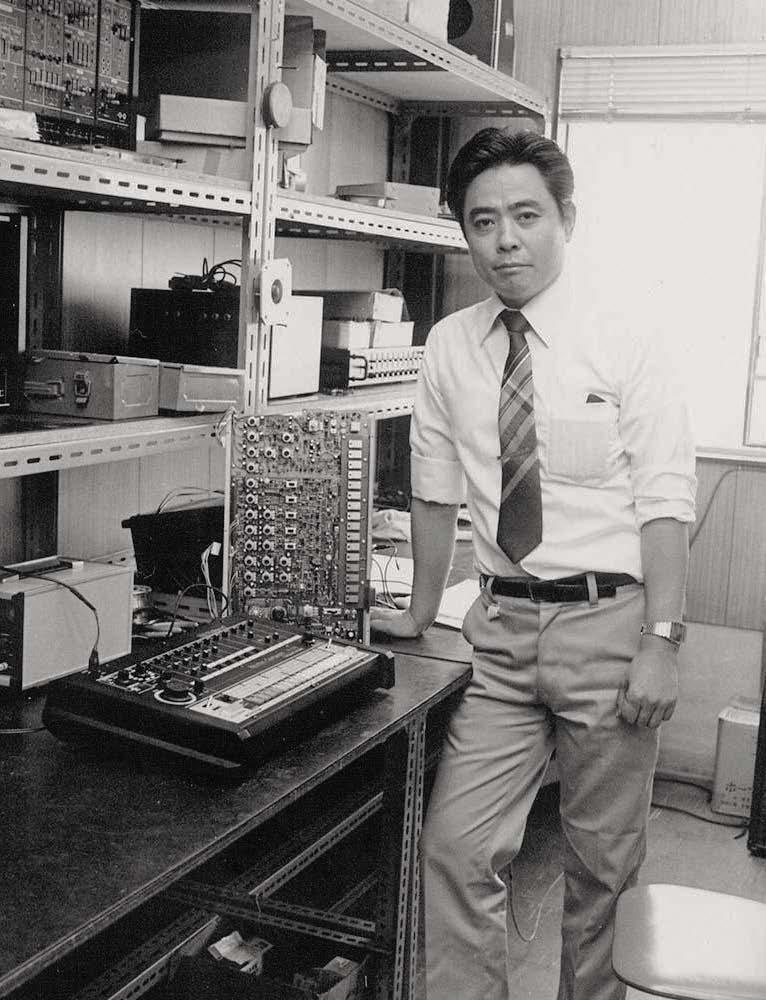
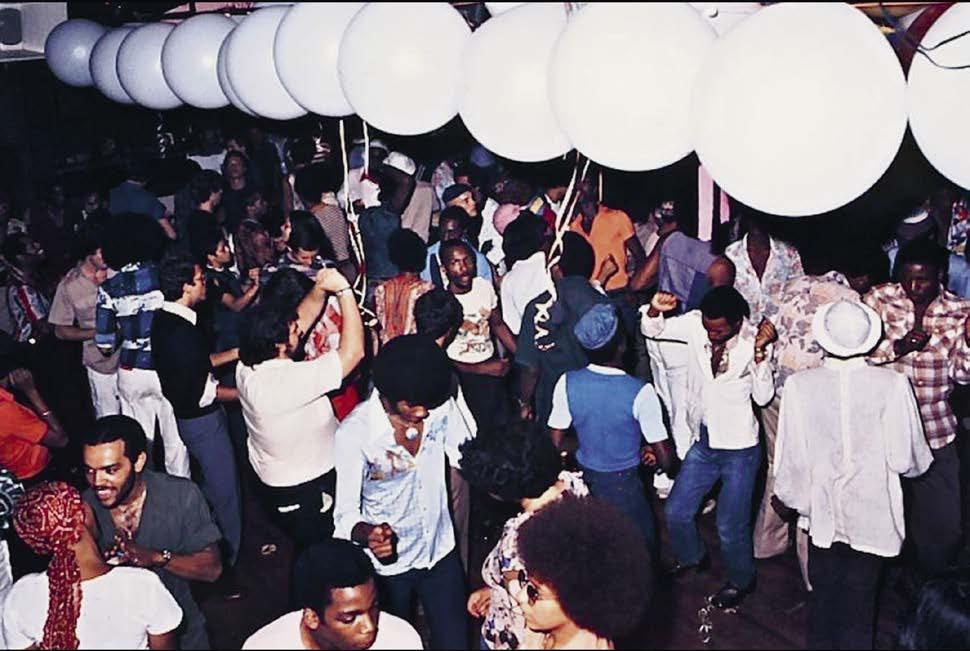
26 Gagosian&
Tadao Kikumoto, lead engineer of the Roland TR-808, late 1970s. Photo: Roland Below: The Gallery, Chicago, late 1970s, shown in I Was There When House Took Over the World, 2017, currently available to watch on Channel 4 Streaming. Photo: courtesy Channel 4
strings to alter the sound, transforming his “prepared piano” into an unpredictable atonal instrument more like an eccentric gong. Try doing that with an iPad! Software is so much harder to hack, customize, or productively “break.” Yet over the last few years, a new wave of digital tools that offer truly new functionality have emerged, made possible by machine learning and artificial intelligence (AI).
AIs are calculators cursed with the ability to only see patterns, whether or not they are there. If you tell them what patterns you want (the pattern that forms around “Kate Middleton and her kids but Kate is the Monkey Christ, in the style of Picasso,” say), they will produce them, in constantly sharpening detail. The way they do this varies, although, like Kakehashi’s 808, most AIs start with white noise.
“Diffusion models” add random noise to images and, over time, learn how to remove noise from images—until they get so good at noise-removal that you can give them random noise and they’ll “remove” the noise until a completely new image is created. (Pareidolia, the tendency to perceive an image or pattern where there is none, such as hearing voices in radio static or seeing objects in a cloud, is the closest thing we have to experiencing an AI worldview.)
“Generative Adversarial Networks” (GANs) pit two AIs against each other. The “Generator” AI creates a cat pic, for example, then passes it to the other AI (the “Discriminator”), which decides whether the cat image is real or fake. A winner is announced, both AIs sharpen their skills, and the game repeats. The setup requires a reference database of human-labeled cat photos, but with that in place, the dueling AIs evolve very quickly. The Discriminator discerns with increasing sophistication, the Generator crafts ever more plausible cats. White noise is crucial to the Generator; without it as the seed value for each game, the exact same cat would be calculated every time.
ChatGPT works differently. The technology is only good at one thing: guessing what word might come next in any given phrase. Even its developers were shocked by how potent and wide-ranging this monotalent proved to be. Any prompt you give ChatGPT gets analyzed by approximately 175 billion parameters, which translate it into an array of numbers. These are called embeddings, simultaneously compressed information and specific locations in the AI’s ever-growing multidimensional information space. The next word is whatever embedding lies nearest. Chances are that most of the AI content you’ve experienced ran a diffusion model, GAN, ChatGPT, or some combination of the three.
Deepfake pop songs showcase AI’s mimetic ability (if it doesn’t sound like a passable Taylor Swift/SpongeBob SquarePants duet yet, give the tech a few months). This works by resemblance: analyze the known, then make more of it. To witness an artist’s self-defined style get deployed as statistical probabilities is uncanny, tiresome, previously unimaginable, and miraculous. Yet there’s no opportunity for meaningful feedback. You tell it what you want and get whatever the black box spits outs. Don’t like it? Write another prompt. The tool is far bigger than the user.
While the ability to generate an entire pop song off a text-based prompt is impressive, the tech is the opposite of hands-on. For that one must turn to the more modest, and more tweakable, AI-enhanced instruments. Take the Synplant 2 software that was released a few months ago: you give it a snippet of any recorded audio and it will re-create that sample as a dynamic synthesizer—an algorithm—you can edit and play. Plus, the interface is gorgeous. Before Synplant 2, you’d have to be an extremely skilled sound designer to come close to approximating any sound by electronic means. This is like having a bite of a restaurant meal and going home to a robot that has written down the recipe and cooked it from scratch. Or, try Life by XLN Audio. Feed this app twenty seconds of audio or video and it immediately transforms your sounds into a beat. And the beats are good! As with Synplant 2, Life lets you refine or reshuffle with a fantastic level of detail.
These examples represent a “best of AI”: extremely focused; emphasizing bidirectional feedback and ways to shape what is being made; resource light, with the ability to run on one’s own computer and work offline. The tool is smaller than the user.
Music lives close to us. We feel it, we carry it. It beds down into memory and paces the day. (If music felt less free, would we pay musicians more?) Music is a public intimacy that celebrates the small scale and the anomalous. As AIs get better at spoofing us and each other, they necessarily improve at “Anomaly Detection”: identifying the outliers, the deviators, the rare and the noncompliant. Not only does AI require a massive scale of material resources, digital data, and energy to process it all, that scale relies upon, then reinforces, a concentration of power into the hands of a few people running a few companies. In no known history have a few dozen people holding that much computational leverage over everyone else turned out well for the small numbers. Serendipity doesn’t exist in digital spaces. For that you need white noise. True randomness means the next moment hasn’t yet been decided.
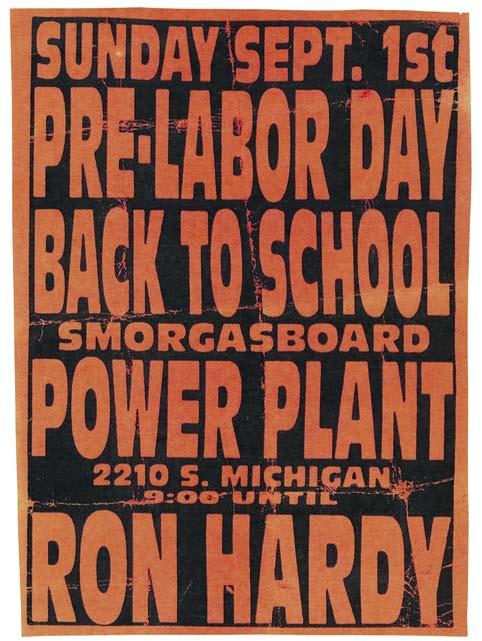

27 Music
Poster for Ron Hardy's Back to School night at the Power Plant, Chicago, mid-1980s, from the Beyond Heaven: Chicago House Party Flyers book series. Photo: courtesy Mario “Liv It Up” Luna and Almighty & Insane Books
The Synplant 2 virtual modular synthesizer, from Sonic Charge, featuring AI-powered sonic analysis and generation



THE SOUND BEFORE SOUND


NOYA EHT L I F E A N D WORK OFÉLI EERINGELECTRONIC MUSICIAN CO TIATOR OF TH E M O N U LATNEM CCO ÉLIANE RADIGUE
In 1973, the American composer and new-music critic Tom Johnson wrote in TheVillageVoiceof his experience of listening to Ψ 847 , a new electroacoustic work by Éliane Radigue, during its New York premiere at The Kitchen. It was, Johnson said, as if sounds were “oozing” from the walls of the venue. Others seemed to be coming out of the ceiling. This strange, decentered sound—Radigue had pointed the loudspeakers toward the walls to create a web of sound waves that reflected from one surface to another—was for Johnson the source of a mesmerizing intimacy. How could Radigue, he asked of her compositional method, “accomplish . . . so much with so little”? 1
It is a good question, and one still worth asking fifty years later. Radigue’s music is characterized by sounds that come into audibility with a practiced slowness and then, at the end, fade away into nothingness. Between these poles, a composition occurs in which many musical events unfold in carefully structured ways. Often, because of the gradual transitions between one section and another, we do not hear them as such; instead, we’re captivated by the richness of the sonic coloration, the revelation of literally a spectrum of sounds. A visual analogy might be of “listening” to the shades of color on a Mark Rothko painting or of watching how changes of light act on our perception of an object. Radigue’s palette involves the meticulous use of fadings and cross-fadings from one tone to another. When multiple tones are operating at once, they set up an architectural, spatial sound.
Lasting eighty minutes, Ψ847is one of the French composer’s first works for synthesizer (in this case an ARP 2500, which, soon after buying the machine in 1971, Radigue nicknamed Jules) and magnetic tape. In four fluid sections, Ψ847 reveals itself slowly: a steady, slightly wavering electronic tone comes into audibility, and bell-like sounds (they’re not bells) chime at regular intervals. The interplay of partials (or harmonics) is like a compositional sleight of hand: bells, piano tones, and the like are not there, we just imagine them to be because of the way acoustic frequencies interact and “beat” together in the work. This slow reveal is fundamental to Radigue’s music. “There is something air, and it becomes sounds,” she told me in 2016, explaining the attention she gives to the moment preceding the note’s strike, before the vibration of the note travels from its source to the human eardrum.2 She asks us to listen to the sound before sound, and then to the harmonics—the sounds within sounds—that come into play as the notes interact and decay. This is why sound sources (in the case of Ψ 847 , or of any of Radigue’s electroacoustic works, loudspeakers) are so important: the listener is bathed in a vibratory mass of sonic material.
Since the early years of this century, Radigue has worked almost exclusively with acoustic instrumentations. (The Golden Nica–winning L’îlere-sonant[The re-sounding island] from 2000 was her last work with Jules.) Although her compositional tools have changed—she started out using acoustic feedback, then synthesizer, and, since 2011, acoustic instruments—her method has remained the same. Three Naldjorlakcompositions (2005–11) were all acoustic works that explored a sense of unity and completeness between composer and player via an intermediary, the instrument itself. These three works were a gateway to the OCCAMcompositions, which began in 2011 and of which there are now a dizzying number. Simply, the OCCAMs are acoustic works composed by Radigue and created in tandem with a given musician. The process is one of mutual discovery, closeness, and oral transmission, suggesting a secular master/disciple relationship. And as with all her earlier works, the OCCAMs bring sounds slowly into being and then gradually transform them, allowing those sounds to bloom in space before slowly exiting the room.
Such an esoteric method of working is at odds with Radigue’s early years. She was born in 1932 in Paris, the only child of a shop-owning family, and her initial musical education centered around school: she had a good voice and sang in choirs; she later studied the harp. Her induction into music—and music theory—came at an early age. Radigue still speaks of the importance of her childhood piano teacher, Madame Roger, who was the first person to reveal not simply an instrument but musical theory and its emphasis on the relationships between sounds. Marriage, in 1950, to the visual artist Arman, relocation to Nice in the south of France, and the birth of three children between 1951 and 1954 gave Radigue little time for developing her own voice, beyond studying harp and harmony at the Nice conservatory. (“Alas, I had moist palms,” she says of her inability to play well.)
But the twin catalysts to thinking of sound in a new way came in quick succession. The first was listening to the airplanes take off at the nearby Nice airport: there were few flights in those days and Radigue had a clear vantage to listen to the dynamic roar of the engines and the hanging harmonics they left behind as the planes streaked away. “I remember [listening to] a flight between Nice and Corsica,” Radigue says. “It was like a symphony!” The second was hearing Pierre Schaeffer’s “ Étude aux chemins de fer” (Railways study, 1948) on the radio. Schaeffer was

29 Music
Above: Éliane Radigue, Nice, France, c. 1950s. Photo: Yves Arman © Fondation A.R.M.A.N. Opposite: Éliane Radigue in her studio, Paris, 1971. Photo: Yves Arman © Fondation A.R.M.A.N.
an acoustic engineer and broadcaster closely associated with the French national radio; an interest in acoustic science led him toward composition and sonic research in his experimental workshop, which was conducted at his Studio d’Essai (Experimental studio) in Paris. “ Étude aux chemins de fer” was one of Schaeffer’s Cinqétudes de bruits (Five noise studies, 1948), early musiqueconcrète works that used sound collages—in this case tape recordings of six trains steaming in and out of Paris’s Gare des Batignolles—to construct a real (i.e. concrète ) music. As a method, musiqueconcrète constituted a radical reshaping of what a musical source might be and how its sounds might be manipulated. A chance meeting with a friend led Radigue to an introduction to Schaeffer, who took her on as an intern.
The technical skills Radigue learned at Studio d’Essai were to come in handy when Radigue embarked on her own compositions, feedback works made first with microphones and tape recorders, then with synthesizers. (She worked briefly on a Buchla, then on a Moog, before settling on Jules, a keyboardless ARP 2500.) Meanwhile Schaeffer’s emphasis on listening to the timbre of resonated objects, and to the shape of the sounds that they made, fed into her own sound world. Radigue was to learn about using acoustic feedback (no easy task) a little later through Pierre Henry, a composer she met first at Studio d’Essai, and then worked as an assistant at the latter’s studio, Apsome. Indeed, it was Henry who provided the conditions for Radigue’s first feedback works by installing in her flat the equipment she needed to edit his L’apocalypsedeJean (Apocalypse of Saint John, 1968).
Radigue’s first feedback works—among them Jouetélectronique (Electronic toy, 1967), Elemental I (1968), and Usral (the title is a contraction of “ ultrasonsralentis” or “slowed-down ultrasounds,” 1969)—date from this period. The prevailing feeling of these feedback works is of being inside a sonic cloud that pulses and crackles with a palpable auditory effect. All three are, for Radigue, relatively short, an average of twelve minutes each. Tones pulse in and out of sync with one another; spatially, they seem to move closer and then back away; and clear lines of rhythm can be discerned. For all the soft, ethereal tones of, say, Usral, which was made from sloweddown high frequencies and is used by artist Marc Halpern to accompany one of his kinetic sculptures, Radigue is never frightened of abrasive sounds. ElementalI’s four sections—earth, wind, fire, and water/sea— are at points ferocious, as waves of sound emulate the force of nature.

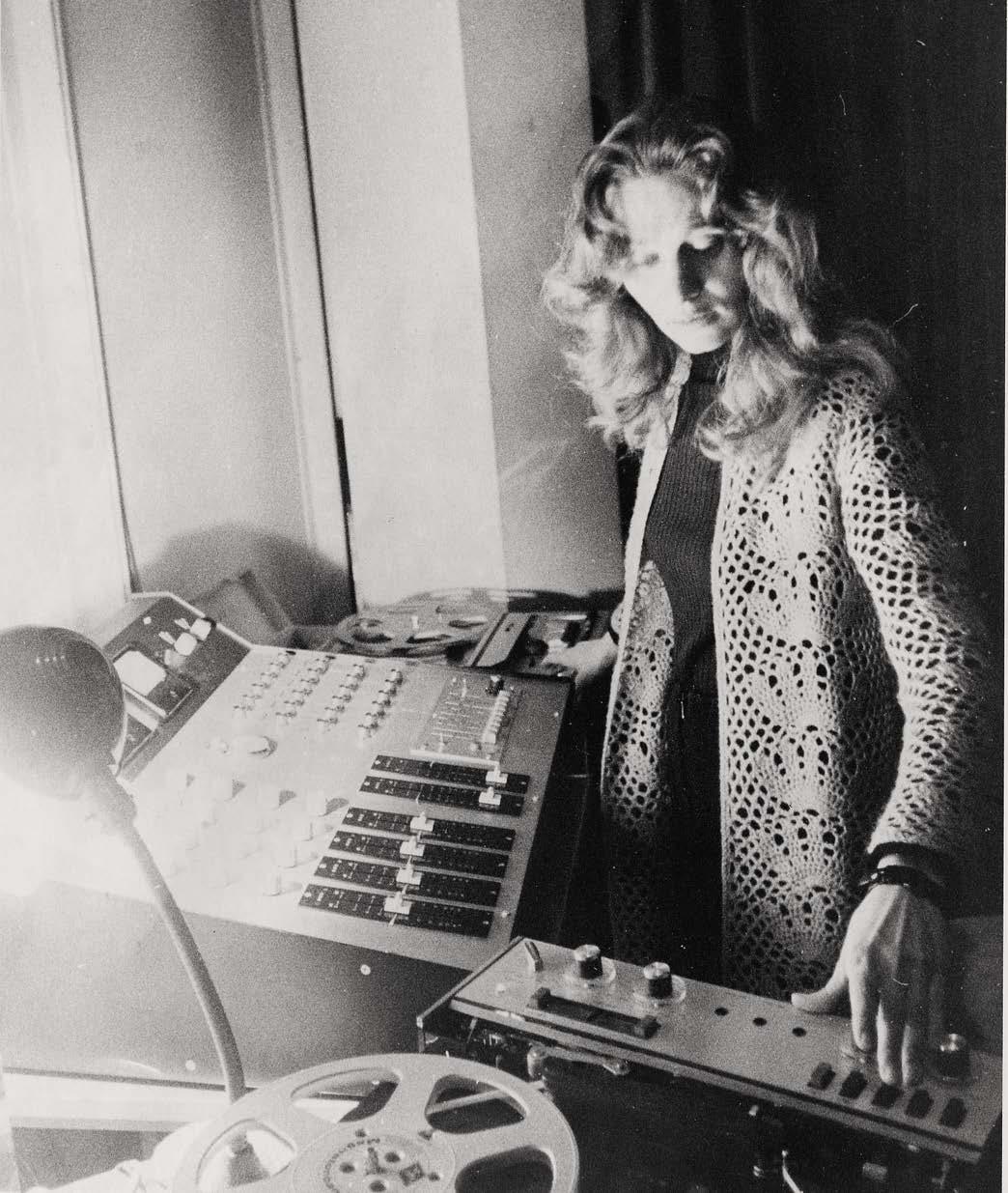
30 Gagosian&
Above: Éliane Radigue in her studio, Paris, 1971. Photo: Yves Arman © Fondation A.R.M.A.N.
Below: Éliane Radigue installing for a performance of Chry-ptus , 1971, New York Cultural Center, New York, April 6, 1971. Photo: Yves Arman © Fondation A.R.M.A.N.
It is impossible to overestimate how important this technical apprenticeship under “the two Pierres” (Radigue’s term) remains to her music. She still describes herself as a concrètecomposer in the sense that she listens for a sound’s internal components—its partials—as a mode of practice. Because “classic” musiqueconcrèteis a product of studio technology, to Radigue it is easy to see how her electroacoustic compositions fit in this lineage. But what of the OCCAMs?
These compositions are acoustic works founded in simplicity.3 Each OCCAMcomes out of a focused relationship between Radigue and a particular instrumentalist. They begin with a shared image (often a watery one) that Radigue supplies to the musician. There is no score or notation. From there, composer and instrumentalist work closely to construct a piece together, forming what might be termed a human feedback loop. As in the case of her electroacoustic works, each OCCAMbegins as if with a breath of sound: the touch of a harp string, the vibration of air grazing a cymbal. In the case of OCCAMXXV(2018), for organ, the first sounds are below the threshold of human hearing: you feel the music first in light vibrations hitting the feet. In Aura Satz’s film OCCAMDeltaXX(2023), featuring violist Julia Eckhardt and harpist Rhodri Davies, the viewer senses the anticipation of waiting for the bow to touch a string: that infinitesimal period before the sound is part of the work. “The music is simply there,” Eckhardt told her fellow “chevalierd’OCCAM,” the trumpeter Nate Wooley, in a 2021 issue of SoundAmericandedicated to the OCCAMworks, indicating that this realization called for a complete rethinking of what music is and how it occupies time and space.
Eckhardt’s acknowledgment of the ubiquity of music is significant, for it points to the heart of Radigue’s sonic thinking. In 2009, she published her essay “The Mysterious Power of the Infinitesimal” in LeonardoMusicJournal; it includes an illustration, “Spectrum of Waves/Spectredeslongeursd’ondes,” a diagram of the electromagnetic spectrum and a picture of cosmological proportions, for it positions the range of human hearing inside just one tiny section of what Radigue refers to as an “immense vibrating symphony of the universe.” In other words, just because we can’t hear something does not mean it isn’t there. This chimes with Radigue’s practice of Tibetan Buddhism. Although her compositions sometimes touch on Buddhist themes (the two ARP 2500 works JetsunMila[1986] and, most important, the magisterial Trilogiedelamort[Trilogy of death, 1988–93], for example), Radigue insists that her music is secular. But the sonic transformations, the splitting apart of notes to reveal their ethereal materiality, the shifts of energy—that “now you hear it, now you don’t” process—between sounds, all have clear parallels in the Buddhist emphasis on impermanence and continuous transition.
As with Radigue’s electroacoustic works, there is a beautiful simplicity to Radigue’s OCCAM compositions. (The hint is in the name, a reference to the medieval theologian William of Ockham’s philosophical principle of parsimony, known as O ccam’s razor.) It is, however, in these acoustic works that the fragility of sound and music is best encapsulated. Each OCCAMis embodied in its musician, which means that it exists for as long as that musician exists. This raises a difficult question: what happens next? Carol Robinson is a clarinetist, composer, and close collaborator of Radigue’s; she has played on numerous OCCAMs and is the only musician with whom Radigue has cocomposed. While the works are very much designed to be passed on, Robinson points out that to do so is a significant undertaking. “Passing on an OCCAMsolo is more a question of transferring a performance practice than a simple exchange of a pitch structure,” she says. “Given the highly personal character of each piece, it sometimes takes years and repeated performances for the pieces to settle, for the technical demands to be understood and mastered.”
In a few cases this transmission from original musician to second-generation musician has already happened. OCCAMHEXAV(2021), a sextet coauthored by Radigue and Robinson, advances a method that is certainly Radiguean, even as it adds its own elements. “Cocomposing with Éliane is in itself a transfer of her trust,” Robinson adds. “In taking the active on-site role with an ensemble, I apply her way of working, together with my instrumental experience with this music. . . . I serve as a creative guide and reference as much as a composer. . . . It is not the content that is essential, but rather how the musicians produce the extremely delicate and ever-changing vibrations that interact as they offer their sounds.”
This is as it should be. The OCCAMs are many things: compositions, combinations (they exist as solos, duos, ensemble, and orchestral works), explorations in relationships among people, instruments, and spaces. But they are also, at their most wondrous, pure encounters with sound. There is an invitation there to regard sound as ending. They ask only that you listen, and to listen offers an encounter with a universe in which everyone, and every sound, plays its part.

Éliane Radigue’s score for 7th Birth , 1971, one of the first compositions for the ARP 2500. Photo: Fondation A.R.M.A.N. © Éliane Radigue
1. Tom Johnson, “Minimal Material: Éliane Radigue,” in TheVoiceofNew MusicbyTomJohnsonNewYork City1972–1982(New York: Editions 75, 2002). Available online at editions75.com/Books/TheVoiceOfNewMusic.PDF (accessed March 4, 2024).
2. Unless otherwise stated, all Radigue quotes come from an English-language interview with the author in 2016.
3. There are a few exceptions. OCCAM IX (2013), composed for Laetitia Sonami’s Spring Spyre instrument, uses pick-up mics, a computer Max/MSP patch, and synthesis programs. OCCAMVIand XX(2011 and 2014) are for EMS synthesizer; OCCAMHEXAV(2021), a co-composition by Radigue and Carol Robinson, includes an electric guitar in its sextet. Aura Satz’s OCCAM Delta XX (2023), a film featuring harpist Rhodri Davies and viola player Julia Eckhardt, is the only audiovisual composition in the series.
31 Music
TREVOR HORN
The mind behind some of the most legendary pop stars of the 1980s and ’90s, including Grace Jones, the Pet Shop Boys, Frankie Goes to Hollywood, Yes, and the Buggles, produced one of the music industry’s most unexpected and enjoyable recent memoirs: TrevorHorn:AdventuresinModernRecording.FromABCto ZTT.Young Kim reports on the elements that make the book, and Horn’s life, such a treasure to engage with.

Video killed the radio star
Videokilledtheradiostar
Videokilledtheradiostar
Inmymindandinmycar
Wecan’trewindwe’vegonetoofar
Picturescameandbrokeyourheart
PuttheblameonVCR
No kid in the Western world could have missed the Buggles’ hit “Video Killed the Radio Star” when it exploded on the scene in 1979, ushering in the over-the-top go-go ’80s. Tailor made for fluorescent-clothed teens, the song still more excitingly announced the arrival of music videos on TV—hardly as impactful as the first televised presidential debate between Nixon and Kennedy, but a new and important dimension in pop music and pop culture generally. Aptly, “Video Killed the Radio Star” was the first clip shown on MTV when the network launched, on August 1, 1981; the single shot to number one in sixteen countries, selling more than 12 million.
Funnily enough, in pop music terms, the musicians in the Buggles were on the old side to be debuting, all verging on thirty years of age. They also hailed from Britain, where there were only (gasp) three TV channels, as opposed to at least seven, plus cable (including MTV), in the United States. But this hit would be instrumental in setting up the career of one Buggle, the lead singer and a co-composer, who would become one of the main architects shaping the soundscape of the coming decade, not as an artist but as a producer: Trevor Horn.
I was familiar with Horn’s name because of the effect it had on people in the pop music world—sheer reverence—when his name came up in connection with DuckRock(1983), the seminal album by my late boyfriend Malcolm McLaren. DuckRockwas Malcolm’s first as an artist, after having art-directed and managed the New York Dolls, the Sex Pistols, and Bow Wow Wow. Ostensibly DuckRock was based on indigenous dance music around the world, but in fact it introduced world music and (soon to be dubbed) hip-hop to the world at large.
I met Horn once briefly after Malcolm died but I didn’t truthfully understand what it meant to produce DuckRockor any of these records that were made just at the dawn of the digital age. By the time I knew Malcolm, technology was light years ahead of when he made DuckRock, nearly twenty years earlier, with Horn. Now, with Horn’s entertaining memoir AdventuresinModernRecording, I understand and appreciate that what he’s done as producer, with Malcolm and other artists—a veritable who’s who of the ’80s verging into the ’90s, including Frankie Goes to Hollywood, Grace Jones, the Pet Shop Boys, Simple Minds, Rod Stewart, Seal, and even Paul McCartney—as nothing short of magic.
I initially picked up Horn’s book because several people in the music world told me that it was great, especially what he wrote about Malcolm. I was a bit dubious at first because I find most of these memoirs not very good in and of themselves and geared for die-hard fans and music geeks. Because I am not a “muso,” I find this disappointing, but to my surprise, Horn’s book captivated me. It’s very funny and also very real. He brings a musical era to life and we learn how his skill with the latest technology, which he initially had access to through the money earned from “Video Killed the Radio Star,” made him one of the foremost producers of the ’80s. It was a time when technology was changing so fast that a track’s date of production can be pinpointed within months by the techniques implemented to make it. Happily, Horn explains these technical aspects in an accessible way for non-muso nerds like me to appreciate.
The lifetime of the postwar baby boomer generation is one of remarkable technological and social advance. Horn, like Malcolm, grew up at the tail end of what in Britain was an economy of necessity, where you only had what you absolutely needed. When I brought this up during our chat, he agreed: “I remember in the ’50s, nobody had anything. They could eat but there wasn’t lots of stuff around. Any little bit of stuff that you got was treasured.” A record player was a big deal, and besides live acts, you could only hear music on the radio— three stations: Radio Luxembourg, the BBC Light Programme, and the BBC Home Service.
Horn started out as a musician, following in the footsteps of and often stepping in for his father, an amateur bassist. His parents, though understandably doubtful about a career in music, were supportive: his father bought him studio time in the early ’60s, where he made his first record; his mother encouraged him to submit it to the local radio station, which remarkably led to airplay; his grandparents bought him new speakers after he blew out his first set by distorting the guitar sound incorrectly. These starts and stops (forays into more traditional jobs—a rubber company, a plastic company) eventually led to his working as a jobbing musician, writing songs and producing, culminating with the
Technology always shapes music if you think about it. In the 1920s, the orchestra was at its peak— classical orchestras playing great works by composers who were like rock stars.
–Trevor Horn

33 Music
Opposite: Geoff Downes and Trevor Horn from the Buggles, London, 1979. Photo: Fin Costello/ Redferns/Getty Images
Above: Trevor Horn, New York, 1974. Photo: Bernard Gotfryd
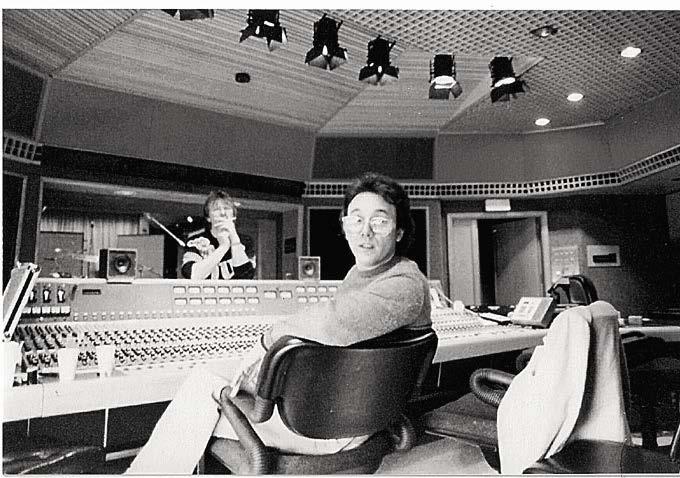
massive hit “Video Killed the Radio Star.” That song changed his life, affording him not only financial stability but the resources to invest in new technology and take creative risks. After touring with Yes, his favorite band, he wisely followed the advice of his manager and wife, Jill Sinclair, who told him, “As an artist, you’ll always be second division, whereas if you go into production, you can become the best producer in the world.”
Horn told me, it “took about five years to get from my first production to ‘Video Killed the Radio Star.’ It was a good thing because by the time I got a hit, I kind of knew what I was doing. It wasn’t a fluke—obviously it’s a fluke when it’s such a big record—but I’d put in years in studios so I kind of knew how they worked. Going into the studio back then was very different from going into a studio now. . . . You couldn’t program it. It had to be played. So you had to mike up drum kits and pianos. People had to play together . . . that’s how we used to do it in the early days to eight-track.”
Horn’s first successes as a producer were with the band Dollar, hand-picked for him by Sinclair, and then with ABC. With Dollar he began to put together a team that included the gifted pianist Anne Dudley and one of the very first digital samplers, the Fairlight. The instrument was exorbitantly expensive, about the cost of a house, and Horn was one of the first handful of people to acquire one. “I was the first person to try to use the Fairlight on mainstream records,” he explained. “I did some things with it that really really worked and people didn’t know how I’d done it.”
Producing Dollar and ABC was straightforward, no matter how innovative Horn was with the Fairlight. Malcolm was another story entirely. Malcolm was familiar with the recording process but the recordings of the groups he’d worked with were basically musical performances in the studio (whether or not you thought punk was musical). DuckRock was more of a concept, and in the context of its time, not even really music: Horn had to turn abstract ideas and a collection of seemingly random sounds that Malcolm had discovered in different parts of the world, and that appeared to have nothing to do with pop music, into hits.
“I decided to organize a tour to the places and origins of those exotic and magical sounds [many discovered in the Pompidou library],” explained Malcolm in a document he prepared to go with the album’s 25th anniversary rerelease, and he took Horn along. Malcolm would laugh and describe how he had fended off Sinclair as she demanded angrily over the phone, “Where have you taken my Trevor?” The answer was New York (hip-hop, rap), South Africa (township music), and Appalachia, where the square dance came from, the root of the unlikely but seminal single “Buffalo Gals.”
“Whenever I asked Malcolm about a possible single, he’d always say, ‘Buffalo Gals,’ which terrified me,” relates Horn. “How the hell were we going to make a corny old square dance into a hit single? But we soldiered on, mainly due to his blind determination.” Somehow Horn took the cry that a Zulu woman makes (“One night she [Zulu singer] told me about a noise that Zulu women made as they killed someone. She shook her whole body and made this bloodcurdling shriek that sounded like a war cry. I recorded it immediately—it’s the sound that starts ‘Buffalo Gals.’”); rapping and scratching from the World’s Famous Supreme Team, who hustled on the streets of New York; and Malcolm’s rapping (kept in time by Horn beating his chest), and turned all this into a mind-blowing classic that inspired multitudes and has been sampled in over 300 tracks, by musicians ranging from Eminem to Lana Del Rey, Dr. Dre, Public Enemy, Alicia Keys, Snoop Dogg, and Neneh Cherry.
You could do audio gags on records that nobody had ever done before. I kept abreast of the technology. –Trevor Horn
When “Buffalo Gals” was delivered to the record company, Malcolm was told it “wasn’t music” and that he was trying to “swindle” them again. But radio play and the public’s overwhelmingly favorable reaction saved Malcolm and the track. Horn told me proudly, “I remember one DJ who played it said, ‘You know what, I’m going to play that again.’ He played it a second time on Radio One because he liked it so much! It was so unusual.” He said it turned the rapper Rakim, initially unfriendly, into a fan: “Man you did ‘Buffalo Gals? And you did Art of Noise!’ They loved ‘Buffalo Gals.’ I got respect!”
Malcolm told me that the morning after he spent the night in a Los Angeles jail for speeding on Sunset Boulevard, the guard who arrived for the new shift noticed his name. “Malcolm McLaren? ‘Buffalo Gals’! He’s here? We can’t have that!,” the guard apparently exclaimed before releasing him.
34 Gagosian&
Trevor Horn, c. 1986
It’s the music you listen to before you mate that generally is the music that stays with you. –Trevor Horn
Horn used some of the ideas from Duck Rock when he made another cutting-edge record, IntoBattlewiththeArtofNoise(1983). This was the first release of his record company ZTT (Zang Tumb Tumb, after a sound poem by the Futurist Filippo Tommaso Marinetti), which he formed with Sinclair and the NewMusicalExpressjournalist Paul Morley. IntoBattlewas followed by ZTT’s first signing, Frankie Goes to Hollywood, and another monster single, “Relax.” “It was an exciting time,” Horn remembered. “You could do audio gags on records that nobody had ever done before. I kept abreast of the technology. . . . Literally that week, a piece of kit came out and suddenly we could lock a drum machine to the Fairlight. That was the sound of ‘Relax.’” For Frankie’s next single, “Two Tribes” (1984), he enlisted the new Synclavier, which cost $350,000.
What is notable about Horn’s career is that although he made such enormous commercial hits, he continued to push artistic boundaries with commercially risky projects like the Art of Noise. But even those, like the Art of Noise’s “Moments in Love” (1985), were successful. If you don’t know it by name, you’ll probably recognize it when you hear it.
And then there’s another crazy record: Grace Jones’s SlavetotheRhythm(1985), which consists of the title track remixed in eight different ways. It started when Chris Blackwell, the owner of Island Records (who had also signed the Buggles), asked Horn to make a single remix of “Slave to the Rhythm,” a track originally written for the Frankies, for a greatest-hits album. “Delusions of grandeur!” enthused Horn when we spoke. “I love the track. . . . We got a bit carried away. . . . I thought it might be worth having because we tried so many different things. We had this amazing new technology”—the Synclavier, which is credited in the sleeve notes—and you could “do so many things with this one track.” Remarkably, when Horn proposed the novel idea of an album of remixes instead of a single track, Blackwell went along with it once he recovered from shock. The result is an iconic concept album with snippets of Jones conversing about her life, voice-overs by actor Ian McShane, and even a clip of Johnny Carson introducing Jones on TheTonight Show . Horn explained, “You wanted to do something with [Jones] because she was so interesting to look at. She was a fun person too. . . . It’s like the ultimate remix album.” It’s incredible that such a record was made, but the artistic faith was rewarded: Slavetothe Rhythmwas one of Jones’s most commercially successful albums, selling over a million in its first year, and the single became her biggest hit. But Horn contextualizes, “I think people were shocked that the song ‘only’ got to number twelve [in the UK] because up to then just about everything I’d done was such a big hit.”
When I asked Horn about the role of technology in his work, he answered, “Yes, I think technology always shapes music if you think about it. In the 1920s, the orchestra was at its peak—classical orchestras playing great works by composers who were like rock stars. That’s a machine—that’s all music machines: violins, double basses—you’re building those instruments, tuning them, teaching people to play them. Music’s always been about technology. The guitar back in the ’30s wasn’t considered a lead instrument because it wasn’t as loud as horns. Horns were really loud but the guitar wasn’t . . . they would amplify it by sticking a mike in it . . . the invention of the electric guitar was by Black blues players in Chicago and places like that, who took it and played it in a completely different way and turned the amplifier up.”
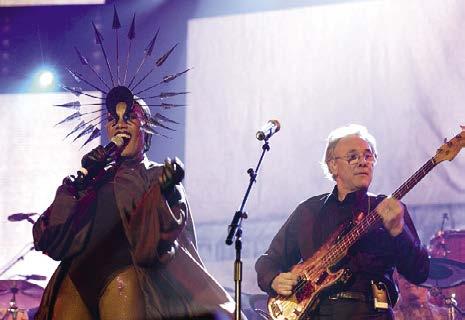
Meanwhile, Horn still gigs as a musician: most recently “I played with four of the guys who were in Dire Straits in a band called Dire Straits Legacy. It’s an eight-piece band and it’s all Dire Straits stuff. I play bass with them. It’s just for the fun of it. I’ve done it quite a bit. This year I played with Seal. I did a thirty-five-minute Buggles set and then a twohour set with Seal playing music from his first two albums in America and Europe. I’m actually doing a TV show in Spain [in a few days]. I’m going to sing a song from Deutsche Grammophon.”
By “Deutsche Grammophon” Horn means his latest project, Echoes:Ancient&Modern, a vinyl album covering iconic songs from the ’80s and ’90s, released on that famous German classical-music label. Iggy Pop sings a very Iggy version of “Personal Jesus.” “It was originally acoustic,” Horn told me, “but Iggy wanted to put some punk guitar on it.” There’s also yet a new version of “Slave to the Rhythm,” this time sung by Lady Blackbird, while Horn himself sings an ethereal version of Roxy Music’s “Avalon.”
“It’s the music you listen to before you mate that generally is the music that stays with you. When you have children, music can fall to second place. . . . A lot of people who retire are interested in the music that was made when they were young, like the stuff in the ’80s so there is a certain market,” he mused. This may be partly why Horn’s tracks resonate so much today, with people who grew up with his hits now in middle age and thereby influential—whether in deciding what music is played publicly or passing on their tastes to their Gen Z and younger offspring. But on the other hand, these tracks are simply great!
35 Music
Grace Jones and Trevor Horn, “Produced by Trevor Horn Concert for the Princes Trust,” Wembley Arena, London, 2004. Photo: Brian Rasic/Getty Images
Gagosian & Music
© Gagosian 2024 gagosian.com
Editor-in-chief
Alison McDonald
Managing Editor
Wyatt Allgeier
Guest Editor
Harry Thorne
Editor, Online and Print
Gillian Jakab
Text Editor
David Frankel
Design
Graphic Thought Facility
Front cover
Nick Cave of the Birthday Party performing at The Venue, Victoria, London, on November 26, 1981. Photo: David Corio/Redferns/Getty Images
©
Gagosian 2024
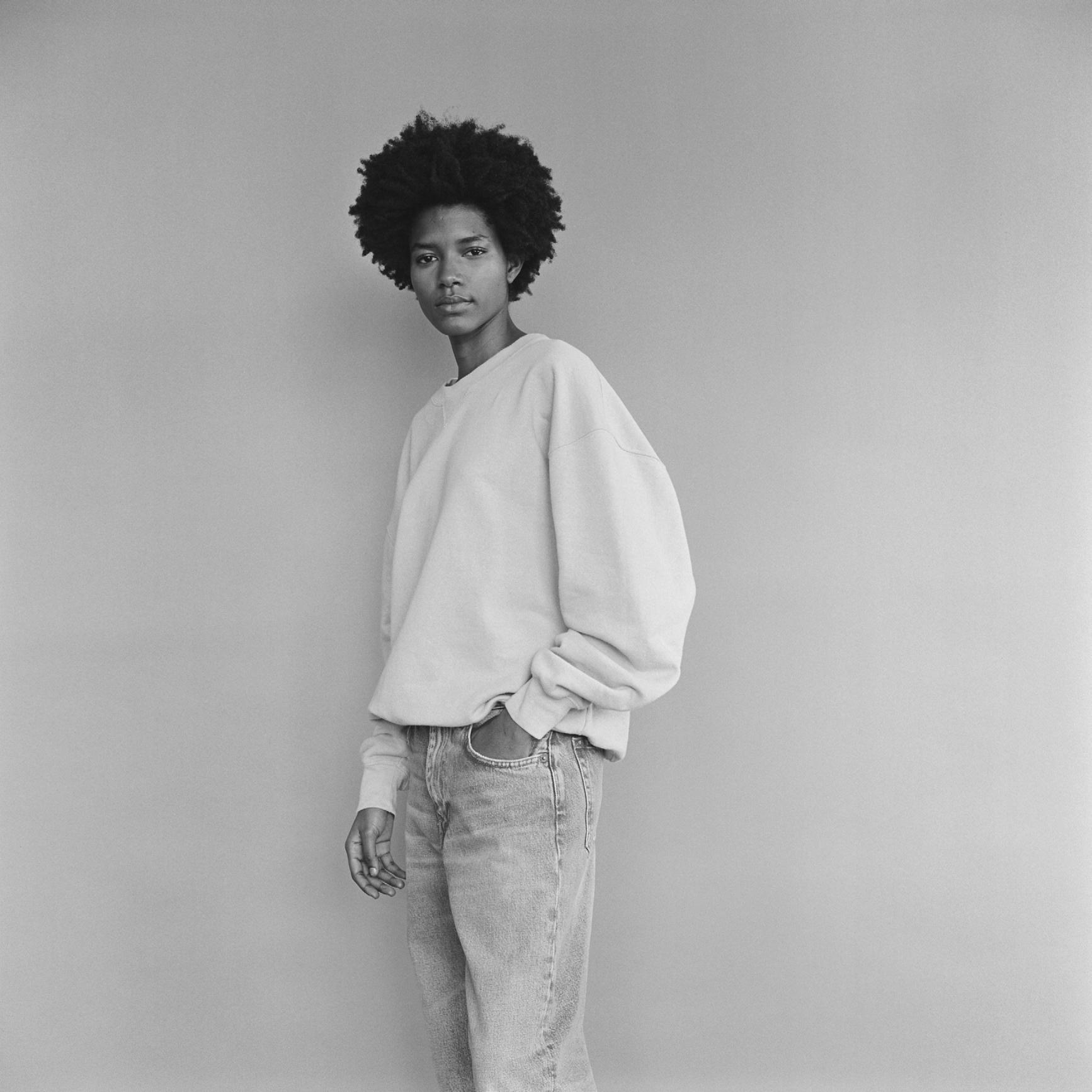

JIM SHAW A–Z
Charlie Fox takes a whirlwind trip through the Jim Shaw universe, traveling along the letters of the alphabet.
I’ve always wanted to write a guide to the work of Jim Shaw. His vast and ever-mutating oeuvre is also a dense and mischievous self-enclosed world, trippy, allusive, full of wild characters— is that Alfred Hitchcock’s head hanging off a McDonald’s bag?—and extremely weird scenes: whoa, look at the dancing girls in the middle of that blizzard of confetti on the emerald staircase in Down by the Old Maelstrom (Where I Split in Two) (2022), they’ve got cue cards with the opening lines from the Book of John on them: “In the beginning was the word.” What does it mean to go down those stairs into Jim Shaw’s underworld? And what can words do with this stuff? I thought a guide might be helpful in a goofy way—Jim Shaw for Dummies—but also the work itself refers to all kinds of complicated texts: the Bible, gnostic prophecies, Philip K. Dick, and—save me, Superman!—Ayn Rand. An outrageous sprawling codex, like Thomas Pynchon’s Gravity’s Rainbow (1973) or the annotations to Earl Sweatshirt lyrics on Genius, was always just craving to be written. Let’s get lost in the funhouse.
AMERICA • Jim Shaw’s work is very American. This entire guide could be dedicated to American things that appear in or have had some kind of influence on his work: EC Comics, the Church of the SubGenius, Mad magazine, Ken Kesey and the Merry Pranksters (Shaw painted the mural on a replica of their infamous acidhead bus for the movie Heart Beat of 1980), the exotica records of Martin Denny, Detroit, Busby Berkeley musicals, the 1993 Waco siege, and much, much more.
The work is also extremely American in its
unashamed vastness and encyclopedic energy, recalling huge US beasts such as Herman Melville’s Moby-Dick (1851), Robert Wilson and Philip Glass’s Einstein on the Beach (1976), or the Smashing Pumpkins’ Mellon Collie and the Infinite Sadness (1995). Shaw’s oeuvre provides a vision of America and its multiple vexed and wild histories deep-fried by hallucinogens. Even St. George and the Dragon (2015), his rendering of a foundational myth in British history, presents itself as an American story, like Rocky versus Apollo Creed: the Stars and Stripes flutter in our good knight’s hand; the dragon is played by a hot Playboy temptress, wings replaced by a Wonder Woman red cloak. If you asked Shaw, he could decipher and illuminate all this for you, but the sheer hot and hallucinogenic mystery may be even more fun to play with. To borrow the title of another of Shaw’s works, “The great whatisit?” is often the question you’re asking when you look at his work, jaw slack, brain melting.
BILLY • Billy is the protagonist of Shaw’s epic My Mirage (1986–91), which, if I were wearing my Arthur C. Danto mask, I’d call the great masterpiece of postwar American art. It’s a freaky bildungsroman chronicling Billy’s coming-ofage from small-town kid to hippie wastoid to Jesus freak through the shape-shifting matrix of American art itself. Billy’s life story is told as a cute Maurice Sendak storybook—he’s dressed as a bunny rabbit and he meets the devil. Or, as gross photorealist renderings of high school yearbook photos in which all the students are deformed. Or, as Hairy Who–style brain-melting gig posters. Or, as Ed Ruscha–style paintings of text: “He drew the
dirtiest thing he can think of,” laid against a monochrome backdrop.
My Mirage is also a cryptic autobiography, illustrating what Shaw was—a curious boy, a drug-blitzed far-out adolescent—and what he could have been if, like many other countercultural folk, he had felt the shimmery lure of religion waiting at the end of one too many trips. In taking self-portraiture as a deranged dressing-up game addled by pop culture, sex, and art itself, My Mirage ’s closest relative might be Matthew Barney’s Cremaster Cycle (1993–2002) but ultimately it’s a monster like no other.
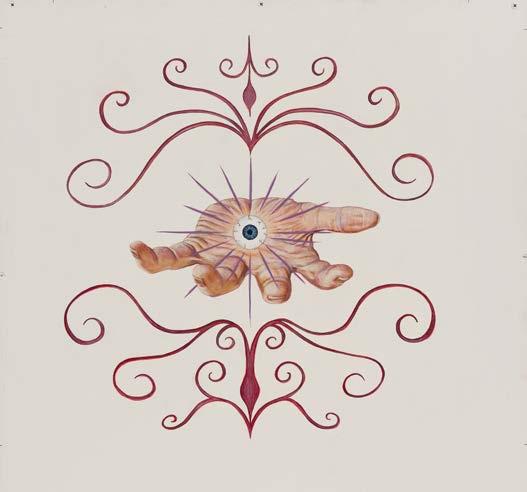
CONSPIRACY • Shaw keeps up an anthropological fascination with conspiracy theories, the more whacked out the better. In collaboration with
AMERICA CONSPIRACY
107
Opposite and above: Jim Shaw, The Alexander Romances, 2024 (detail), mural commissioned by Palazzo Diedo – Berggruen Arts & Culture
Gagosian and New York’s Metrograph cinema in 2021, he curated a program of conspiracyminded films, including John Carpenter’s They Live (1988; of course), Total Recall (1990), and Winter Kills (1979), a satirical comedy about the assassination of JFK that was mysteriously denied wide release despite rave reviews and big ticket sales. As Shaw pointed out in a note accompanying the program, all were movies “about the quest for truth and how it can become a complicated thing.”
Much like Shaw’s art, part of what’s amazing and fascinating about conspiracy theories, strictly as manifestations of the human mind rather than any kind of, uh, “truth,” is their tendency toward outrageously baroque complication, storytelling gone bonkers, up into the stratosphere, down into the darkness, running into the chilly mitts of CIA sharpshooters and politicians who are secretly lizards. By the way, I’m not saying that all of Shaw’s work contains some kind of hidden truth, that it will form a strange glowing orb in the event of his death, or that he appears as an extra in a biopic of Tom of Finland from 2018 listed on IMDb. Or am I?
DREAMS • Shaw’s Dream Drawings (1992–99) are maybe the closest you can get to the experience of inhabiting someone else’s brain. Shaw spent a couple of years making deadpan drawings of whatever he’d dreamt of the night before, and the results are pretty wild. The titles by themselves are hypercondensed
short stories: “A comic book by Tom of Finland in his early heterosexual days about a disaffected college student.” Like everybody else, Shaw’s got a pornographer in his unconscious and whoever they are, they’re into all kinds of weird stuff. Obsessive? Duh, of course. That’s what gives Shaw’s work so much energy. In an Artnet interview he said re: his hero Hieronymus Bosch, “I admire people who stick at it no matter what.”
EFFECTS • For many years, Shaw subsidized his art by working in Hollywood’s special-effects industry. Alongside early experiments with CGI, this job entailed a lot of sculpting, drawing, and painting, all of which adds up to a kind of phantom career running in parallel to his own. Batman and Superman with their identities in trippy flux may be good touchstones here. Are there two Jim Shaws, one commercial/industrial and the other not? Or is it all the same? As he told the Quarterly ’s Natasha Stagg in 2021, while moonlighting in Hollywood Shaw designed “the alien fur and spaceships for Earth Girls Are Easy [1988],” some stuff for A Nightmare on Elm Street 4 (The Dream Master) (1988), “high-end FX commercials,” and “a scene in The Abyss” (1989). Trippiest of all, straight out of art school in the 1970s he got a job drawing “the dream of a god” for Terrence Malick’s opus The Tree of Life, a movie that wouldn’t materialize fully formed until 2011. I’ve looked into it and the god in question may have been “an underwater minotaur.”

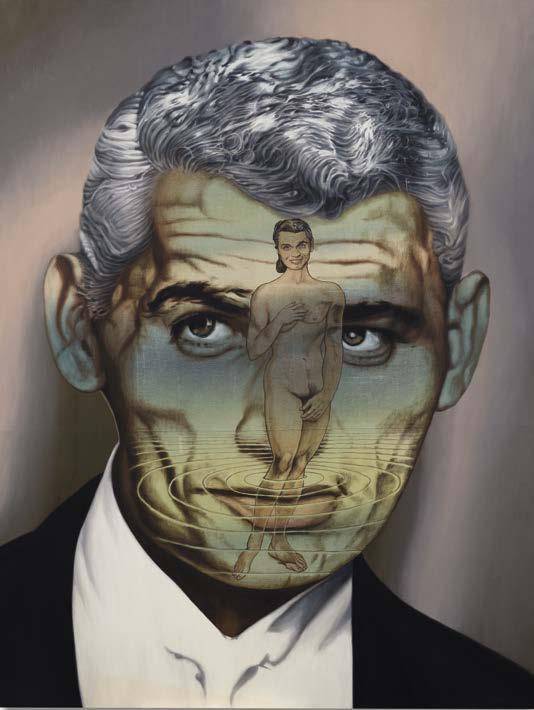
It’s not hard to see how all this activity would have fed Shaw’s brain, a mutually sustaining parasitic loop between himself and Hollywood that in turn would supply ideas for his own work. The craft and execution of Shaw’s work are also very Hollywood. Look at the manic rubber-nosed Nixon popping out of the chaotic Fritz the Cat–esque street scene backdrop in Labyrinth: I Dreamt I Was Taller Than Jonathan Borofsky (2012), or the girls dancing in his film The Rinse Cycle (2012). It’s not lo-fi or sloppy, it’s professional , the real deal, and yet still . . . the stuff of dreams.
FRAZZLEDRIP • “Frazzledrip” is a word coined by the nefarious QAnon conspiracy network, which claims it was the title of a folder on the laptop containing Anthony Weiner’s personal video footage of the phantasmagorical Pizzagate scandal—mainly Hillary Clinton and her 2016 campaign manager Huma Abedin attacking a child and drinking its blood in a satanic ritual at a New York pizza joint. Shaw has purloined “frazzledrip” from QAnon as an affective term for the adrenaline rush excited by any kind of lurid entertainment. “For me,” as Shaw told Stagg, “and for anybody that’s entranced by conspiracy movies, by true crime podcasts, by endless depressing documentary series about horrible events that took place at some boys’ school sometime in the ’70s, it’s stimulating the frazzledrip in our brains.”
GRANT, CARY • The suave leading man from Hollywood’s golden age appears in one of Shaw’s paintings, Cary Grant (2022), a spooky remix of the famous moment from Hitchcock’s classic thriller North by Northwest (1959) where the star attempts to outrun a plane that’s chasing him. Except in Shaw’s version he’s running away from an enormous version of his own face, which is grinning presidential-portrait style and is itself acting as the surface for a painted sky inhabited by another cheerful Cary, this one whooshing above the clouds in a kind of Aztec jet pack. Before you can even try to return to a normal altitude, you notice the rivers of viscera and disembodied
DREAMS GRANT, CARY 108
Jim Shaw, The Fountain of Salmacis (Jeff Chandler), 2022, oil and acrylic on muslin, 84 × 64 inches (213.4 × 162.6 cm)
Jim Shaw, Untitled (Faces in Circle), 2009, acrylic on muslin, 60 × 60 inches (152.4 × 152.4 cm)
baby legs that make his tanned cheeks look all flayed. Thinking about Shaw while this huge painting looms over you, you might want to ask the same question Hitch did when that wicked cockatoo bit him in the original trailer for The Birds (1963): “Oh . . . now why would he do a thing like that?” Maybe it was because, pre–Timothy Leary, Grant was a major evangelist for LSD, undertaking tons of trips as part of his psychotherapeutic regime. Here we have Cary on a bad trip. Or maybe Shaw just watched North by Northwest too many times.
HORROR • Asked by Dazed in 2015 “What is the scariest monster of all time?,” Shaw responded, “All of us humans.” Which is kind of haunting. INVENTORY • Shaw is a longtime denizen of thrift stores all across America, eternally in search of the weirdest eruptions from the American psyche, the morbid, kitsch, goofy, and twisted. This magpie habit famously manifests in his vast collection Thrift Store Paintings. As he told Dazed in that 2015 interview, ahead of a few of them appearing in an exhibition at the Barbican in London, Magnificent Obsessions: The Artist as Collector, it all began when he was a teen in the late ’60s: “One day I came across a four-by-six-foot Masonite panel with a crude painting of a Breck shampoo girl, which was pretty extreme. It got me interested in the potentials.”
JOHN F. KENNEDY JR. • The assassination of JFK is not where conspiracy theories began to be a thing. I don’t know what was: Jack the Ripper? Pandora’s Box? Or maybe Eve and the snake? But Dallas on November 22, 1963, is where they went into overdrive. For more read Don DeLillo’s Libra (1988). The 2018 show Everything Is Connected: Art and Conspiracy at the Metropolitan Museum of Art, New York, contained Shaw’s doctored stills from the notorious Zapruder film capturing JFK’s assassination, but in this case placing aliens at the scene. The truth is out there. Where have we
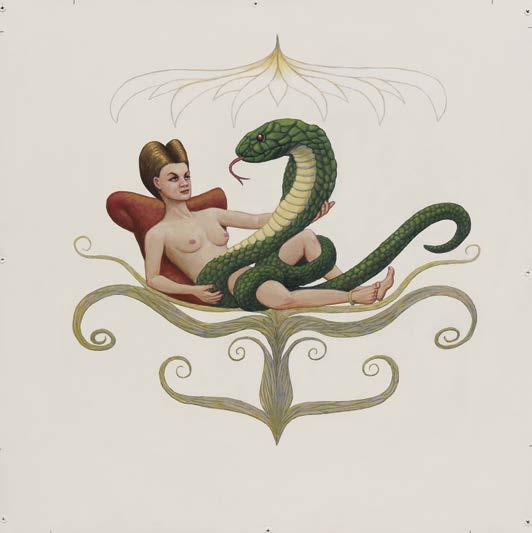

He happens to be made out of cotton and there’s a green mechanical elf at his side. At the edge of the scene stands a Black maid holding a white child, the two of them stone-faced.
America’s darkest sin and psychic turmoil are refracted through a fairytale mirror. Slavery, of course, looms over the whole thing: not just the maid and child but the cotton, the cruel master, and the heap of gold. The terrible legacy is of course still here: nature ransacked, the exploitation of the poor in the service of the superrich, dirty lucre, all of it embodied in the wicked figure of King Cotton, who joins a mighty American pantheon of imaginary (and all-too-real) evil capitalist ogres: Mr. Burns from The Simpsons (1989– ) , Mr. Potter in Frank Capra’s It’s a Wonderful Life (1946), Donald Trump.
Plenty of trickster kings reign over or lurk in Shaw’s paintings: L. Ron Hubbard, the Great and Powerful Oz, the 45th US president, and, of course, God in all His forms.
ers, and plastic surgery up the wazoo. It’s the home of film noir, Studio City, and Hollywood Babylon. Cue the demonic garbage ghoul from Mulholland Drive (2001), please! Interviewed for Kaleidoscope last year, Shaw called David Lynch “the greatest living artist, in a way.” Yup, LA’s psychogeographic impact on Shaw’s mind is obviously major.
MIKE • Back in the early 1970s, long before they were such heroic figures, Jim and Mike Kelley were just two misfit art students drawn together in Ann Arbor, Michigan. They fed on the more extreme bacteria of psychedelic culture, not to mention the toxic waste that
heard that before? Also, why did the Fox network cancel the JFK/Oswald–haunted X-Files spin-off The Lone Gunmen (2001)? What do they know that you don’t?
KING COTTON • King Cotton (2015) is one of Shaw’s scariest paintings. A gleeful tyrant complete with crown lords over a pile of gold.
LA • Shaw and his pal Mike Kelley headed out for LA from Detroit in 1976, Kelley in a Ford Pinto and Shaw in his trusty AMC Gremlin. Detroit’s deep industrial decline was kicking off, thanks to the oil crisis, and like tons of American dreamers before them, Shaw and Kelley were seduced by the fantastic possibilities out West. If you were Jim Shaw, how could you not be into it? Los Angeles is somewhere dreamt into existence, a nonstop cavalcade of the grotesque, the camp, and the ridiculous, a Fellini movie with In-N-Out Burger, surf-

HORROR MIKE 109
Jim Shaw, The Alexander Romances, 2024 (detail), mural commissioned by Palazzo Diedo – Berggruen Arts & Culture
Jim Shaw, King Cotton, 2015, acrylic on muslin, 48 × 48 inches (121.9 × 121.9 cm)
Jim Shaw, The Alexander Romances, 2024 (detail), mural commissioned by Palazzo Diedo – Berggruen Arts & Culture

would become punk rock—the MC5! Sun Ra! William S. Burroughs! They did Dadaist performance pieces together. They formed the legendary noise-rock band Destroy All Monsters with some pals, all of them living together in a ramshackle gothic abode that should probably be a museum now. They remained pals until Mike’s untimely death in 2012.
Maybe the greatest illustration of their friendship is the painting from Jim’s series Paperback Covers (c. 1996–2013) that depicts the two of them fucking. For the occasion, Jim’s unconscious has rented the kind of trashy motel room that Lula and Sailor might rent in David Lynch’s psychopathic romance Wild at Heart (1991), all shag carpeting and wood-paneled walls. Touchingly, they both appear in the painting as young men, Mike still the longhair who appears drooling slime in his faux-spiritualist Ectoplasm Photographs (1978–2009). The two straight men are gazing at themselves in the mirror while they do it, watching themselves getting high on each other. Collaboration in its purest sense: I mean, where does Mike end and Jim begin?
NIGHTMARES • A lot of Shaw’s works are pretty nightmarish. Another of the Paperback Covers paintings depicts a deranged clown fucking a block of wood that floats in midair, his crotch sucked right into the knotted vortex at its center. It’s like the tree fucking in Paul McCarthy’s installation The Garden (1992) given a Pennywise makeover. Colorophobes, take two Xanax and pray for a jump cut to morning. OISM • Oism is a religion founded by a protofeminist mage in the upstate New York of the 1830s, the spawning point for later faiths (or “cults,” if you prefer) such as the Universal Friends. Or maybe it was actually created by Shaw in the 1990s as another vessel for his work. It led to Untitled (Faces in a Circle) (2009), a painting of a bunch of cheery housewife heads forming a mandala against a riot of grungy Abstract Expressionist paint-strokes. (These ladies look like they play tambourine on a Christian Science LP found in a bargain bin.) And it also led to the fantastic backdrop of D’red Dwarf, B’lack Hole (2010), with its bubblegum-pink humanoid trees and glowing pyramid topped with an all-seeing eye.
Not forgetting The Rinse Cycle , a prog-rock opera and accompanying collection of videos influenced as much by Yes’s Tales from Topographic Oceans (1973) as by Wagner’s Ring Cycle (1848–74). Oism is a world within a world, an index of Shaw’s obsessions. The creepy hippie detritus, conspiracies, religion, American perversity, art, nonart, and parodies thereof: you can find it all in Oism.
PANDORA’S BOX • I figured Pandora’s Box, from (uh oh) 2020, may be a covid-19 painting. The happy protagonist looks like a housewife from early Mad Men (2007–15), her washing machine’s drum aglow like the briefcase in Pulp Fiction (1994), devious microbial Saturdaymorning-cartoon sprites cavorting overhead. Pandora and the Pandemic, an allegory: the world hexed by evil forces from who knows where, obsessions with cleanliness in overdrive. But I wanted to know what Jim thought so I asked him. His email mentioned “Trump’s spiritual guru Rev. Norman Vincent Peale,” the invention of the housewife during the Industrial Revolution “as part of the continuing enfolding of ourselves with our machines,” and an excursus of the Greek myth Jim came across that claims that “hope was the worst evil unleashed by Pandora’s box.” It’s fun to
think of all Jim’s works as a kind of Pandora’s box: a riot of wicked and amazing things running amok in the world.
QUICKSAND • One of Shaw’s greatest sculptures, Quicksand (2005) depicts the artist, bespectacled and unexpectedly dressed in a loud leopard-print jacket, melting into a gallery floor while tailed by a putrid zombie doppelgänger. It’s Gothic double trouble dressed up in glam attire. Duane Hanson meets Night of the Living Dead! Into what mire is this poor desperate version of Jim sinking exactly? His own nightmares? Revulsion at the demonic incubus who drives him to make so much work? A vortex of arcane information?
As with My Mirage, a ghoulish preoccupation with how the self can get all deranged and mutated swirls around in Quicksand. Who are you, really, when the self can be split into all these different forms, let alone mutate over a lifetime? And whose imagination isn’t full of ghastly horrors and fantasies and unspeakable slime? Is it a Jungian “shadow self” kind of thing? Tread carefully, kids.
RABBIT HOLES • I once had a three-hour conversation, interrupted by dog walks, over the phone with Jim at the behest of a fancy European art mag. Topics covered included Wes
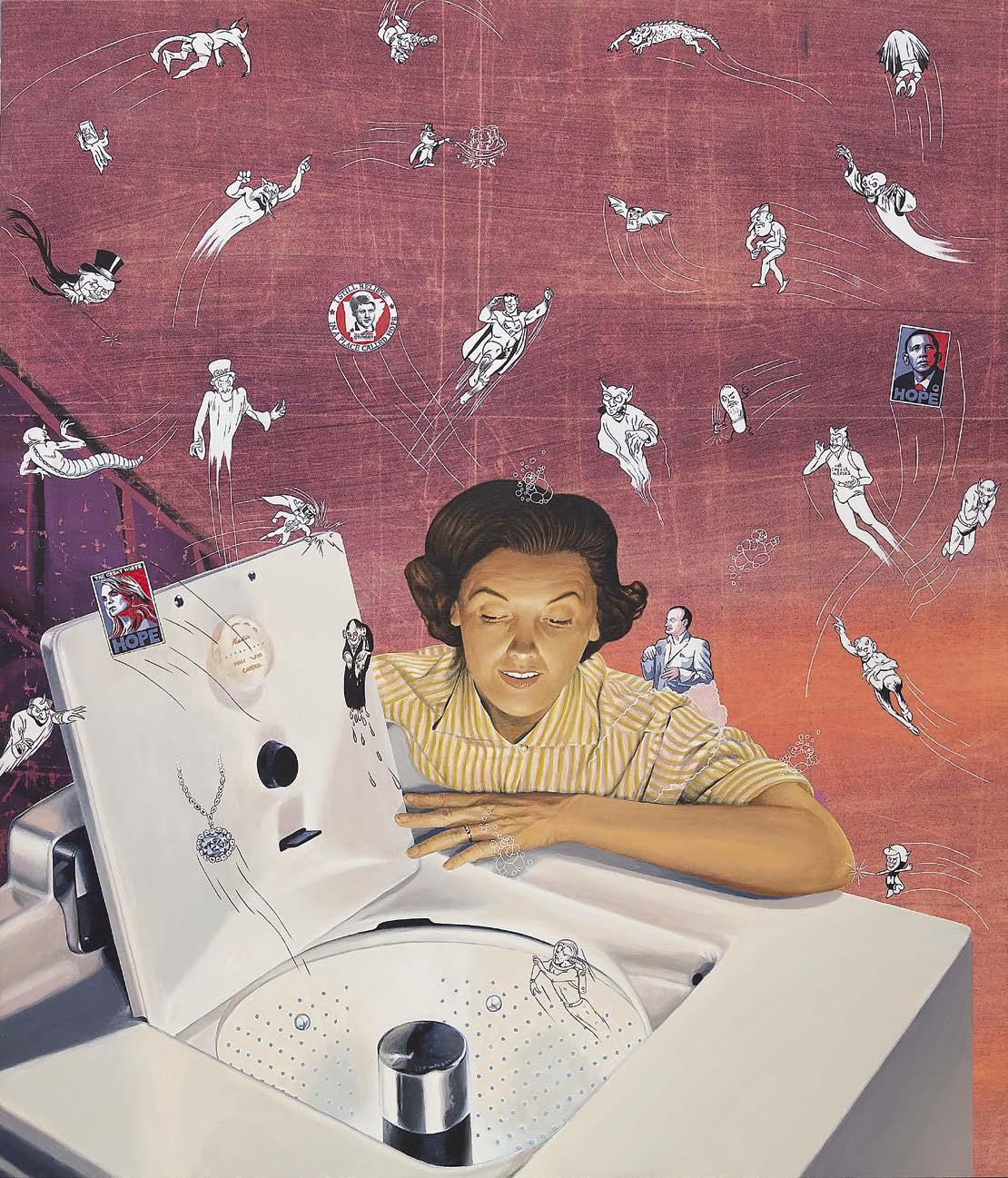
NIGHTMARES RABBIT HOLES 110
Jim Shaw, Pandora’s Box, 2020, acrylic on muslin, 47 × 40 inches (119.4 × 101.6 cm)
Jim Shaw, The Alexander Romances, 2024 (detail), mural commissioned by Palazzo Diedo – Berggruen Arts & Culture
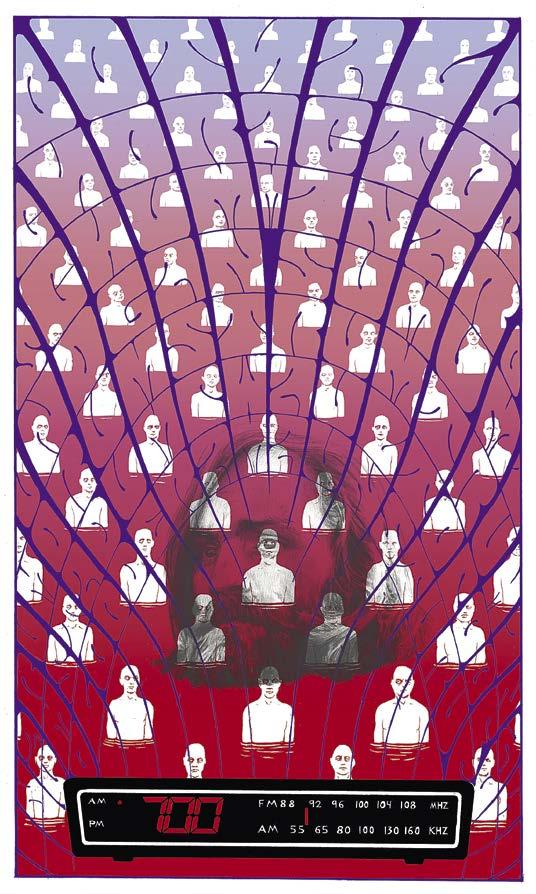
Anderson, hamburgers, Playboy magazine, and Michael Jackson’s crotch turning into a gun. Shaw did some FX work for Jackson’s movie Moonwalker (1988), which involved executing this metamorphosis, but the results were so unsettling that Jackson’s team removed them from the film. Like Alice, I found myself falling deep down into a strange and complex world but at a reassuring speed. It was hypnotic. The work is the same: a whole galaxy of rabbit holes, bewildering and bizarre, which somehow lead to multiple weirdly coherent worlds.
Half of our chat did not record; the computer’s memory failed, an ironic meta-commentary on the fantastic and mind-boggling density of Shaw’s imagination, matrix of references, and —not to forget—his incredible memory, too.
STUFF • In a 2017 interview for Artsy, rewinding back to the day he and Kelley quit Detroit, Shaw remembered, “We just left shit in our Ann Arbor house when we moved. . . . All these oil paintings and ceramics. . . . Literally the backyard was knee-deep in stuff.” Shaw’s work is obviously full of stuff: mythological stuff, pop stuff, movie stuff, drug stuff, sex stuff, historical stuff, musical stuff, deeply personal stuff. It is stuffed , and if not stuffed to the edge of explosion, swarming like Bosch meeting the cover of Sgt. Pepper. Often it is exploding—Pandora’s Box!—as if it can no longer be contained, like the gore inside a brain in David Cronenberg’s Scanners (1981). But it means a lot of stuff too. The tale of Shaw and Kelley abandoning the Destroy All Monsters house like battle-hungry knights in a heavy-metal power ballad captures one spooky aspect of it: Shaw’s work deals with how haunted we are by all this stuff.
TV
• Another amazing Shaw sculpture is a huge engorged eyeball shooting out of a 1950s TV
set straight at you, bloody veins and all. The rug underneath is a puddle of oozy toxic waste. Ah, Dream Object (Eyeball TV Model) (2006). Horror cinema is full of TVs riddled with ghosts or bewitched into hideously organic life. Remember the wraithlike hand beckoning the little girl into the television in Poltergeist (1982)? Change the channel: What about the slow-crawling but unstoppable demon from The Ring (1998)?
Since Shaw is a real horror maven, those movies must have shaped his creepy dream, but isn’t the sculpture also the perfect emblem of paranoid fantasy in his work? The TV that watches you. Fast-forward to right now and we’ve all ingested stories about Amazon’s Alexa and various other electronic assistants eavesdropping on their owners in order to snatch valuable commercial data about their viewing habits and favorite products. Yup, just because you’re paranoid doesn’t mean they’re not after you.
UNTITLED (OBLITERATED HIGH SCHOOL SELF-PORTRAIT, 2004) • OK, we’re returning to the trippy high school portraiture seen in My Mirage , but the sitter for this particular portrait has gone beyond a state of druginduced face melt: their face is a void, a black hole with a murk of tangled Ab Ex brainwaves inside it, all framed by a mushroom-cloud Afro. Before I had the A-to-Z idea, I was going to call this whole piece “Studies for a Portrait for Jim Shaw” with this work at the center, talking about how Shaw’s work is powered by a craving for obliteration via drugs or religion, especially. And I was gonna explain how the cosmic void at the heart of the picture relates to Shaw’s work because there’s no fixed or definitive style there: it’s got the wicked evermutating potential to be anything—cartoon, opera, sculpture, portrait—in the same way that Shaw himself has been a member of Destroy All Monsters, a frazzledrip fiend, a dad, an SFX artist, a musician, a collector, a folklorist, and, yeah, an artist. Fuck Walt Whitman, this is what containing multitudes looks like, and it can be kind of terrifying. No coherent portrait is possible. Anyway, I was gonna do all that and then the psychological implications were really huge so I didn’t, and anyway I think it’s all captured in the snapshot.
WORLD, THE HIDDEN • Another collection that metastasized out of Shaw’s inveterate haunting of thrift stores, The Hidden World focuses exclusively on strange, pathetic, and oddball Christian materials: leaflets full of whacked-out scriptural hermeneutics, bad rock records, gnostic charts. But all of Shaw’s work might be a freaky investigation of multiple hidden worlds at once: the underworld of the psyche illuminated by psychedelic drugs, underground pop culture, creepy religious sects, the shadowy cabals of conspiracy theories. This may all relate, biographically, to the mind-warping effects on Shaw of growing up in a Michigan town that was the headquarters for Dow Chemical in the 1950s and ’60s. Among the military-industrial conglomerate’s staff onsite was legendary chemist Alexander Shulgin, the wizardly man responsible for the synthesis of many psychoactive compounds.
What else were they up to? Was there something in the water?
ECSTASY • Shaw once took MDMA (a.k.a. Ecstasy, “X,” “disco biscuits”) at a national park in California in the 1980s and had a really wonderful time. This is also a man who was once passed a joint by Timothy Leary. Shaw’s work is full of intoxication—if you haven’t noticed by now, what drug are you on?—and it’s an intoxicant, too, just like Blake or Bosch or David Lynch, frying with trippy magnificence.
YOU • Apocryphal Native American proverb coined by Shaw for the show-within-a-show of thrift store paintings at The Rinse Cycle in 2013: “You think you own your stuff but your stuff owns you.”
ZERO • “My life’s philosophy,” Shaw once said in an interview, “is summed up in the Incredible String Band line: ‘I know nothing and know that I know nothing.’”
I’m not invoking that to create a nihilistic climax. Yeah, it’s another loop, just like St. George and the Dragon , but it’s also a means of transcendence. All the knowledge and information collected in this guide are ultimately futile because an infinite amount of mystery and/or still more unknown or unnamed information about the self, history, and the world lie beyond it. That’s before we deal with how the imagination hexes and mutates all that into an infinity of other strange and insane stuff. But that’s OK because it is, somehow, what Jim Shaw’s work is about.

STUFF ZERO 111
Jim Shaw, Split Fountain #7, 2024, screenprint on paper, 23 × 14 inches (58.4 × 35.6 cm)
Jim Shaw, Split Fountain #9 , 2024, screenprint on paper, 23 × 14 inches (58.4 × 35.6 cm)
Artworks throughout © Jim Shaw
CANDY DARLING
Published in March, Cynthia Carr’s latest biography recounts the life and work of the Warhol superstar and transgender trailblazer Candy Darling. Combining scholarship, compassion, and a rich understanding of the world Darling inhabited, Carr’s followup to her biography of the artist David Wojnarowicz elucidates the incredible struggles that Darling faced in the course of her determined journey toward a more glamorous, more honest, and more tender world. Here, Carr tells Josh Zajdman about the origins of the book, her process, and what she hopes readers glean from the story.
JOSH ZAJDMAN 2012’s Fire in the Belly was about the life, work, and activism of David Wojnarowicz. In March you published Candy Darling: Dreamer, Icon, Superstar. How did you decide on Candy as your next subject? Or, put another way, why Candy and why now?
CYNTHIA CARR I worked on this book for ten years. It started in 2013, when Candy’s friend Jeremiah Newton and I both won Acker Awards, given to those keeping the boho spirit alive here in downtown New York. He won for his documentary Beautiful Darling and I won for my book on David Wojnarowicz. The next day Jeremiah called me and said, “I don’t know who you are but when I saw you onstage I decided you’re the one who should write a biography of Candy.” I wasn’t sure about that but I went to see him. He showed me some of her journals and letters and photos, but what really got my attention was a story that touched on her struggle. In Manhattan she was acclaimed, welcome at parties with the rich and famous, and so glamorous. Then, Jeremiah told me, she’d go home to Massapequa Park and her mother would say, “Don’t come till after dark. Don’t let anyone see you. Don’t answer the door.” And I thought, Now that’s a story I’d like to tell. When I write a book— and you know, it takes so much time and energy—I need to find an emotional connection, and there it was. I connected to the pathos.
JZ Jeremiah Newton is a constant figure in the book, and also a former biographer of Candy. What can you tell readers about him and their relationship to one another?
CC They met when Jeremiah was still a teenager. He was a bit distrustful at first and she was a bit transactional—always looking for somewhere to stay, someone who could help her. Candy ended up living with Jeremiah in three different apartments, and of course she never paid any rent. He became someone she could always call on in an hour of need. He’d really do anything in his power for her. I think he regarded her as the most interesting person he’d ever known. She also got him into various inner sanctums. OK, not all of them— maybe she didn’t take him to the top parties—but
112
Opposite: Candy Darling, 1971, New York. Photo: Jack Mitchell/ Getty Images
Following spread, left: Candy Darling in photo booth strip, c. mid-1950s. Photo: courtesy the author
Following spread, right: Candy Darling and director Werner Schroeter in Munich during the filming of The Death of Maria Malibran , 1971. Photo: bpk Bildagentur/Digne Meller Marcovicz/Art Resource, New York

he met many famous people through her. And she wanted to take him because he was handsome. She’d refer to him as “my husband.” I talked to Jeremiah about Candy for ten years. He died in November 2023. And I think he truly did love her. He was devoted to preserving her legacy, and after she died, in 1974, he decided to write her biography. He completed two chapters, one about Candy taking him to Warhol’s Factory for the first time and one about the out-of-town tryouts et cetera for the Tennessee Williams play she was in, Small Craft Warnings [1972]. I didn’t find them useful for my project but he did me an enormous service by interviewing over forty people who knew her and giving me the tapes. Most of those people were dead by the time I started: her mother, her father, friends she met in beauty school, the directors she worked with Off-Off-Broadway, and so on. Without his work I would have had no access to those crucial informants.
JZ It wasn’t just a matter of what she went on to become, but where she came from—a family of origin rife with shame, abuse, and repression. What was her relationship with them like, and did it evolve?
CC By all accounts, Candy’s father, Jim Slattery, was quite charming until drunk, and he was often drunk, and then he was a brute. Candy couldn’t stand him, I think she feared him, but she never talked about him. She never said much about her childhood at all. Her mother divorced, then made the mistake of remarrying Slattery to provide Candy with a “masculine influence.” That didn’t last long. And he was out of the picture after the second divorce. Then he showed up at the hospital during Candy’s final illness, much to her dismay. When Jeremiah interviewed him after Candy’s death, Slattery claimed that he never even knew about her transition. And one of the astonishing, heartbreaking moments in my research came in that interview, when her father tells Jeremiah that he has no pictures of Candy except a couple from childhood, so Jeremiah then asks if he’d like some photos. And Slattery says, “No, I don’t think so.” His only child!
On the other hand, I think Candy’s mother really tried. She told Jeremiah that the first time she saw Candy in a dress, she decided, “I couldn’t hold my son back.” The mother, Theresa Slattery—usually called Terry—even got in touch with
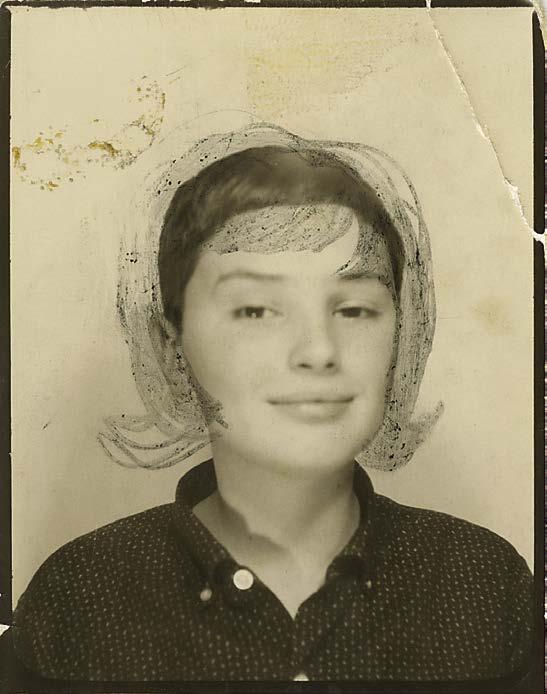
Dr. Harry Benjamin, an endocrinologist and early advocate for transgender people. In some notes that Terry wrote up about Candy’s transition, she also said that Candy had had hormone shots from “a famous doctor.” So possibly Benjamin. But I don’t think those appointments continued for too long. As for her saying “Don’t let anyone see you,” you have to remember that the Slatterys lived in a very conservative neighborhood and this was the 1950s. Homosexuality was illegal and transgender people were barely on anyone’s radar. Jeremiah talked to some of the neighbors after Candy’s death and heard that one of them thought “that kind of person” should be “put away.”
JZ Throughout the book, you turn to Candy’s own writing, whether in diaries or letters, which served as a constant throughout her life. You write that “to go through her diary is to absorb a real sense of Candy’s isolation.” What kind of responsibility to Candy did you feel as a result?
CC I can’t write a biography without getting some sense of the person’s inner life. It can’t just be, they did this and then that and then that. I was so helped in my book about David Wojnarowicz because he kept amazing journals, and I don’t think I could have written about Candy without access to those feelings she told to no one except her journal pages. It’s part of getting to the person’s truth, which is the biggest responsibility I have.
JZ Candy had an almost obsessive fascination with certain leading ladies of old Hollywood, such as Lana Turner, Kim Novak, and others. Why were those women touchstones for her?
CC A couple of things were going on. First, Candy made a study of beauty and femininity, so was there anything she could learn from the glamor and sex appeal of Lana Turner? But also Candy really identified with fragile, vulnerable stars like Judy Garland and Marilyn Monroe. Near the end of her life, she described what she saw in Kim Novak to the journalist Julie Baumgold: “There was always something frozen about her. She had to squeeeeeeeze it all out. She was so scared, and that’s the way I was all my life. Everyone always told me I was beautiful but I felt frozen, just like Kim. There was always something wrong with her, something . . . slightly . . . unacceptable.”
And Kim was her absolute favorite.
JZ Though she’d go on to serve as muse to Richard Avedon and Robert Mapplethorpe, it’s Warhol that Candy is most closely associated with. What was their relationship like, and how did it endure?
CC I’m not sure she’d qualify as an actual muse to those two, but in general, photographers did love taking her picture. It was different with Warhol, who never photographed her. For starters, Warhol loved drag. He described her in Popism [1980] as one of the “true drags.” So yes, he thought of her as a drag queen. But then most people at that time, even friends, described her as either a transvestite or a drag queen. The actual term for Candy during her lifetime would have been “transsexual.” I found no evidence that she ever called herself that, and it doesn’t appear in her own writing about herself. What I did find in her journals was a wish for gender-affirming surgery, mentioned for the first time when she was seventeen.
But back to Warhol. Candy appeared in Flesh [1968] and Women in Revolt [1971], both often attributed to Warhol but actually directed by Paul Morrissey. And she seemed always to be welcome at the Factory—a fact not true for others I could name, like Jackie Curtis, who was needy and disruptive. Warhol developed a real affection for Candy and

114
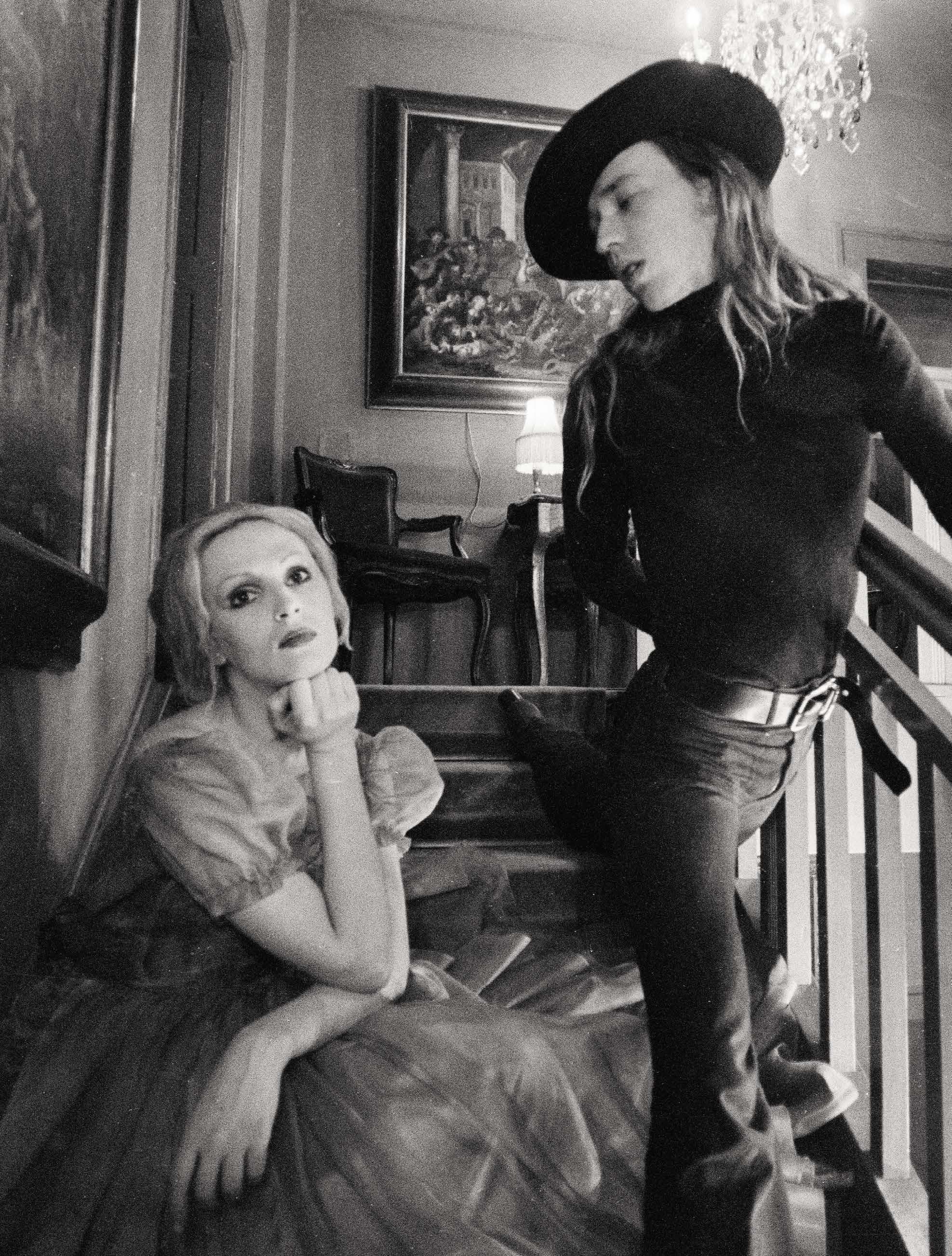
began taking her to parties and openings, movies and concerts. She was a perfect companion—witty, beautiful, and polite. And unlike so many others, she did not ask him for money. The result was that he occasionally gave her money, belying his reputation as a tightwad. Bob Colacello said that at the end of Candy’s life, when Warhol learned of her diagnosis, “For the first and only time in the seventeen years I knew him, I saw him cry.”
JZ Throughout her life, Candy expected a big break, only to be sorely disappointed. One of these was in the now camp-classic film adaptation of Gore Vidal’s novel Myra Breckinridge [1970]. What happened?
CC Vidal’s Myra is a beautiful trans woman obsessed with movies of the ’30s and ’40s. That described Candy to a “t” and she desperately wanted the role. Oddly enough, Jeremiah thought that she hadn’t read the book, but there was so much controversy and press coverage around it that she could have picked that much up by osmosis. The producers actually auditioned a number of drag queens and trans women but in the end the role went to Raquel Welch. Warhol thought it was a disappointment Candy never recovered from.
JZ Whether the Summer of Love or Vietnam, Candy grew up against the constant immolation and rebuilding of American culture. You write,
“Issues that preoccupied so many of her generation—Vietnam, civil rights, rock ’n’ roll—didn’t interest her. Nor did she ever assess her own situation as political. Candy was part of the counterculture by default. She never voted. . . . And Jeremiah felt certain she would have voted Republican if she’d had the chance. She did not oppose the war in Vietnam, for example. Yet, her very existence was radical.” How do you explain this startling asynchronicity?
CC She grew up in a conservative family and she just never managed to question it. She didn’t seem to identify as part of a minority group; she identified as a woman, albeit one with a “flaw.” Was this her way of coping with her unusual life? Might she have changed if she’d lived longer? There’s no way to know. But remember there are transgender people across the political spectrum even now. I’m thinking of Caitlyn Jenner.
JZ What was the significance of the word “flaw” for Candy?
CC That’s the word she used for her penis. Candy completely identified as a woman but then there was this one little problem. As she once wrote in her journal, “I’ve got every limb and organ that a girl ought to have. Everything but one.”
JZ Candy’s interest in comparative religion, spiritual practice, and self-help seems to presage
fads of the ’90s through the present. What was she looking for?
CC Candy believed in God but she was raised Catholic, and that wasn’t going to work for her. Again she’s asking “How do I live this life,” and is there another faith that would help. In the book I track through a number of spiritual practices she tried, and they’re all metaphysical—meaning, they’re about controlling your body with your mind. Jeremiah told me that Candy thought she could will herself into becoming a woman. And that may be a glib assessment, but it’s no surprise to me that she ended up with Christian Science as the closest approximation of what she wanted—the problems in your body come from errant thinking, and so on. She lugged that Mary Baker Eddy book [Science and Health with Key to the Scriptures , 1875] around with her for years. She underlined passages, copied some out, and wrote comments in the margins. In fact, this is where I found the only statement I could ever find about her thinking on gender. Eddy makes some comment about the two sexes and Candy writes—in pink ink—“Only 2? I believe more than 2 exist.”
JZ In a diary entry, Candy wrote, “I am not a genuine woman, but I am not interested in genuineness. I’m interested in the product of being a woman and how qualified I am. The product of
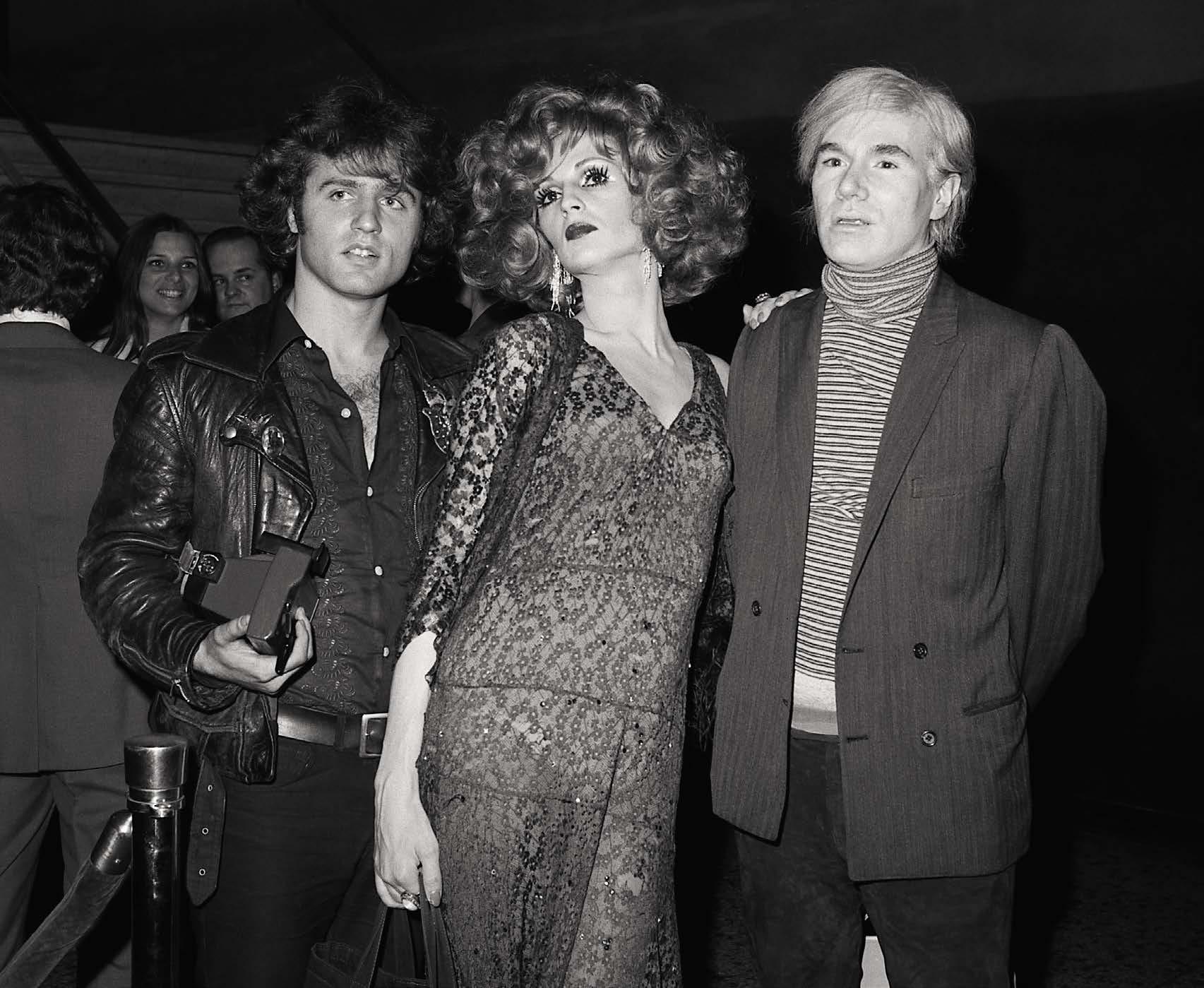
116
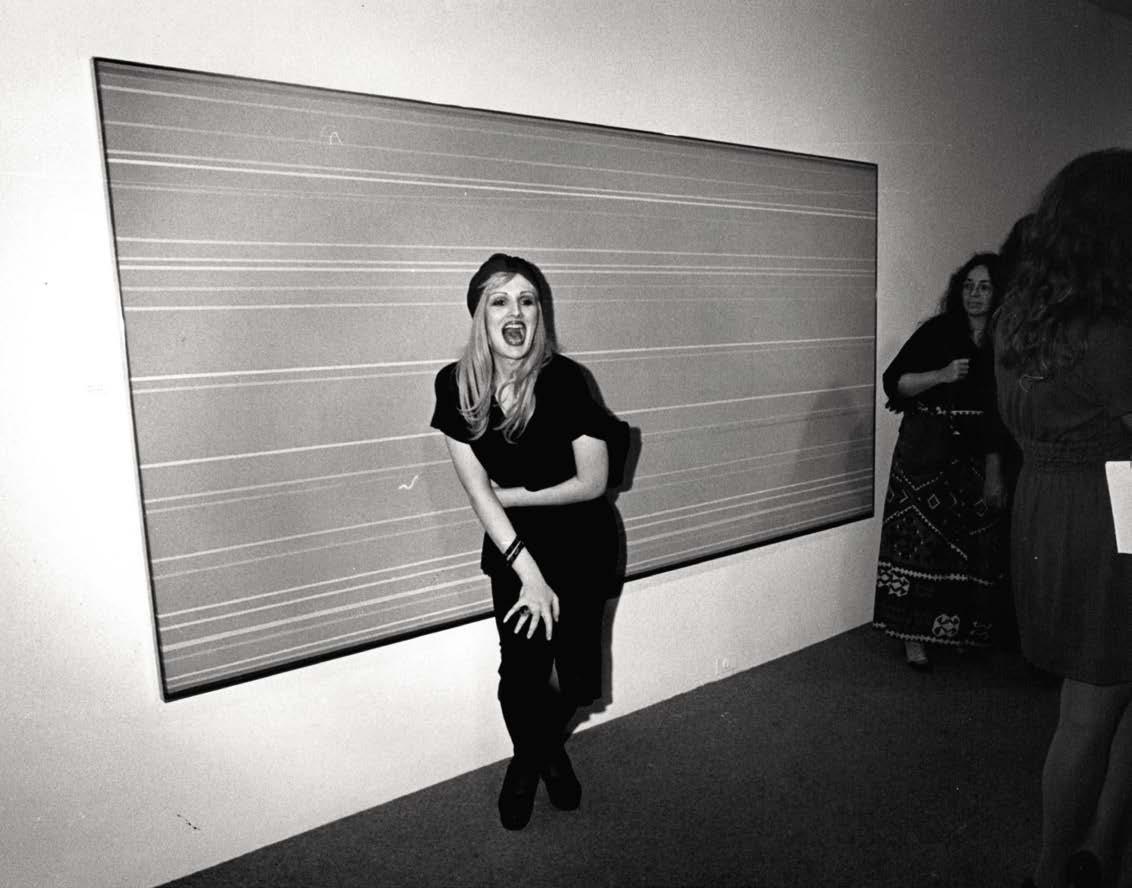
the system is what is important. If the product fails, then the system is not good. What can I do to help me live in this life?” Can you illuminate her headspace in this instance?
CC I think she’s talking about her right to identify as a woman. One of the epigraphs to my book comes from Simone de Beauvoir, and it begins, “One is not born but rather becomes a woman.”
And of course, given the time in which she lived— how could she live that life?
JZ Was Candy homophobic?
CC No, but she could be thoughtless and mean. Most of her good friends and supporters were gay men. So OK—there were times when she’d get so angry at Jeremiah she’d start calling him “faggot.” That was meant to wound. Another tirade appeared in her journal one night after she’d finished her cabaret act at Le Jardin and in her own estimation had done a poor job: “Faggots are the most superficial things on the face of the earth.” She meant her audience, and that was the worst thing she could think of to call them. In Candy’s day the term “politically correct” hadn’t yet been invented. And maybe she wouldn’t have cared if it had been. It’s inexcusable, I know. But I see her that night filled with self-loathing and rage.
Note that when Candy first began venturing into Manhattan as a teenager, she usually dressed as a male. Drag was illegal and she hadn’t yet figured out how much she could risk. So then she was often identified as a lesbian. She was fine with that. It meant she’d been perceived as a woman.
JZ The biography is studded with marquee names whom Candy either met briefly or socialized with. I was surprised to learn about her closeness with Jane Fonda and, separately, Lily Tomlin and Jane Wagner. Same goes for Lauren Hutton and Bette Midler. What did these women see in Candy that drew them to her?
CC I don’t think she knew Bette Midler very well but they were part of the same milieu—the OffOff-Broadway world, where Candy was always accepted and respected. They would have seen each other at parties. She knew the others better,
and all of them were kind to Candy. I don’t know that they were all drawn to her for the same reason, but I think she projected a combination of charisma and vulnerability. Lily Tomlin described it as “some ethereal light about her.” All of them tried to help her. Lily got Candy an audition at New York’s top cabaret, Upstairs at the Downstairs. Jane Fonda probably got her into that one scene in Klute —since I’m not sure how else she would have gotten in. Lauren Hutton was with Candy when she went into the hospital at the end, insisting that no, they could not put her into the men’s ward. And Jane Wagner did something very special for Candy. One of the more startling things I discovered in my research is that Candy lost ten of her teeth when she was eighteen years old. Paul Morrissey said he had to be careful about how he filmed her so the missing teeth didn’t show. They were all on one side. So Jane Wagner sent Candy to her own dentist—and paid for it. She finally had caps.
Candy met a few other notables who treated her like a freak. Groucho Marx, for example, chased her around a room trying to grab her penis. Despicable.
JZ Another formative if unexpected relationship was with Tennessee Williams. How did they meet and what did Williams think of her?
CC Williams’s play Small Craft Warnings was struggling at the box office and the producers decided to bring Candy in as a kind of publicity stunt. When Candy showed up on her first day in the play, she went to the women’s dressing room, and the only other woman in the play, Helena Carroll, started screaming, “Get! it! out of here!” Tennessee himself went to the men’s dressing room to ask if Candy could come in with them. No. She ended up in a prop room or broom closet by herself. There was only one actor in the cast who would even speak to her when they weren’t onstage.
Tennessee was horrified by this. He’d sit with Candy in her closet sometimes and occasionally took her out to dinner after the show. He thought
she was “marvelous to work with” and played her part extremely well.
JZ She wasn’t always Candy Darling. What were other names she went by initially?
CC Friends of Candy’s who were there as she began to transition remember her considering “Kim” and “Hope” and “Star” and “Candy,” plus other names they couldn’t remember. She actually had a Social Security Card in the name “Hope C. Slattery”—C for Candace, of course. She used that when she had some short-lived office jobs in the mid-1960s. She wasn’t “Darling” at first. She went by Candy Cane and then Candy Dahl and maybe Hope Dahl. Then her friend Taffy Titz called her “Darling” so often that it stuck.
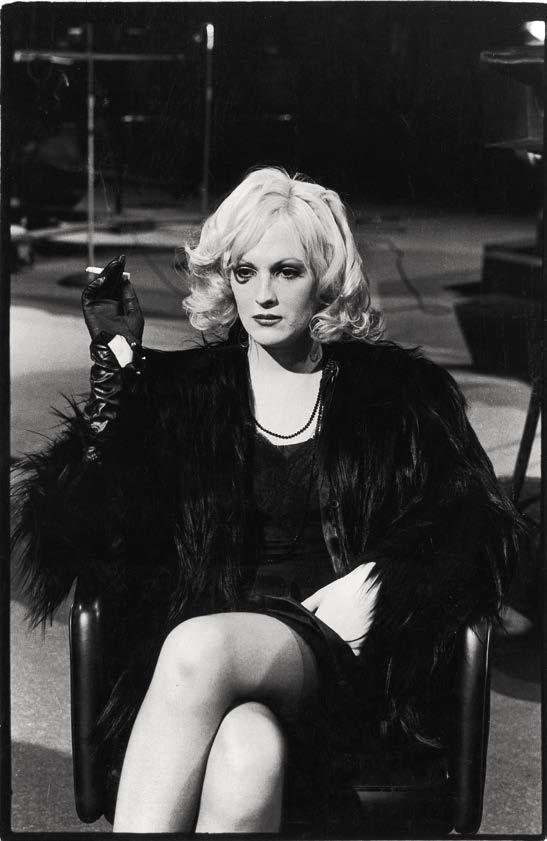
117
Opposite: Gerard Malanga, Candy Darling, and Andy Warhol at the premiere of Midnight Cowboy, New York, 1969. Photo: Bettmann/Getty Images
Left: Candy Darling, New York, date unknown. Photo: ZUMA Press, Inc./Alamy Stock Photos
Below: Candy Darling, New York, 1970. Photo: Fred W. McDarrah/MUUS Collection via Getty Images
NOTES TO SELVES,
Dieter Roelstraete, curator at the Neubauer Collegium for Culture and Society at the University of Chicago and coeditor of a recent monograph on Rick Lowe, writes on Lowe’s journey from painting to community-based projects and back again in
When a fortunate age of pure production has ended, reflection enters, and with it an element of estrangement.
—Friedrich Wilhelm Joseph von Schelling, The Philosophy of Art , 1859
We’ll stand our problems all in a row / Watch them fall like dominoes.
— Donald Byrd, “(Fallin’ Like) Dominoes,” 1975
IFor well over three decades, Rick Lowe’s name has been closely associated with the social-practice paradigm in contemporary art. The Houston-based artist helped pioneer this activist and in many ways quintessentially American offshoot of Joseph Beuys’s famed Soziale Plastik , or “social sculpture”—the most widely feted example of which continues to be his Project Row Houses (1993–2018), an arts-and-culture community project located in his adopted hometown’s historical Third Ward.
The story of Lowe’s rise to prominence as one of the primary practitioners of said paradigm has
become relatively well known by now, but it justifies summary recounting nonetheless. Born in Russell County in rural Alabama in 1961 as the eighth of twelve children, Lowe grew up on a sharecropping farm, where, somewhat improbably and incongruously, he began to develop a talent for drawing in his teens (exposure to art of any kind, let alone art education, was conspicuously absent from Lowe’s upbringing). In an interview with the Wall Street Journal published in September 2022, Lowe recalled how “my artistic side awakened just after I turned six, when I chose a cotton crop sack based on its bright orange material.” In that same interview, Lowe reminisced about how, starting in
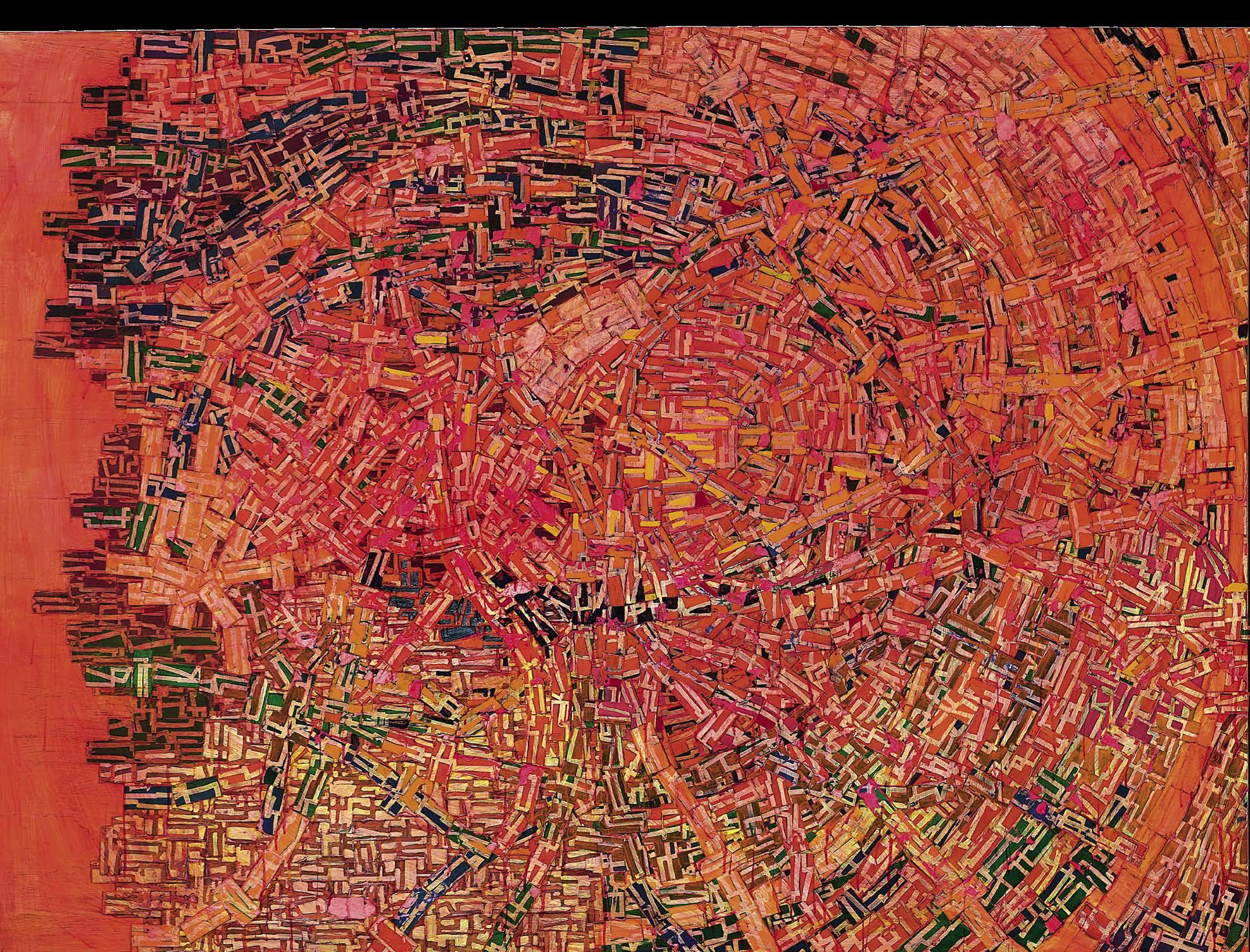
TRAINS OF THOUGHT
this essay from the publication. At the Museo di Palazzo Grimani, Venice, during this summer’s sixtieth Venice Biennale, Lowe will exhibit new paintings that develop his recent motifs to further explore the arch in architecture.
his early teens, although he “wasn’t artistic yet,” his talent was emerging: “I could draw states and copy images of presidents.”1 Mapping, in short, has been a foundational element of art’s appeal for Lowe since the very beginning—and cartography a key component in his conception of art as a mode of knowing and navigating the world. Lowe was an avid basketball player in his youth, and he has been an ardent basketball enthusiast ever since. His athleticism landed him a scholarship to Alabama State University. He then transferred to Columbus College in Georgia, where he enrolled in a drawing class and first felt fully immersed in a creative environment. Further encouragement from observant
and supportive teachers deepened Lowe’s exposure to art and art history—a crucial early artmaking class instructed him in the basics of landscape painting—and sometime in the early 1980s, the fledgling artist started making his first paintings, based on protest signs and similarly charged political imagery. (Growing up in the South between Montgomery and Tuskegee, both in Alabama, and Atlanta, Georgia, Lowe was inevitably molded, however indirectly, by the protest culture of the civil rights era. It is sobering to think, in this regard, that the infamous Tuskegee Experiment wasn’t discontinued until the early 1970s, well after the cresting of the civil rights movement, and
around the time of Lowe’s adolescence.) 2
Continuing his practice as a politically engaged painter, Lowe moved to Houston in 1985 and increasingly involved himself with activist, community-building work in the city’s historically Black Third Ward. However, a chance encounter with a young visitor to his studio—who asked the artist, upon seeing paintings dealing with a wide range of racial injustices, “If you’re so creative, why don’t you come up with actual solutions for our problems?”—fatefully altered the course of Lowe’s trajectory, compelling him to give up on painting and decisively shift his focus to art’s potential for effecting real change in the social world. (The confidence


and determination with which Lowe decided to take up his youthful visitor’s challenge is part of what makes his brand of social practice a “quintessentially American offshoot of Joseph Beuys’s Soziale Plastik ”: a stronger and more pragmatically minded belief in “art’s potential for effecting real change in the social world” than ever animated the rivaling paradigm of relational aesthetics, for instance, which may retrospectively be theorized as Europe’s ludic foil to social practice’s earnest can-do ethos.) 3
The rest, as they say, is art history—the bestknown chapters of which have become decisively entwined with the recent cultural histories of the sites in which they were (and often continue to be) rooted, as the following list of Lowe’s signature projects attests to: Project Row Houses in Houston (1993–2018); the Watts House Project in Los Angeles (1996–2001); Transforma Projects in post-Katrina New Orleans (2005); the Anyang Public Art Program in South Korea (2010); the Victoria Square Project in Athens (2016); the Greenwood Art Project in Tulsa, Oklahoma (2020); and most recently— the occasion for my own deepening acquaintance with Lowe’s work— Black Wall Street Journey in Chicago (2020–21). Place names, in short—“places and spaces”—have come to define Lowe’s founding contribution to the development of social practice as an art form rooted in community engagement and participation, in conversing, dialoguing, and relating—a living art of “pure production” made for, by, and with “others.”4
II
Almost three decades after Lowe abandoned painting in favor of a conception of art that afforded him a more direct sense of actively helping to shape the world around him—a conception of art, that is, as a species of problem solving —it is tempting to regard his return to art’s most archaic and canonical form (as well as its most individualistic and marketable) with some trepidation, even suspicion. It is not necessarily an admission of defeat, of course—Lowe was originally trained as a landscape painter, after all, so this “return” effectively signals a homecoming of sorts—but a kind of retrenchment. Why pick up the paintbrush again now? (“Now” being a time of excessive economic investment in the umpteenth of painting’s revivals.) The answer to this question is implied, in part, in the title of Lowe’s most ambitious monographic exhibition as a painter to date—Meditations on Social Sculpture , organized at Gagosian, New York, in the early fall of 2022—in the suggestion, that is, that his return to painting has allowed Lowe to (finally?) take stock of three decades’ worth of work made outside the studio and out on the streets. Lowe has chosen the private art of painting, in other words, to better “meditate” on the public art of his social sculpting.
Nowhere is it written that these two art forms should exist in a state of mutual exclusion. Painting operates here as a species of afterthought: as a way of visually thinking through the legacy of community projects from the artist’s past—as evinced, for instance, in the use of photographs documenting Project Row Houses in some of the large-scale paintings included in Meditations on Social Sculpture . An exhibition of Lowe’s works on canvas that I curated at the University of Chicago’s Neubauer Collegium in October 2022 was similarly titled Notes on the Great Migration . Lowe likes to think of his painterly practice as deeply reflexive, responsive, ruminative—an impression that was naturally enhanced, in the case of the suite of works on view
at the Neubauer Collegium, by the scroll-like paintings’ graphic, scriptural character, i.e., their physical appearance as jottings and scribbles, the secretive, coded writing of extended notes to selves.5
All that said, it is hard to resist the temptation— especially given the sheer number of paintings Lowe has produced in the past few years—to frame this “return” to what is in essence a solitary studio practice and exclusively indoors activity within the larger context of the covid -19 pandemic, and its corrosive impact on socially engaged art practices and strategies in particular. For many months it was impossible for Lowe to physically meet the people who are so integral to his larger-scale, socially complex community projects. This was nowhere felt more keenly than in the case of the Black Wall Street Journey project, much of the findings of which went on to visually inform the contents of Notes on the Great Migration .
If the art market appears in such robust health emerging from the depths of a public-health crisis that has otherwise affected the public life of the global art world so disastrously, it is in large part because the pandemic unwittingly reinforced the perfect conditions for the flourishing of the oldest, toughest, and most economically viable of studio practices—namely, painting. We surely all remember at least one painting acquaintance rhapsodizing about the forced isolation of the pandemic’s early days, expressing their gratitude for the sudden luxury of long days of uninterrupted studio time: the perfect circumstances for the flowering of the most asocial of art practices. In any case, a spectral sense of the lost sociality of the covid -19 years resonates in the central “sculptural” gambit of Notes on the Great Migration . Eight of the paintings in that exhibition were placed horizontally on glass-covered tabletops, and the tables could be moved about in such a way as to allow the assembly of a much larger meeting table—of the kind one could easily imagine being central to the process of launching a complex community project. Indeed, on the handful of occasions when actual meetings were conducted, behind closed doors, around this meeting table, a real sense of the prickly question of the possible applications of art—of art’s presumed social use value —came back to haunt the site of Lowe’s art.
Lowe’s paintings are the work of an artist compelled, because of a variety of circumstances, to look back upon a lifetime devoted to public art—but they are also the work of a self-described workaholic who refused to allow the demands of social distancing to halt his “social works” entirely. 6
III
Lowe’s newfound faith in front of the canvas—a renewed confidence in the power of imaging as well as of symbolizing—was obviously not achieved overnight. In fact, the artist’s interest in drawing and painting was first reignited in the mid-2010s, sparked, interestingly enough, by his growing preoccupation with the visual language of dominoes. Dominoes continue to be omnipresent in the artist’s work. Lowe’s first works on paper after more than two decades away from the two-dimensional realm of “mere” representation and symbolization were quick sketches of domino games whose snaking patterns had piqued the artist’s aesthetic interest. Those familiar with Lowe’s world will be aware of the importance of dominoes as a social tool within it—as the social practitioner’s primary implement and/or bonding element.
Lowe is as obsessive about playing dominoes as he is about work more generally, and playing dominoes has long been integral to the chemistry of his “social work” in particular. Allow me to quote the following fragments from Lowe’s sole published artist statement:
The paintings and drawings I make are deeply rooted in the experience of what I call “domino culture.” While dominoes are a board game like many other board games played around the world, I find that dominoes in particular generate a kind of culture in communities where they are played. Dominoes are part chess, part checkers, and part contact sport. They have the contemplative element of chess along with the rapid maneuvering of checkers, but unlike most board games, dominoes are often slammed to the table with great force, highlighting the physicality of the game. For me, the culture is informed by the sounds of the dominoes clacking on the table (in places where dominoes has generated a culture, it’s not a silent game), the boisterous bluffing to gain advantage, and most important to me, the beautiful shapes that form as the dominoes are laid out. . . . I’ve also learned that dominoes is oftentimes a kind of academy where much is taught and learned. I feel fortunate to have been a student of many great thinkers who may be locked out of traditional academic institutions. These thinkers have keen eyes, ears, and minds to what is happening in many areas of life that range from the social, political, to the economic.7
This is a reference, in part, to the informal use Lowe has made of dominoes to both build relationships—as well as, more recently, works of art—and to better understand the relationships undergirding certain communities. (Lowe often played dominoes on the street with Jesse Lott, a well-known assemblage artist and pivotal figure in Houston’s Black art scene, whose mentorship was instrumental in the founding of Project Row Houses .) 8 Lowe’s artist statement continues:
From the start of my playing in the early 1990s, I was fascinated by the shapes and patterns made throughout the game, but it wasn’t until I played with black dominoes on a white table that I could really see the distinct quality of the shapes. Eventually I started taking photos of these shapes on the tables. During this time, I was not making traditional art objects, but I was asked to make a drawing for an exhibition. For this exhibition, instead of photographing the shapes, I decided to trace the shapes after each game—a way of recording the different games as layered patterns. This led to a fascination with the abstract forms that emerged from the multilayering. I found it interesting how layering the patterns of the shapes of such a logical and ordered game could result in a complex narrative formed from the everyday activity of a game. My interest in the phenomenon ultimately led to the domino drawings that I create.
And concludes:
I did not know the reason I was drawn to tracing the domino patterns until one day I realized that the patterns were simply mapping knowledge of the time I spent with the people I played with. Because of the presence of mapping in the early domino drawings, I continued to make the work
121
as an investigation into how mapping domino games could help me better understand the mapping related to my interest in urban development and other social and political realms. 9
I’ve already mentioned the tabletops that served as an idiosyncratic mode of display for Lowe’s paintings in the context of Notes on the Great Migration . Those tables, each measuring three feet by three feet, are perfectly suited for domino playing, and close scrutiny of the paintings’ surfaces reveals the contours of dozens of snaking domino patterns. In fact, one group of four paintings in this constellation is titled Notes on the Great Migration: South , while the other is called Notes on the Great Migration: North , and the traces of domino lines fanning out from south to north are obviously meant to echo the dynamic of northward movement—from rural Alabama to Chicago, say. The Notes on the Great Migration: North panel contains three broad swaths of blue that clearly reference the Great Lakes, whereas the hues of green dominating the Notes on the Great Migration: South panel presumably allude to the South’s agricultural economy. (The snaking domino lines are train tracks as well as “trains of thought.”) Much like so many of Lowe’s recent paintings, in other words, these are really maps that resound with the artist’s thirtyyear experience navigating urban environments and large-scale landscapes of all kinds, invoking associations with anything ranging from the everyday imagery of the fraying fabric of our inner cities to the intricately woven webs of diasporic and migratory patterns. The fact that these paintings use the cut-up book covers of histories of the Great Migration as their primary building blocks—Isabel Wilkerson’s much-lauded The Warmth of Other
Opening spread:
Rick Lowe, Diplopia , 2023, acrylic and paper collage on canvas, 72 × 192 inches (182.9 × 487.7 cm)
Previous spread:
Rick Lowe, Untitled , 2023 (detail), acrylic and paper collage on canvas, 72 × 60 inches (182.9 × 152.4 cm)
This page:
Rick Lowe, Untitled , 2023, acrylic and paper collage on canvas, 48 × 48 inches (121.9 × 121.9 cm)
Suns, from 2010, is only the best-known title in this library—alongside Lowe’s signature domino stones helps to dramatize their discursive charge as “notes” of some sort, as the literal marginalia scribbled across these sprawling histories’ pages, or as marks on a map of one’s own making. 10
In addition to mapping and writing, finally, another frame of reference for our reading of Lowe’s paintings can be found in the aesthetic of data visualization—in the kinds of graphs and statistics used to illuminate the types of economic histories that are so close to Lowe’s heart. Taken together, these paintings resemble a suite of blindingly colorful concrete poems dedicated to the vagaries of city life—a map of both city and country as delirious palimpsests made up of past, present, and future tenses.
IV
Speaking of the future, I want to conclude these reflections on Lowe’s return to painting on a seemingly minor linguistic note, one having to do with the artist’s preference for the language of “projecting” (Project Row Houses , the Watts House Project , Transforma Projects , the Victoria Square Project , the Greenwood Art Project , etc.). Indeed, encountering the notion of the project time and again while navigating the wilds of Lowe’s social-practice portfolio—none of his paintings, for obvious reasons, are called “projects”—I was reminded of an essay published in 2002 by the Russian art theorist and philosopher Boris Groys: “The Loneliness of the Project,” one of the defining documents of millennial art culture. Starting off with the dramatic claim that “the formulation of diverse projects has become the major preoccupation of contemporary man” and
that “these days, whatever endeavor one sets out to pursue in the economic, political or cultural field, one first has to formulate a fitting project in order to apply for official approval or funding of the project from one or several authorities,” Groys maintains that “above all else, each project strives to acquire a socially sanctioned loneliness.”11 That is to say, the formulation of a project requires a certain degree of conscious long-term isolation that is nowhere more generously accommodated, it often seems, than in the contemporary art world. This is partly why Groys believes that “in the past two decades [starting in the 1980s, in other words] the art project—in lieu of the work of art—has without question moved to center stage in the art world’s attention.” (Lowe’s social practice belongs to a first generation of art-world developments that corroborates Groys’s hunch.)
The exemplary solitude of the artist is a function of the centrality of “project management” to contemporary art practice—and the artist’s career (“trajectory”) has become the supreme project that demands 24/7 management. Groys continues, “Each project is above all the declaration of another, new future that is supposed to come about once the project has been executed. . . . If one has a project— or more precisely, is living in a project—one always is already in the future .”12 I reread Groys’s visionary text with all the ambiguities and complexities of Lowe’s return to the studio in mind. That is the subject of this essay: the image of the prototypical social practice pioneer, alone in front of the canvas, trying to make sense of pasts and futures alike—all the while seeking solace in the solitude of social work as seen from the painter’s remove. I think

122
1. Rick Lowe, quoted in Marc Myers, “Rick Lowe Went from the Fields of Alabama to a Solo Exhibit,” Wall Street Journal , September 6, 2022.
2. Tuskegee was the closest Alabaman city to Lowe’s childhood home. The experiment that is so fatefully bound up with its name was officially known as the “Tuskegee Study of Untreated Syphilis in the Negro Male,” a scientific investigation led by the United States Public Health Service and the Centers for Disease Control and Prevention from 1932 until 1972. The main purpose was to observe the effects of syphilis when left untreated. The scandal of the experiment resided in the fact that syphilis had effectively become treatable as early as the mid-1940s, and that none of the participants in the study (which led to the avoidable deaths of more than 100 individuals) were ever informed of the nature of the experiment.
3. The trailblazing German Conceptualist Joseph Beuys (1921–1986) first developed the now-canonical notion of “social sculpture” in the late 1960s, formulating the well-known Beuysian motto “ jeder Mensch ist ein Künstler ” (Everybody is an artist) in 1967 as its founding creed. The term “relational aesthetics” first appeared in the context of the exhibition Traffic , curated by Nicolas Bourriaud at the CAPC museum of contemporary art in Bordeaux, France, in 1996, and was further developed in Bourriaud’s book of that name, published in 1998. (The vast majority of works invoked in Esthétique relationelle were made in the first half of the 1990s, mostly by European artists.) However schematic the distinction, much of the contrast in ideological emphasis between the two Beuysian legacies resides in the opposition between “social” practice and “relational” aesthetics —a dialectic not without geopolitical overtones in the juxtaposing of Anglo-Saxon and “continental” traditions, respectively, in the adjoining realms of social thought and theory. It is quite telling that Lowe’s work is hardly ever discussed in the latter terms. (To further dramatize the aforementioned transatlantic dialectic, one could make the case that the Ronald Reagan–era dismantling of the welfare state hastened socially minded American artists’ embrace of social practice, while Danish, French, and German artists continued to dabble in aesthetic debates in the false sense of security guaranteed by the seeming inviolability of the European socialdemocratic contract.) Indeed, one could argue that the founding moment in Lowe’s turn toward social practice—meeting a teenager whose simple question, in Lowe’s own phrasing, just “pulled the rug out from under my whole career up until that time”—required a wholesale repudiation of the aesthetic . And it is precisely this aesthetic impulse, as we shall see, that has made a dramatic return to the forefront of Lowe’s practice of late—as anything repressed is sooner or later wont to do, perhaps, no matter how counterintuitive its social logic.
4. Places and Spaces is the title of an album released by the jazz trumpeter Donald Byrd in 1975 that features the song “(Fallin’
Rick Lowe, Untitled , 2023, acrylic and paper collage on paper, 30 × 30 inches (76.2 × 76.2 cm)
Artwork © Rick Lowe Studio
Photos: Thomas DuBrock
Like) Dominoes,” which I have quoted in the second of this essay’s epigraphs.
5. It was illuminating to learn, upon visiting the artist in his Houston studio in the spring of 2022, that one of the books that made the deepest impression upon him as a young man—a book, moreover, that he continues to reread in older age—is Boethius’s Consolation of Philosophy, the sixth-century classic of melancholy thought. An undeniable charge of melancholy thought permeates Lowe’s use of painting as a tool for reflecting upon the inheritance of the artist’s activist past. It is this “blues”—a mood powered by gnawing doubts about the powerlessness of art as much as by its more widely touted opposite—that informs my use of the Schelling quote at the beginning of this essay, which alludes to a long history of presumed tension between making art and overthinking the making of art. The classic Hegelian hypothesis about the “end of art” states, pace Michael Inwood, that “thought[s] about art, and philosophy of art, arise only when art is in decline,” and that “reflective thought is inimical to artistic creation and impairs the art into which it intrudes.” Michael Inwood, introduction, in Georg Wilhelm Friedrich Hegel, Introductory Lectures on Aesthetics (London: Penguin, 1993). Hegel and Schelling could not have anticipated that a whole new chapter in art history would be written based on the understanding that artistic creation can be a form of reflexive thought (even if it remains limited to reflecting upon artistic creation alone). This, in my view, is what Lowe’s paintings propose to “do,” and their reflexive labor—looking back, somewhat wistfully, upon some of social practice’s finest achievements—is what constitutes the consolation of art for Lowe and artists like him.
6. Social Works is the title of a group exhibition curated by Antwaun Sargent at Gagosian in the summer of 2021, which led to Lowe joining Gagosian’s artist roster shortly afterward. Considering “the relationship between space—personal, public, institutional, and psychic—and Black social practice,” and timed to coincide with “today’s cultural moment, in which numerous social factors have converged to produce a heightened urgency for Black artists to utilize space as a community-building tool and a means of empowerment,” the exhibition also featured the work of David Adjaye, Theaster Gates, Titus Kaphar, Carrie Mae Weems, and others. The timeliness of naming an exhibition Social Works was not lost on those aware of the tremendous loss inflicted on the art world by the demands of social distancing and self-isolating amid the covid -19 pandemic, and there was some poetic justice to be salvaged from the fact that when Lowe’s solo exhibition opened at Gagosian, New York, in September 2022, it turned out to be a densely packed, major “social” event indeed.
7. Rick Lowe, “Artist Statement,” in Rick Lowe: Paintings & Drawings 2017–2020, exh. cat. (Houston: Art League Houston, 2020), 5.
8. Lowe generously took me to meet Jesse Lott in his studio during
my visit to Houston in March 2022. It is interesting to view Lott’s protean, sprawling brand of assemblage art through the same “relational” prism I am using here to theorize Lowe’s use of dominoes: as an art, in essence, of connecting and relating. In an interview published by Artnet on the occasion of Lowe’s exhibition at Gagosian, the artist reminisced about his early days exploring “professional” options living in the South. Having left Alabama and Georgia behind, he briefly lived in Biloxi, Mississippi, and “of course had the idea that I should, like every artist, go to New York. I thought about it and I’m such a country guy, I can’t handle cold weather. I thought about LA but then I said, maybe Dallas”—which later became Houston. “It was such a weird place, it was desolate. It had a rawness to it that I could really connect to. It felt very Southern in a sense, and almost rural in some of its urban pockets.” Needless to say, Houston’s subtropical climate is conducive to a very different variety of socializing than that of New York (or Chicago, for that matter), where the conditions for year-round open-air domino games do not obtain in quite the same fashion. Lowe, in Folasade Ologundudu, “‘That Just Shattered Things for Me’: Rick Lowe on the Moment He Realized His Art Had to Escape the Studio to Have Real-World Impact,” Artnet , September 19, 2022. Available online at https://news.artnet.com/art-world/rick-loweinterview-social-practice-2177583 (accessed February 29, 2024).
9. Lowe, “Artist Statement.”
10. Other titles visible underneath the patchwork of Lowe’s painterly scrawls and scribbles are Blair Imani’s Making Our Way Home: The Great Migration and the Black American Dream (2020); Jacqueline Woodson’s This Is the Rope: A Story from the Great Migration (2013); James N. Gregory’s The Southern Diaspora: How the Great Migrations of Black and White Southerners Transformed America (2005); Alferdteen Harrison’s Black Exodus: The Great Migration from the American South (1991); and James Grossman’s aptly titled Land of Hope: Chicago, Black Southerners, and the Great Migration (1991). As Lowe’s first solo exhibition in Chicago, Notes on the Great Migration is inspired in part by the midwestern metropolis’s hallowed history as an emancipatory mecca for generations of African Americans from the Deep South. Insofar as the escape from the South was driven by the promise (or mirage) of economic opportunity, one could think of this odyssey as a “Black Wall Street Journey”: a quest for Black America’s own spin on the gospel of wealth. In a sense, Lowe’s “notes” on the Great Migration double as musings and meditations on the distance traveled on this particular “Black Wall Street Journey” thus far.
11. Boris Groys, “The Loneliness of the Project,” New York Magazine of Contemporary Art and Theory 1, no. 1 (2002).
12. Ibid.
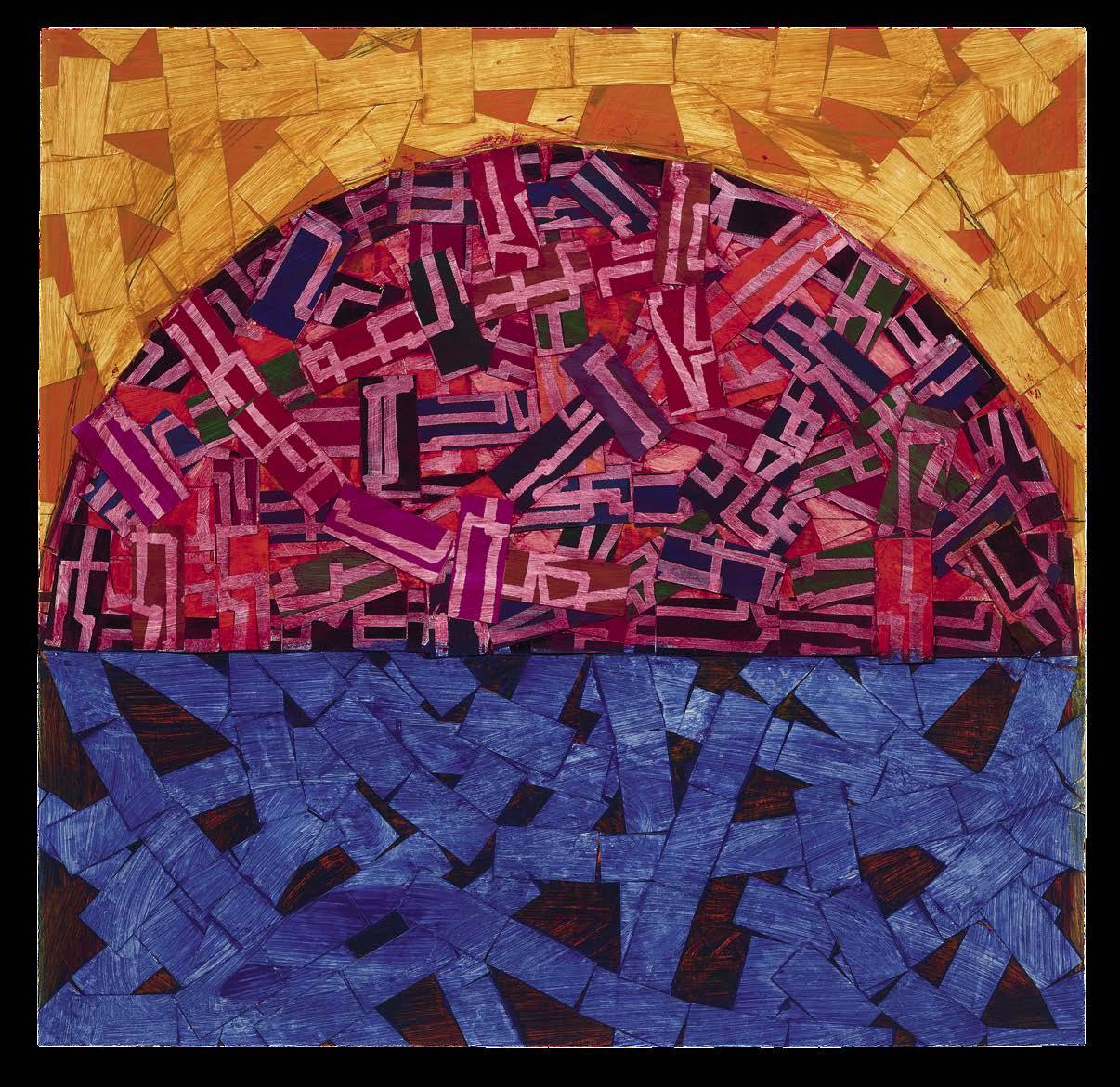
123

MUSEUM OF GESTURES
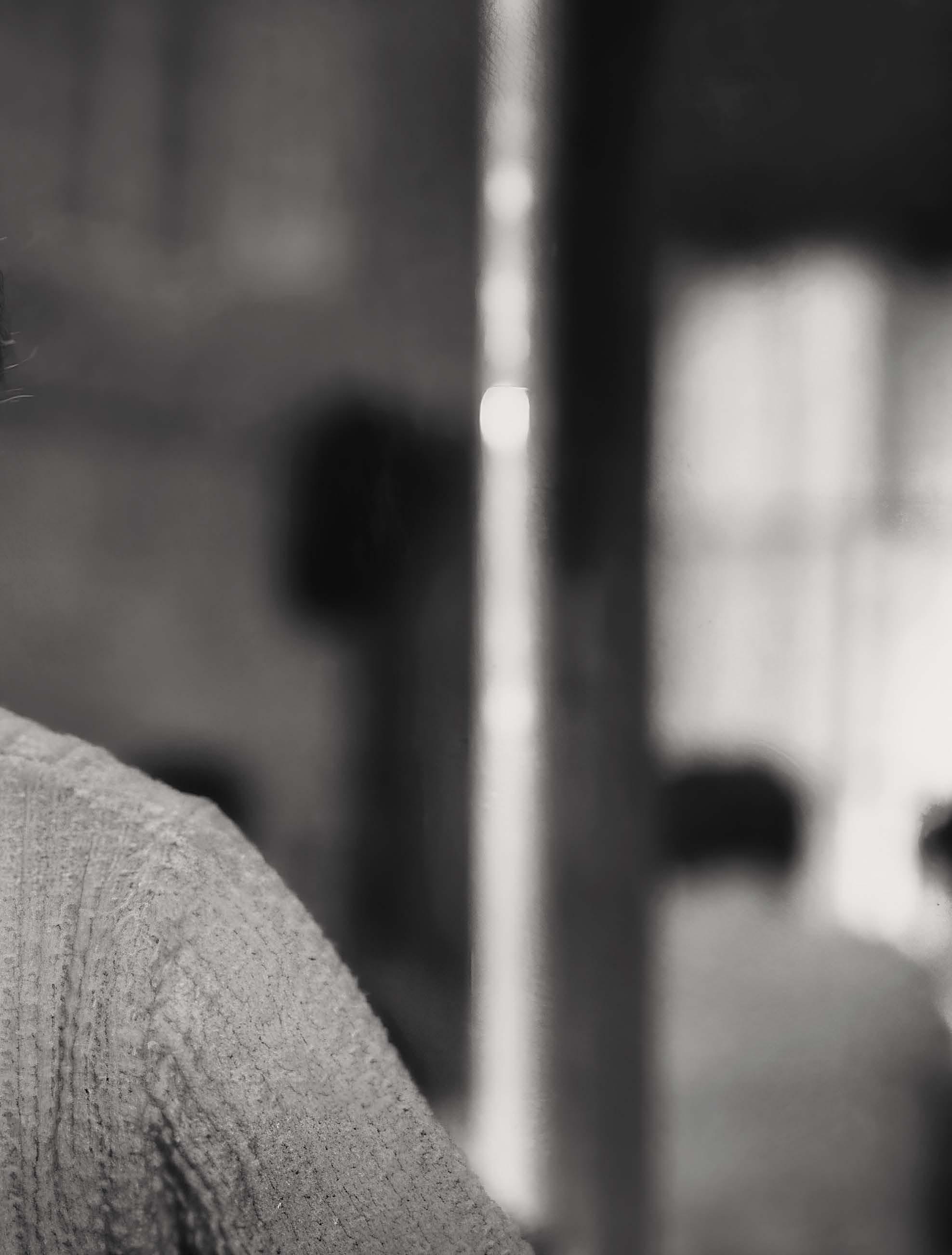
Moeko Fujii joins Carlos Valladares in a conversation to celebrate a new English translation of Shiguéhiko Hasumi’s Directed by Yasujiro Ozu.
Shiguéhiko Hasumi’s Directed by Yasujiro Ozu , published in Japan in 1983 and recently translated into English (University of California Press) for the first time, is recognized as a crucial part of the literature on the great director. Below, Carlos Valladares speaks by Zoom about the book with the critic and essayist Moeko Fujii, a longtime reader of both Hasumi and Ozu.
Although Shiguéhiko Hasumi is among the world’s great critics and philosophers of cinema, his writings are strangely hard to come by in the Anglosphere. This makes the University of California Press publication of his Directed by Yasujiro Ozu , translated by Ryan Cook and deftly contextualized in an introduction by Aaron Gerow, a publishing event of immense proportions. To English-speaking audiences, it introduces Hasumi himself: born in 1936 in Roppongi, Tokyo; the recipient of a PhD from the Sorbonne; a translator into Japanese of the French philosophers Roland Barthes, Gilles Deleuze, and Michel Foucault; one-time president of the University of Tokyo; a novelist awarded the Mishima Yukio Prize at the age of eighty; and a renowned writer on cinema and literature, the author of over thirty books over the course of six decades.
American readers may have happened sporadically on translations of individual essays of Hasumi’s, but his monograph on Yasujiro Ozu is his first book to appear in English. It is sure to change standard Anglophone interpretations of this central figure in the history of cinema. Ozu is often described as the director of “quiet,” “quintessentially Japanese” family melodramas, including consecrated masterpieces such as Tokyo Story (1953), Late Spring (1949), Good Morning (1959), and An Autumn Afternoon (1962). To read Hasumi, paradoxically, is to realize that surface interpretations of Ozu haven’t properly investigated the surface of the films themselves. Hasumi invites us to look deeper at Ozu: How is anger performed? Why does an actor move in this way and not that? When does it rain?
Hasumi’s Ozu book has drawn praise from the likes of such directors as Victor Erice (“intelligently challenges many of the conventional interpretations of Ozu’s work with his unusual critical insight”), 1 Paul Schrader (“a definitive classic by a master in the field”), 2 Pedro Costa (“he writes from a filmmaker’s point of view . . . he works just like a filmmaker”), 3 and
Ryusuke Hamaguchi, who has said that Directed by Yasujiro Ozu is “the most important book in my life” and that it “thoroughly changed my way of looking at films and formed my filmmaking practice.”4
—Carlos Valladares
CARLOS VALLADARES As a result of my upbringing, there was something in Ozu’s films that appealed to me far more emotionally than the films of those directors with whom Western critics traditionally link him, Akira Kurosawa and Kenji Mizoguchi. Ozu always seems interested in modern, “everyday” situations, ones that I recognized among the women around me growing up, and there’s something so intense in his everyday, which moved me just as much as—if not more than—a battle scene in Kurosawa’s Seven Samurai [1954], say, or the single-take assault in Mizoguchi’s Ugetsu [1952]. Ozu’s films are just as charged, but they approach emotion, drama, incident, action, gesture, and being in the world by other means. And that’s what Hasumi, as a writer, understands in the world of Ozu, as much as he’s always, to me, constantly doubting anything he himself is saying or laying down [laughter ], which is the constant struggle, but also the ideal, of writing. I wondered when you discovered Hasumi for yourself and what that experience was like.
MOEKO FUJII During college I read [Paul] Schrader, I read [Donald] Richie, I read [David] Bordwell, I read [Noël] Burch. There was always something that felt off or limiting about their totalizing theories of Ozu. But then I happened on Hasumi’s book in the library. Near the end of his chapter “Radiating” there’s a sentence that says, “Japan also never corresponds with things Japanese.” As someone who grew up in both the United States and Japan, that sentence struck a chord so deeply within me. Belonging to two countries makes you very aware of the fictiveness of any claim of Americanness or Japaneseness. But whether it was Schrader or Richie, they seemed to want to link Ozu to a flat, convenient idea of Japan. And they want to make that link as stable as possible. Hasumi doesn’t do that—his Ozu felt closest to my Ozu. So I went to the stacks and read everything he’d written, his lectures, his seminars, his books on [Mikio] Naruse, [Gustave] Flaubert, [Michel] Foucault.
But another reason why I think I responded so strongly to Hasumi is that film criticism is incredibly inattentive to bodies in motion.


Previous spread: Still from Tokyo Twilight (1957), directed by Yasujiro Ozu. Photo: courtesy Everett Collection
Left: Still from An Autumn Afternoon (1961), directed by Yasujiro Ozu. Photo: courtesy Everett Collection
Above: Still from Floating Weeds (1959), directed by Yasujiro Ozu.
12/Alamy
126
Photo: Photo
Stock Photo
Following spread, left: Publicity still, Dragnet Girl (1933), directed by Yasujiro Ozu. Photo: courtesy Janus Films/The Criterion Collection
Following spread, right: Still from Tokyo Story (1953), directed by Yasujiro Ozu. Photo: courtesy Janus Films/ The Criterion Collection
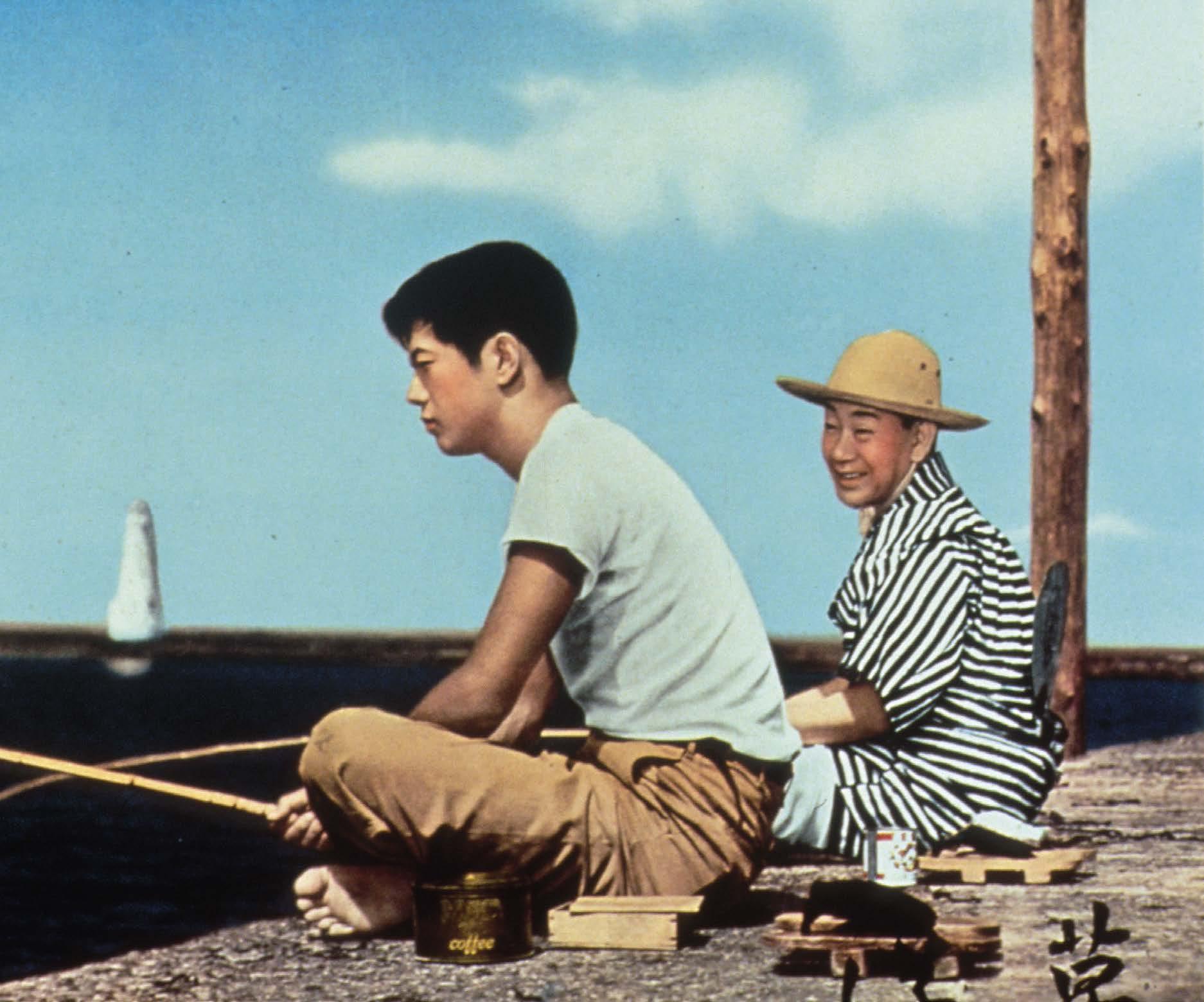
CV So inattentive. I agree.
MF If a film critic writes about an actress, oftentimes the move is to evaluate their acting, right? But you can do that without being attentive to their bodies, how their gestures accumulate meaning throughout a film. If Hasumi is someone that every critic and film lover should read, it’s for his insights on how a body moves and its implications for a director’s work. Cinema is said to be sculpting in time, and if you don’t consider how the body sculpts in time too, you’re missing this crucial part of cinema. Hasumi, like Vilém Flusser, is just in a league of his own in developing a philosophy of the body in motion. There are these pivotal moments in film where dancing or gesture is the key to understanding how the director operates. And that’s how Directed by Yasujiro Ozu is structured, too, via gerunds as chapter headings—“Changing Clothes,” “Laughing,” “Eating,” “Holding Still.” Reading Hasumi is like walking through a museum of gestures.
CV Yeah. And Hasumi gets away from all these troublesome, totalizing, boring presumptions of identity or national stability: “This is so Japanese,” “This is so Italian,” “This is so Mexican.” Such
clichés have little bearing on the work in front of you. Identity is so porous and unstable. And there are moments in cinema when signs and gestures form their own kind of language beyond language, beyond saying “This is Japanese,” or even “This is cinematic.”
I remember my first encounter with Hasumi beyond this book; it was in a piece by the film critic Jonathan Rosenbaum on Jacques Demy, whom I love.5 And Demy and Ozu are quite linked, as Rosenbaum argues and I’m slowly realizing: in both there’s this emphasis on certain gestures, certain “empty” words and turns of phrase that get reanimated depending on the situation. “Bonjour,” when it’s sung in Demy’s Les Parapluies de Cherbourg [1964], has a different affect than when it’s simply spoken. Same with Ozu—that couple at the train station at the end of Good Morning who refuse to explicitly acknowledge their mutual infatuation with each other, resorting instead to saying “good morning” and “sunny day, isn’t it?”
What Rosenbaum brought up in his piece was a point Hasumi makes in his essay “Sunny Skies”— how the sky in Ozu’s films is less “Japanese,” in the
way Schrader and Richie would have it, and more “Southern Californian.”6 It’s always weirdly sunny in his movies, or else constantly hot. And that struck me, because, a) that’s such a brilliant connection, showing how much less in thrall Ozu is to a Western projection of Japan as all haikus and mono no aware and more in debt to Hollywood, Ernst Lubitsch, John Ford. And Hasumi’s vision of LA got me thinking, as a teen, of my own relationship to LA. This may sound perverse, but I don’t associate LA with sunny skies at all. I see rain more vividly in LA, because it’s such a special weather pattern when it cuts through all that, to me, static baby blue. That scene, for instance, in John Cassavetes’s A Woman under the Influence [1974] where it’s raining and gray and Gena Rowlands returns home from the LA asylum—that’s LA to me.
Hasumi isn’t wrong when he sees that sunny skies in Ozu films have a relationship to Southern California. But the lesson I took, even before reading him directly, was that things are so unstable, and that what we must develop is the art and act of looking and noticing, which are such intensely political acts. To look and to perceive deeply requires an
127

attention that many who write about film, I find, simply ignore. They’re thinking of people they already know—writers, philosophers—and they’re thinking of other films, and they’re trying to put these phantom figures around the film in dialogue, instead of focusing on the details of the film in front of them.
MF I was recently at a screening in Princeton, of [Apichatpong] Weerasethakul’s Tropical Malady [2004]. After the screening, the graduate student who had arranged the event said, Weerasethakul is a queer filmmaker and he’s working against the normative, traditional way of filmmaking that directors like Ozu exemplified [laughs ]. And you can understand why someone would try to make that argument, right? Especially given some of Ozu’s subjects. But what Hasumi’s book and this translation of it allows you to do is be more ambitious and more careful in thinking about Ozu, to consider whether you’re stabilizing Ozu into something he may not be. Why do both Western and Japanese critics need to think of Ozu as a director with an unchanging style? Why do people say his camera doesn’t move, when one viewing of his silent films proves this untrue? What really is so normative about Ozu, and what do we need to erase from his films to think of him that way? To read Hasumi is to train yourself to frustrate and be frustrated with an idea of a stable style.
I want to talk about what we think the Hasumiesque is.
CV Having now read a full-length Hasumi book, his way of looking at cinema strikes me so much in its familiar freshness. I’m not used to looking at film in this way; I’ve been almost trained away from it. Our society, the people around us, are always distancing us from looking at the images—and having us ignore not just the images, but more crucially the rapport between the images.
Hasumi rails against people because the things they see in Ozu—the calmness, the tatami shots, the gentility, the imagined Japan of it all, the mu of it all— are elements of what he calls “the Ozu-esque” and have nothing to do with any given Ozu film itself. Hasumi is against a stiff totalization, which generalizes a director or a writer based on how you predict they’re going to act; they thus coagulate into a frozen, recognizable style. But Hasumi refuses coagulation. He doesn’t ossify Ozu by associating him with all the obvious stylistic traits—Ozu is slow, he always does
tatami-mat shots, he’s interested in mother/daughter intergenerational relationships, he’s a conservative filmmaker—because he looks at the entirety of the Ozu corpus and reminds us, Yeah, but what about Dragnet Girl [1933]? Where none of those signifiers are at all present. And yet Dragnet Girl has just as much to tell us about Ozu as Tokyo Story, his most famous film, and to not think about Dragnet Girl and think only about the Ozu of one part of his work is to talk, reductively, of the “Ozu-esque.” Hasumi points to how much this inhibits us, and I think the path he opens up for me is precisely the path of freedom for an artist, or an artwork, to be something entirely different in the next frame or the next shot.
MF If you were to ask me what the “Hasumi-esque” is, I would say it’s exactly what you said, which is, he starts off with a declarative statement. Such as, “Ozu’s sky is always clear.”
CV “John Ford is about throwing.”
MF Always about throwing. Then he marshals a full run of evidence to convince you that this is true. Then he tells us why that matters. Why is Ozu’s sky always clear? Because by saying “Nice weather,” or “Nice sky,” Ozu’s characters reassure themselves they’re in the worlds of Ozu—Ozu’s cinematic universe, if you will. But then he pushes back against his earlier declarative statement: “Well, this is simply not true in Floating Weeds [1959], where there’s a rainstorm.” I think the crucial move in Hasumi’s essays is always this part where he refuses to dismiss this puzzle piece that doesn’t fit as an exception or a failure. For him, it’s always those moments that tell us how to attend to the works of Ozu—or of Pedro Costa, or Frederick Wiseman, or Jean Renoir, or Chantal Akerman. He consistently comes back to this idea: “It’s not what can be seen, but how we see it.” What’s so beautiful in Hasumi’s writing is that for him, these exceptions—these moments that confound us, that terrorize us—are also moments that inexplicably move us. Because we are moved, as Hasumi would say, we know that these directors were bringing us to the limits of cinema.
Identifying the Hasumi-esque, I think, is also about identifying who is being “moved” in his criticism. He uses that word a lot.
CV The “we.”
MF This “we,” yes.
CV Well, it’s so interesting—there are so many
“we’s” in film criticism that I’m allergic to, like Pauline Kael’s “we.”
MF The Pauline Kael “we.” The infamously hated-by–Renata Adler “we” [laughter ].
CV Renata Adler basically says, in her takedown of Kael,7 and I’m paraphrasing: “Who is part of your club, Pauline? I’m not your we. We are not turned on by Robert Altman, by Brian De Palma, because I , Renata Adler, am not.” But Hasumi’s “we” feels more generative. Ryan Cook, in a translator’s note, points to the fact that Hasumi’s writing works through Roland Barthes and Gustave Flaubert, and that his use of “we” recalls the beginning of Madame Bovary [1857], a strange and unsettling first-person-plural narration of people looking at Charles Bovary. Then, after ten pages, it switches to a more “normal” third-person narration. But that “we” still lingers for the rest of the novel: it makes you feel there’s more to this story than just its straightforward narration, a whole unseen community of eyes is also narrating and translating the events. And Hasumi’s “we” doesn’t feel exclusionary. His “we” says: “I’m looking at these films through the particular lens of an ‘I,’ but around me there’s also a host of other subjectivities, whom I will never fully know, and who also inevitably shape what

128
I’m seeing.” In his “we” there’s an unseen group of lookers and feelers, and we’re all thinking it through.
MF In Japanese, a sentence doesn’t require a subject, so you don’t actually have a stable “we” in Hasumi’s work. Sometimes he uses “wareware ” but often he omits it. But I think it’s fair to ask who Hasumi claims is being “moved” by a frame in, say, Early Summer [1951]. And I take Aaron Gerow’s point that this is a particular and privileged subject. Gerow asks, “Who is this person who can detect the play of themes, having seen all of Ozu’s films?” For me, when I was reading Hasumi as a twenty-one-year-old, I was imagining a version of myself who could do that. I felt as though Hasumi were addressing some future version of myself, and perhaps of him self—a future reader who could be manifested into being. His “we” was expectant but capacious enough to include her, too, rather than being an exclusionary practice.
CV Oh that’s beautiful, that’s brilliant.
MF One thing I miss in this translation is Hasumi’s use of dots to emphasize or defamiliarize certain words—that’s everywhere in the original but Cook translates it into quotation marks. Each time those dots appeared, you could hear the excited tapping of chalk over a word on a chalkboard, and hear a
mind so alive to how language can change. But what I wanted to praise about this translation is that it presents Hasumi as an eminent scholar and critic, certainly, but also someone you could think against, be in conversation with. Cook might examine Hasumi’s statements about Bordwell, for example, and comment in a footnote, “This might not be entirely fair to Bordwell.” The translation makes you think about the text as living, not as the definitive Japanese clapback against Western critics. Hasumi is so eccentric in his writing, so deft and personal, and that really comes across in this translation. The last thing he would want, I think, is to be stultified into a fossil, some national treasure full of wisdom, which is what the West likes to do to aged Asian gentlemen. And which, he points out, has often been done to Ozu. CV Right. There’s also the deep problem of judging Ozu simply by the billboard-advertisement Ozu of Late Spring or Tokyo Story. There’s also Days of Youth [1929], there’s also his diaries. There are so many other things that are him that we in the United States are not yet privy to because they simply haven’t been available, or focused on, or translated. But A Hen in the Wind [1948] and Tokyo Twilight [1957] serve as anchors of Ozu’s oeuvre. And the same
thing for Hasumi’s writings: now I want to read all these other texts that he’s writing about, on Naruse for instance, and, on a parallel track, to watch more Naruse films. The work of opening up the world never ends.
A longer, complete version of this conversation is available online at gagosian.com/quarterly.
1.
Eng. trans. Ryan Cook (Oakland: University of California Press, 2024).
2. Paul Schrader, jacket blurb, ibid.
3. Pedro Costa, “Three Hours with Professor Hasumi on a Train, in Japan,” Lola no. 7 (November 2016). Available online at www. lolajournal.com/7/hasumi_costa.html (accessed March 24, 2024).
4. Ryusuke Hamaguchi, jacket blurb for Hasumi, Directed by Yasujiro Ozu
5. Jonathan Rosenbaum, “2 or 3 Things I Know about Demy,” 2011. Available online at https://jonathanrosenbaum.net/2023/06/2-or-3things-i-know-about-demy/ (accessed March 26, 2024).
6. Rosenbaum writes, “While Ozu, for instance, is commonly regarded as a ‘realistic’ chronicler of everyday life in Japan, the critic Shigehiko Hasumi has adroitly demonstrated how even the weather in most Ozu films, all of them set in Japan, is the sunny weather of southern California—as perceived by Ozu through his career-long absorption in and fascination with Hollywood films—rather than the rainier weather of Japan.” Rosenbaum cites Hasumi on the same point in a separate essay, “Is Ozu Slow,” 1998, also available on his website, at https://jonathanrosenbaum.net/2022/02/30607/ (accessed March 26, 2024).
7. Renata Adler, “The Perils of Pauline,” The New York Review of Books , August 14, 1980.
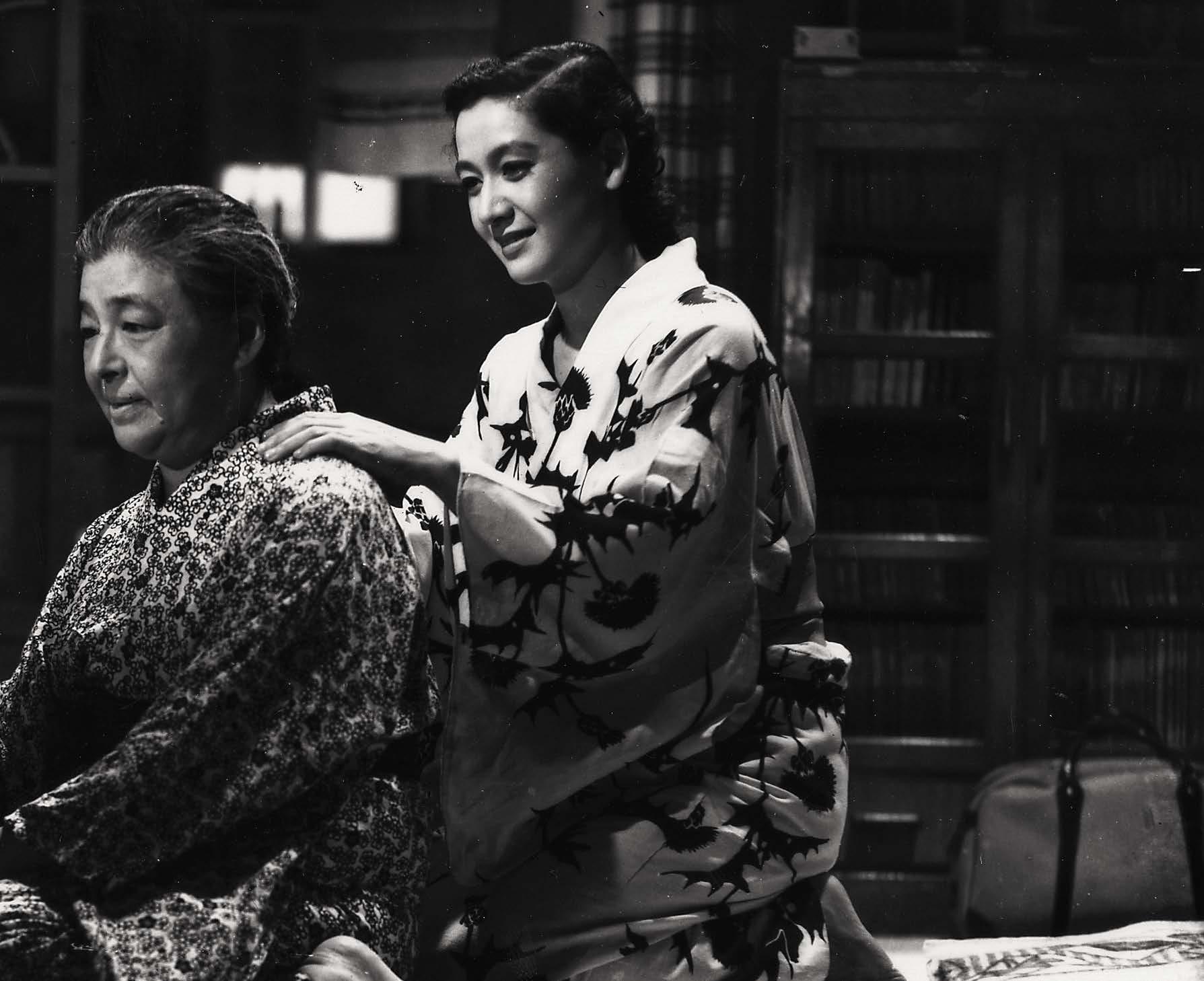
129
Victor Erice, jacket blurb for Shiguéhiko Hasumi, Directed by Yasujiro Ozu , 1983,
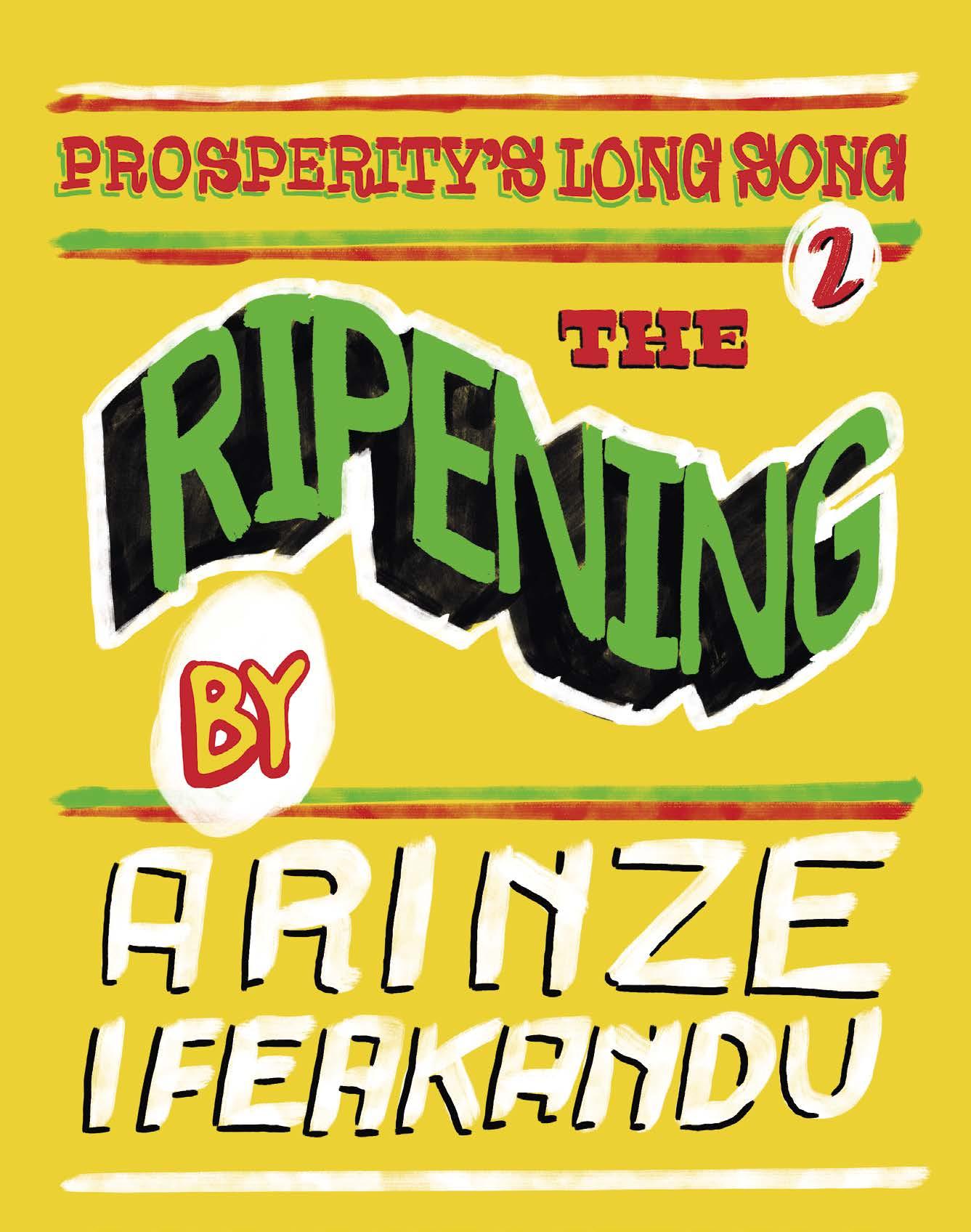
When our breaktime was cut short by the bell for an impromptu assembly, we gathered in front of Block B, whispering speculations, our voices fizzing into a deafening buzz. Assemblies like this were quite common—the seniors and house masters never tired of barking threats and chores and reminders at us—but there was something uncommon about the air that day. It was not an expectant uncommon, as in those times when women’s groups from nearby parishes visited, outdoing one another with the most filling, most delicious coolers of jollof rice and fried meat, singing Uka Nne songs with us and dancing in one spot, retying the loose ends of their blue Mothers’ Union wrappers like people performing an absent-minded ritual. It was rather a pregnant uncommon, like when clouds gather before rain, and as we waited for the arrival of Chaplain—who arrived shortly with Senior Eche in tow like a steadfast bodyguard—the prattling was about the new graffiti on the stairwell of Block B, which had appeared in the wee hours of morning, declaring The boy sees, the boy saw, the boy testifies.
I was standing beside Samson, who, on the tips of his toes, was on the lookout for Soludo. Be on the lookout too, Ifeanyi, he reminded me. Soludo had sworn to “rearrange Nko’s face.”
Nko and I were not good friends, he was generally skittish and short-tempered, but he was in JSS 1 like me, and Samson liked him and I liked Samson. Personally, I’d asked him why he thought it okay to go about telling everyone that he had seen something he imagined to be Collins’s ghost that morning, when we all knew that Collins was recuperating in
a hospital near Eke Awka, that Collins and Soludo were inseparable paddies, and that Soludo, rarely getting into fights, was ruthless when he did, so that even the most fearsome senior respected themselves around him whenever, feeling righteous, he whipped out his unbendable frown. Earlier, he’d stopped by my class to ask if I’d seen Nko, looking suspiciously at me when I said no, with his side-eye that said You’re lying, before relaying the message to me: “Well, whenever you see him, tell him to never stop running, because I will rearrange his face and bear the consequences after.”
Chaplain had on his casual jeans and shirt, not the white cassock I loved to see him wear, with its pellegrina billowing around his shoulders when touched by wind, like angel wings, and Senior Eche was in his white school uniform like the rest of us. My first impression on my first day at Marian Boys’ was that Senior Eche was a wicked, wicked boy; this impression had not changed, but I had come to like him a bit more since joining the choir, the way he would ask me to his corner, making me sing for him, the way he exclaimed, “Chai, see your smooth voice like a girl’s—a real alto too, not all these falsettos.” I ignored it when Samson warned that I would soon find exactly what I was looking for in “that shady boy’s corner.”
After Senior Eche had boomed at us (Marian Boys, he commanded in a soldier’s bass, Quiet!) and the air was dead, Chaplain collected the speakers and, in the gentlest way, broke the news about Collins and, with the same calm voice, asked us to return to class.
Collins had woken up with a mild fever the day before, and by evening he was frying in bed. He was rushed to the hospital that night, the school Aunty Nurse’s efforts having amounted to nothing, and by the next morning he was gone.
“Gone?” Bobby asked, obviously in shock. “Like, he went back home and is changing schools?”
“Sometimes, you ask questions like a foolish person,” Kosi retorted. “Were you not there on the assembly ground?”
“I was in the toilet.”
We were seated, that early afternoon, on a bunk by the door of Waddington House, the bell for the end of breaktime having gone off minutes before, alone in our white school
uniforms, our peers having returned to class. The door was open a crack, the windows shut, and sunlight carved the darkness in a clear right-angle around our sandaled feet. I felt guilty for noticing, for being there and noticing the slant of light through the cracked door, when my beloved friend was dead. The air was swollen with our ripening. We become men today, I must have thought, although I’d known, more than the others, the unfeeling touch of loss. My father had died from sickness when I was seven, and two years later I lost my closest aunty and cousin in a motor accident. I felt vacant within, as though a great wind had blown my insides away, leaving behind an empty room full of silence, the
131
-– – – — – — - – – – — — – — - — – – — — – - — — – — — -– – – — – — - – – – — — – — - — – – — — – - — — – — —
voices of my friends rolling off the soft black rock that had become my mind into the roiling pits of my stomach. They were stupefied, prattling about things I did not know nor care about—all I could think about was the burning heat of Collins’s neck against the back of my hand as I carried him to the dispensary, the coldness of his sweaty back as I held him, our friends cluttered behind us, begging Aunty Nurse for a pass or a phone call home, since they wouldn’t take him to the hospital until they were sure it couldn’t be handled in school—it was common malaria, after all, they’d argued.
We were late for the second half of classes, but who could expect concentration, function, from us today? Chaplain had tried to be compassionate during his announcement, urging everyone back to class, saying, “I understand how you feel but some of you have national exams very soon, and we cannot release the rest of you to constitute nuisance while they sit in class. It wouldn’t be fair.” The reality? They wanted comportment, to keep the teachers and students busy while the executive arm convened amongst themselves. There must be no strange whispers circulating around our grayand-oxblood walls, not when the official story had not been ironed out. It wasn’t something small that had happened to my friend, and it certainly hadn’t surprised them out of the corners: long before the fever that shut him down, Collins had complained to Aunty Nurse and Uncle Math (who was both senior master and acting vice principal) about his bit-
ing stomach and thrumming headache—and what did they do? Fluids and fruits, Andrews Liver Salts, nameless pills in a small white envelope. What would a phone call do? Aunty Nurse had asked. Do you expect his people to come from Kaduna because of malaria?
Something began rising in my head, it was a fog and a riot, like the sneaky voice of Ekwensu calling me to violence, and I was ready to answer its call, possessed by rage, possessed, my body no longer mine. I did not even realize I’d been seated all along until I found myself jumping up from the lower bed, until I heard the explosion of my own voice from the deep canal of what felt like a distant and remote self, thundering We asked them for a pass! We asked them for a pass! Things poured from my eyes and nose; inside me a dam had come undone. Someone held me and I struggled, saying No, we asked, we asked , shaking in his arms, quietening into small heaves of sniffling sorrow.
The boys watched, astounded, and I looked at them through gauzy eyes. Collins had died, was dead . . . death has done its worst , Chaplain had said. It signified nothing, dead, die, death , they were mere words in their lexicon and had no currency yet in their minds, so they pondered without approximation, groping in the dark of inexperience for the true meaning of forever.
In the poppy fields of their minds, Collins had gone for a really long holiday from which he would soon return.
The boy sees, the boy saw, the boy testifies. Nko repeated this phrase around school, bouncing on his springy feet from place to place, like an apostle of Marian Boys who must tell everyone that Collins had returned, early that morning before the tragic announcement, to get his most precious things.
Nko had known, he told Samson, OBJ, and me, when he saw Collins standing gloomily by his locker in Awka House, that something was off—it was the way he stared at his box and locker, morose, as though stunned into confusion by something far beyond his understanding. It must have been the great hand of Onwu on his shoulder, guiding him home but how would Nko know this, how could he, when no man had seen the face of Death and lived to tell the tale? He’d only
seen the face of the dead boy, his stark, bewildered face as he looked up at Nko, who had called his name, surprised to see him back so soon and standing on his two-two legs when only the night before, Soludo had had to carry him out of the hostel, hoisting him onto his shoulder, into the back seat of Chaplain’s car. One second was he there, the boy Nko had thought was Collins returned early, and the next second was he gone, vanished into space. It was at that point that Nko screamed, wailing Collins o, Collins o!
“How could I be spreading rumors when I have been telling you what I saw before Chaplain broke the news?” Nko asked.
“You know Soludo won’t believe you,” I said. “Maybe stop sharing the story for now.”
132
“But when will I tell it? Obviously Collins wanted me to see him, wanted me to convey a message—if not he wouldn’t reveal himself to me. Ghosts don’t just show themselves to anyone.”
“Don’t mind Ifeanyi,” Samson said. “He will support anything Soludo does. But I am more worried about Chaplain hearing it, you know how he feels about these kind of things—‘superstitions.’ And what if the ghost does not mean good? I’m a little concerned, I won’t lie to you.”
It was free time, soon it would be dinner and night prep, and we were clustered in OBJ’s corner at the extreme wall of Amawbia House, heads hidden by the top bunk, bodies shielded from view by surrounding bunk beds that darkened his corner, making it a perfect spot for covert meetings. Soludo had since added a second threat over Nko’s head: When I catch him, I will squeeze the hallucination out of his throat. He had been angry all day, even I was afraid of approaching him: he’d ignored and then shouted at me earlier when I went to his corner after classes to say sorry. Everyone knew he was on the prowl for a victim.
“Does it mean that you are the boy that sees, the boy that saw, the boy that testifies? So the new poem on that wall is about you?”
“Or, maybe, he somehow heard the news earlier than the rest of us, wrote his rubbish on the wall and began bragging to everyone about seeing a ghost.”
We all jumped, having not noticed Osita approach. He towered now above the bunks, tall Osita with the unformed moustache, leaning lazily against a top bed, his jaws in his hands, face smug with an always grin.
Nko rolled his eyes, hissing, he was short and smallish with thick sideburns, Nko, and sometimes resembled the wicked uncles in Nollywood movies, especially when he closed his eyes and hissed like a snake. “Please stay away from me, Osita,” he said. “I don’t have your time today.”
“No problem,” Osita said, shrugging. He turned around, sauntering lazily toward the door with his plate and utensils in his hand. For a bad boy who listened to no one, he certainly kept to the laid-down dining etiquette—he was probably the only one in our class who, in second term, still took a fork, knife, and spoon to dining, as instructed during Orientation, even though we never used the former two, wolfing down
everything with our spoons, from rice to beans to swallow.
“Chelugodi,” OBJ said, rising with his big belly, his face spattered with suspicion. He stood on the balls of his feet, peeking above the array of bunks toward the door, then turned to Nko, eyes wide and apprehensive. “Soludo is here with some senior boys and they’re locking the door.”
We jumped to our feet, Nko’s alert eyes darting this way and that way for an escape. In a quick flash, he skidded under a bunk, squeezing between the gallons and pails chained underneath, wetting and dirtying himself in the muddy spill. Shame attacked my head and guilt gnawed at my throat—to be seen here by Soludo, it felt like a betrayal. I was ransacking my brain for an explanation but nothing came up, only the silly excuses of a bad friend.
I wondered if this was to be the day Soludo and I would become enemies.
There were five boys in all—Seniors Kosi and Metu, then Bobby, Osita, and Soludo—and I was looking at Samson’s face, pleading with my eyes for his compliance, he was fond of fighting everyone, including seniors, which was why he was always getting beat up.
“Where is he?” Senior Kosi asked, looking into OBJ’s corner. “Nko? Nko baby, we don’t want to hurt you, we only want to hear your story.” He turned to Osita. “Are you sure you saw him here?”
“Of course,” Osita said, peering into the corner as well. “Or has he become a ghost, too?”
Nko was motionless under the bunks—I tried not to let my eyes descend—making me think of a boy-sized rat hiding from the broom-wielding owners of the house. I kept my eyes above, trying to catch Soludo’s eyes, but he’d looked at me once like one would look at a stranger, without ill or good feelings, with an empty glare, and did not look at me again, his eyes glazed, his lips pursed with annoyance. It was he who dashed for the door the second Nko slipped out, rushing for the exit, having been spotted by Osita. It was he who grabbed Nko’s collar from behind, pulling him to the ground. He who bestrode Nko’s back, as if ready to rain slaps or punches on his head. He who did not look at me when the seniors asked us all to leave, Osita included, holding Nko hostage in the near-empty dormitory.
133
· -– – – — – — - – – – — — – — - — – – — — – - — — – — — -– – – — – — - – – – — — – — - — – – — — – - — — – — —
The watchmen arrived after lights-out, skulking for defaulters, boys who, after the bell was rung for the end of prep, were found wanting, cavorting around school in search of water for tomorrow or secret rendezvous with their friends. They whipped your back gleefully, the watchmen, like it was a game to them. Usually they restricted their activities to the corridors and Classroom Block, but they lurked, that night, within the stolid halls, searching for movement.
Chaplain was yet to call me into the principal’s office but they had called all my friends, had told them something terrible, because when Bobby came out of that office during night prep his face became a mask of nothing and he placed his head over his desk, his shoulders shaking from crying. When I asked if they were still on board with the plan to accost Collins’s people when they visited the school and tell them the full story of everything that happened, Bobby said, “Just let it be. This would not have happened if God did not want it to,” and the other boys agreed, saying, It has happened, it has happened.
It was past lights-out and I knew they would call me tomorrow. The fact that they did not summon me after Nko reported that I’d threatened to make a ghost of him (this after I’d given him a few knocks on the head), it meant they were saving the best antics for me. The spirit of violence had left my body, now I felt only a desire to weep or to sleep a deep, dreamless sleep, and when I woke up, I wanted the dream to have been this, my waking moment in which Collins was no more. If I were to dream, however, I wanted to see Collins alive, to ask him if he had indeed appeared to that boy, Nko, and then I wanted to brag to him about all the ways I would dominate his house, Awka House, during the forthcoming
interhouse sports competition. We had been talking about it all term, looking forward to it, saying to each other, My house will wipe the floor with your people.
When my aunty and cousin died in the accident, I saw them in my dreams for a month. They were not alive in the dream, they were ghosts looking in at me through the window, always standing outside in their funeral whites and their divine faces. Nothing about them frightened me, they were dead, after all, and ghosts were supposed to terrify us, and yet I was never afraid, their presence at my window always a source of consolation. Waking up from those dreams, I wept with thoughts of heaven, of our great reconnection, wishing the Trumpet would sound the very next day. Only the waking darkness of my room frightened me, unknown specters slinking between the odds and ends cluttered there, among the clothes hanging in the doorless wardrobe.
We’d grilled Nko for fifteen long minutes and he had not admitted to being privy to the news of Collins’s passing, had not agreed that he’d written the words on the wall (Let me bring you my notebooks so you can compare the handwritings, he’d said), and I’d refused to budge, saying, “You are a big fat liar and you must say the truth today. I know you’re one of Aunty Nurse’s pets, always going there to gossip and to collect vitamin C.”
I thought again of tripping him in the hallway.
I tossed and turned, tossed and turned. Bobby? I whispered, but he was breathing like a whistle in the bunk next to mine, his eyes open to the world, someone who didn’t know him would think he was wide awake. Outside the window the palm tree genuflected, and I felt deeply alone.
“Hey, hey.” It was Soludo nudging me awake. “Want to sleep with me?”
I woke up slowly, relief rising within me. There he was, bent over my bed, my friend Soludo. I scooted, letting him slide into my tiny bed. He wrapped his arm around my body, holding me. It was not our first time sleeping that way, Soludo sometimes asked for cuddles and I did too, and I’d come to cherish his village-boy smell, which was not repugnant
at all, it was simply a distant whiff of accumulated labors. He was warm against my body, solid, a human presence, and I was falling asleep again to the motions of his thumping heartbeat. His lips grazed my ear and I felt the coolness of his breath as he said, Tomorrow I am running away.
134
·

TEXT ©

Laguna~B
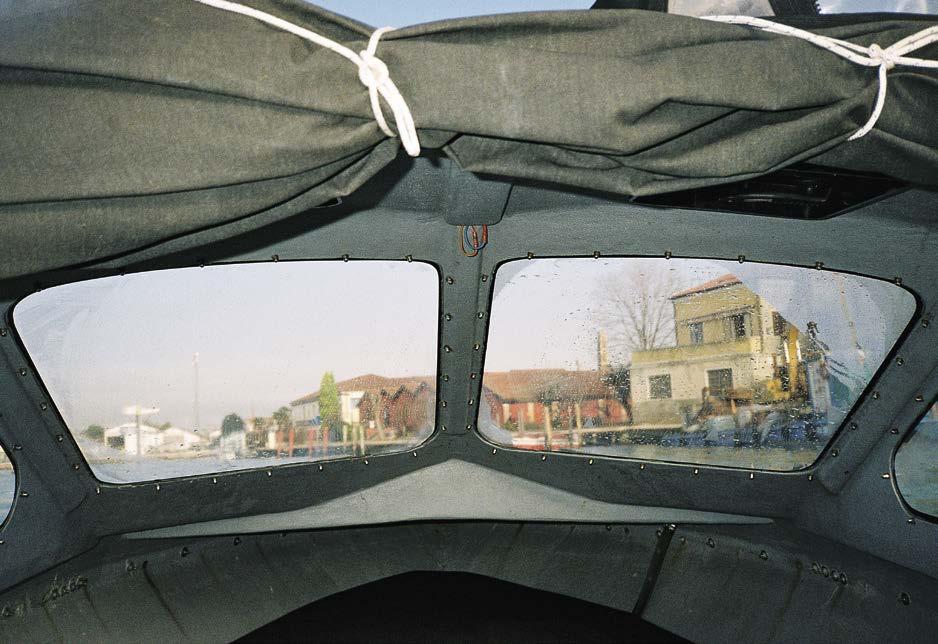
 An interview with Marcantonio Brandolini D’Adda, artist, designer, and CEO and art director of the Venice-based glassware company Laguna~B.
Photographs by Karla Hiraldo Voleau.
An interview with Marcantonio Brandolini D’Adda, artist, designer, and CEO and art director of the Venice-based glassware company Laguna~B.
Photographs by Karla Hiraldo Voleau.

Quarterly: You’re a true Venetian! What was it like to grow up in Venice? How did you get around town? Did you take a boat to school?
Marcantonio Brandolini D’Adda: Yes, I grew up in Venice, though I don’t really identify as the typical Venetian. The idea feels nostalgic to me. Growing up in the lagoon is definitely something I would suggest, as you have no cars or major dangers. You get your freedom at the age of five, walking to school, playing soccer with your friends in the streets, and many other activities that in other cities you couldn’t do. No, no boat to school, but we used a boat to escape from school and from the streets.
What’s something that someone would be surprised to learn about “the real Venice”?
I think most people who come to Venice don’t understand the city’s unique environment. The lagoon is a complex ecosystem that made Venice what it is today. Without the shallow waters of the lagoon, Venice would have been conquered in a few days by its enemies. Without the balance between sea, salt water, and sweet water, the foundations that support the city’s buildings would collapse. Without the many shores and the different communities there, I wouldn’t live in Venice—they’re a refuge when you feel overwhelmed.
Your family has lived in the same palazzo on the Grand Canal for centuries. When was the Palazzo Brandolini built, and what’s the wildest thing that’s happened there?
I’m not sure that anybody from my family actually lived in the building, except for my parents. But I know that nobody ever worked here, like most of the owners of other palazzi in the last two centuries or more. I think that’s part of what made Venice a place without much innovation. Back in the glorious period of the city, palaces were places of commerce and melting pots for different nationalities and backgrounds. That made a lot of things happen— think about the political structure of the Serenissima, the development of printing, and many other innovations. If you want to know about wild things, there were probably
many, but I’m not sure that’s interesting—it’s easy to make wild things happen.
Let’s talk about Laguna~B. Start at the beginning. When was the company founded? And by whom?
The company was founded in 1994 by my mother, Marie, after her stepfather gave her a glass cherry made by the glass artist Bruno Amadi. She liked it, and decided to explore the material and the culture of [the glassmaking center] Murano. There she discovered the goti de fornasa, a kind of crazy drinking glass that glassmakers would make at the end of their working day using leftovers from previous productions. That made these glasses completely different from one another and uneven in shape. She got inspired by them and created Goto, our most iconic collection. That’s where everything began.
What are the core tenets behind Laguna~B? What do you strive to achieve with each piece, and with the company as a whole?
The core tenets of Laguna~B are to be a contemporary company that adapts to the present and prepares for the future. Quality and attention to detail must manifest in every aspect of our business, from the design process to production, from advertising to customer care. Our purpose is to do business not just to sell but to participate in the future we desire, and to invest in culture, community, and the environment. Every piece has to embody our tenets. At what age did you get involved? What has it meant to take on the role of director?
I started working for the company seriously at twenty-five. It was basically out of business back then; my mother had passed away years earlier, and nobody had worked on it since. Before that I was working as an assistant to the CEO of an auto company in Milan, and I didn’t have much experience. I made many, many, many commercial mistakes, which I think made Laguna~B an outsider in the world of craft and design companies.
Could you speak to the influence of Venice on the aesthetics and process behind the glassworks? And for readers who might not know, could you explain
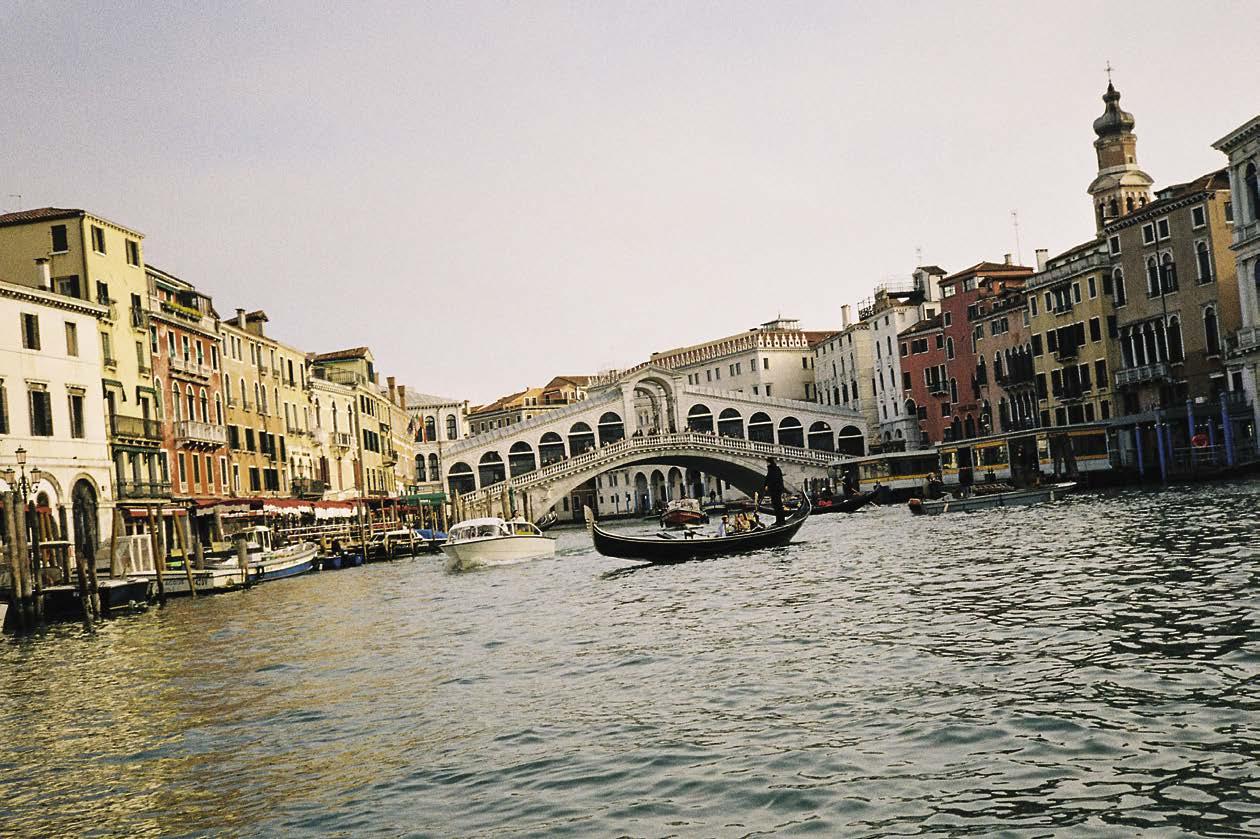
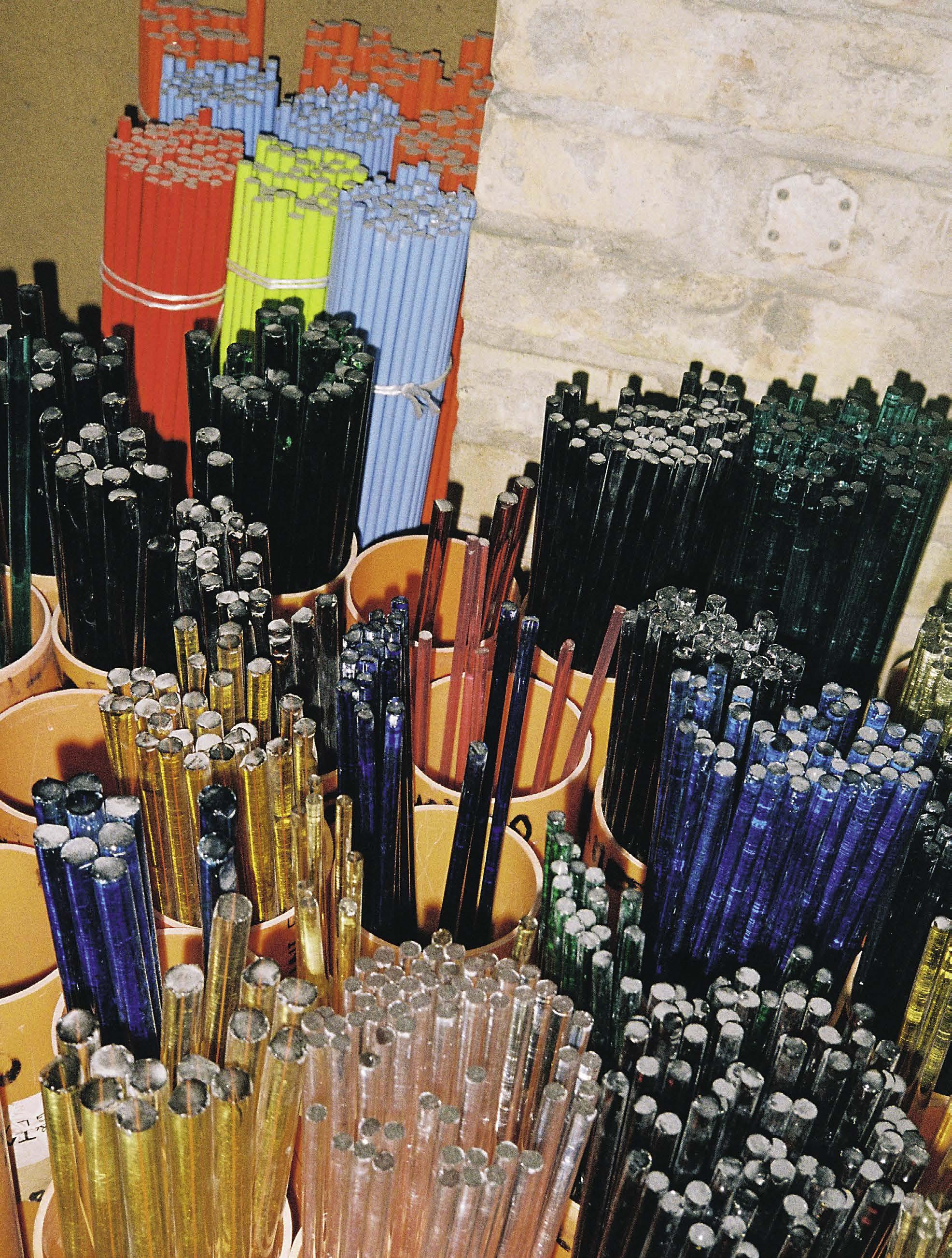

the history of Murano glass masters and the goti de fornasa?
The key to our design process is to keep tradition out of the picture and let creativity flow. The general idea about Murano is really nostalgic, as it is for most Italian crafts. Their storytelling hasn’t changed for 100 years: “Murano is an island where the most skilled glass masters in the world live, coming from generations of glass masters, using secret techniques that are nearly impossible to reproduce.” The reality is that whatever is made in Murano can be replicated worldwide with the same quality; there’s no secret difference. So we believe the only way to “save” Murano is by investing in innovation and making free creativity the drive for the future.
Since this year marks the thirtieth anniversary of Laguna~B, we’d love to hear where you hope to see the company in five years? Twenty years?
My goal is to make Laguna~B the point of reference for drinking glasses of excellence. We understand that our customers have begun to see our products as collectibles, not just simple functional glasses for setting a nice tablescape. Our customers use them as functional art pieces and treat them with extreme care. One client once told me that drinking from her goto made her feel a sense of belonging, as if she were participating in a bigger family. Within five years, we’d like to see an increase in our collectors as we design and develop over sixty new collections. Having a lot of collections would encourage customers to create more diverse and playful selections of glasses for their table. Let’s forget about the baroque, classic tablescape where everything matches. My ambition in twenty years is to have an exhibition about our work.
You’ve collaborated with various artists—what have those experiences been


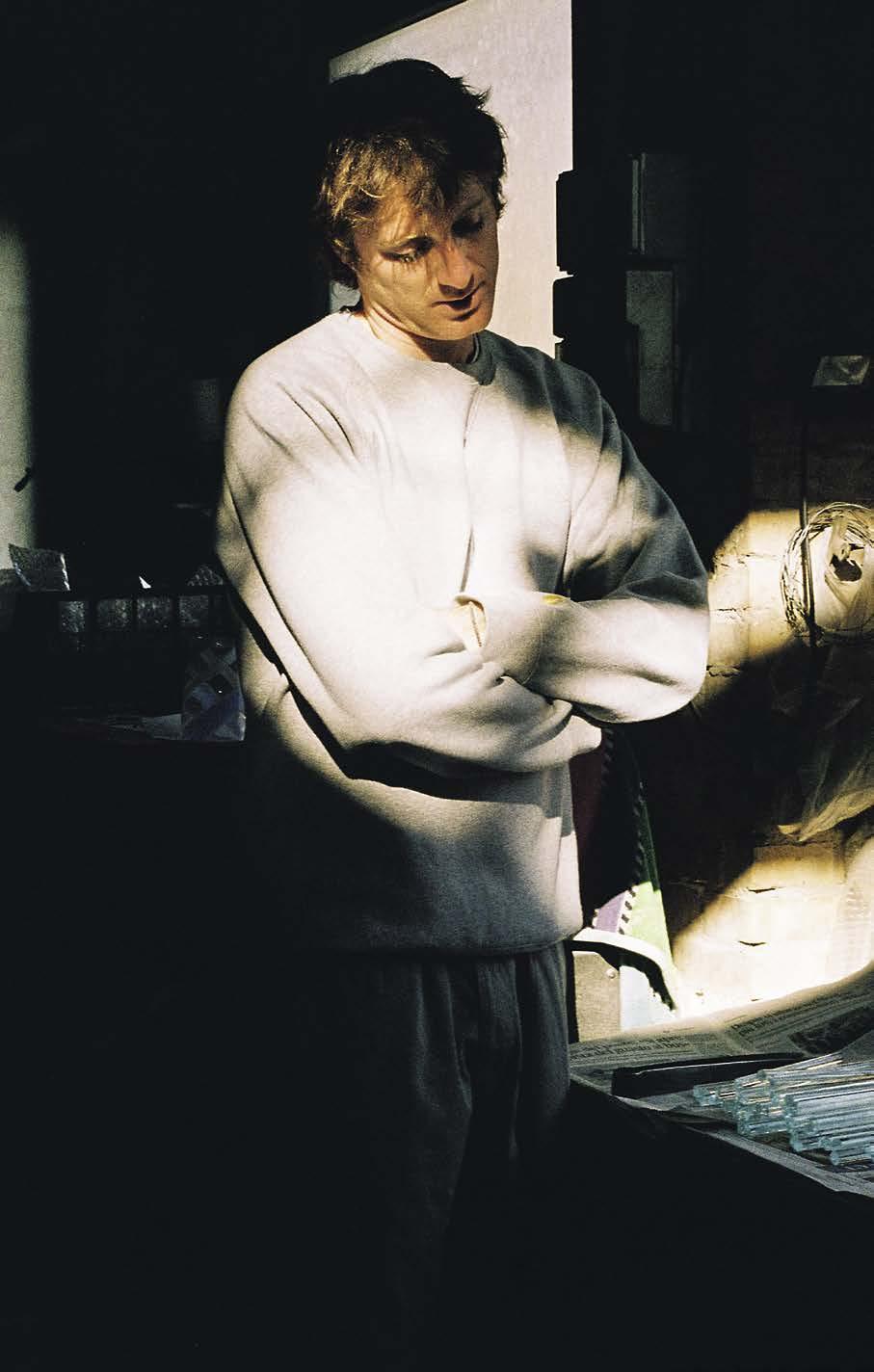
like? Do you have a dream list of other artists you’d like to bring in and collaborate with in the future?
It’s always a good challenge, but the design process is complicated. Glass is a material without many limitations, but money, as always, is an issue, and the other challenge is to be able to find compromises between our clients’ designs and the production process. Sometimes I prefer to have the freedom to create a really complex drinking glass myself and sell it for thousands of dollars. Even if it’s difficult to sell. But who knows, I love challenges. Are there any upcoming or recent projects that you’d like to draw attention to?
As I said, we have purposes other than selling. Since 2017, we’ve been investing in various nonprofit projects in different fields. This year we decided to focus on two major programs, Vital and Autonoma. We cofounded Vital four years ago with the local nonprofit We Are Here Venice; the goal is to regenerate the lagoonal ecosystem, restoring the salt marshes (and their ability to stock carbon dioxide), which have been eroded by human activities. Autonoma is one of our most important cultural projects, aiming at fostering creativity and talent in a young generation of glassmakers. Today, Autonoma works with schools and US social institutions that support kids from difficult backgrounds, using art and creativity to cultivate talent. We think involving young, passionate people is key to ensure a thriving future for Murano and the creative world in general.
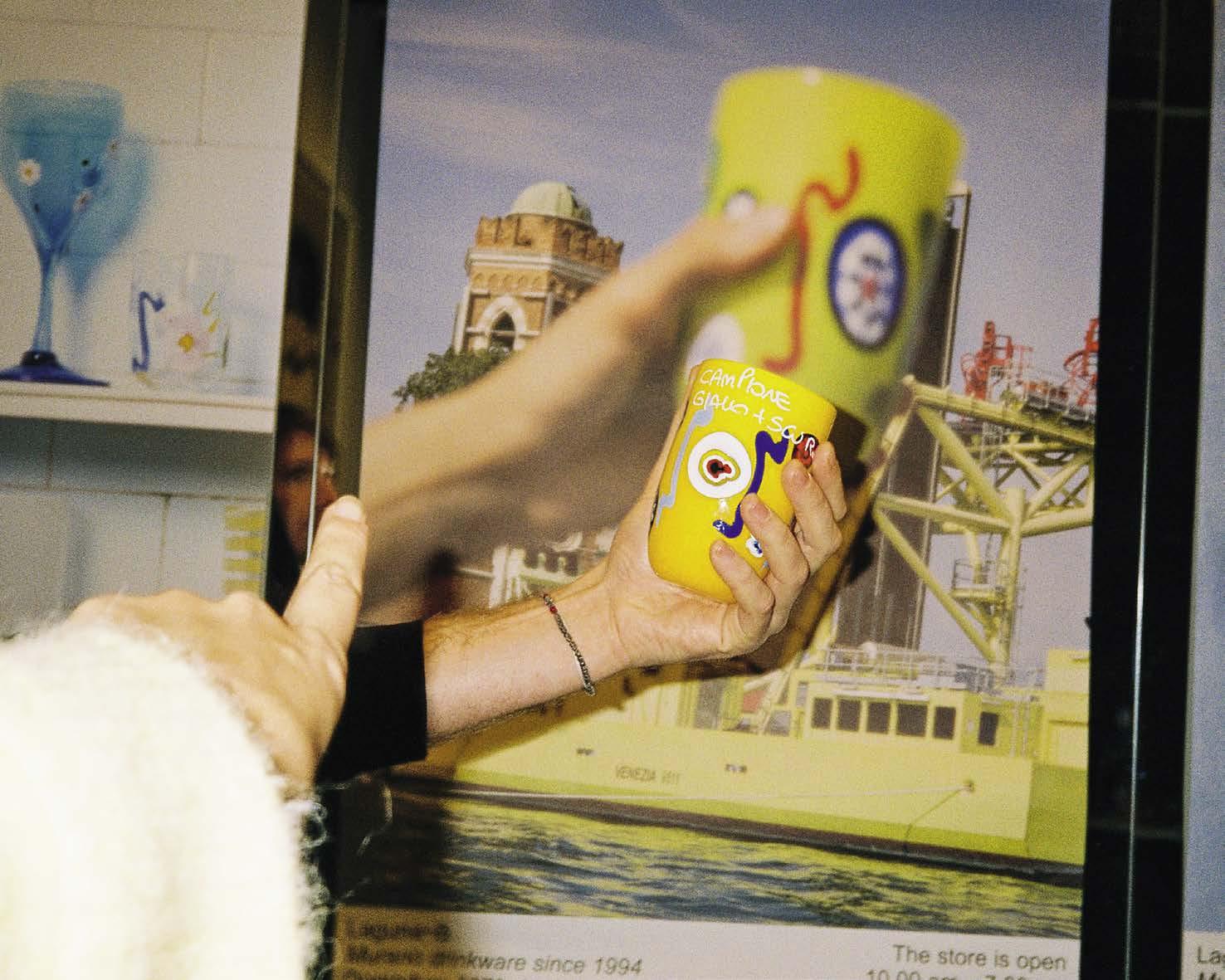

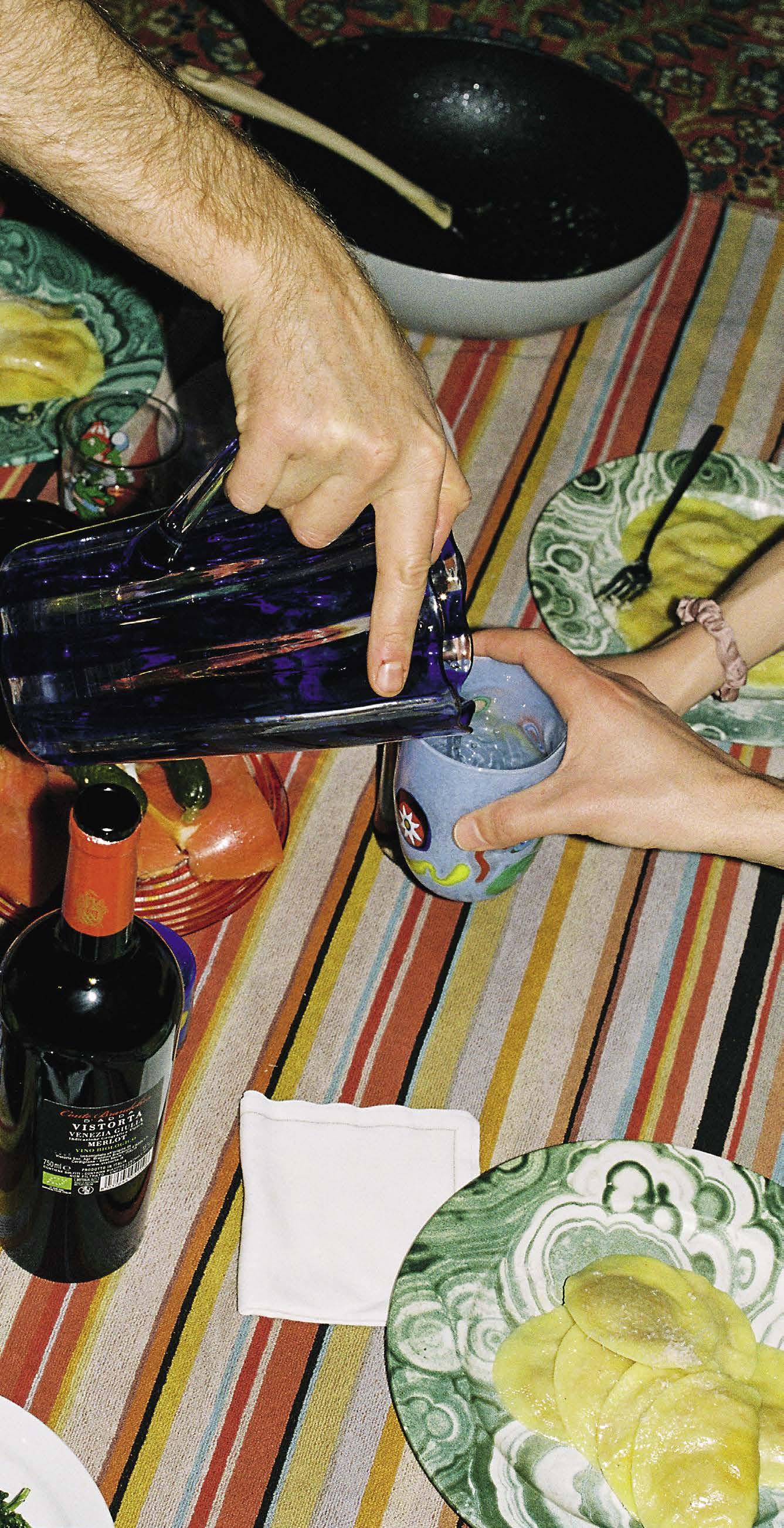

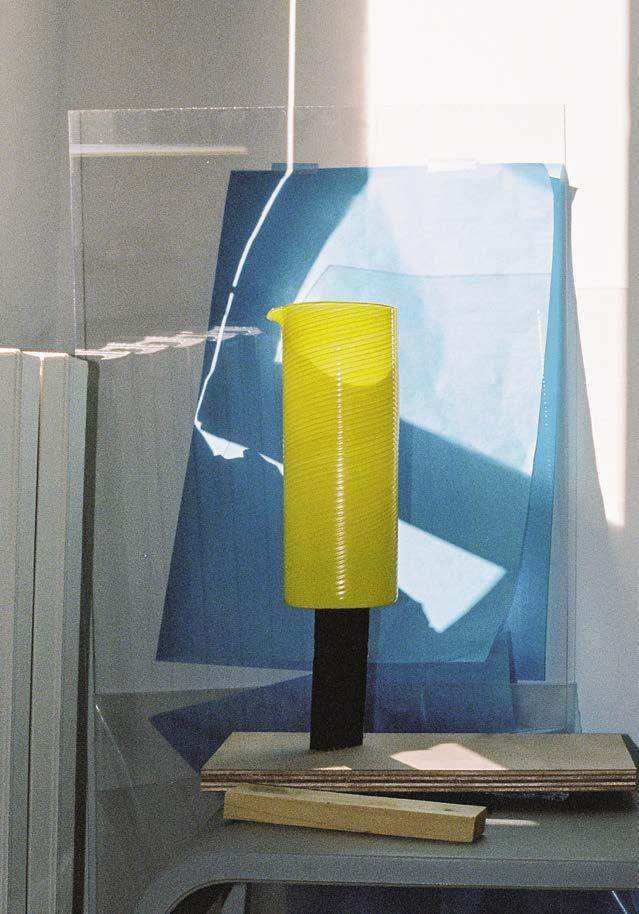
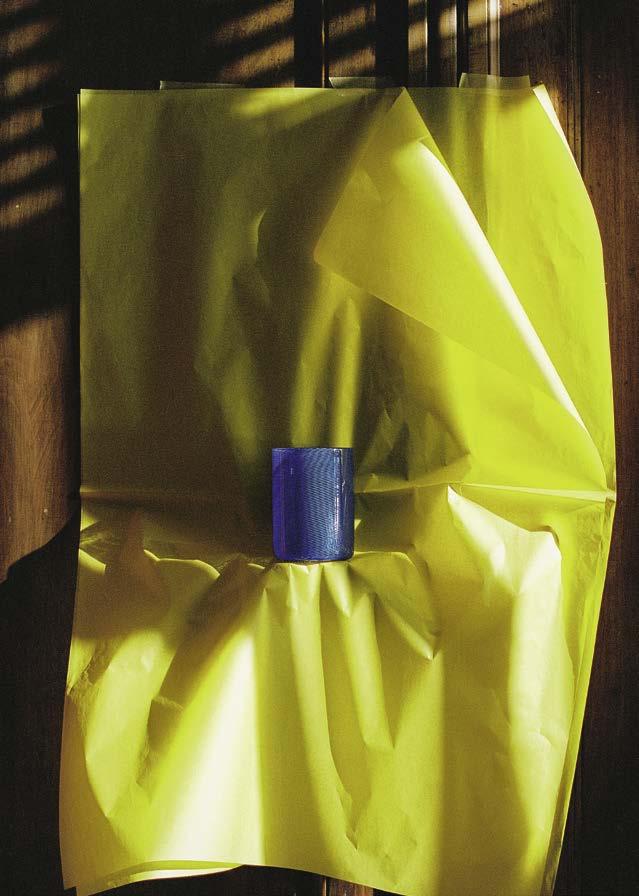
Building a Legacy: Historic Artists Homes and Studios
This ongoing series features conversations with experts in the field of artists’ estates and legacy stewardship who offer insights that might prove useful to artists, their staff, foundations and estates, scholars, and others. For this installment, Daniel Belasco, executive director of the Al Held Foundation, meets with Valerie Balint, director of Historic Artists Homes and Studios (HAHS), to discuss the importance of preserving and engaging with artists’ personal and creative spaces.
DANIEL BELASCO I’m pleased to have the opportunity to interview Valerie Balint, director of Historic Artists Homes and Studios [HAHS], a growing coalition of sixty-one museums that were once the homes and studios of American artists. HAHS is amplifying a wave of interest in authentic spaces of artistic creation. The focus of this conversation is the role and value of preserving artists’ studios and homes as sites of education and interpretation. In my role as the executive director of the Al Held Foundation, I’ve learned the power of place in stewarding a complex of five buildings on four acres, Held’s home and studio for forty years and now the foundation headquarters. One of my greatest pleasures is guiding visitors to the “aha” moment when they first walk into his voluminous studio in a former dairy-barn hayloft: the essence of Held as an artist of immersive abstract spaces just clicks. So Valerie, have you had any of these “aha” moments as a visitor to an artist’s studio?
VALERIE BALINT I have. There are so many. I would argue that every aspect of an artist’s preserved home or studio—an external space, an internal place, a corner of a room—has that ability to resonate with that artist and their legacy. One of my most compelling and contemplative moments was in my first year at HAHS. In 2017, I went to Edward Hopper’s preserved home in Nyack, New York. Many people know about his experiences in Cape Ann, his Washington Square studio, his home in Truro on Cape Cod; those are the places we most associate with him, and they represent later periods in his life and career. But he was born in Nyack, New York, and he grew up and lived there into his twenties and returned there often over the course of his life. Today, the site is not heavily furnished, but the minute I stepped into the space I saw that the light streaming in the window was basically an encapsulation of every Hopper painting I’ve ever seen in my life as a professional in the museum field. And what I came to understand is that this germination of an idea around light and shadow in space, and in this particular place at this moment, remained with Hopper his entire career. Inspiration is not linear; artists can have a kernel of an idea that they return to, reject, come back to. So sometimes an “aha” moment reinforces what you might already have noticed in an artist’s work, and then at other times it’s about understanding additional impulses and interests that may have inspired an artist but don’t necessarily correlate to their work directly.
DB HAHS plays an extraordinary role in helping to identify, organize, and increase access to
many spaces that generate these moments. Could you tell us about the organization’s mission and background?
VB HAHS really began with the incredible advocacy of the art historian Wanda Corn. She was trying to save a space in Washington, DC, Alice Pike Barney’s studio, an effort that wasn’t successful— the building stands but is not dedicated to the artist’s legacy or to retaining the material culture. It’s actually the Latvian embassy. Through that experience Wanda began to wonder, Where are other studios and spaces? How do they connect to each other, and how do they deal with the challenges of sitting at the fulcrum between historic house and art museum?
So, in partnership with the National Trust for Historic Preservation, Wanda started to think about how to create a coalition. At the beginning the mission was about specific challenges and opportunities related to stewarding these types of sites. We still keep that core of mentorship and peer exchange, but our goal is also to reach the public consciousness—and “public” in the broadest terms: scholars, museum practitioners, collectors, visitors, and the next generation of artists and youth. We aim to increase the understanding that artists’ sitespecific legacies are critical to any discussion of the evolution of art history in this country. To do that we have now started to be more outward-facing, trying to engage the public in our own programming and working to elevate the conversation in the academic field, while also drawing visitors to these sites.
DB One of the things I also find inspiring is how HAHS has redefined its membership from the traditional notion of the artist’s studio as a delimited architectural space for the production of painting and sculpture to a more flexible category of an artist-designed environment. I was hoping you might offer a couple of examples of these kinds of sites.
VB You know, as we looked at how we define spaces, we began to ask fundamental questions: What does the idea of home mean, what does the idea of an artwork mean, what does studio space mean? These definitions are in fact malleable and permeable, especially in current academic discussion. So we began to look at environments such as Noah Purifoy’s outdoor desert assemblage-sculpture park. Purifoy is a fascinating individual who spent an entire life working in public arts policy before going out to the Mojave Desert and basically using the desert floor as a studio. The whole thing was incredibly experimental—any material was fine—and these wonderful assemblages are
powerful on their own, but it’s also a question of the interconnectivity of the whole. And then we go to a place like Pasaquan in Buena Vista, Georgia, where Eddie Owens Martin, a largely self-taught artist and an LGBTQ activist, created a three-dimensional work of art that includes masonry walls, painted jewelry, clothing, anything you can imagine.
When I think about artist-built environments, they’re about two things for me: this challenging of the boundaries of what is art and what is practiced, but also of materiality. These individuals are really experimental and often live outside the mainframe of more traditional artistic circles. Another perhaps better-known example, which isn’t currently in HAHS, is Henry Fite’s Opus 40 sculpture park in New York’s Hudson Valley. When I think of these places, I go right back to my own “aha” moments throughout my almost twenty years as a curator at Olana, also in the Hudson Valley—Frederic Church’s 250-acre opus on his aesthetics of panorama and composition and theatricality and color. For me, that move from an Olana to a Pasaquan is not as large a leap as one would think. Which is also what’s important about HAHS. When you start to examine these sites collectively, you discover commonalities that cross era and mode and location.
DB Have you noticed interest growing among visitors?
VB For many decades there’s been a conversation in the historic-house-museum world about audiences declining at historic sites. Meanwhile, what’s really interesting is, the visitorship at historic sites of creativity is on the rise. And there’s a reason for that: innovation is embedded, and the art of the possible, of an idea becoming manifest, is in the DNA of every single one of these places. So it’s not surprising that in an increasingly virtual world, there’s a desire for the tangible, and these artists’ places are about as tangible as you can get.
At the same time, because these artists were mavericks and risk-takers and mirrors of their time, there are ways to bridge that historic relevance with contemporary issues we’re facing today. Beyond just the sparking of creativity, these were always places of intellectual debate and discussion.
DB I joined the Al Held Foundation seven years ago, and it was already an intact, preserved space housing the collection, archive, and offices. The board had made that decision before my arrival. Could you share some of the factors that artists and/ or their legatees should consider in the preservation of a studio or an environment? Do they all merit preservation?
142
VB I will say that I wish it was more often a living artist who was planning for legacy. There’s a much stronger tradition, at least in this country, of creating a foundation posthumously, focused on the placement of art, on scholarship, and all these things that are important to an artist’s legacy. It’s hard sometimes for artists to visualize the importance of their paintbrush, their books, whatever it may be, to a greater understanding of their work. So one of the things I tell artists when they’re considering this is to really think about what they want, not in the short term but in the long term. And to be honest with family members about what their vision is and then to bring in other voices, not necessarily to dictate that planning but to start to coalesce the vision for them as people. And this can apply to descendants or stakeholders too.
The biggest issue longer term is deciding whether the place is going to be an artist residency, or a place through which people regularly tour, or is the landscape going to be activated in some way, or is it going to be an exhibiting institution or a study center or some combination of these. All these things are possible, but there needs to be a thoughtful consideration of what over time the real financial needs are going to be. And it doesn’t mean the artist has to have solved that issue, because most of the time that’s not necessarily possible. But it’s important to start to plan and to have a serious engagement around putting those thoughts on paper.
For new stakeholders in the next phase of preservation, that’s about understanding very basic things like gaining nonprofit status, defining your educational mission, and developing the programmatic work that will support that mission. That doesn’t mean the mission can’t evolve; once you open to the public, the calculus of all kinds of things changes. Running this type of public institution is a profession in and of itself, as you well know. So it’s necessary to start to think about that professionalization, or at least gain an understanding of it. Being an artist foundation and being a public site aren’t necessarily in conflict with each other, but there’s a difference between them. And HAHS serves as a key mentorship resource, both as ourselves and as a connector to other organizations for these kinds of discussions.
DB What about the question of real estate value? I wonder if there are cases when artists’ studios are just worth too much. Someone owns a building or a huge loft in SoHo and as important as that artist and their legacy might be, the best usage of the property is to sell it to build an endowment or cover other expenses. Whereas with more rural sites, the real estate is less expensive, but also less accessible to the public. Is there an urban/rural difference in preserving artists’ studios?
VB It’s challenging. What’s so interesting is, we think about these urban centers as the centers of the art world, yet not many urban sites are saved. Some of that is the cost, some of it has to do with development. In many places, one of the most important financial assets is the building, the land, or both. The long-term implications of sustaining these types of properties are very real. But even in the shorter term, for living artists who are estate-planning, or descendants who are deciding what to do to explore place-based legacy, the actual capital value of those sites, and the viability of retaining them, is something people have to consider.
There are many reasons why urban sites are harder to preserve. For one thing, these are often shared spaces. With someone like Louise Bourgeois, there’s a brownstone, but many artists live in
shared spaces, so how do you save the entire entity? There are definitely places out of the city, Aspen being one of them, the Hamptons being another, where these considerations are also at play when people think about artistic legacy. And the key here, as I alluded to earlier, is to do the careful thinking, right? If one is reacting with urgency in real time, the ability to think through becomes more challenging for anyone involved. I of course want them all to be saved, but that said, it’s when one gives oneself the space for intentional thinking and analysis that problem-solving and solution-building can arise.
DB If someone’s at the very beginning of this process, are there online guides or how-tos? Are there best practices available?
VB There are many online guides. The Joan Mitchell Foundation and the Aspen Institute are amazing resources around building artist foundations as they traditionally exist. There’s less about preserving studios, because we get back to that position of sitting at the fulcrum of art museum and historic house. And so there isn’t one place. I hope that someday HAHS will become the central place for those resources. Because there are so many possible models, this is in many ways the function that HAHS increasingly serves: we can be a beginning, an initial resource, and then it’s about connecting, within the network, sites in various stages of evolution, from well-established places like the Thomas Cole house in Catskill, New York, to places that are more nascent, like the recently opened studio of the modernist and Georgia O’Keeffe contemporary Olive Rush, in Santa Fe. When you get to this type of work, the vision and the plans for that particular site are often singular. So linking up to the resources that apply to their individual situation is a key component of the work that HAHS does.
DB You mentioned earlier how these sites often have archives or art collections. A big part of the planning and preservation process, and of the funding that supports it, is to decide whether to retain these materials onsite and include them as part of the visitor experience or to disperse them within other institutions.
VB Exactly. But no matter what the decision, the key is to understand that anything from the archive down to kitchenware can be activated at a site. An amazing example of that was the Lee Miller exhibition at Gagosian this past winter. I’ve had the privilege of going to the site in the UK where Miller and Roland Penrose lived. I’ve met Antony Penrose and Ami Bouhassane, Miller’s son and granddaughter respectively, who spearhead that operation, and they have the archives, they have everything. The Gagosian show was so grounded in place. I mean, Lee Miller was a person of many talents; her life had many iterations—model, cookbook author, war photographer, art photographer. Much of her work in the show reflected the life that these two built with friends and artist colleagues in this very specific place that still exists. When making choices about what materials to keep onsite or include in an exhibition, people envision ways in which the story can be about that integration of life and the multifaceted practices of artists exploring and experimenting, in architecture, landscape architecture, personal curating, or book authoring. The archives, the art collection, some of the more domestic touchpoints— these are ways to tell that story in a way quite distinct from seeing an exhibition of work in a single medium, like photography. That’s the beauty: that these places can play with their archives, while at
the same time having a rich collection that warrants a fantastic exhibit.
DB Yes, there has definitely been a shift in curatorial practice toward including material culture alongside works of art, providing a more dimensional presentation of the artwork. Audiences seem to really appreciate that.
I wanted to chat a little about some other current and emerging trends. An increasing number of historic artists’ homes and studios, especially some of the more established ones, are inviting contemporary artists into their spaces to exhibit, usually showing either a site-responsive piece created for that location or studio work presented in the spirit of the host artist’s home and studio. I was hoping you could tell me a little more about this trend. Do you feel that it represents a shift in the status of artists’ homes and studios toward becoming quasi-museums?
VB The idea of having contemporary exhibitions on the landscape at some of these places has existed for decades, for example at Chesterwood in the Berkshires. But the idea of a call and response is fairly new and is to the benefit of all. For one thing, living artists always need places and support for their work. They also understand intrinsically the potency of place. The practice also exposes audiences to the continuing threads of artmaking in this country, to learning about a historical artist that you might love and then also learn about an artist practicing today. And, of course, certain communities of artists have not been included in discussions or in preserved spaces more generally—AfricanAmerican artists, Indigenous artists, women artists so these initiatives create necessary opportunities. The activation of historical spaces to include contemporary artists of all disciplines aligns with the fact that many of these artists, if they were successful, supported younger and emerging artists in their own eras, so showing younger and emerging artists now doesn’t seem forced. We’re at the very beginnings of what it means to activate spaces in this way with contemporary artists and how to include them as active participants in curatorial work.
DB Do you have any final thoughts on the unique role that studios specifically can play in the ongoing legacy of an artist?
VB When we think about legacy and the continuing examination of art and artists, what gets preserved, and what people can go see and learn about, dictates the canon, right? So providing opportunities for both scholars and everyday visitors to come and engage with art in a physical way, and to understand the roles that artists played in their time, is not only critical to discussions around certain artists but also one of the most accessible ways to educate the public about legacy work and about the importance of artistic heritage.
The art world is not a static thing and the art markets are not static things. We’re beginning to discuss at very high levels of the art world, How do we give agency? How do we decide hierarchies? And that filters down to place, and to whether there’s a will to preserve. Some of these artists who are now coming to the fore in discussion, their places were not preserved, but we wish they had been, so we must have a very long view on that. It’s important for artists to understand that there’s something to be gained by having people inhabit your space. In doing so, they can learn about your work and your practice and the impulses and experiences that informed it.
143

144
Frank Stella, New York, 2023. Photo: © Brigitte Lacombe
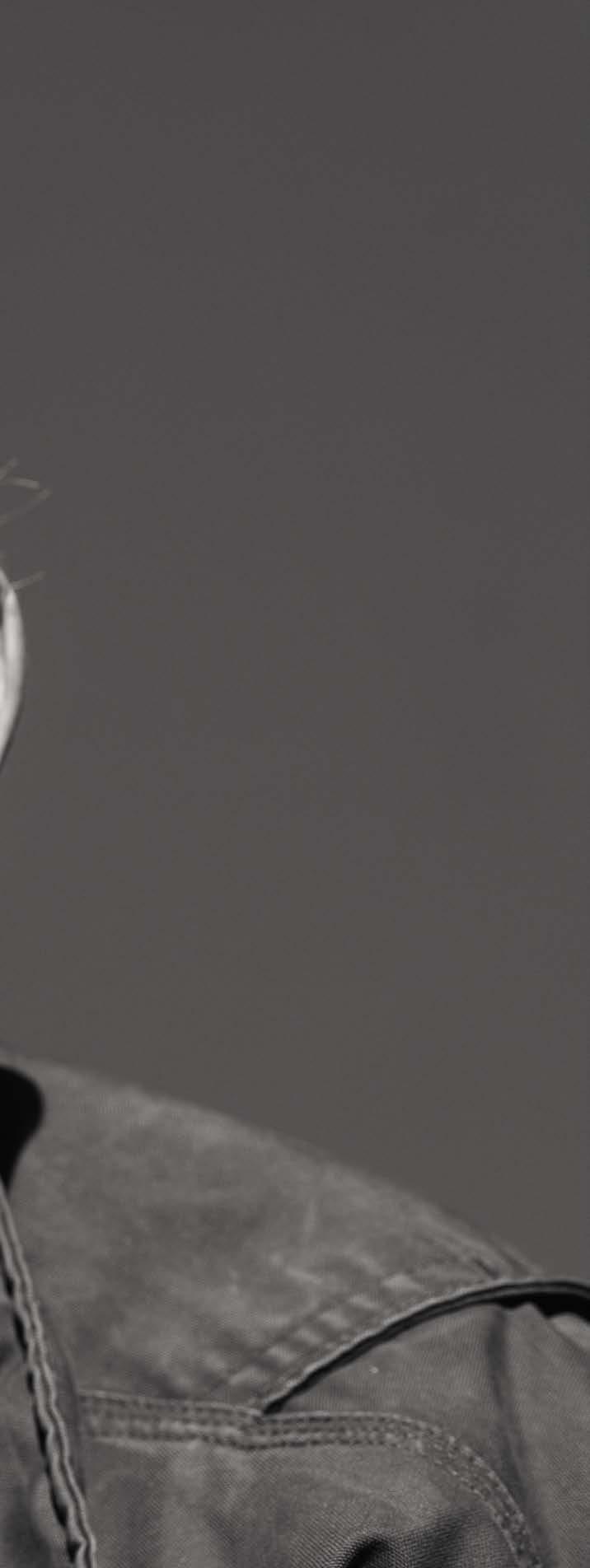
MEGAN KINCAID I know you’ve just left work in your studio and have numerous projects underway, but I wanted to start at the beginning. You’ve lived in New York since 1958, right after you graduated from Princeton. Do you consider yourself a “New York artist,” or an “American artist” for that matter? In 1958 those designations were significant— they announced the new artistic vanguard working against European tradition.
FRANK STELLA I wanted to try to see if I could support myself. It was a pretty straightforward idea about being a New York artist. There wasn’t any doubt about that. And that was what the style was, everybody else was a New York artist, too. I think you came to New York because that was where the art you were interested in or cared about was being made. And it was all New York artists, there just wasn’t any question about it. That was where all the artists were exhibiting; the work was being shown all the time there. And you have to remember one thing too about being an artist and being young: the art was available, and it was free. You could go around to galleries and museums and that was it: everything was being shown and you could be part of it.
MK By that time, Abstract Expressionism was supposedly on the decline—Minimalism and Pop were steadily coming into view. Did you sense a shift?
FS No, I didn’t see the decline. It’s hard to say, it was all one thing. What were you going to say— Jasper [Johns] and Bob [Rauschenberg] weren’t Abstract Expressionists? There’s a lot of Abstract Expressionism in Pop art. By and large what was going on was pretty much the same. What the emphasis was or how it came out normally wasn’t that surprising.
MK You were also all exhibiting at the same galleries.
FS Or drinking at the same bar.
MK The Cedar Tavern. Were those nights quite fun?
FS They weren’t boring.
MK In the Black Paintings [1958–60], considered your breakout series, the compositions are comprised of repetitive concentric lines following the shape of the canvas. You have said that the focus on line was in some ways a continuation of Jackson Pollock’s drip paintings, though in a more austere language. Did you understand this body of work to be a departure?
FS I didn’t think of it as any kind of real break or anything. I was looking, I guess, to do something that was just a little bit less bound up and less gestural without being totally “abstract,” as they say. I was looking for a little bit of each.
MK You were part of a very ambitious cohort, too. You describe other artists as constantly “invading” your space.
FS You needed somebody to be with you a little bit. It was just to feel you were working on something
and had something to do. It was a sense of belonging, you know—that was the main thing. You had a job, somewhere to support yourself, and you had a life with your friends. It was pretty loose. Since I was young then, everyone else seemed young, too. You could say it was a pretty childish environment.
MK Not too many adversaries, then?
FS Well, you know there’s that story, I got it from Carl [Andre] but I’m sure it’s true, you know, arguing with [Franz] Kline about how you know a good artist, or what’s a good young artist. And Franz said, “You know, it’s easy, you take them off the stools here in bars and you lift the grate off the sewer out there and you throw ’em down the sewer and then put the grate on top. The one who crawls out first is the best artist.”
MK This sort of macho rhetoric of American art at mid-century is heavily contested today in terms of the inclusivity of these movements—do you feel that’s an accurate assessment of that time, that it was a boys’ club?
FS I guess so. There were girls there too. It was pretty loose, and what seems surprising to me looking back a little bit is how self-contained it was; everybody was pretty confident about what they were doing somehow. To be honest I knew what everyone was doing and it was kind of, it seems silly now and everything, but you either liked it or you didn’t and you didn’t worry about it. I was pretty happy with most of the painting that I saw.
MK Reconstructing this social context, you were involved in the political and social revolutions of the 1960s. Looking retrospectively, you can see certain changes occurring: you break out of a limited palette into a vivid color spectrum, and the shaped canvases beginning in 1966 directly interrogate “real” space. These formal changes might be evaluated as indexes of social consciousness, liberation, radicalism.
FS I think they should have been, but not very much, because you took all of that for granted. You went to a march, or you gave a print to this cause or that cause, but it was really just something you did and went on with. At some point it got to be ridiculous. There was a crackdown on the guys in prison so everybody had to do something to help out with prison reform; I made a poster and they complained it didn’t have enough color in it. So you can see where we were.
MK You’re heralded as a forefather of Minimalism. Part of that legacy unfurled from your now axiomatic statement on artistic literalism: “What you see is what you see.” Do you still feel that way?
FS Yeah, unless you can show me something else. I don’t know what happened or what it was; it was a pretty casual remark! Donald Judd was doing this reverse criticism about the kind of thing that goes on in Europe, where you’re always talking about the meaning of the work, and they would tell you what’s in the painting and I couldn’t see it. But they
FRANK STELLA AN INTERVIEW WITH MEGAN KINCAID
145

page:
Opposite: Frank Stella, The Petite Cascapedia , 2022, fiberglass, 182 × 326 ½ × 173 inches (462.3 × 829.3 × 439.4 cm). Photo: Dominic Nurre
Artworks © 2024 Frank Stella/Artists Rights Society (ARS), New York
probably did. That’s what’s actually kind of interesting about it.
MK For you, then, is meaning always interpretive and open? You often attach clear titles to your abstractions, directed to literature or places.
FS When you start looking at what you’re looking at, you can go anywhere.
MK Overt figuration often entails a degree of didacticism. Yet when you pull in concrete references in your recent sculptures—stars, smoke rings, rivers, hotels—it’s always in oblique ways.
FS I see the world pretty much the way everyone else sees it, but I’m not driven to represent it very much.
MK You’ve used technology to stage imaginative form on a monumental scale that encroaches on reality itself.
FS That may be true. I have people who help me. You know, I think of maybe a Rubens painting when
the guy comes in to paint a lion. There’s a level of technology in fabrication, and when you’re working in the foundry and actually making the thing, that’s pretty interesting. If I learned anything, that’s the way I learned most of it. The part about making something, or the fabrication—you have to go back to the technology to give the fabricators the information they need. It’s like doing your geometry lesson: you’re not doing so well, so you’ve got to get a tutor. A lot of artists were able to do what they wanted; they were artisans as well as artists. A lot of them, like David Smith, came from a job—he’d been a welder.
MK There’s an amazing room in your studio filled with dozens of maquettes—is there anything you have pegged to realize on a large scale?
FS There are quite a few models; most of them will get a little bigger. You go from small to medium
to large. Small is a little tough, in a way, but I like that. Then medium is pretty good. And then I have to decide which ones I want to go large with. Since you’ve been working on them for quite a while, you have a sense of the ones you sort of like a little better than the others, or that you want to pursue. Sometimes you pursue ones that you think might just be too tough for you, so you get brave and try to do it.
MK You refer to confronting “problems” that artworks present. Is art fundamentally agonistic? This seems ingrained in the Sisyphean tasks you set up for yourself—like making a work for every chapter of Melville’s Moby-Dick [1851].
FS That just happened. If I hadn’t gotten annoyed at my son Michael, I wouldn’t have done that. He said “You don’t have to do all of the chapters,” as though I couldn’t figure that out for myself.
MK But you’ve always worked in series.
146
This
Frank Stella, Harran II , 1967, polymer and fluorescent polymer paint on canvas, 10 × 12 feet (3 × 3.7 m), The Solomon R. Guggenheim Museum, New York, gift of Mr. Irving Blum, 1982. Photo: The Solomon R. Guggenheim Foundation/Art Resource, New York
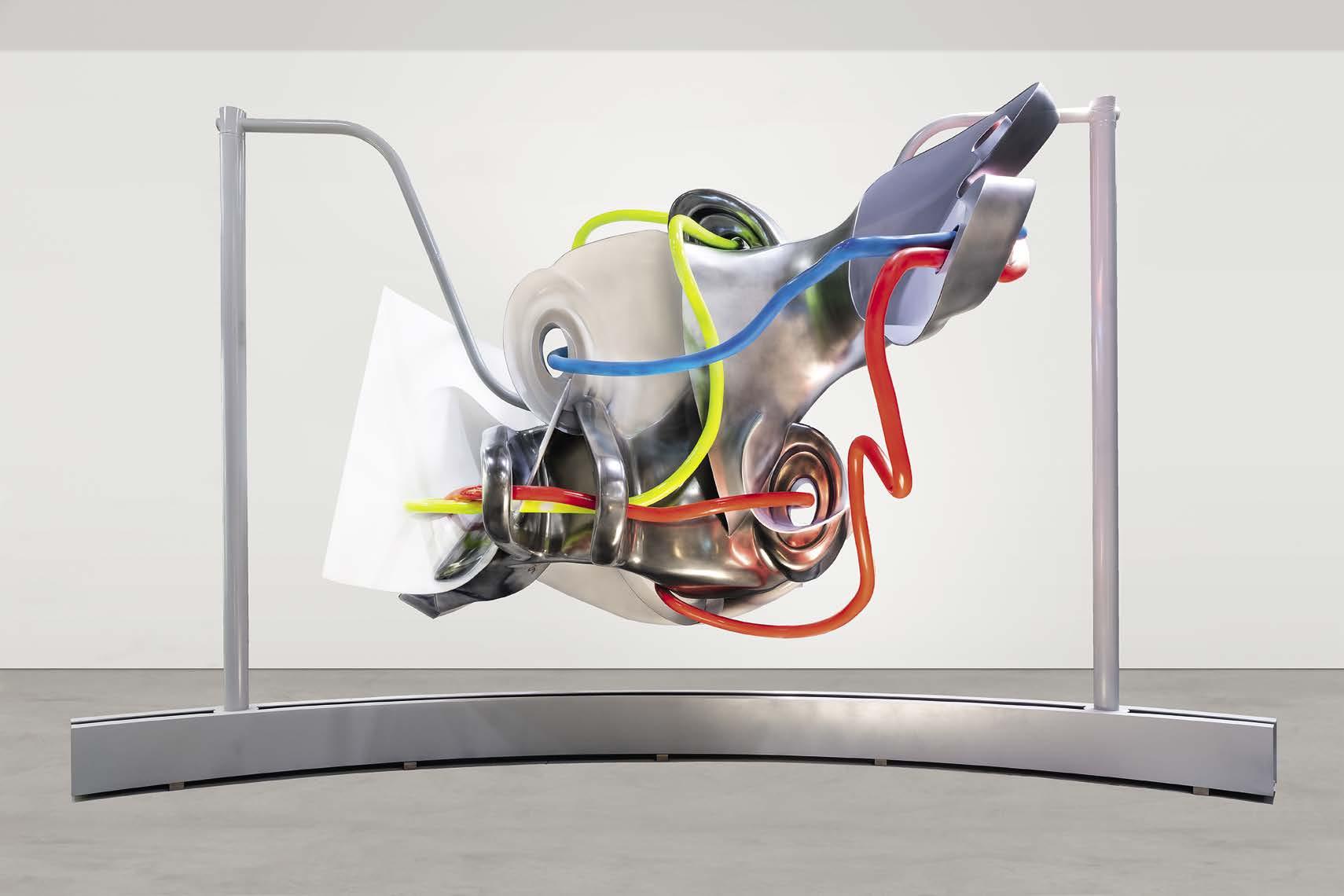
FS Yeah, I’m trying to think. . . . The ones I’ve not done as a series are pretty small. It has to do with the flow of the work—where you are, who you are at the time. I don’t think that much about it. My experience has been that what makes the work function is what gets attention. The work strikes you and it makes you pay attention to it somehow.
MK The work’s ability to grab attention suggests that it possesses an agency, even an attitude. You have quite a sense of humor—do you think your sculptures can communicate that?
FS Every once in a while, things just seem so obvious and so right and so good. But often with those pieces you come back to them or never get away from them, one way or the other. And then some things seem sort of dopey, but that’s usually because you don’t know enough about them. But then I suppose things could get even dopier if you
explored them a little bit more. But that’s the way it is: you have to make something.
MK Do you mind the ones that are dopey?
FS No, everyone seeks amusement.
MK You know, when people see works like Smurf Hotel [2019], they immediately smile.
FS Oh, that’s good. I like to stay away from my work when it’s being viewed. I remember Bob Rauschenberg videoing the people who were looking at his paintings.
MK In his Aesthetics [1835], Hegel said the pitfall of modern art is its penchant for self-reflexivity—it was becoming art about the art, or art about the text. Against that tendency, in the 1960s you said that you wanted to make art that “couldn’t be written about.”
FS Ooh, yeah. I was a bad boy. But you know, I wasn’t very successful; you can take that any way you want.
MK Well, exactly. You ended up being written about extensively.
FS I guess it’s just a question since the word “formalism” has gotten such a bad name, as they say. If it’s “just about itself,” it sounds like everything else has been excluded. But you can say it being just about itself and in the same breath including everything else there is to include.
MK That gets to the imaginative possibility of formalism—that inventing around form moves beyond your surroundings.
FS Yes, but with form, somehow you don’t know how you picked it. Once you start with it, you have to keep going. It’s pretty much as complicated as making something look like what you’re seeing, like when someone is sitting in a chair in front of you. I also think that the painters and things I like, although they are often very different, people get
147
into it. Take Ed Kienholz: there’s a lot of stuff there but it’s also so much about how it’s put together. And you look at it at the end, but there’s hand-eye stuff that happens really quickly. And you don’t get it and you don’t really care—because he did it for you and you look at it after. It’s not as obvious as it seems. When you think of Kienholz, I think of Rauschenberg and the Combines [1954–64]. It’s the quickness of the hand. The hand and the eye. That’s what makes art: the flow.
MK Are scale and spatiality also important for that flow in which the subjects of art can act upon each other?
FS I guess it’s true. A little while ago I would have had an answer for that, since I made a lot of things when it was quiet in the pandemic and then when I was sick I made a lot of small pieces, collages, and they’ve been received quite well. But I can’t go back to them. Not yet. Between my hand and my eye, I see things, I think about it, I could do this or that. But it just doesn’t happen. I don’t know how to explain those kinds of things.
MK So there’s an immediacy to your actions and compositional decisions that can’t be broken down or explained, and probably shouldn’t be!
FS I won’t argue with you!
MK On the topic of quickness: two of your passions are race cars and horses—both very fast, both possessing very elegant movement. Were you always attracted to that dynamism?
FS I’m afraid to say it, but games and sports and that kind of physicality were a big part of my upbringing. So I suppose you can say that for me, making art remains a childish activity. I was doing wrestling and lacrosse. My father was a worldclass wrestler in his time, so that was kind of tough, because I was being coached, but I liked it. It was tough when you were trying to outmaneuver your father; as I used to say, he was not only stronger than I am, but probably smarter. It was always competitive no matter what level it was at. My mother painted with me right from the beginning. Like painting Santa Claus on the window during Christmas. She was an artist. She went to fashion school in Boston.
MK Are you competitive—maybe not with other artists but with yourself? Has that been part of your engine or ethic?
FS It’s the only streak I have. Without a competitive streak, I’d just stay asleep.
MK Being in a household that wasn’t totally adulatory might have helped cultivate that?
FS It was way more than that. All the activity was really physical and rewarding in itself, and kept you busy. It had a goal. What more can you ask for?
MK You remain so active; you often go salmon
fishing. What do you get from those trips?
FS I think it’s just from the beginning with my father—starting at the time I was eight or ten years old, we went on trips together. That was a little different with my father because he had a more structured life, so leaving for vacation was really a break for him. He was a gynecologist, obstetrics and gynecology.
MK Did he embrace your career as an artist?
FS As I said, it was a silly, competitive family [laughs ]. No, as long as I didn’t hit them up for too much money, they weren’t too hard on me. They went to everything.
MK In 1970, you were thirty-three when you had your first retrospective, and it was at the Museum of Modern Art [New York] no less. How did you process that achievement?
FS It wasn’t a problem for me. It wasn’t so much about me—I guess it was partly about me, but I didn’t have a problem because [the curator] Bill Rubin was so straightforward, a kind of mentor: whatever Bill said, okay. I didn’t worry about it.
MK Some artists recollect that after major retrospectives they feel the need to change direction.
FS I think I changed a bit after. I just move along. The main thing is looking at what you do as much as anyone else does. When you get tired of looking at it, you can start thinking about doing something else.
MK Did you ever have to reconcile your public image and your daily life?
FS I was busy. There were a lot of things—the kids, everyday life. And the paintings seemed to fit into the middle of the day.
MK Just like a 9 to 5.
FS More like it was 10 to 4, or a 10 to 3.
MK There’s a tendency to romanticize the way artists live, how they dress and self-fashion. Like the fixation on the three-piece suit that you wore in the MoMA Sixteen Americans catalogue [1959], since you appeared so buttoned up.
FS Yeah, that was because Hollis Frampton took the picture that they requested for the catalogue. We never gave it any thought; I thought it looked nice and so we sent that in. And then Dorothy Miller, who curated the show, called and said, Didn’t I have a more informal photograph?
MK You’ve previously said that your formation as an artist was determined by the fact that you were born in 1936. Nearly ninety years later, do you still feel those ties to the past?
FS No, you know, I’ve been here so long. But I guess I’m a Northeast product of something. New York is where you can see art. If it’s something you’re using to support yourself, you have to be here, or recognize it in a very serious way.
IT’S THE QUICKNESS OF THE HAND. THE HAND AND THE EYE. THAT’S WHAT MAKES ART: THE FLOW.
148
Frank Stella, New York, 2023. Photo: © Brigitte Lacombe

GEMMA DE ANGELIS TESTA
In 2023, the collector and patron of the arts Gemma De Angelis Testa donated over 100 artworks from her collection to the Ca’ Pesaro Galleria Internazionale d’Arte Moderna in Venice. On the heels of that exhibition, she met with Gagosian senior director Pepi Marchetti Franchi to discuss the genesis of her collection, the key role of her organization acacia (Friends of Italian contemporary art association) in enriching the world of contemporary Italian art, and what it means to share one’s collection with the public.
PEPI MARCHETTI FRANCHI We’ve known each other for many years, and what struck me about you from the beginning was your extraordinary and rare perspective on the art world, seen as an ecosystem that artists, museums, art historians, gallery owners, and collectors all contribute to keeping healthy and vital. I’d like to start by trying to understand where this inclusive yet determined and enterprising spirit of yours comes from.
GEMMA TESTA I had the privilege of being married to a very special man, Armando Testa [the Turin-born, award-winning graphic designer, cartoonist, animator, and painter]. A “cultural obsessive,” he knew
everything, and never stopped talking about art and everything that struck him from the moment he woke up. It could be the latest film by Woody Allen or Massimo Troisi, but it could also be the architect or the director of the moment, as well as the neighbor next door. It was fun but demanding. He immediately involved me in his work, and the “exams” never ended. He enjoyed provoking and teasing me, and every time we talked about art, I became impassioned. We had many common interests that allowed us to overcome the age difference, and art was our glue. Love of art gave me a set of tools that, combined with study, allowed
me to exchange opinions with him on equal terms, even openly supporting artists he did not like. I often say that the years I spent with him were magical; it was like living in a film projected at high speed, and even today I still hear its echo. Armando came from art, and he always referred to the visual arts in his work. This way of seeing artworks was transmitted to me. He knew how to adopt every medium and technique in an experimental and innovative key, appropriating suggestions from art history and the mass media to elaborate a seductive personal universe. In short, a total artist capable of exploring the plurality of languages and means
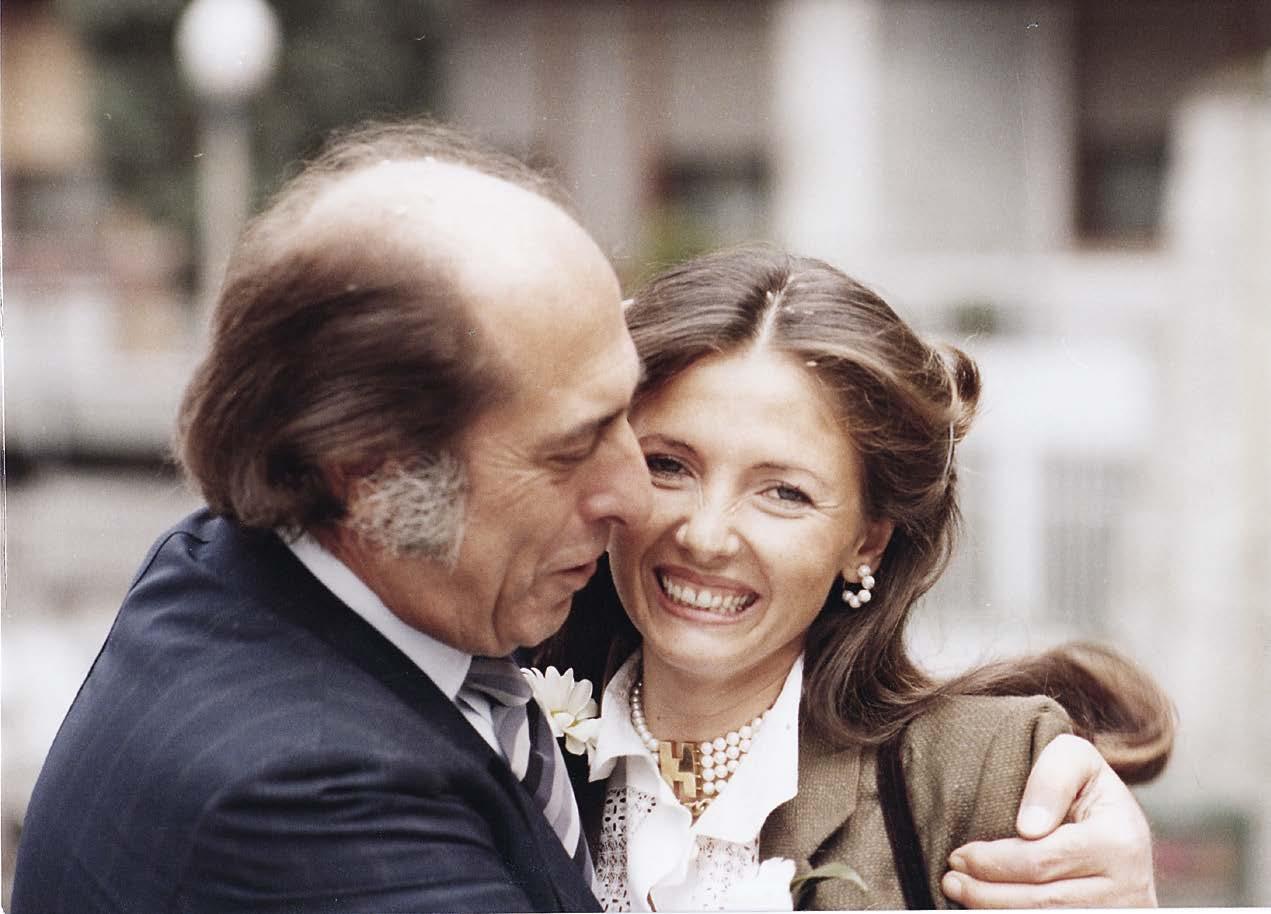
typical of our creative era, which is why the art historian Gillo Dorfles called him a “global visualizer.” PMF Tell us about the beginnings of your activity as a collector. GT Armando immediately sensed that my interest in art would lead me toward collecting, but he insisted, “The walls of the house are white and must stay that way. Paintings are to be looked at in museums and galleries.” I understood that the presence of artworks in our home would distract him from his work. Furthermore, even if he’d wanted to, our house in Turin had very few walls; it had large windows all around, so much so that it felt like living in an aquarium. For my part, at every exhibition, I was flooded with emotion: I felt freedom, I thought everything was possible, and I wanted to share that pleasure with as wide an audience as possible. Enjoying and dreaming, I realized that I felt more strongly about giving than about receiving. That love has grown stronger over the years and is still with me today.
At the time, unable to collect, I enjoyed putting together my “ideal collection” in my head. White was the dominant color; the works were full of stories, thoughts, new ways to contact the soul, together creating a mystical, suspended atmosphere. In addition to Cy Twombly, there were Lucio Fontana’s slashed works, Piero Manzoni’s Achromes , and the white-on-white monochromes of the Minimalist Robert Ryman. In 1982, after years of daily fantasizing and imagining, I put my savings together and independently acquired a Twombly. Armando loved Fontana’s gesture and the restless, vigorous brushstrokes of the great Abstract Expressionists, but Twombly was too romantic and delicate for him,
150
This page:
Installation view, La Donazione Gemma De Angelis Testa , Ca’ Pesaro Galleria Internazionale d’Arte Moderna, Venice, April 22–September 17, 2023, featuring Armando Testa’s Il tempo (1989).
Photo: Andrea Avezzú © Fondazione Musei Civici di Venezia

although he eventually came to love him. Even before seeing works by Twombly, I was able to see several Fontana exhibitions, with one in particular, at a gallery in Milan, leaving me dazzled. It was all white canvases with slashes of different sizes; the physicality of the color had a purity that I would describe as incorruptible. That time nothing came of it, but the urgent desire to start collecting contemporary art was already born in me.
PMF How do you think the art world has changed, and how has your modus operandi developed over the years? Do you think the challenges for those starting this journey today are new and different?
GT There are many more art lovers now, and approaching collecting is simpler than before because there are more channels through which people can inform themselves about what’s happening, even on an international level. Today it’s easier for a newcomer to move into the worlds of collecting and artists, but it isn’t always equally easy to grasp the complexity of the thinking in art, which often isn’t deep enough in new collectors. Putting in time is a necessary investment and a challenge. Also, large collections often remain private, and are only temporarily shared with the public. My methods haven’t changed over the years: I still don’t follow trends, keeping my emotional relationship with artworks alive both as a collector and as a frequent visitor to exhibitions and museums.
PMF You’ve said that your first major encounter with contemporary art was at the thirty-fifth Venice Biennale, in 1970. What are your memories of that visit and its impact on you? How do you experience the Biennale today?
151
Opposite: Gemma De Angelis Testa and Armando Testa, 1978
GT I was struck by the energy of the Russian avant-garde, which I didn’t know well at the time: László Moholy Nagy, Aleksandr Rodchenko, Vladimir Tatlin, El Lissitzky, they all impressed me. I was moved by Kazimir Malevich’s primary forms of the cross, the circle, and the white square on a white ground. I still think today about how current Rodchenko is, beautiful, strong, versatile, and brilliant—he knew how to work in different forms across all the mediums and techniques of his time in an experimental and innovative key. His research influenced contemporary artists just as Armando’s work would years later. I adored them all, immediately.
On that occasion, Armando told me about Alberto Burri’s despair, Fontana’s slashes, and the poetics of arte povera . He surprised me by pointing out the colors and designs of Venice, the decorations, the views, the colors of the mooring poles of the gondolas, those spiral bands that descend from the top. His way of telling me things enchanted me; I had never heard things described in such a cultured and original way. Even today, going to the Biennale always provokes emotion and curiosity in me. In recent years when we’ve traveled less, I’ve felt the importance of artworks as bearers of messages even more, and the Venice occasion remains a unique opportunity to explore the diversity of the art world.
PMF Last year you donated a significant part of your collection to Venice’s Ca’ Pesaro Galleria Internazionale d’Arte Moderna. How did the desire to share with the public the works you’ve acquired over the years emerge in you? How important is it that your collection has found a home in Venice, and in particular at Ca’ Pesaro?
GT For me, the experience of art is more enriching when it’s shared, which is why I’ve always believed that collectors shouldn’t guard their works jealously but should make them available to the community. I believe in the importance of collaboration between private individuals and institutions, and I’ve always thought of my collection in museum terms. The first works I acquired, in the early 1990s, by artists such as Ettore Spalletti, Tony Cragg, Marlene Dumas, Pier Paolo Calzolari, Jan Vercruysse, and Francesco Vezzoli, I made long-term loans to the Castello di Rivoli, outside Turin. With two other collectors I was able to provide the museum with a room entirely dedicated to Anselm Kiefer, an artist who at the time was not represented in any Italian museum. Over the years, I’ve provided other museums with various artworks on loan.
Venice is one of the most beautiful cities in the world, and it’s given me the two most important encounters of my life: with my husband, Armando Testa, and with contemporary art. So I couldn’t
imagine a city more suitable to my collection, which I didn’t want to break up—I wanted to keep it the way it had formed, leaving its narrative intact. I’ve always thought that these works should be shown in a museum because there’s nothing more beautiful than the possibility of sharing the emotions that art gives us with everyone.
PMF The museum chose not to follow a chronological layout but to integrate the 105 works you donated into the route through the galleries. As Ca’ Pesaro chief curator Elisabetta Barisoni has emphasized, this creates evocative juxtapositions that launch bridges between different periods and cultural contexts. There’s a mutual enrichment and nourishment between contemporary art and the art of the nineteenth and twentieth centuries. Did you contribute to the layout? Are there works for which you had specific requests in terms of placement and juxtaposition? What do you find particularly successful?
GT In my work and research, I’ve always tried to create a dialogue between art and the present, enjoying connecting artists who are very different from each other in style and content. The collection I donated to Ca’ Pesaro reflects this spirit of embracing different worlds, and I think the layout proposed by Gabriella Belli and Elisabetta Barisoni, with whom I discussed ideas on various occasions, was able to reflect its essence and the principle

of elective affinities, the guiding theme of my collecting. There were works that required adjustments and whose placement was particularly delicate, such as Paola Pivi’s Perle [Pearls, 1999] and Ai Weiwei’s Colored Vases [2014], four precious terra-cotta vases from the Han dynasty [206 bc–220 ad]. But the final overall layout seems very successful to me, with unprecedented juxtapositions capable of stimulating the visitor into new readings. If I had to express a preference, my favorite might be the first room, whose poetics particularly touch me, with works by Twombly, Mario Airò, Ghada Amer, Gino De Dominicis, Robert Rauschenberg, and Armando Testa.
PMF You could be described as an activist for contemporary art, which you support through various initiatives, including the prominent award promoted by the acacia association, which you conceived. Can you tell us how that idea was born, and how it continues to develop?
GT It was born with the goal of supporting Italian art and artists while promoting the establishment of a public museum of contemporary art in Milan through constant dialogue with the city’s institutions. acacia operates on the philosophy of collective patronage, working concretely to promote, preserve, and protect contemporary art. Proceeding from this perspective, we’ve established a collection, still in progress, of thirty-seven works by twenty-five Italian artists that we’ve donated to the Museo del Novecento in Milan.
The main tool through which the association works is the acacia Award, awarded annually to young Italian artists who are established on the international scene in recognition of their work. In 2014, for example, we gave the prize to Tatiana Trouvé for her work I tempi doppi [Double time, 2013]. It’s a formally essential sculpture, a bronze and copper cable with a light bulb at each end, one on, the other off and painted black. It’s a work that evokes light and darkness, in which time flows without repeating itself, according to a principle and an end. The title evokes a point of contact between the memory of time and the present moment. In addition to the award, we work constantly to offer our members and the general public visits to major exhibitions, conferences, and other moments of in-depth study of contemporary art. PMF If you were to identify a recurring theme or common thread in the works in your collection, what might they be? Were you aware of them at the time of each acquisition, or was
152
-
Opposite: Installation view, La Donazione Gemma De Angelis Testa , Ca’ Pesaro Galleria Internazionale d’Arte Moderna, Venice, April 22–September 17, 2023, featuring Mario Merz’s I giganti boscaiuoli (1981–82), Julian Schnabel’s Untitled (1992), Enzo Cucchi’s Sottovento (1981), and Tony Cragg’s Rational Beings (1995). Photo: Andrea Avezzú © Fondazione Musei Civici di Venezia
This page: The home of Gemma De Angelis Testa, featuring Ed Ruscha’s If (1995) and Armando Testa’s Cine Club (1987) and Sedia At (1990).
Photo: Fabio Mantegna

it an awareness that came later?
GT My collection wasn’t carefully planned; I’ve never followed any specific scheme. The common thread that binds the works is given by the reading and the representation of contemporaneity that the artists offer. As I said, I like to put artists from different eras in conversation, following a principle of affinity; it comes naturally to me to create connections between them. Only over the years, and as the collection has grown, have I realized that there are themes, keys to reading, that link the works in it.
PMF And your relationships with artists? And with curators?
GT I’ve always had good relationships with artists, fueled by curiosity about their way of seeing and interpreting the world. I’ve always liked welcoming them and listening to them. My recurring encounters with them are among my most precious memories.
Haim Steinbach, for example—during a dinner with him once, I told him about the characters created by Armando, which he then included in a work titled Omaggio ad Armando Testa [Homage to Armando Testa, 1996]. Going back in time, I think of my friendship with Gino De Dominicis; he and Armando had a great deal of respect for each other, and it was a great sorrow when he passed away. I adore Kiefer and his art, and when I had more time, I followed him from exhibition to exhibition; I own several of his works, and I’m happy to have donated two of them to the Ca’ Pesaro.
I’ve met a number of curators over the years, and have maintained relationships with some of them. In my work, I’ve often found myself in conversation with important international curators, and my
exchanges with them have given me stimuli and ideas for new projects.
I’ve met Jeffrey Deitch several times, for example, and he wrote a beautiful text about Armando for the Castello di Rivoli exhibition in 2001. His sensitivity allowed him to grasp the aspects of Armando’s work that put him in dialogue with the artistic currents he both saw and anticipated; Jeffrey was able to underline his role as an innovator. In short, he understood Armando. Some collaborations have continued and evolved over time, as in the case of Germano Celant, who curated one of Armando’s most important exhibitions, at the Palazzo Strozzi, Florence, in 1993. In my memory, the image of Germano is linked to the happy years when Armando was still here. Our meetings often took place casually, maybe crossing West Broadway in New York, or in the museums and galleries of Turin, Milan, and Paris. I remember a certain irony with which, completely confidentially, we commented on particular art world events.
PMF Is there any memory you’d like to share?
GT As far as artists go, I remember the pleasure of meeting Ed Ruscha, whom you introduced me to in Rome in 2014, on the occasion of his solo exhibition at Gagosian. In honor of the artist, a dinner was organized in the halls of the seventeenth-century Biblioteca Angelica. We started chatting, thanks to you, as you had told him about me and about my purchase some time ago of one of his works, If [1995]. It’s a suggestive acrylic-on-canvas showing a minimal use of the word “if,” with each of the two letters dominating the space inside and outside the canvas. I remember how pleasantly
we talked, with the familiarity that usually only comes when you’ve known someone for a long time. I bought that work in a melancholic and introspective moment of my life, and when I look at it, I still f ind myself asking both positive and negative questions: “If . . . ?” “If . . . ?” PMF Tell us about the exhibition on Armando that you cocurated and that’s currently on view in Venice. GT It follows in the footsteps of exhibitions on Armando held over the years in Italy and abroad, but offers a broader view of his art thanks to the perspective of Tim Marlow, director of the Design Museum in London, who curated the project with Elisabetta Barisoni and me. Tim heads a multidisciplinary museum, and his experience in contemporary art and design made him the most suitable person to oversee the project. The exhibition focuses on Armando’s multifaceted artistic production, and particularly on the creative aspects of his work in various media. It’s structured both chronologically and thematically, guiding the visitor through the years of his production of posters, which made him famous and a key figure in the graphic and advertising world; some of the social and cultural campaigns emphasized in the show have never been highlighted before, and also reveal his other side, his irony and playfulness, as well as certain obsessions of his. Other works are shown publicly for the first time, such as the gigantic mural A spanne [In spades, 1982], and some installations were created specifically for the exhibition. And painting, Armando’s first love and constant source of inspiration, occupies a prominent place.
153
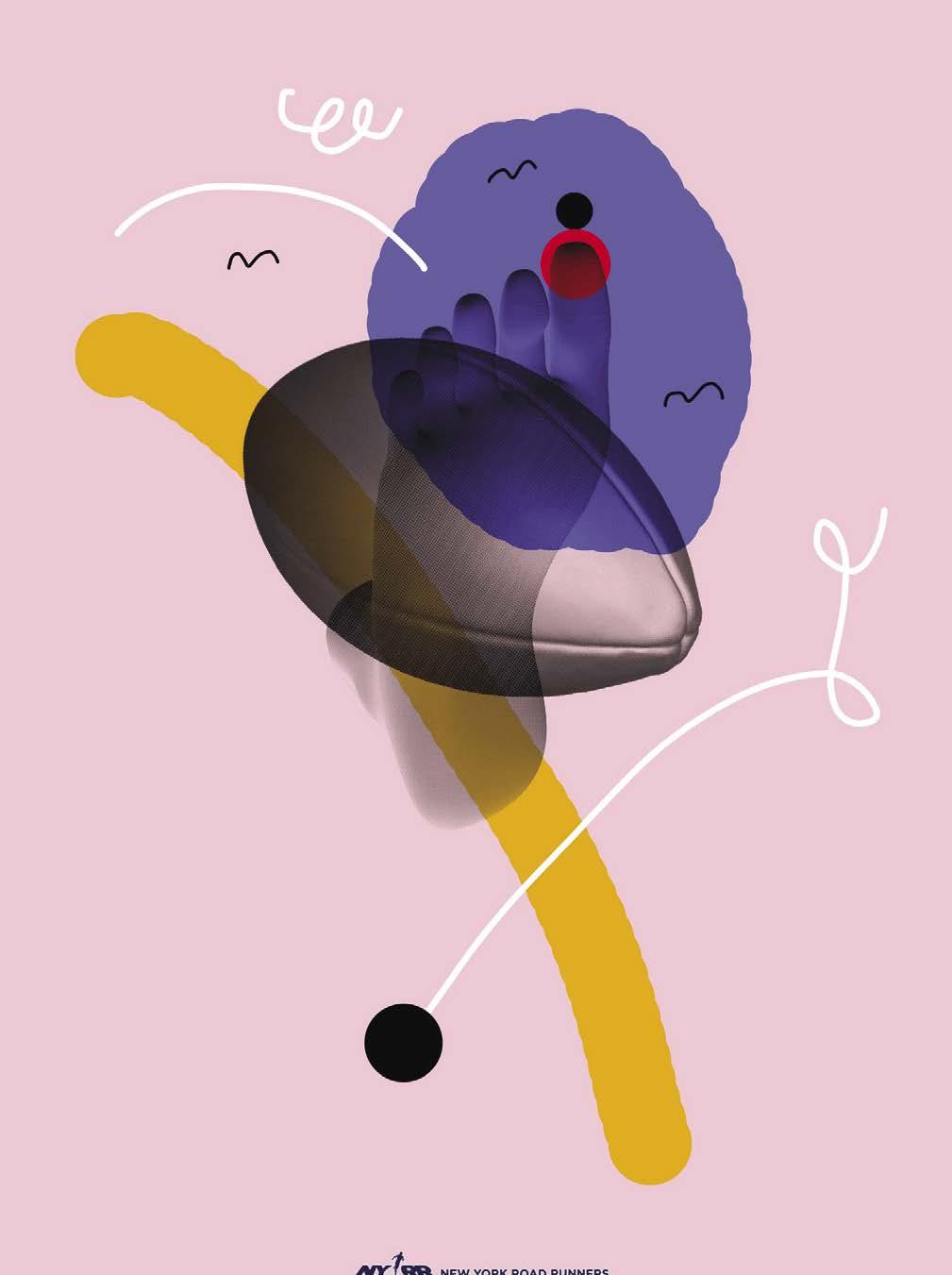
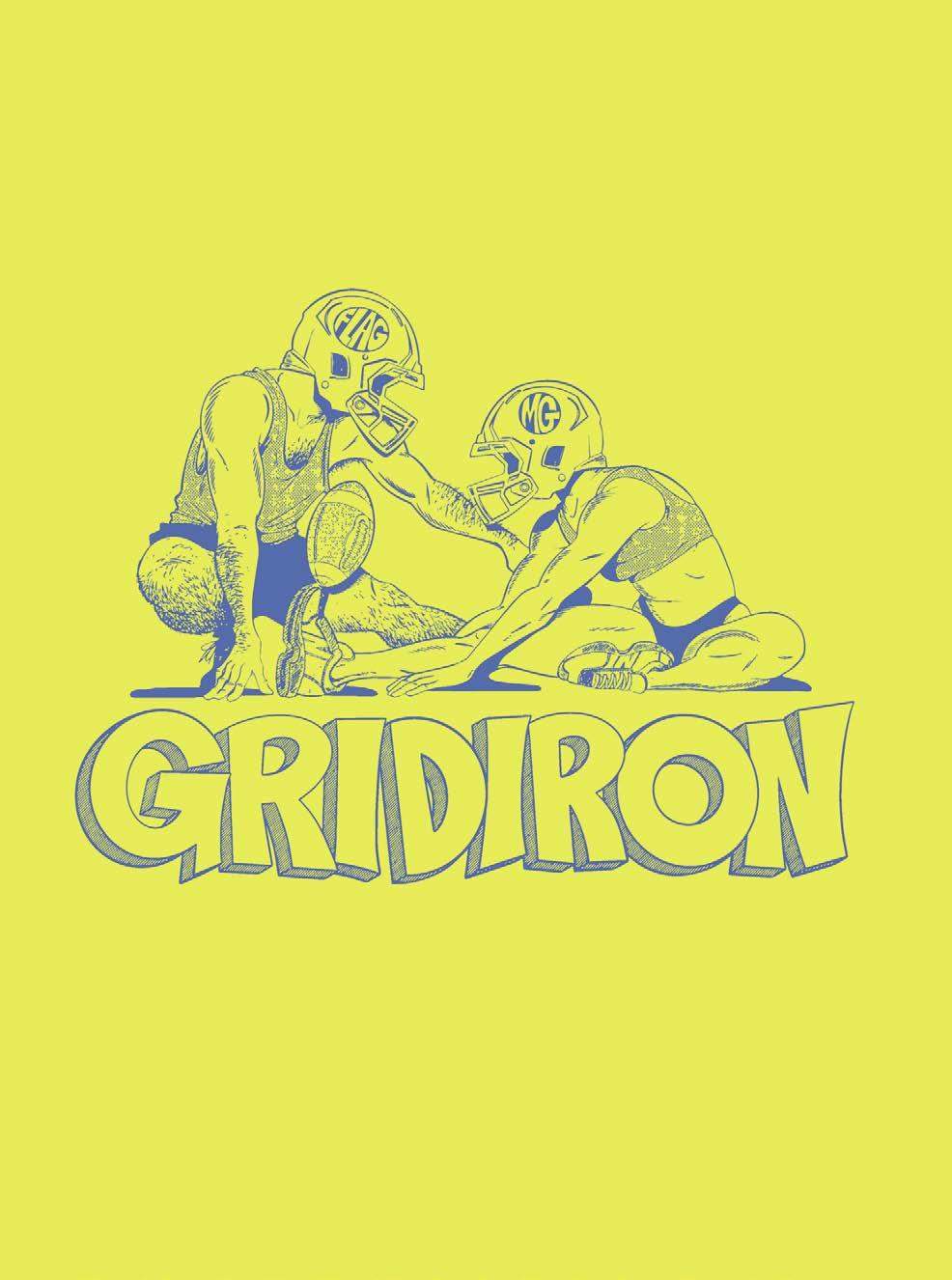
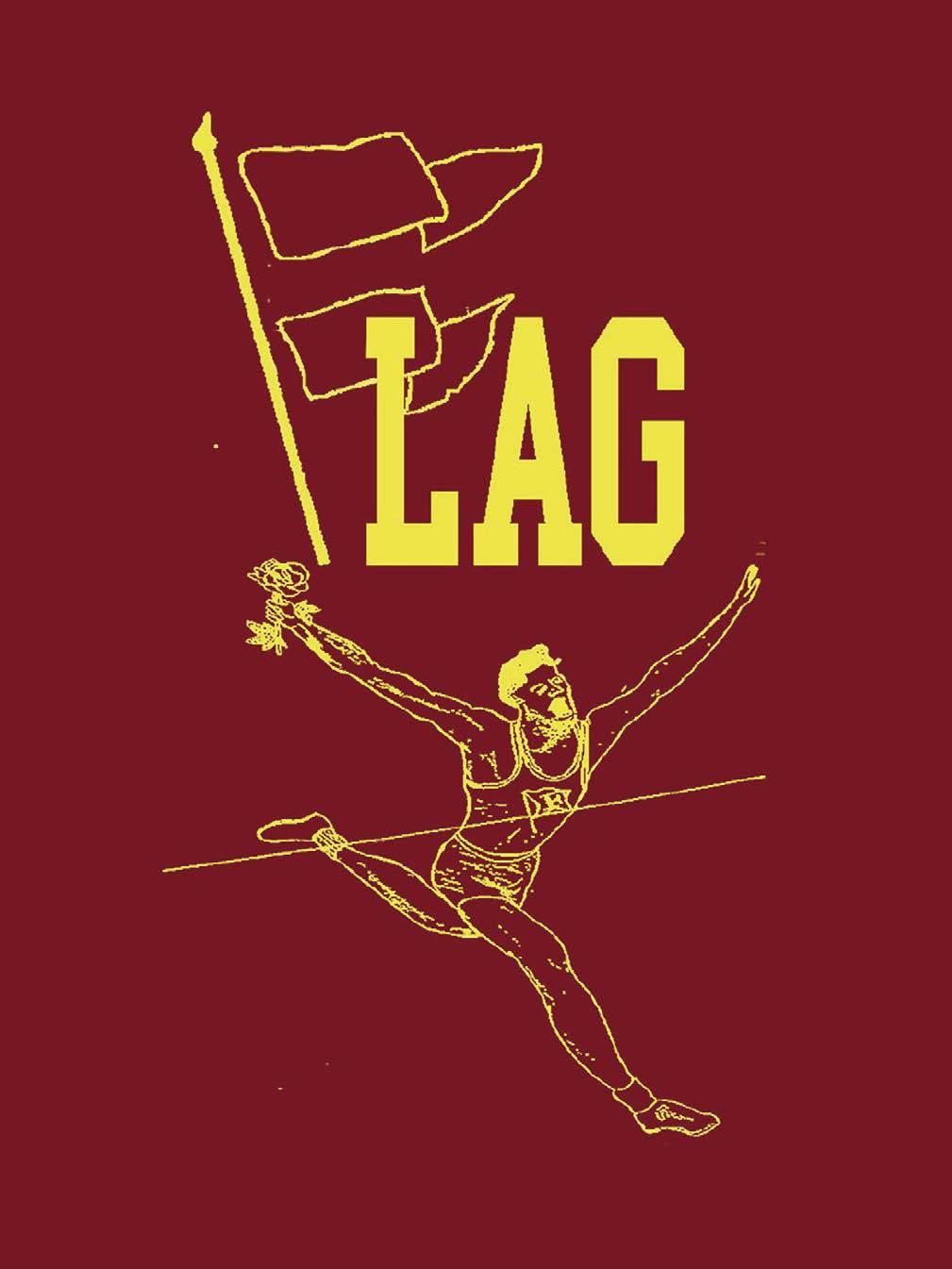
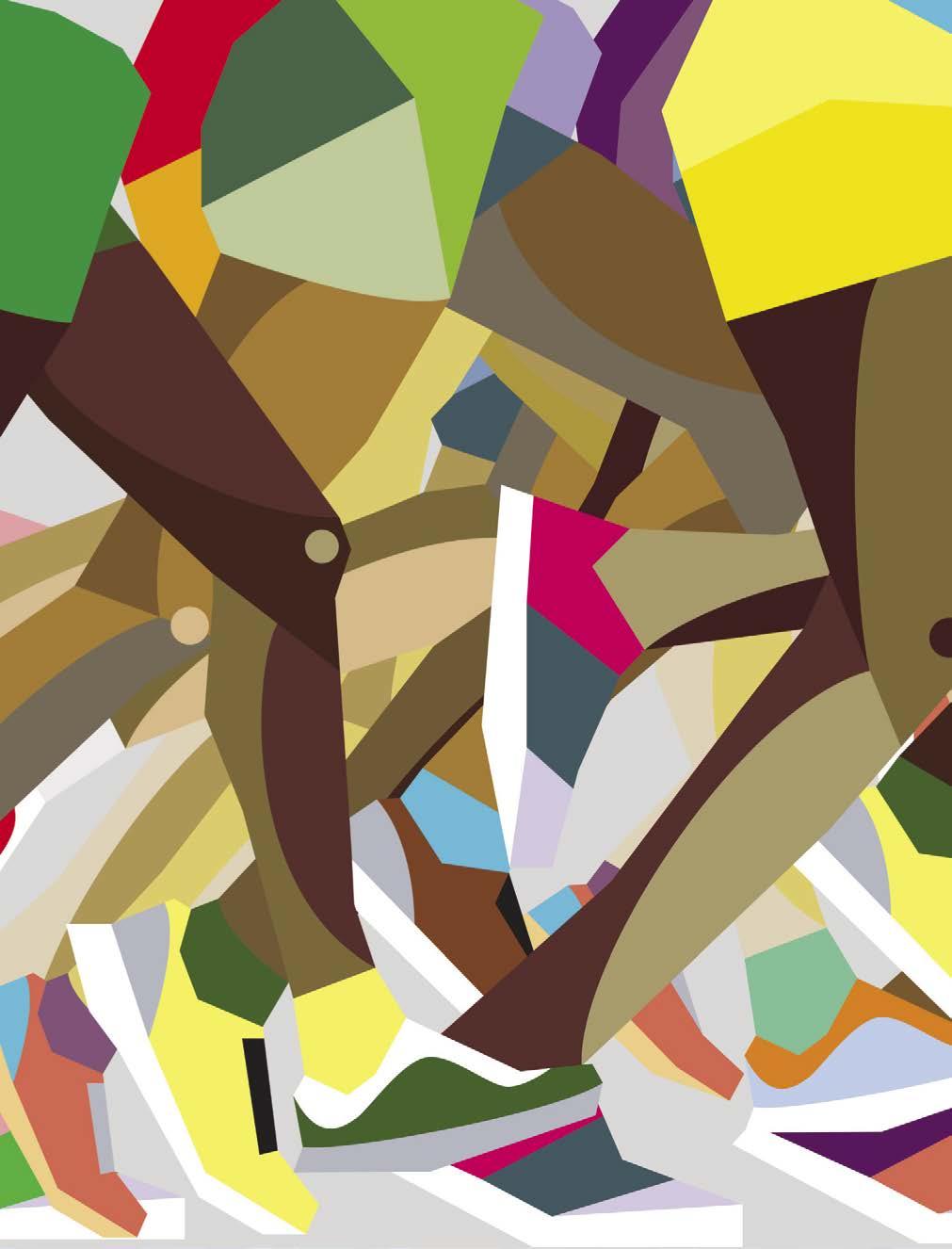

RI CK L OW E
THE AR CH WITHIN THE AR C
Museo di Palazzo Gr imani
Apri l 17 –N ovember 24, 2024

ED RUSCHA
April 7–October 6, 2024
Don’t
IM AG E: Ed Ruscha , Standard Station, 1966 , Los Angele s County Museum of Ar t, Museum Acquisition Fund, photo © Museum Asso ciates/L AC MA
documentation of the streets of Los Angeles,
more Always free for members and Los Angeles county youth 17 and under ^ Los Angeles County Museum of Art 5905 Wilshire Boulevard, NEar Fairfax Lacma.org |323 857-6010
miss Ruscha’s first comprehensive, cross-media retrospective in over 20 years, including early works on paper, installations, photographic
and
/ NOW THEN
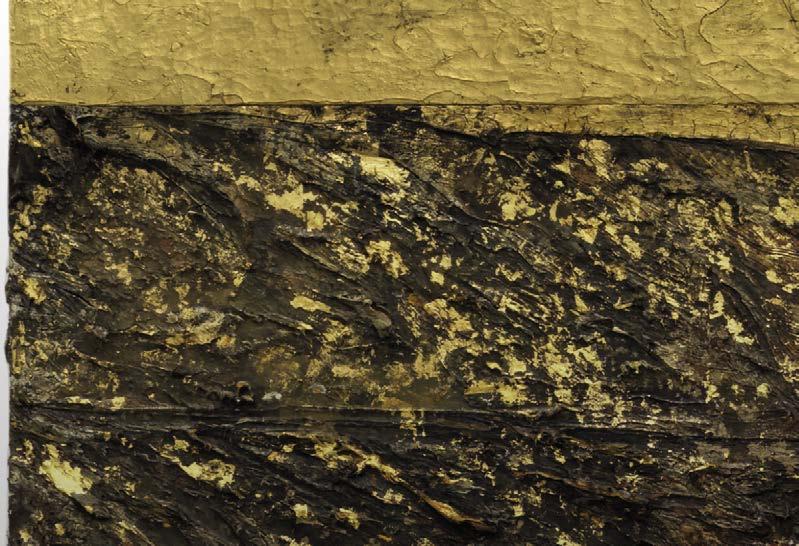






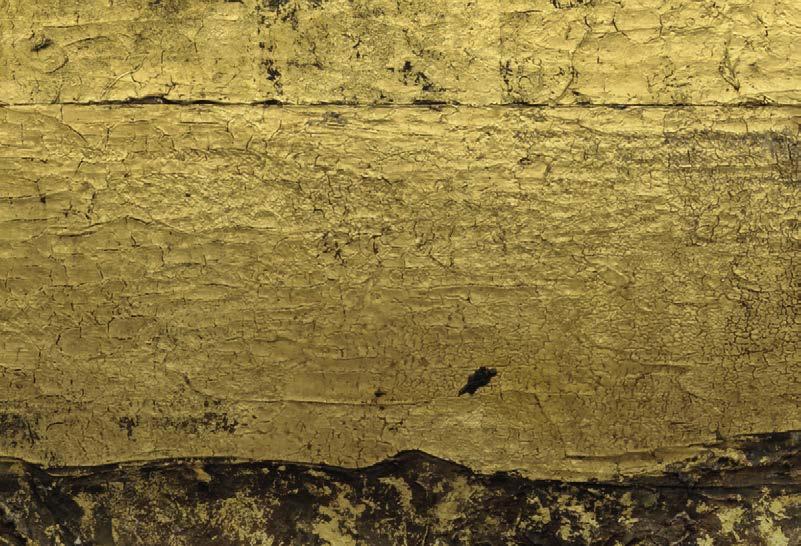


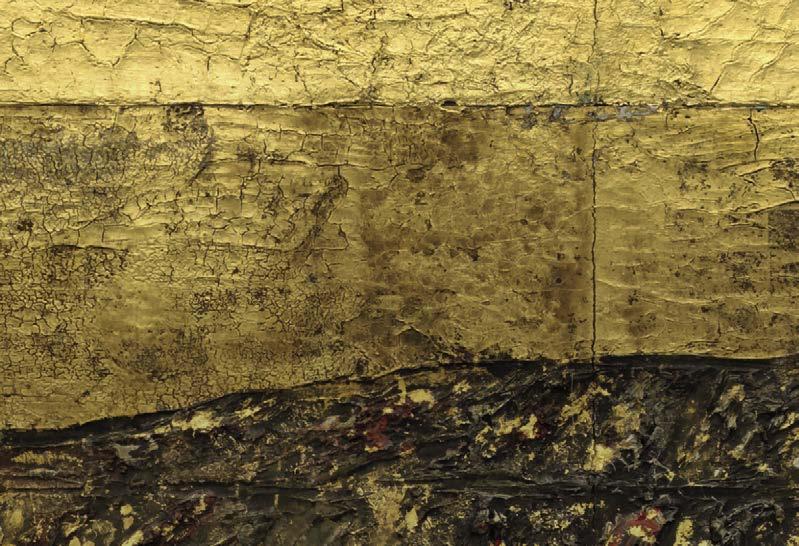


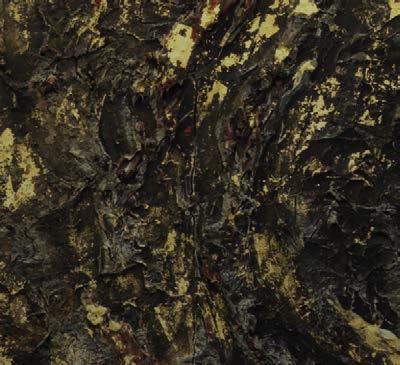



GAGOSIAN ART ADVISORY
Curatorial Advice
Appraisals and Valuations
Insurance, Estate Tax, Charitable Donation
Collection Management
Short and Long-Term Strategic Planning
Collection Database Management
Global Art Market Access
Galleries, Auction, Art Fairs, Private Sale Negotiation Expertise
Contact information
gaa@gagosianartadvisory.com
212.852.6060
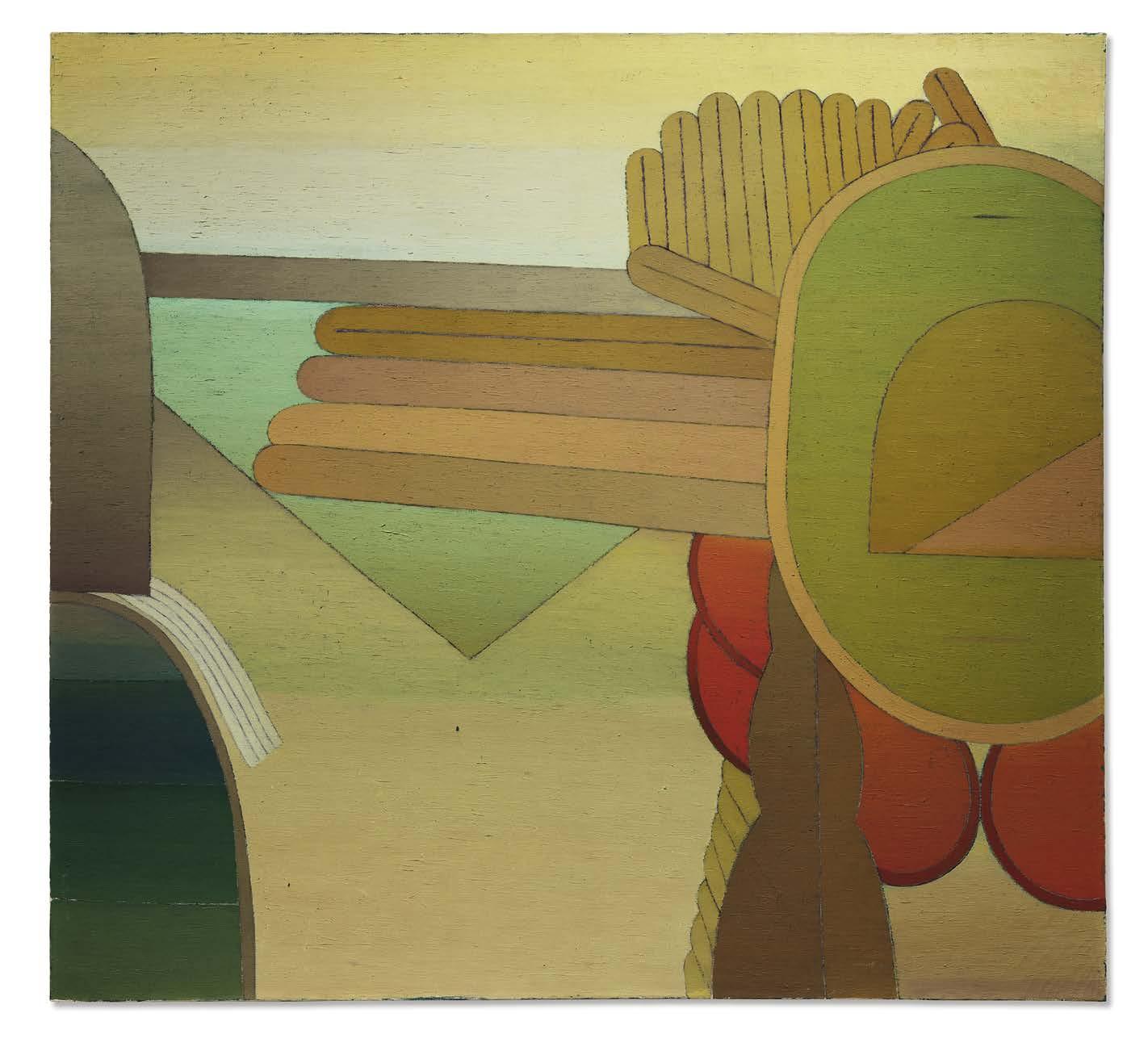
Sotheby’s, New York, March 1, 2024
Estimate: $40,000-60,000
Price Realized: $508,000 Auction record for the artist
Sold on behalf of a client of Gagosian Art Advisory
Miyoko Ito, Confrontation , c. 1970
GAGOSIAN BUILDING LIBRARIES
Douglas Flamm, Gagosian’s rare book specialist, has established an advisory service for clients aiming to curate their private libraries, whether they are building a reference collection from the ground up—for a new home, perhaps—or enhancing an archive they have already established. Douglas conducts individualized consultations, working to produce and acquire bespoke lists of titles. Anyone interested in books and libraries as still-unmatched repositories of knowledge and tools for in-depth research will appreciate this service.
About Douglas Flamm
A twenty-five-year veteran of the field—and Gagosian’s in-house rare books expert since 2016— Douglas has significant experience in developing and maintaining library collections. He boasts unparalleled know-how in sourcing scarce and important publications, from catalogues raisonnés and museum exhibition catalogues to monographs and artist’s books, including rare and out-of-print titles as well as newer releases. Focusing on a broad range of twentieth- and twenty-first-century artists and movements—from Picasso through Abstract Expressionism, Pop art, and Minimalism, to the full spectrum of contemporary practices—Douglas can also locate design and architecture books on such subjects as Art Deco, the Bauhaus, and Modernism.
Please contact Douglas Flamm for more information at dflamm@gagosian.com or +1 212 744 2313.
Family room designed by Nicole Hollis, featuring library curated by Douglas Flamm. Artwork: Doug Aitken, I’ll be right back. . . Aperture Series , 2019 © Doug Aitken. Photo: Douglas Friedman/Trunk Archive

GAME CHANGER RICHARD MARSHALL
Alison McDonald celebrates the life of curator Richard Marshall.
A native of Southern California, Richard Marshall moved to New York in 1973 to attend the Whitney Museum of American Art’s Independent Study Program, which led to a curatorial position and a twenty-year tenure working at the museum, and to his becoming one of the most influential curators of his generation. His first exhibition was Calder’s Universe (1976–77)— an auspicious start, to say the least. Mimi Poser, head of development at the Guggenheim at the time, described the exhibition on New York’s NPR radio, WNYC: Alexander Calder’s “long and happy career was a series of successes, the latest of which is the big and beautiful exhibition currently on view at the Whitney Museum. . . . Calder died less than a month after the opening of the show, but he lived to read the universally ecstatic reviews and see an adoring public streaming in to see his work.”1 That’s an impressive acknowledgment for an aspiring young curator’s first exhibition.
Marshall brought a high level of scholarship to all of his endeavors, merging his expertise in the traditions of art with a thoughtful and enthusiastic pursuit of the new. His intellect and enthusiasm endeared him to a generation of artists who trusted his vision and stewardship in the formative years of their careers, while he in turn played a pivotal role in introducing their work to the public. The list of artists he championed is long and varied, including but not limited to Louise Bourgeois, George Condo, Félix González-Torres, Mike Kelley, Robert Mapplethorpe, Joan Mitchell, Louise Nevelson, Ed Ruscha, Christopher Wool, and many others. Richard Armstrong, an early and frequent collaborator with Marshall and the former director of the Guggenheim, has said that Marshall “was unusual for a young curator, because he had great empathy for artists, he had a very acute visual intelligence.”2
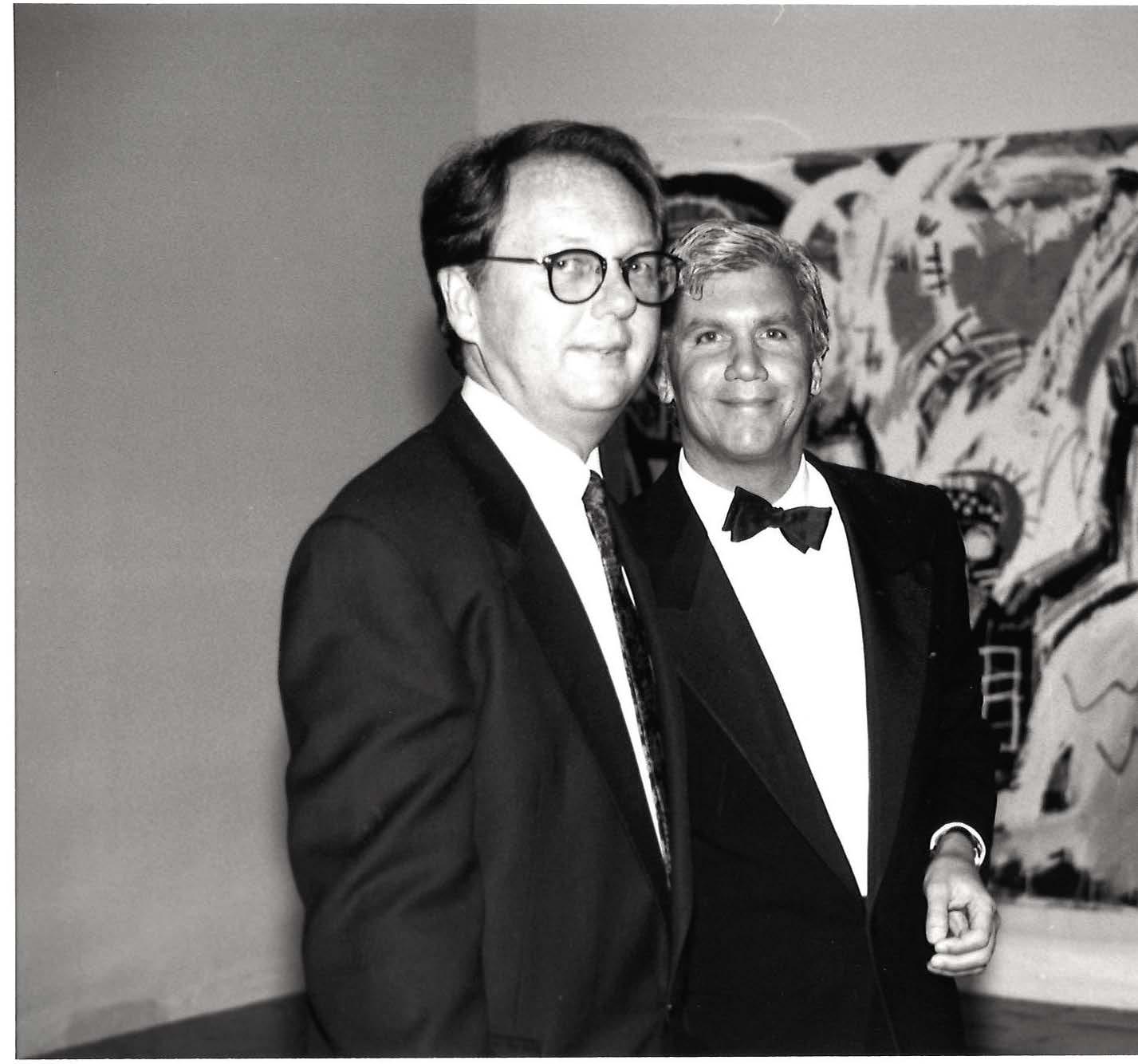
Beginning in 1979, Marshall worked closely alongside fellow Whitney curators—Armstrong, Barbara Haskell, John G. Hanhardt, Lisa Phillips, Mark Segal, and Patterson Sims—to cocurate seven Whitney Biennials, making each iteration a highly anticipated exhibition that captured the spirit of its moment.3 Another landmark project was Marshall’s and Armstrong’s The New Sculpture
1965–75: Between Geometry and Gesture , which focused on a generation of artists in the United States who were developing sculpture from nontraditional materials, including Lynda Benglis, Eva Hesse, Barry Le Va, Bruce Nauman, Alan Saret, Richard Serra, Joel Shapiro, Robert Smithson, Keith Sonnier, and Richard Tuttle. Marshall curated and cocurated so many impressive exhibitions that
there is simply not enough space to recall them all here.
Marshall was devoted to the Whitney and a stalwart champion of the museum’s National Committee, working effectively alongside collectors whose support and engagement with artists and with the museum would define the future of the institution’s collection. Notably, he played a critical role in the Whitney’s acquisition of
166
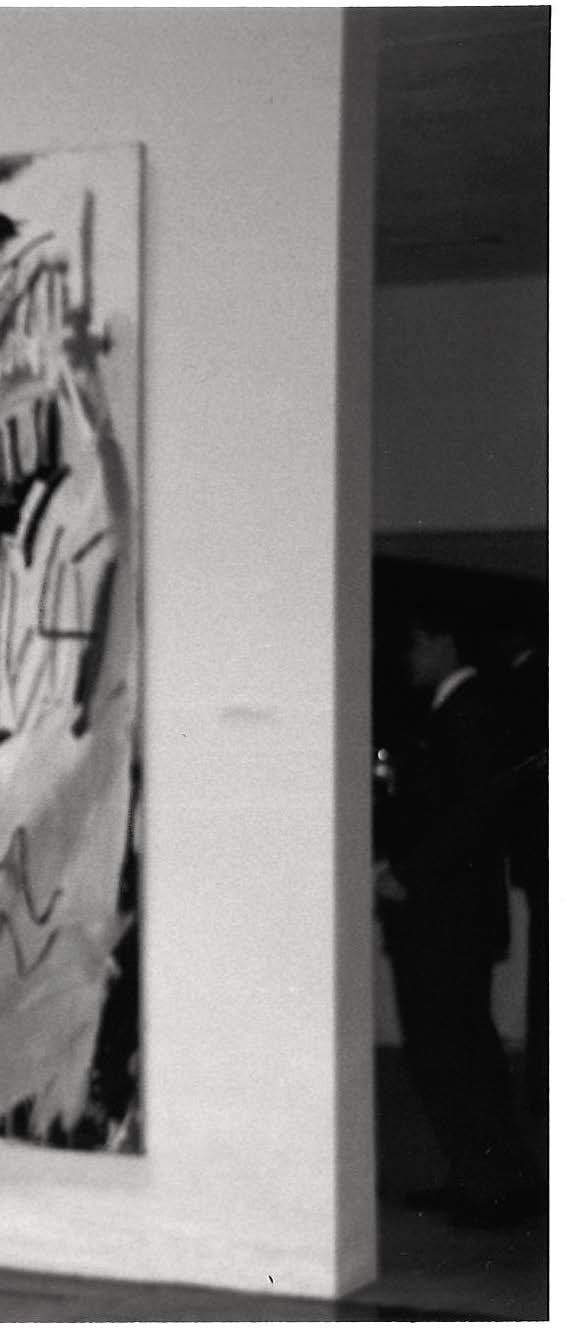
Jean-Michel Basquiat’s remarkable painting Hollywood Africans , a gift from Douglas S. Cramer in 1984, the year after it was made. (That is moving fast by museumworld standards.) Today Hollywood Africans is the Whitney’s single most-often-requested loan for exhibition elsewhere. 4 In 1992, Marshall curated Basquiat’s first American retrospective, which traveled from the Whitney to the Menil Collection, Houston; the Des Moines Art Center, Iowa; and the Montgomery Museum of Fine Arts, Alabama. Looking back, it is easy to see that exhibition as an extraordinary success, but at the time it attracted a heightened level of scrutiny, as The Art Newspaper reported back then:
Dismissed in the last months of his life as a spent force who would not match the powerful energy invested in the compositions which he had created at the beginning of his nine-year career, Basquiat briefly recaptured, by the unhappy circumstances of his death, an image of glamour and a wave of speculation which pushed the prices of virtually unsaleable pictures to $500,000. But his work has been a spectacular casualty of the realignment of the contemporary art market. . . . Against this background of shifting perceptions, Whitney curator, Richard Marshall, has launched a bid for reappraisal with a selection of more than 150 paintings and works on paper strongly favoring the imaginative achievement of 1981—83.5
For fifteen years starting in 1975, Marshall was arts editor of The Paris Review, working under George Plimpton to bring the work of artists he felt were visionary into the magazine. His correspondence with artists through his position at the Review was remarkable:
myriad letters, drawings, proofs, and studies show how seriously he took that role, seeing it as an opportunity to introduce artists to a wide audience and as a way to elevate the magazine’s dialogue with the contemporary art scene. The magazine benefited enormously from his scholarship, his attention to detail, and his vibrant rapport with artists. Marshall’s personal collection of art reflected this moment in his career, in terms both of his extensive archives—now in the holdings of the Smithsonian’s Archives of American Art—and of the art hanging on the walls of his home in La Jolla and his apartment in New York, which he shared with his partner of over twenty years, the celebrated architect William T. Georgis. Studio Museum in Harlem director Thelma Golden has said of Marshall, “He was a real connoisseur in the oldest, broadest sense of that word. . . . I believe that Richard was someone who believed in art in really broad but also deep ways.”6 According to Gagosian Art Advisory’s Laura Paulson, who knew Marshall beginning in the early 1980s and recently advised on the sale of a selection of works from his collection, “His art collection was remarkable, in part because it was so personal. It was a direct reflection of his journey as a curator and scholar, a unified vision of a generation of artists who came of age in the ’80s and ’90s.”7
In the 1990s, after stepping back from the Whitney and The Paris Review, Marshall worked on a series of independent curatorial and writing projects and on advising collectors. He published monographs on Alex Katz, Joan Mitchell, Georgia O’Keeffe, Jack Pierson, and Ed Ruscha. His collaboration with the Lever House Art Collection, begun in 2003, involved commissioning and exhibiting works by John Chamberlain, Urs Fischer, Tom Friedman, Paula Hayes, Damien
Hirst, Barbara Kruger, Liza Lou, Sarah Morris, Tom Sachs, Taryn Simon, and many others for the garden and glass-enclosed lobby of Lever House on New York’s Park Avenue, a site that offered a delightful mix of institutional rigor and openness to the public that overlapped with the balanced approach Marshall had maintained throughout his career.
My own first encounter with Marshall was during this later phase in his career. He always maintained a relaxed California sensibility, approached his projects with a genuine enthusiastic curiosity, and was a respectful collaborator. He was remarkably modest, but as we worked together on several projects over the years, the significance of his earlier contributions would occasionally reveal themselves, each anecdote more impressive than the last. And despite his many accomplishments, he always communicated a light-hearted sense that helping artists on their way, and helping to define pivotal moments in art history, were just part of the job.
1. Mimi Poser, in “Calder’s Universe: Alexander Calder at the Whitney/Poser, Mimi; Wolfe, Ruth; Marshall, Richard,” n.d., WNYC archives id: 65652, NYPR Archive Collections. Available online at www.wnyc.org/story/calders-universealexander-calder-at-the-whitney-poser-mimiwolfe-ruth-marshall-richard/ (accessed March 23, 2024).
2. Richard Armstrong, quoted in “Art in Dialogue,” Sotheby’s, New York, March 1, 2024. Available online at www.sothebys.com/ en/auction-catalogue/2024/contemporarycurated-N11422/art-in-dialogue-thecollection-of-richard-d-marshall-william-tgeorgis?locale=en (accessed March 23, 2024).
3. Richard Marshall’s cocurated Whitney Biennials were those of 1979, 1981, 1983, 1985, 1987, 1989, and 1991.
4. See William Poundstone, “MOCA Said ‘No Thanks!’ to This Basquiat,” Los Angeles County Museum on Fire: William Poundstone on Art and Chaos , March 12, 2024. Available online at http://lacmaonfire.blogspot.com/2024/03/mocasaid-no-thanks-to-this-basquiat.html (accessed March 23, 2024).
5. Roger Bevan, “Are We Ready for a Basquiat Revival?,” The Art Newspaper, September 30, 1992. Available online at www.theartnewspaper. com/1992/10/01/first-american-basquiatretrospective-to-be-held-at-the-whitney (accessed March 23, 2024).
6. Thelma Golden, quoted in “Art in Dialogue.”
7. Laura Paulson, in an interview with the author, March 8, 2024.
167
Richard Marshall and Larry Gagosian at the opening of Jean-Michel Basquiat , Whitney Museum of American Art, New York, October 1992

Lunch Monday–Saturday 12–2:30pm Dinner Monday–Saturday 5.30–10pm 976 Madison Avenue, New York T. 212 906 7141 reservation@kappomasanyc.com
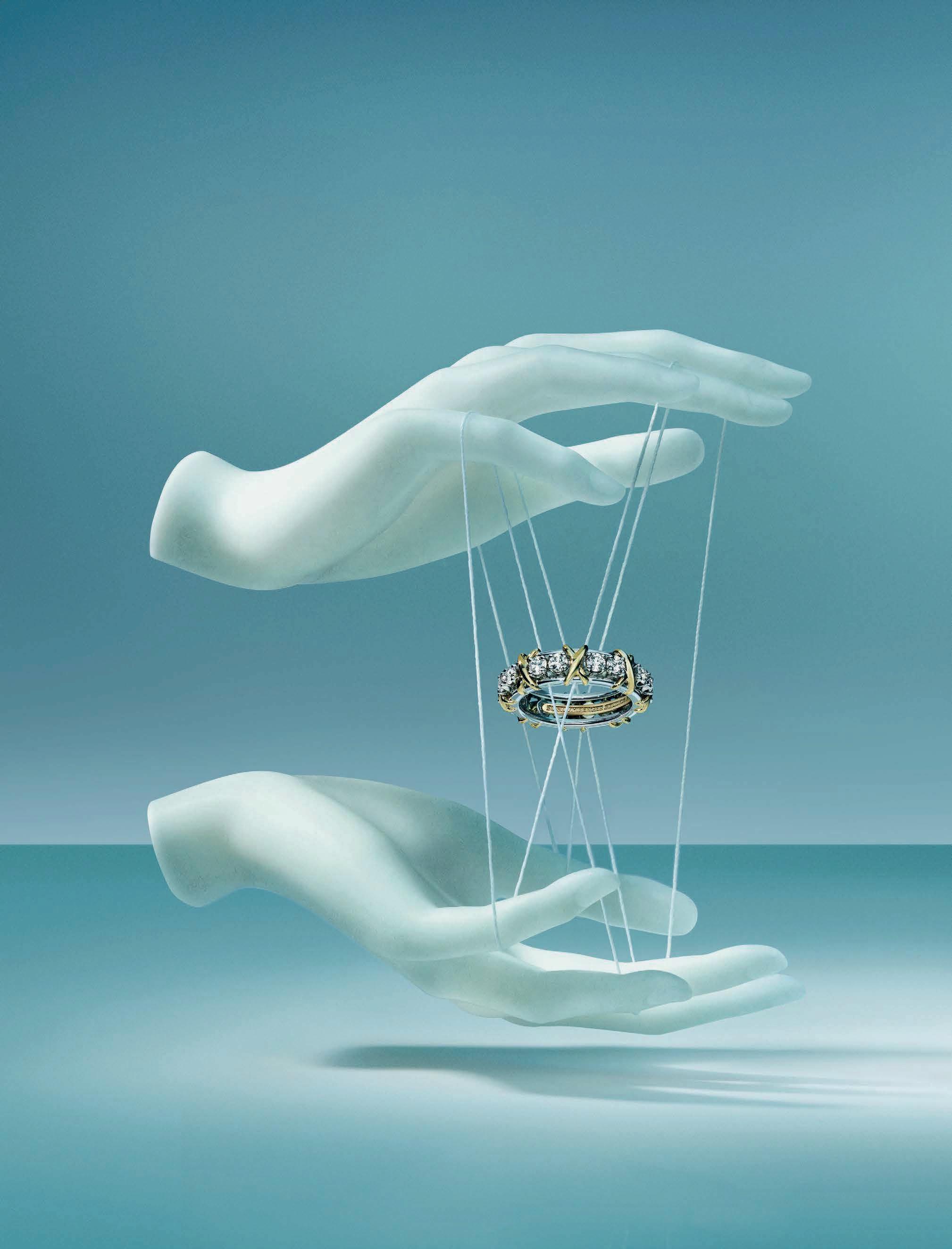


















 LES JA RDINS DE LA COUTUR E COL LEC TION
Neck lace in pink gold, diamonds, rubies, pink sapphire s, pink and red spinels, spessa rt ite ga rnet s.
LES JA RDINS DE LA COUTUR E COL LEC TION
Neck lace in pink gold, diamonds, rubies, pink sapphire s, pink and red spinels, spessa rt ite ga rnet s.



















































































































































































































































































































 An interview with Marcantonio Brandolini D’Adda, artist, designer, and CEO and art director of the Venice-based glassware company Laguna~B.
Photographs by Karla Hiraldo Voleau.
An interview with Marcantonio Brandolini D’Adda, artist, designer, and CEO and art director of the Venice-based glassware company Laguna~B.
Photographs by Karla Hiraldo Voleau.














































